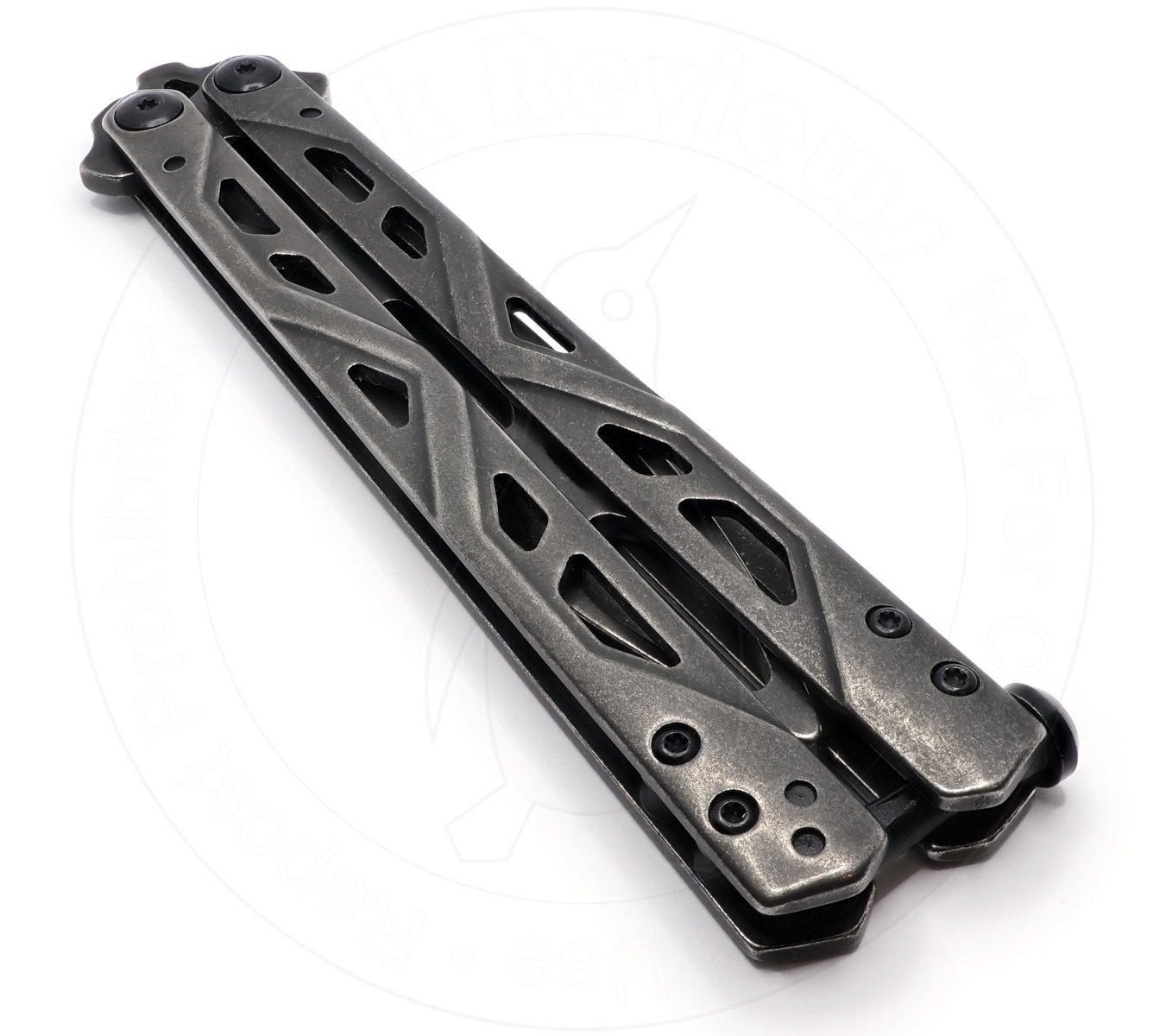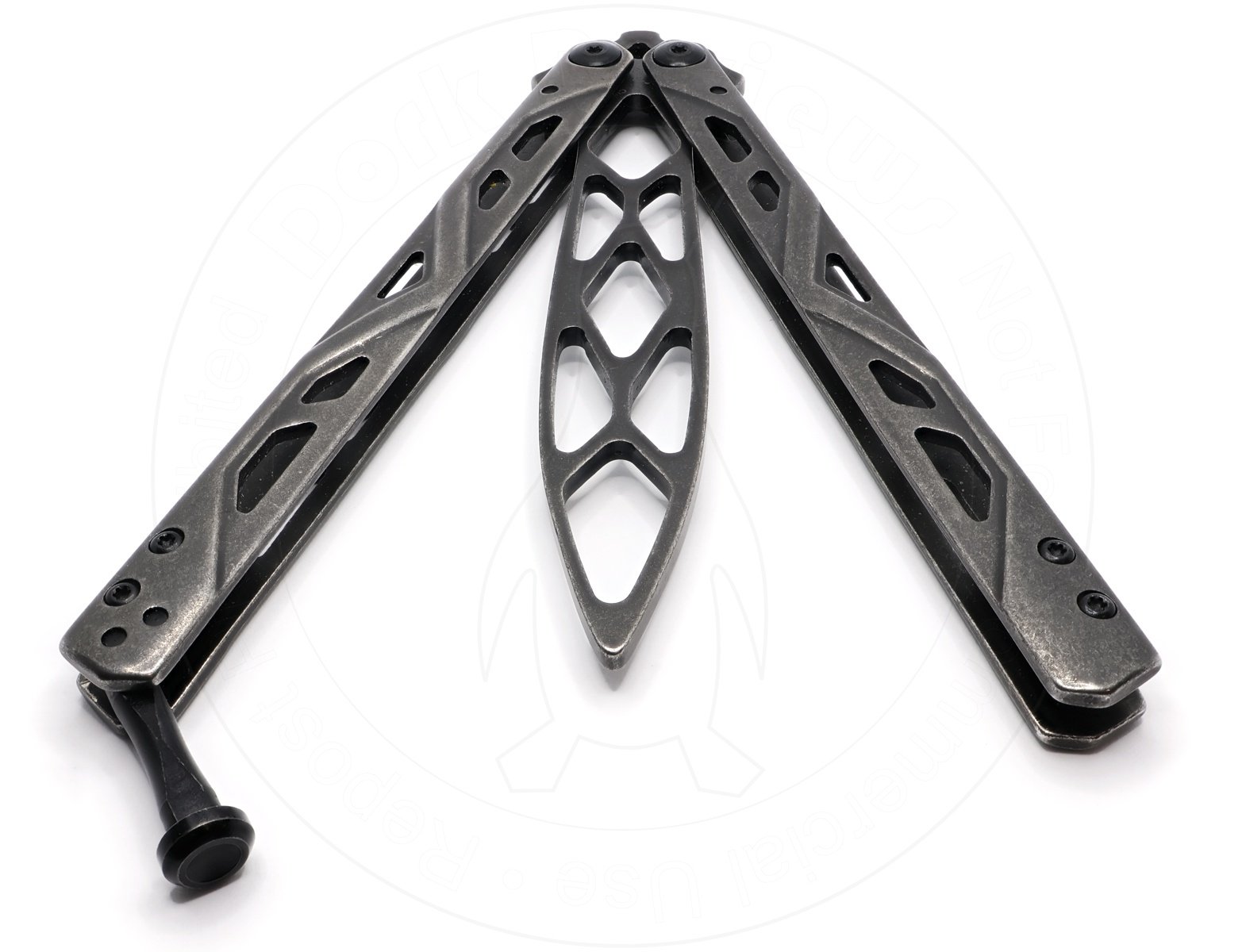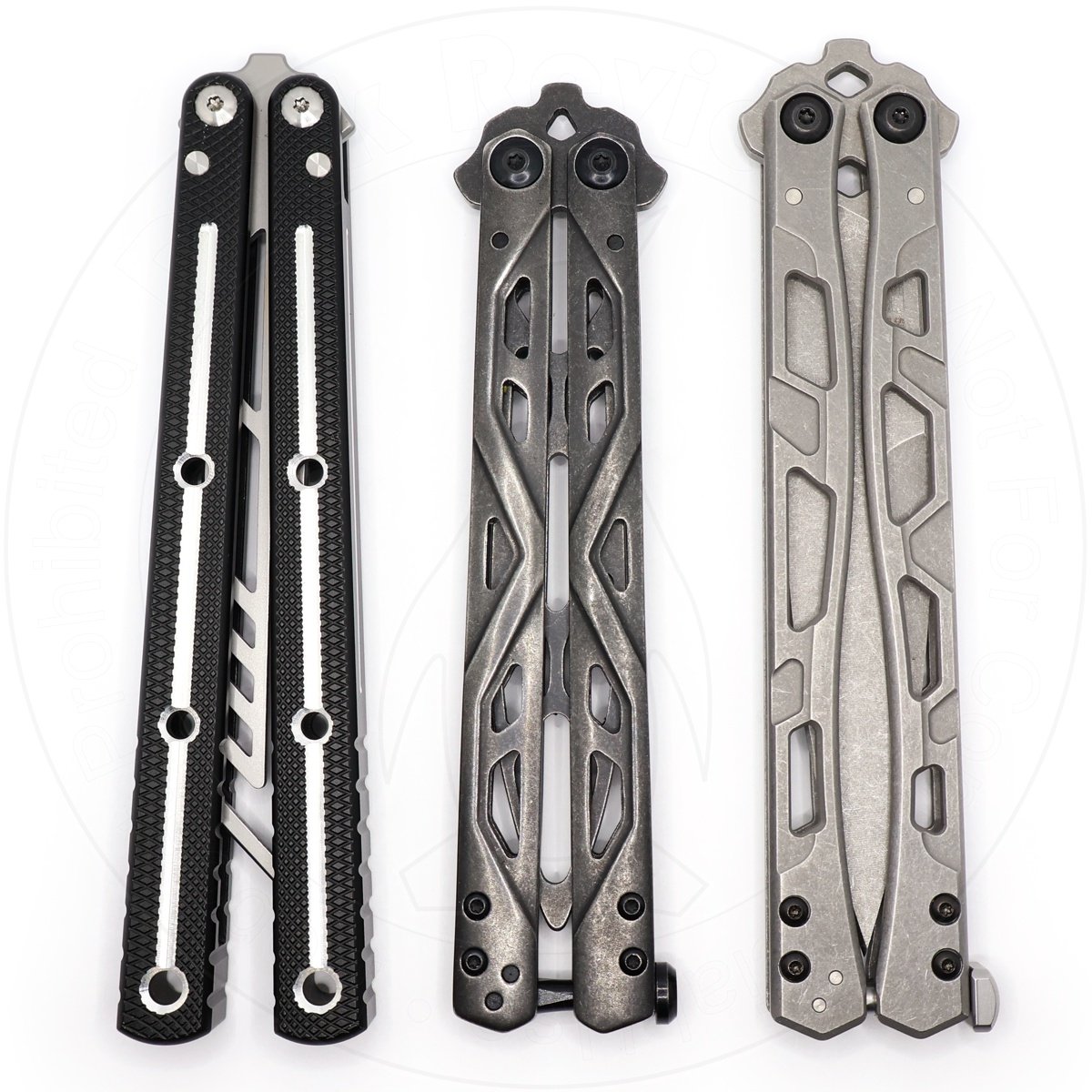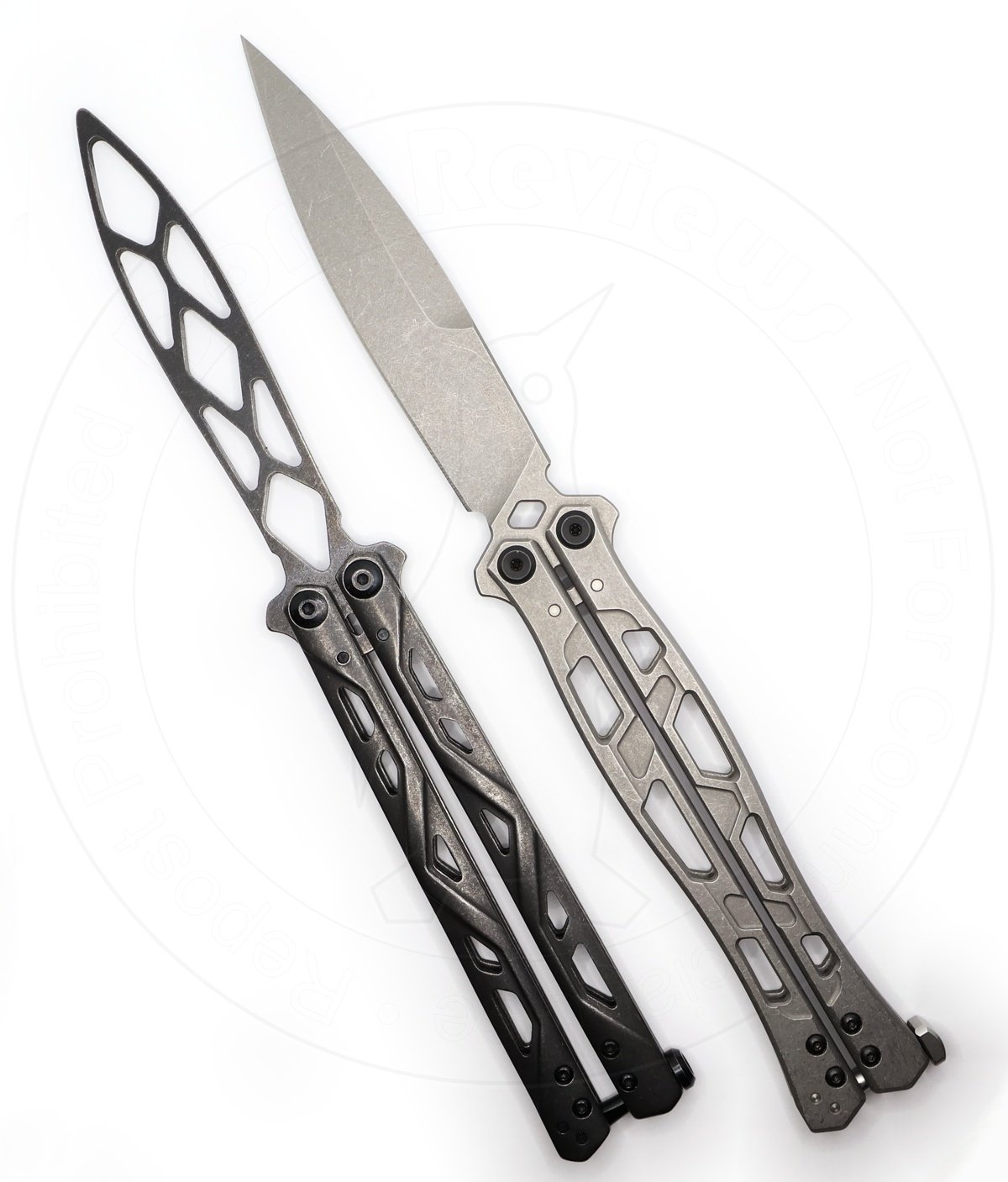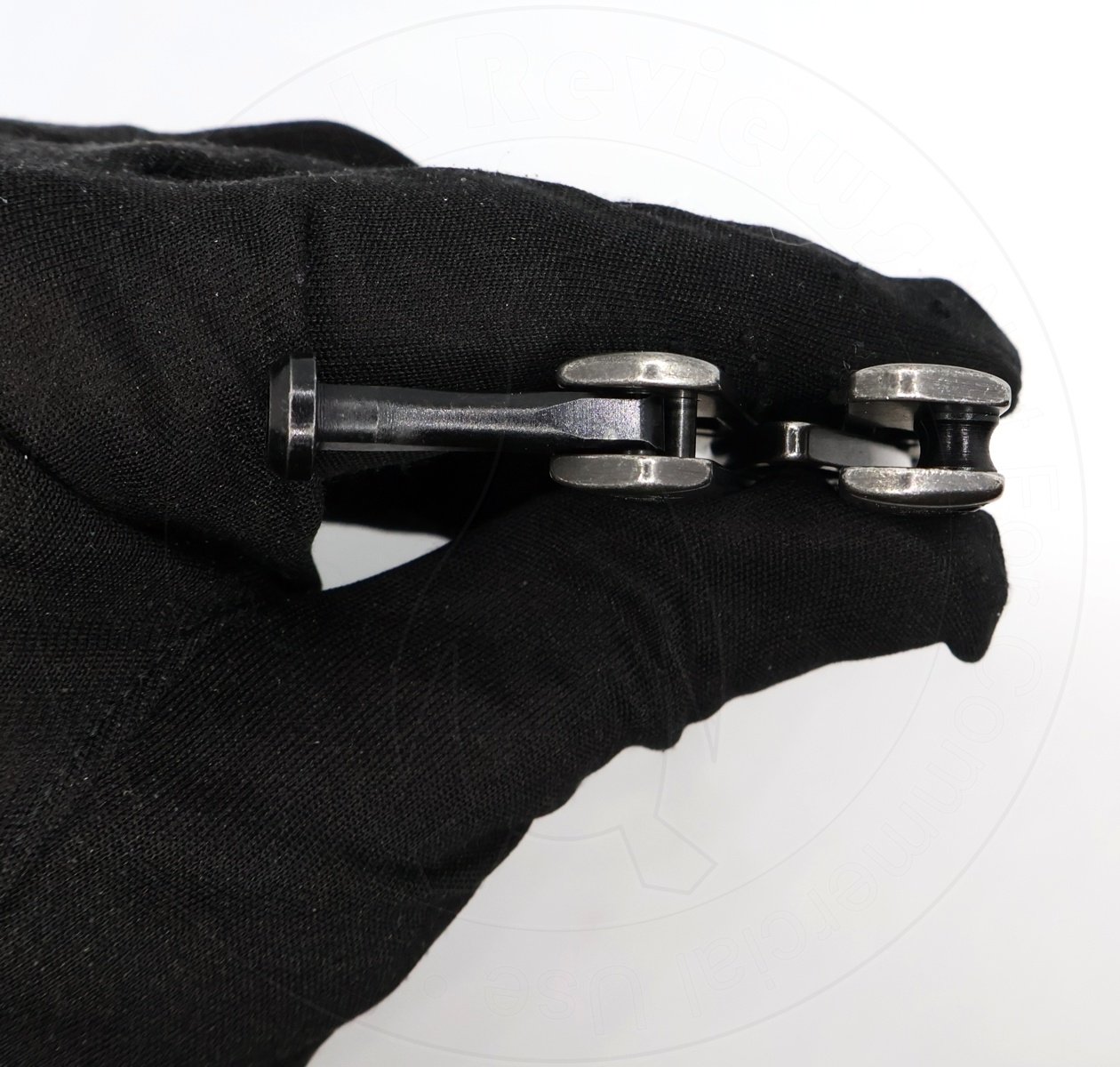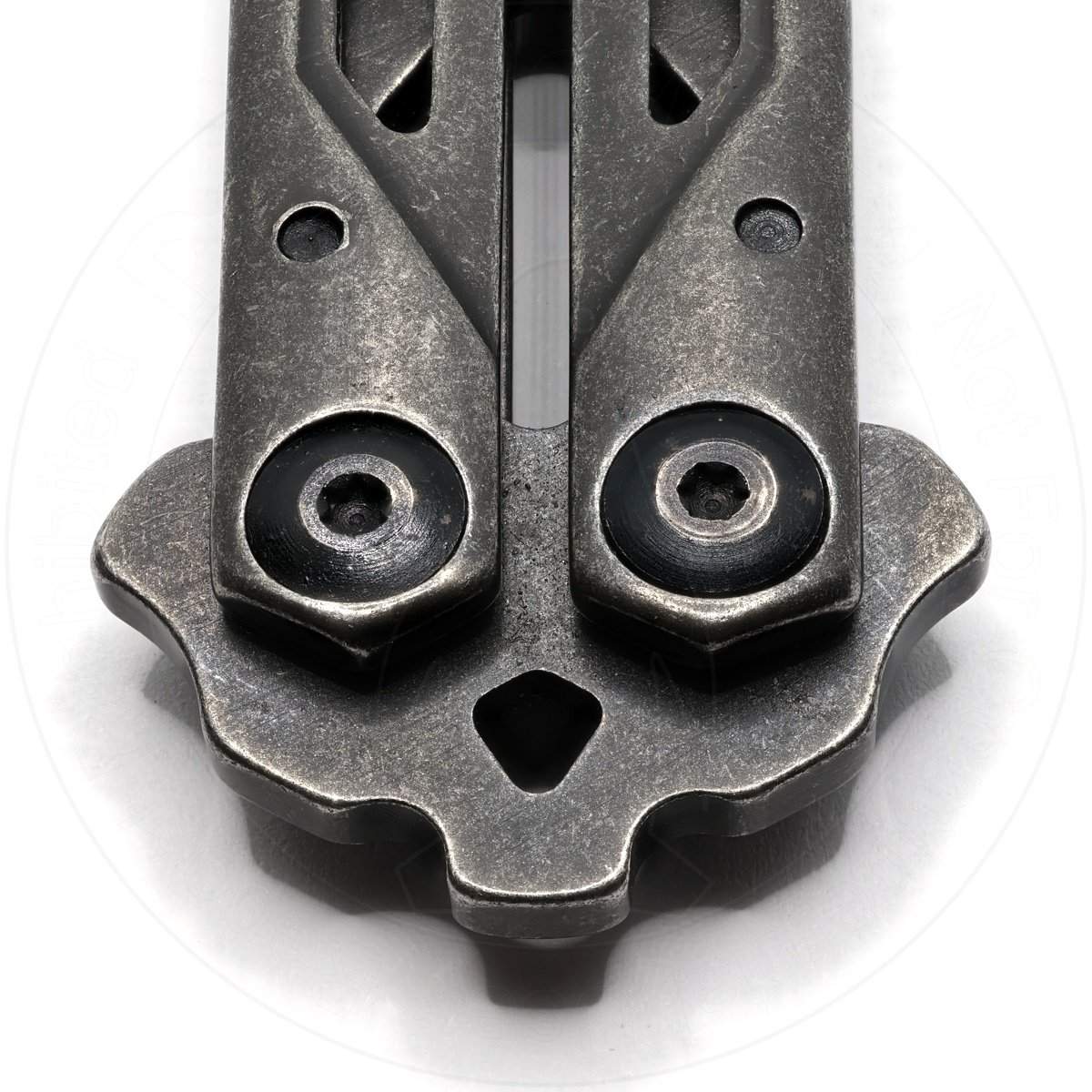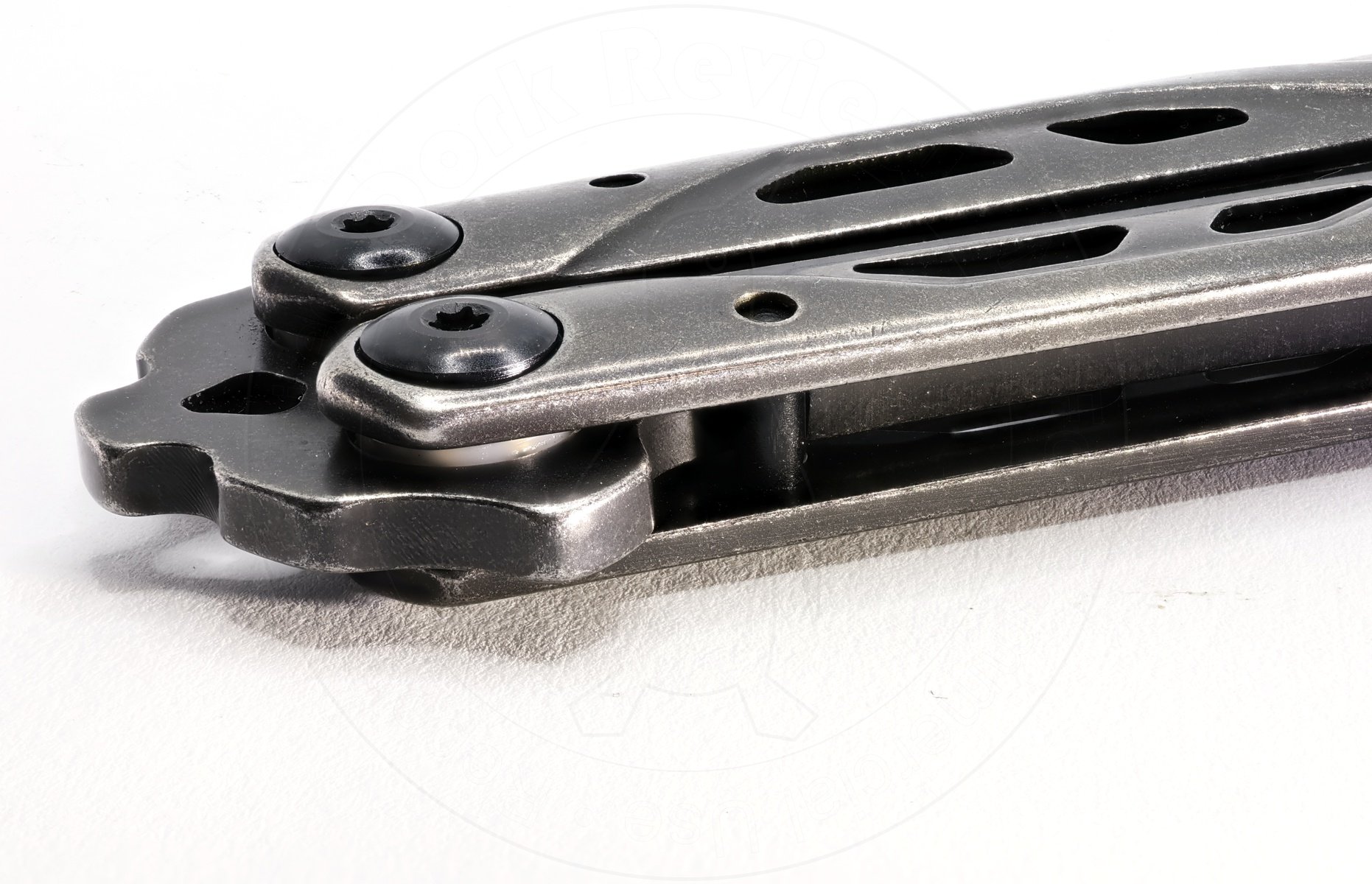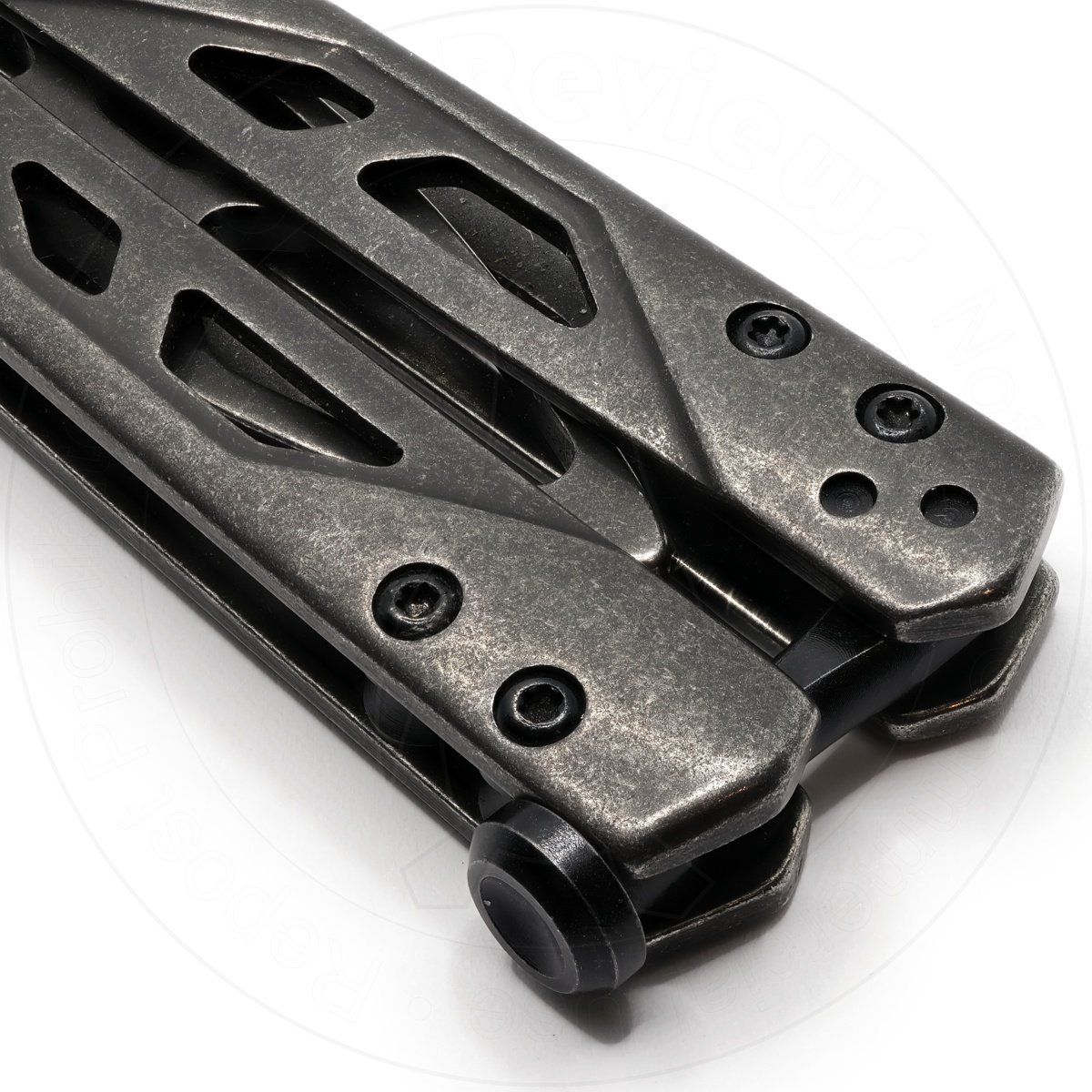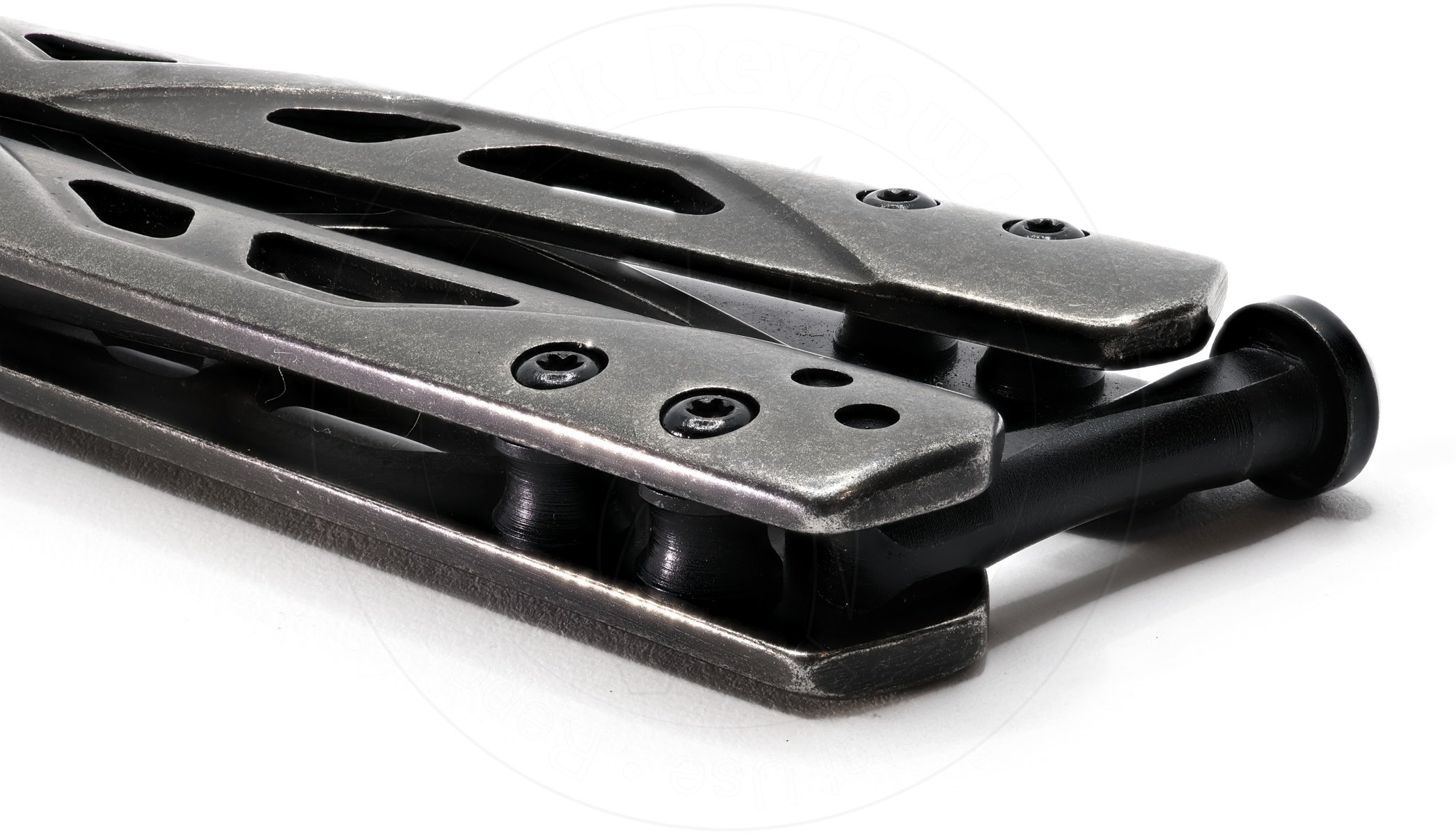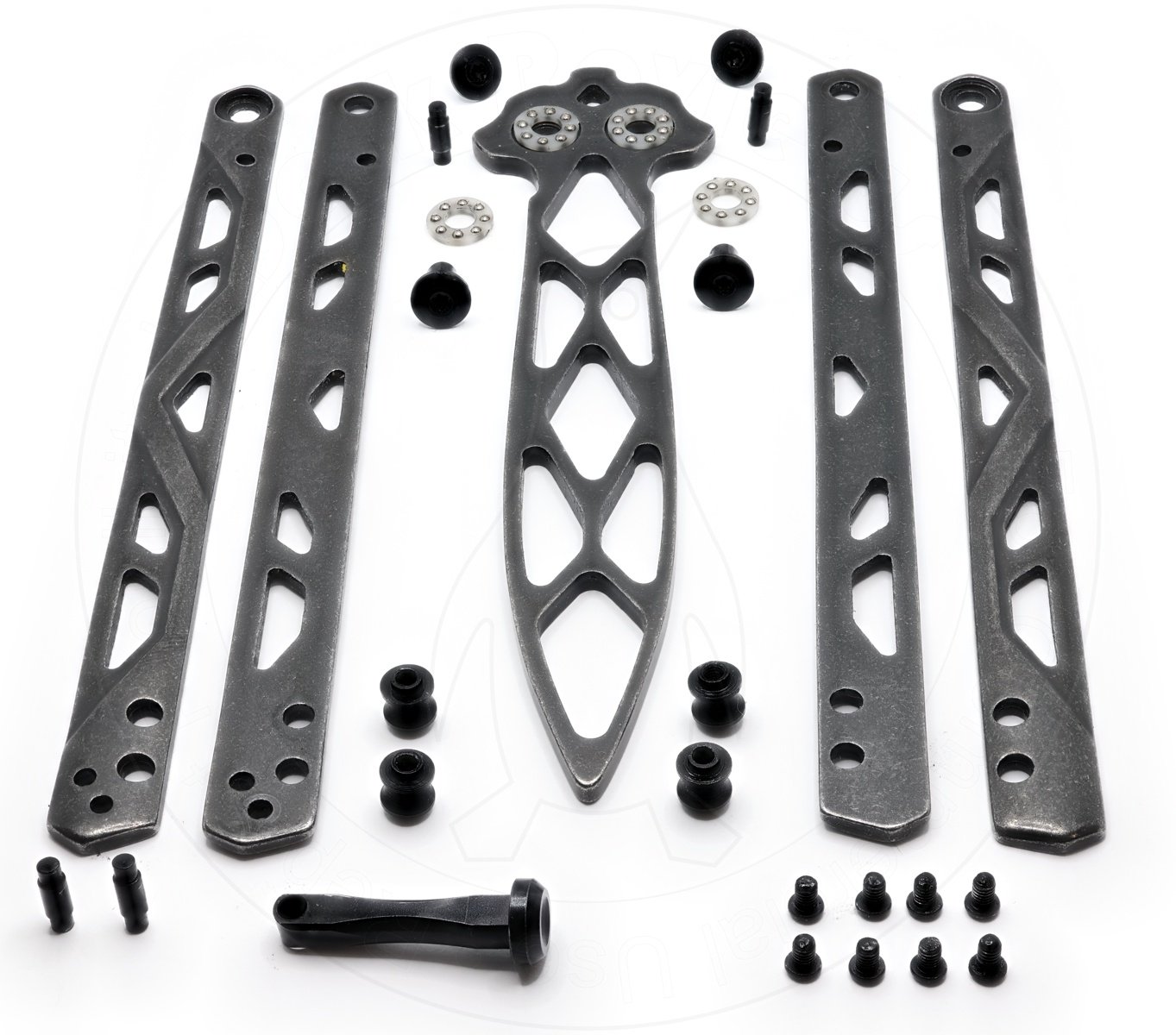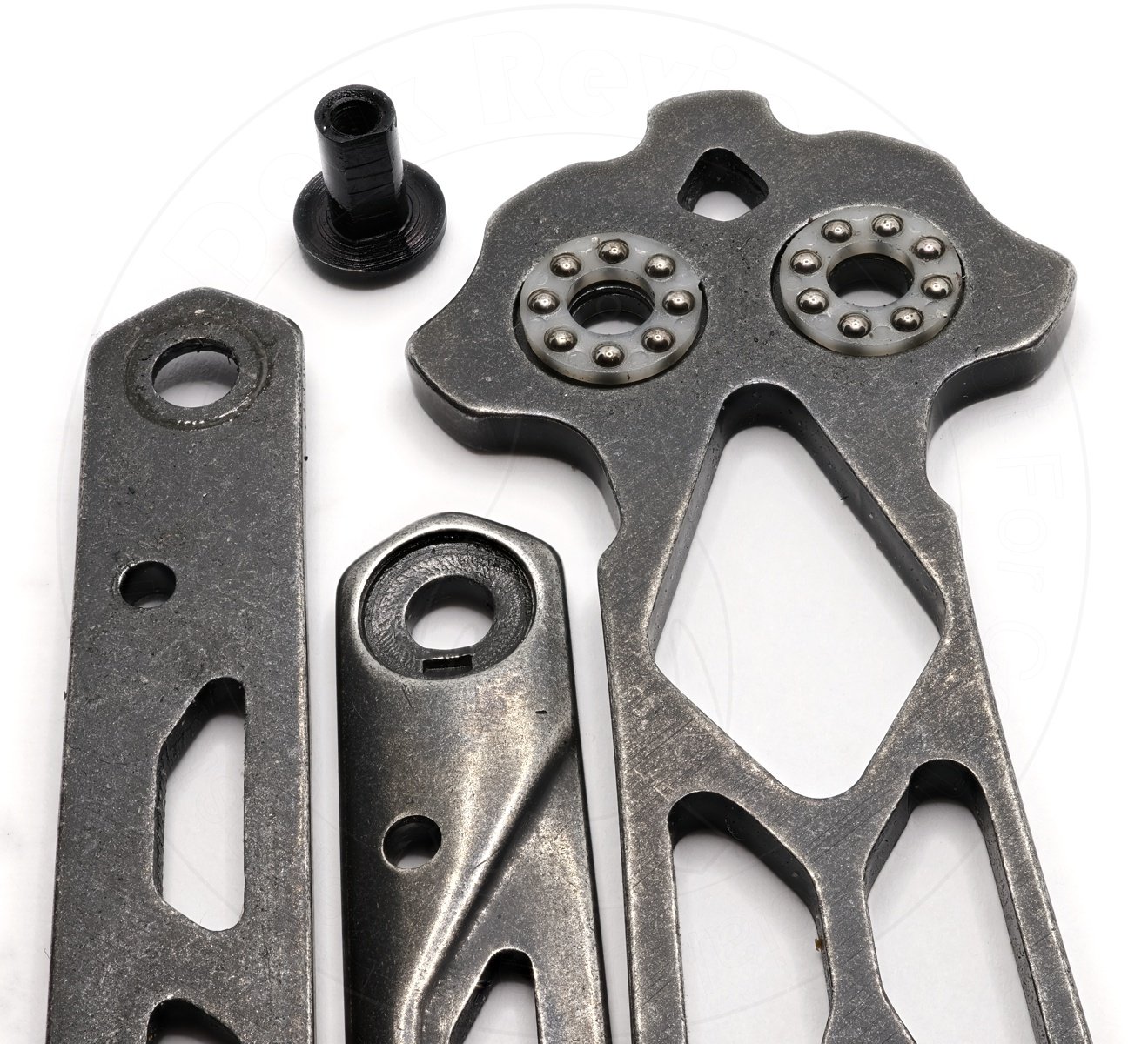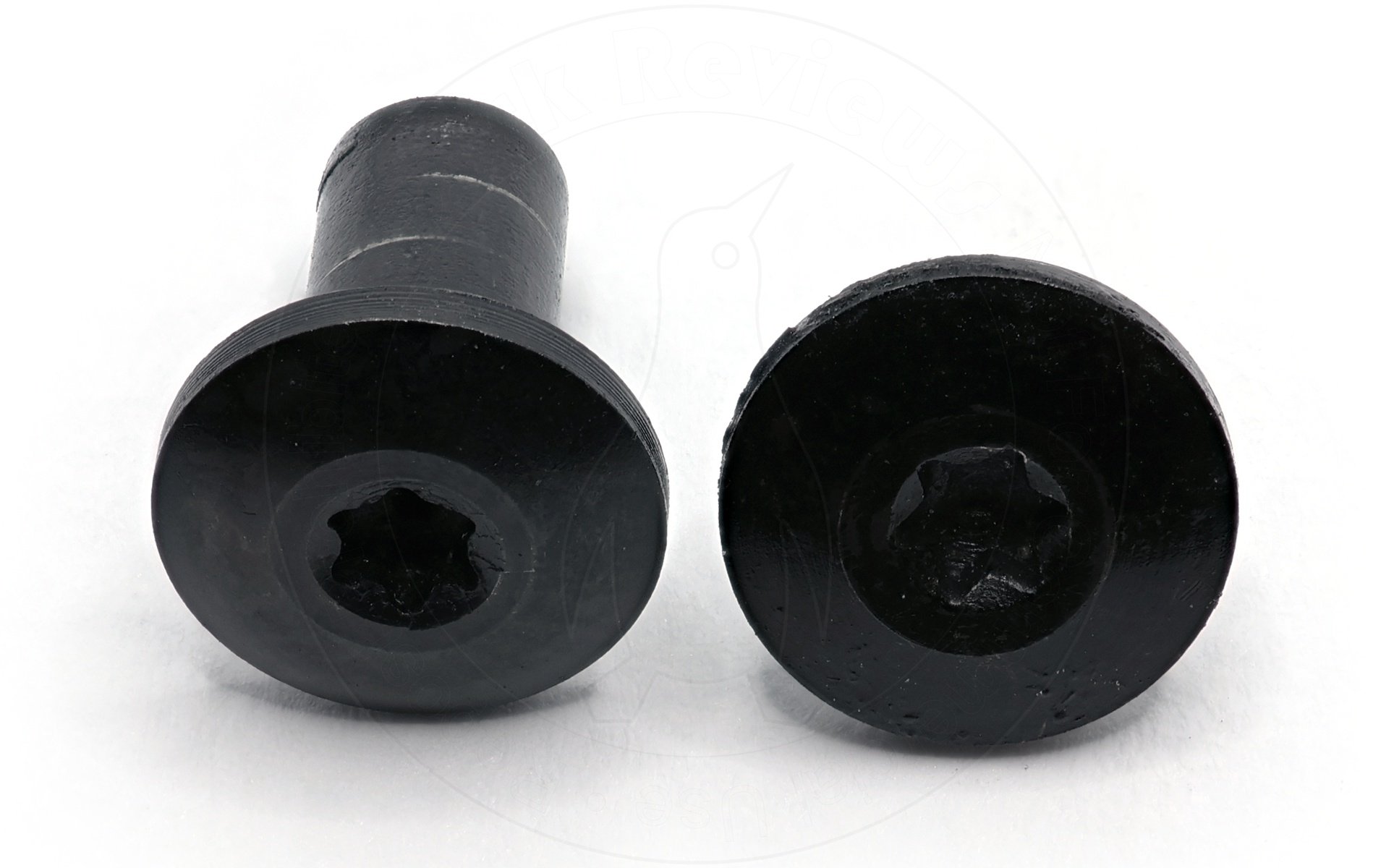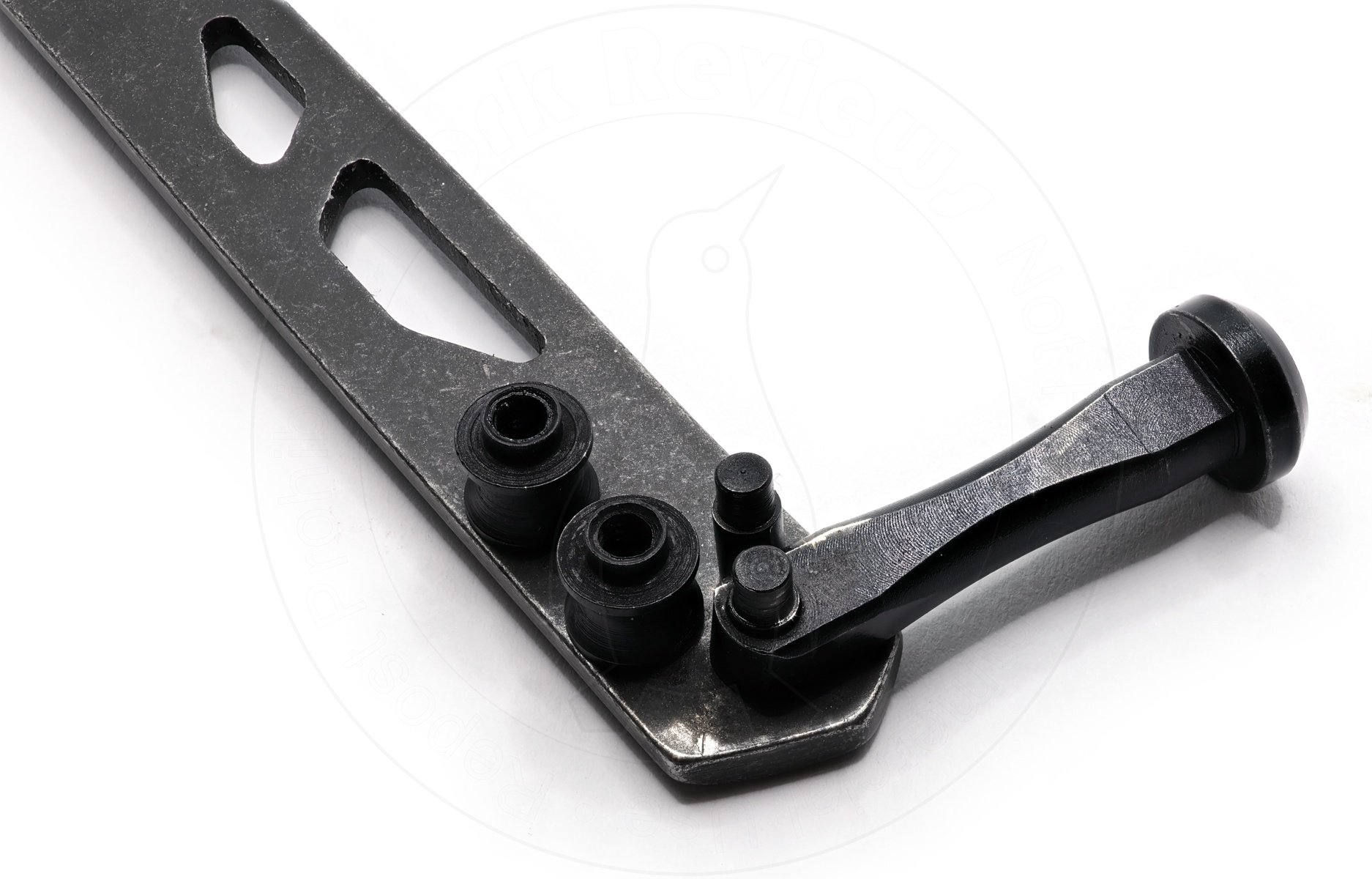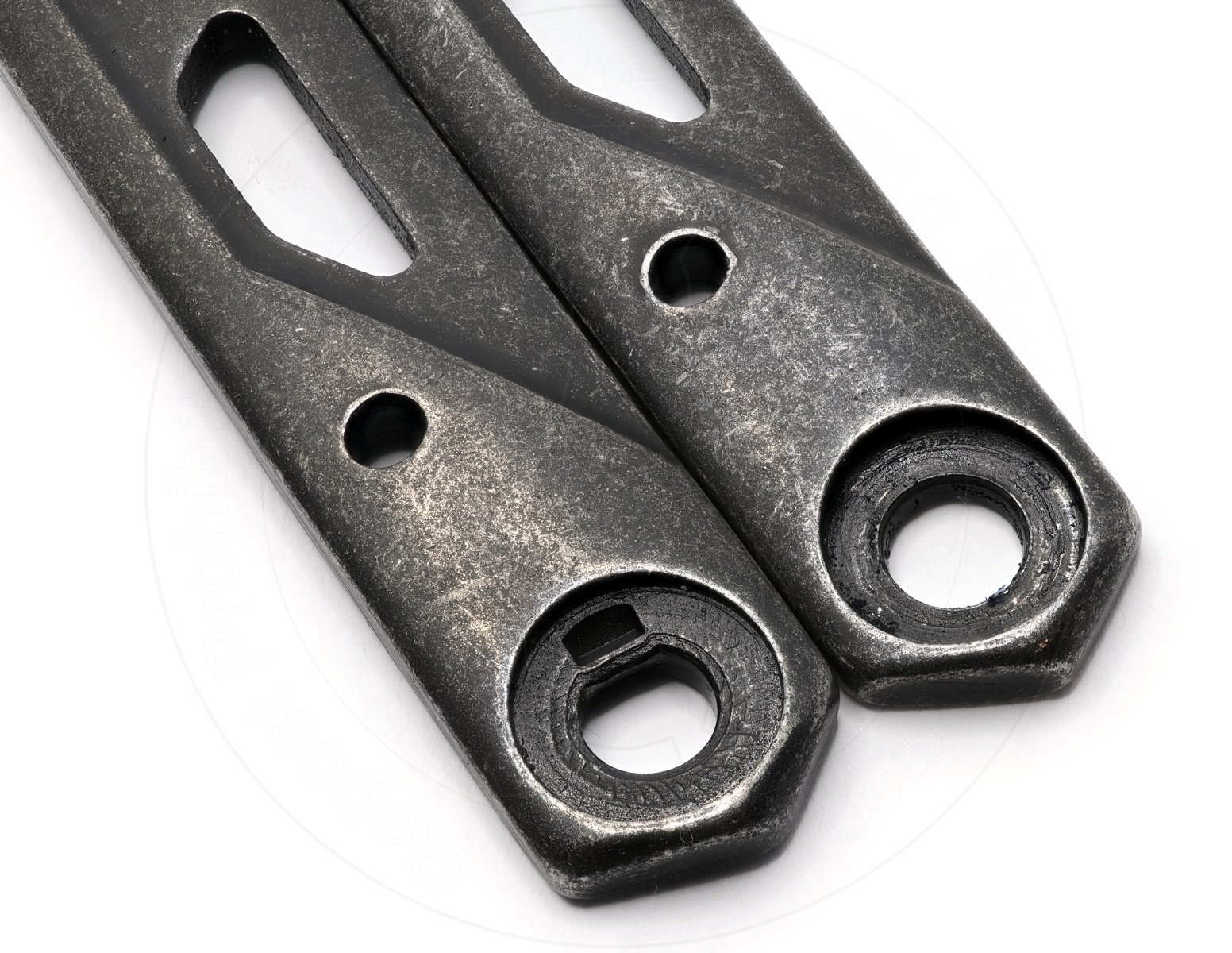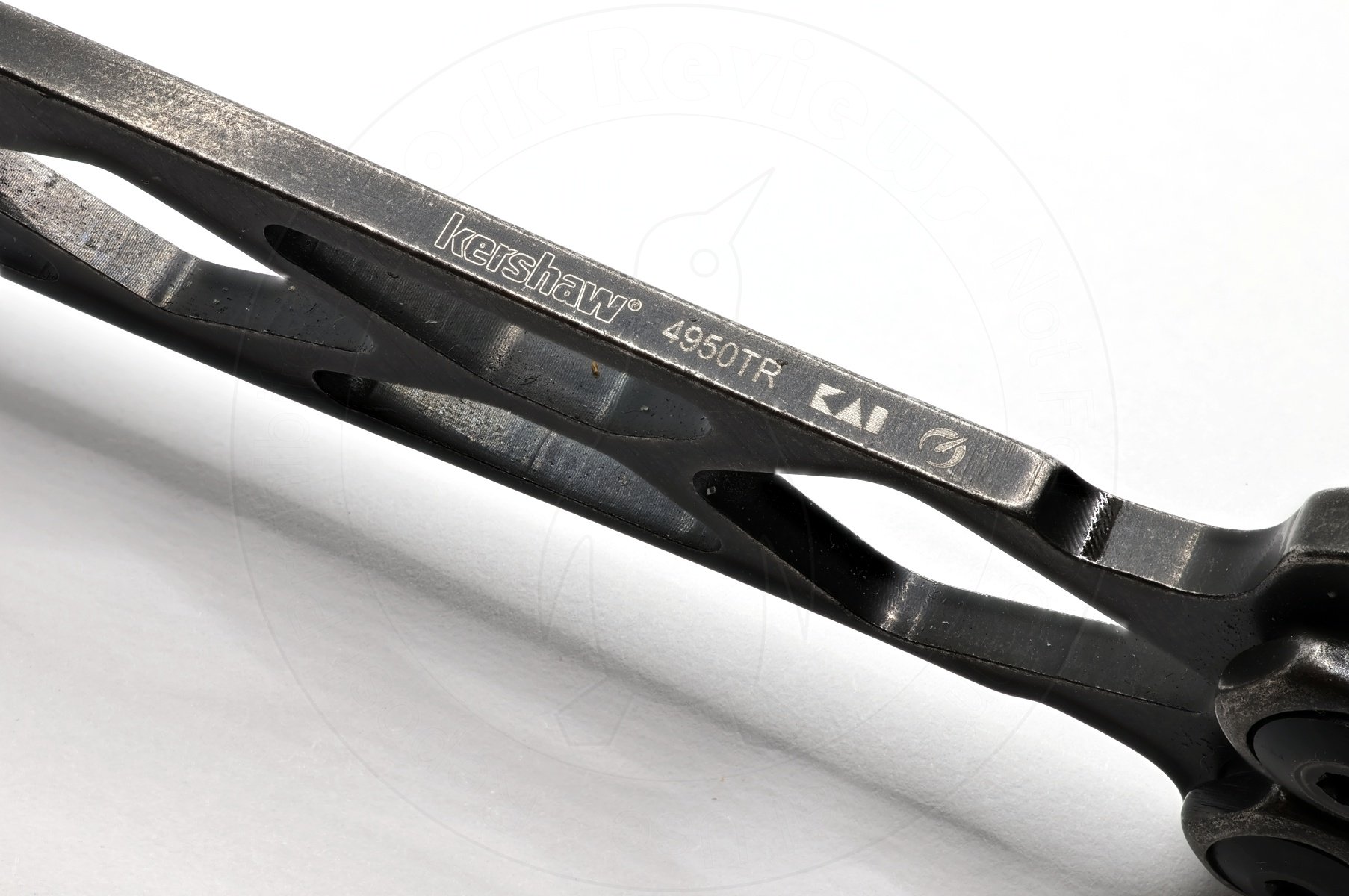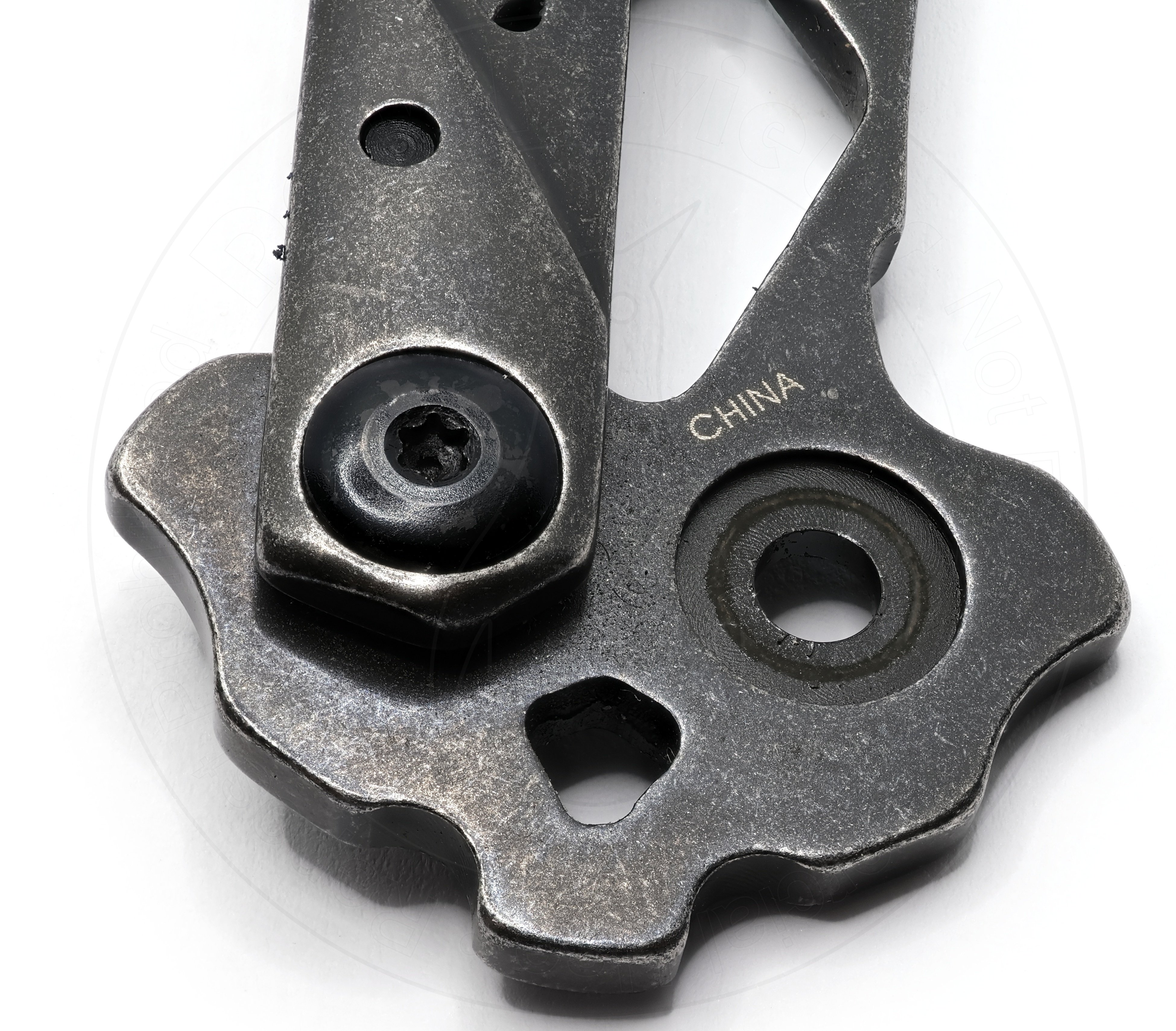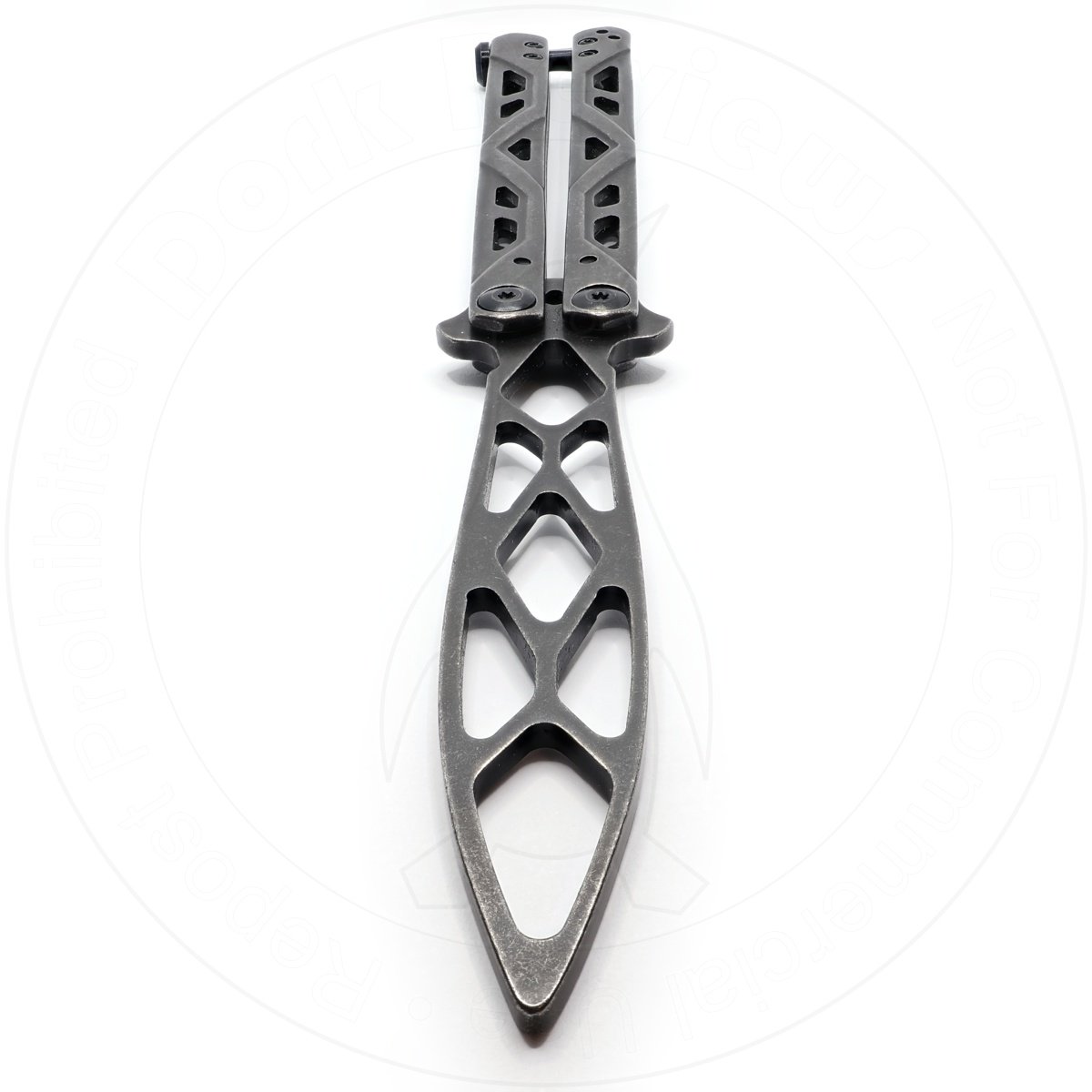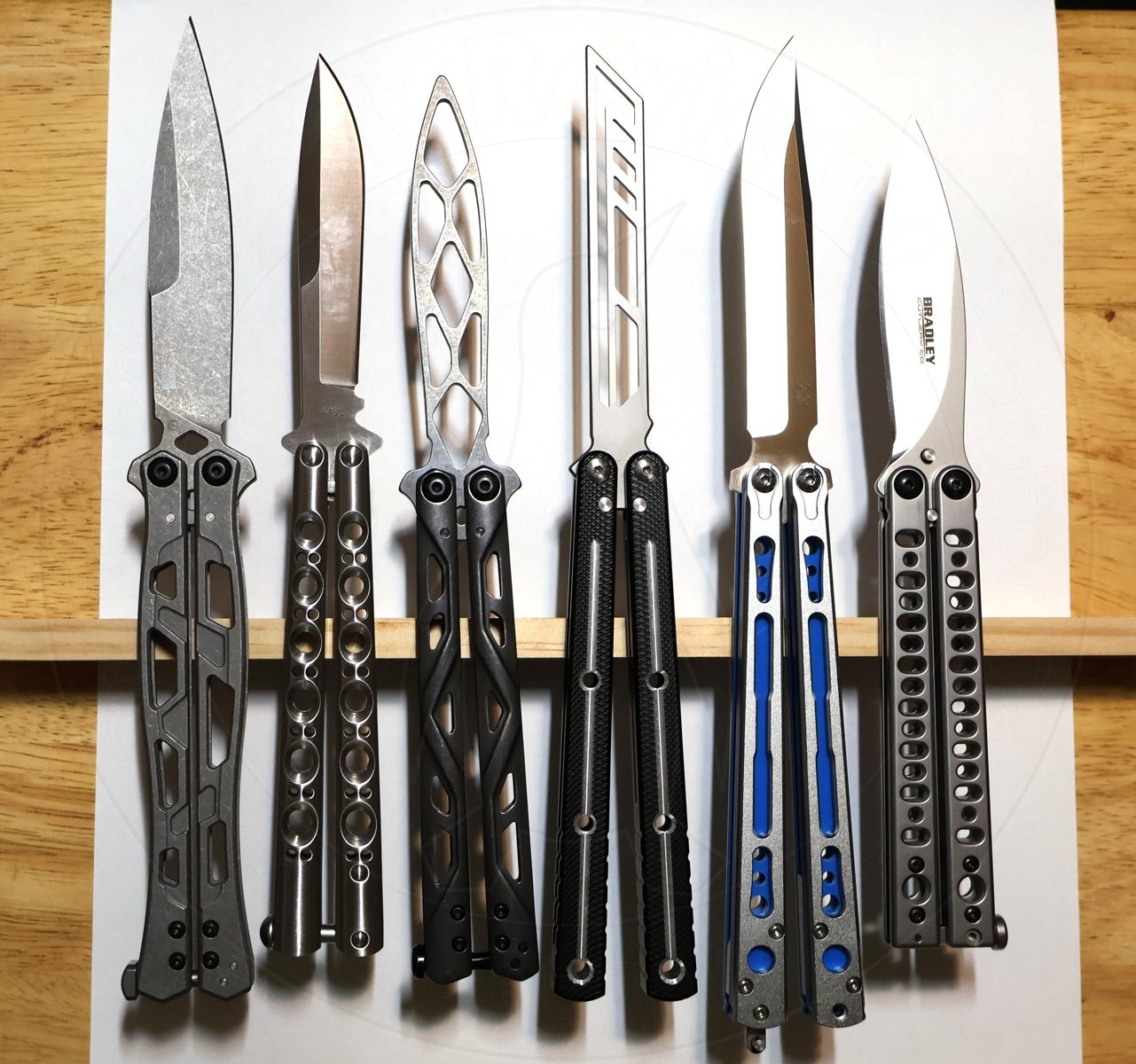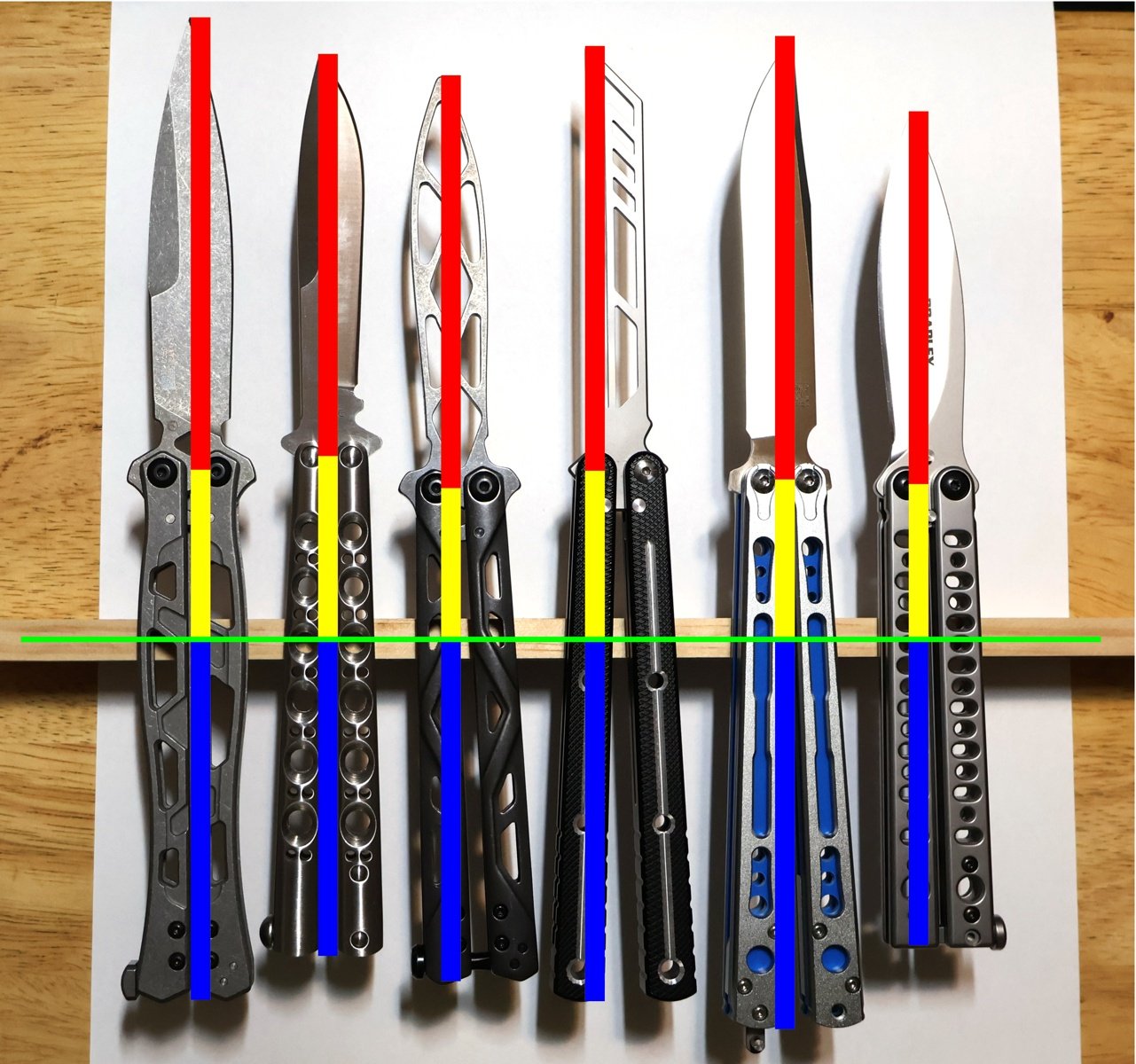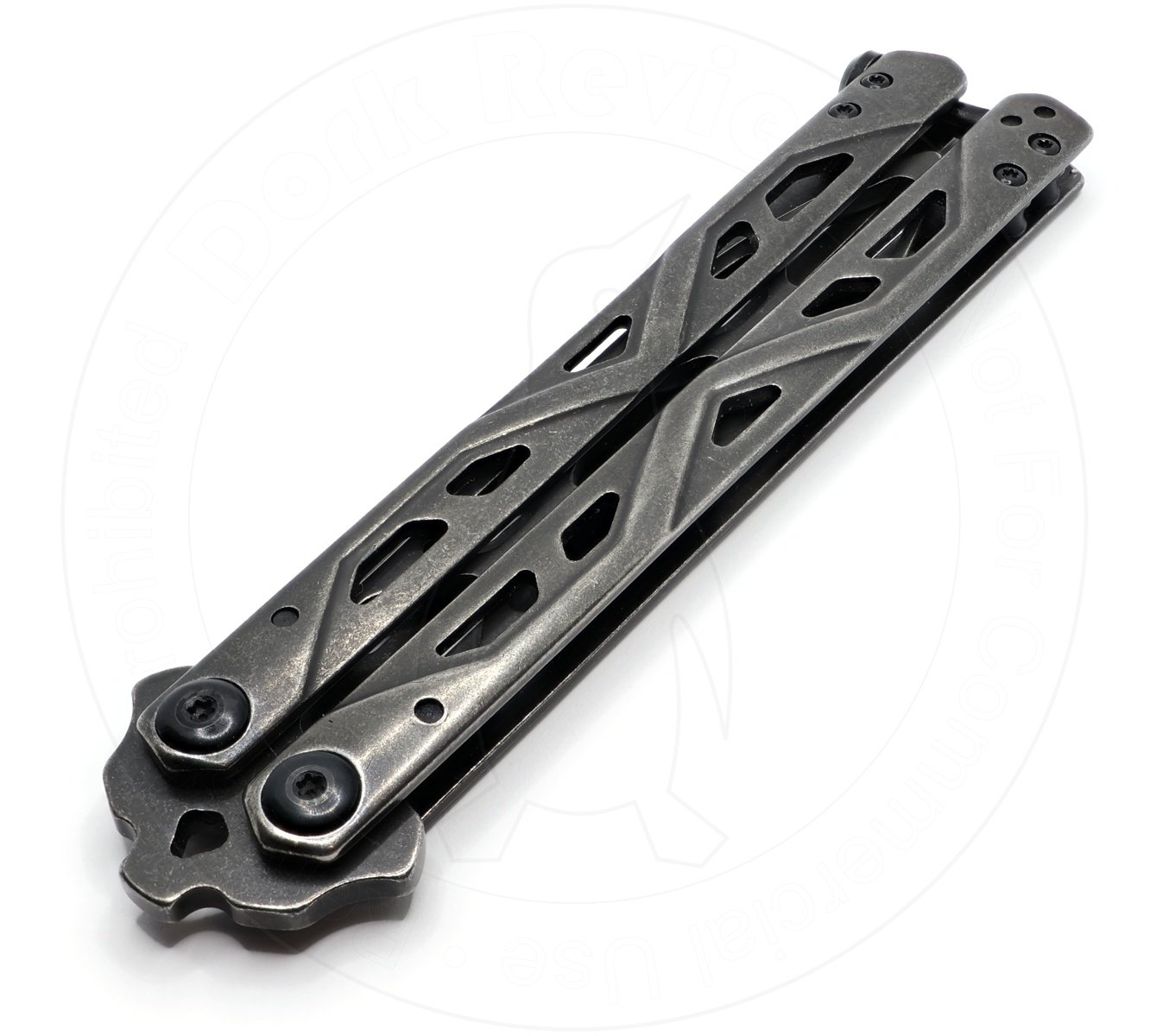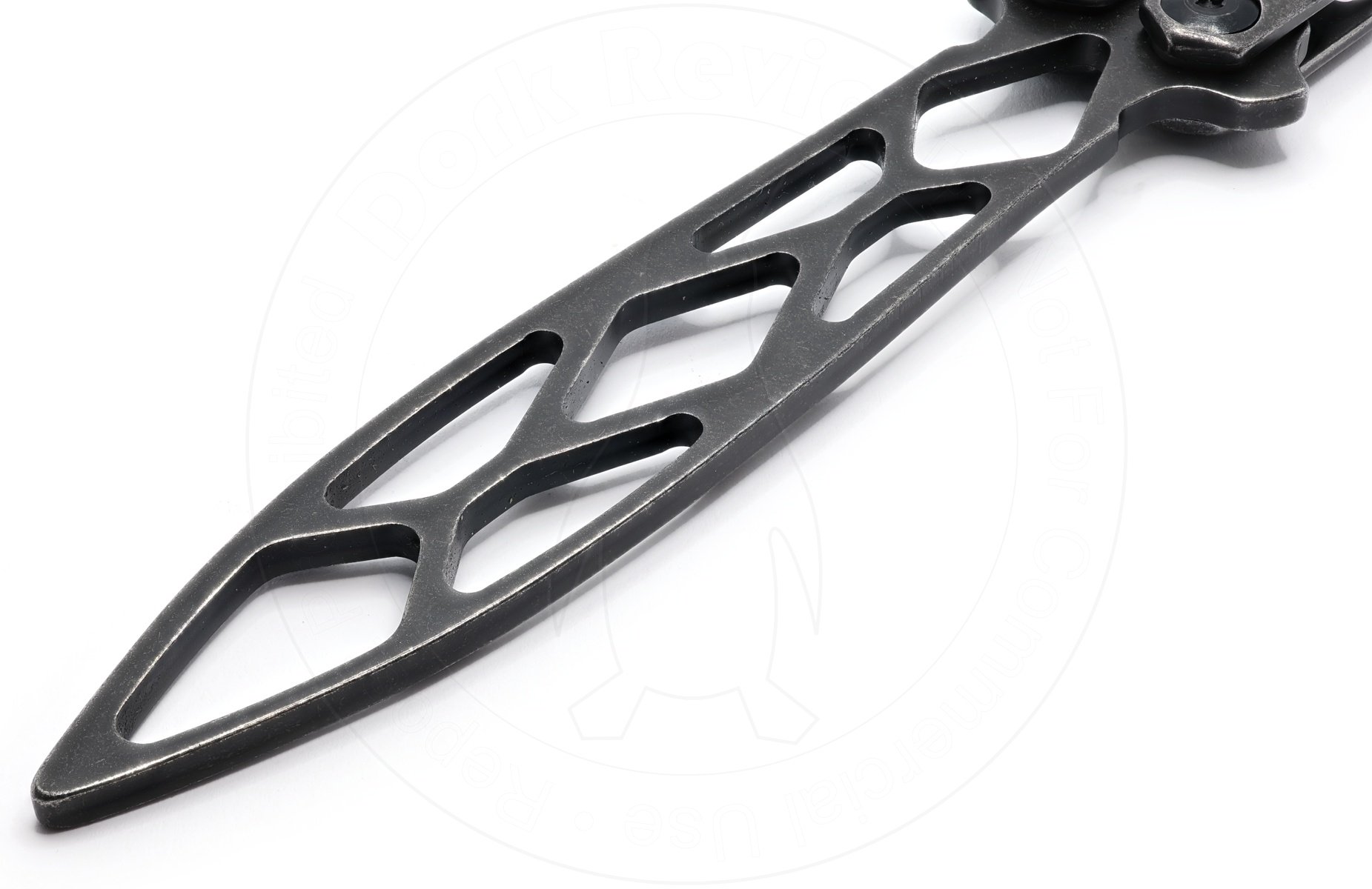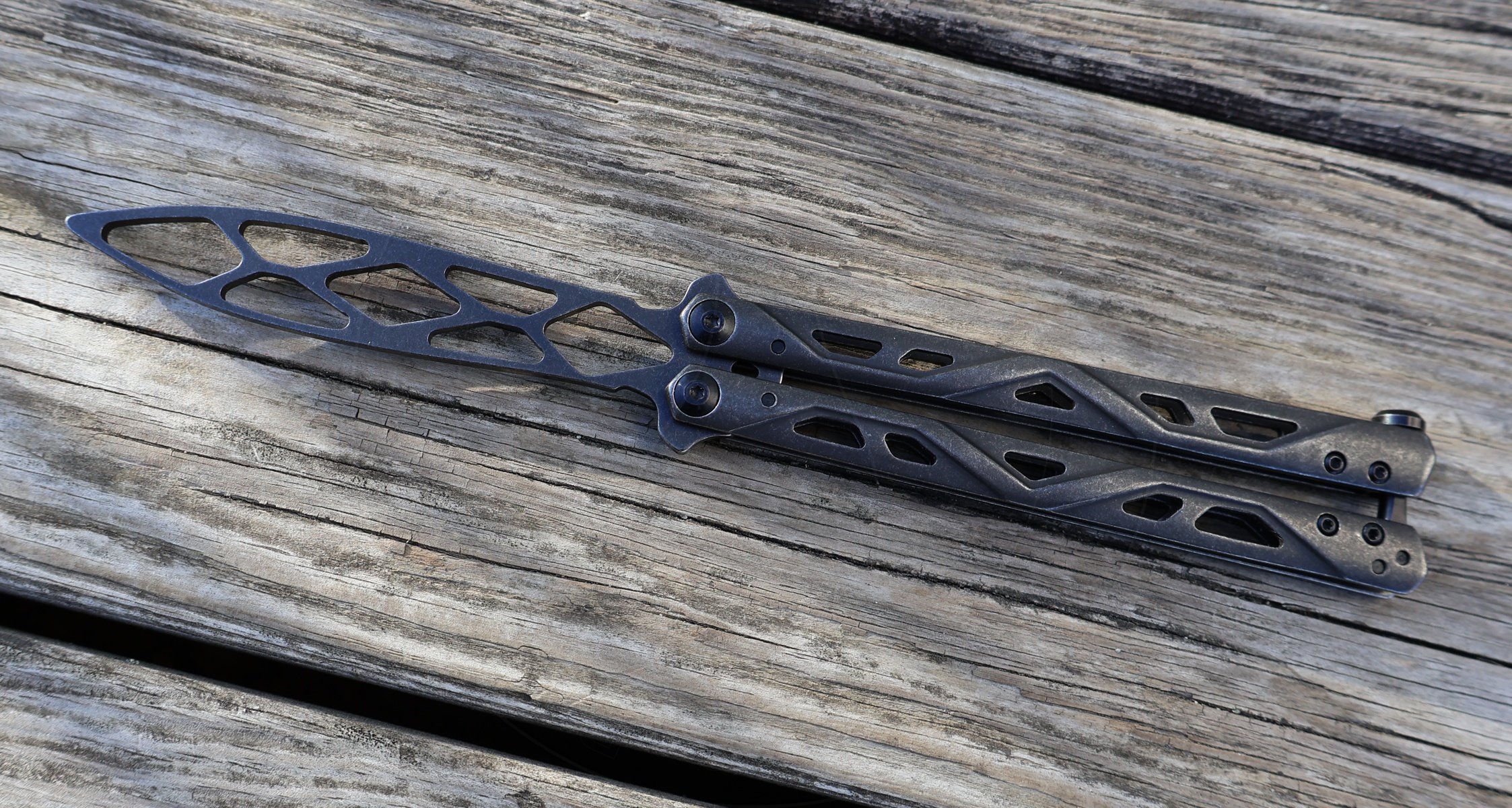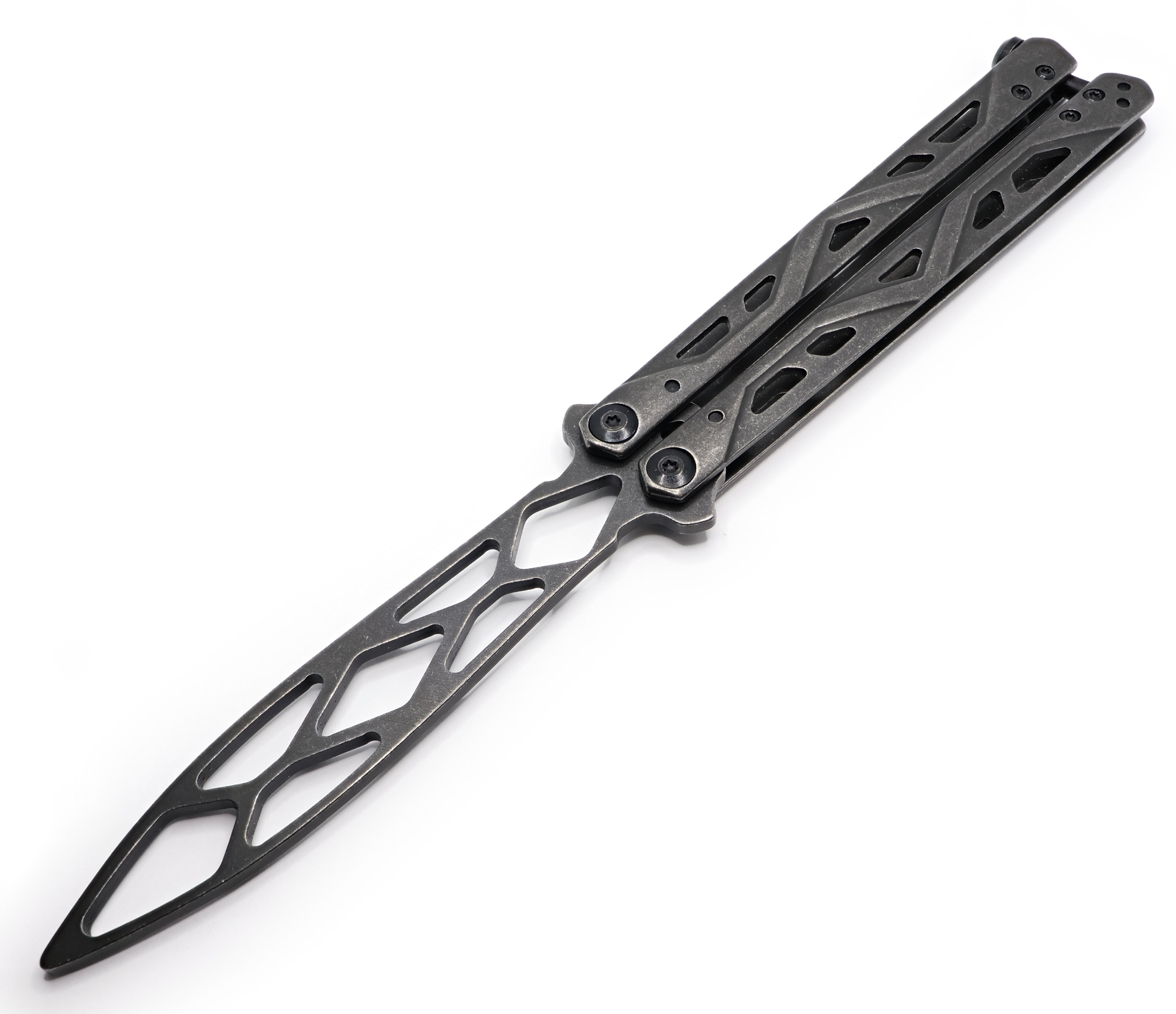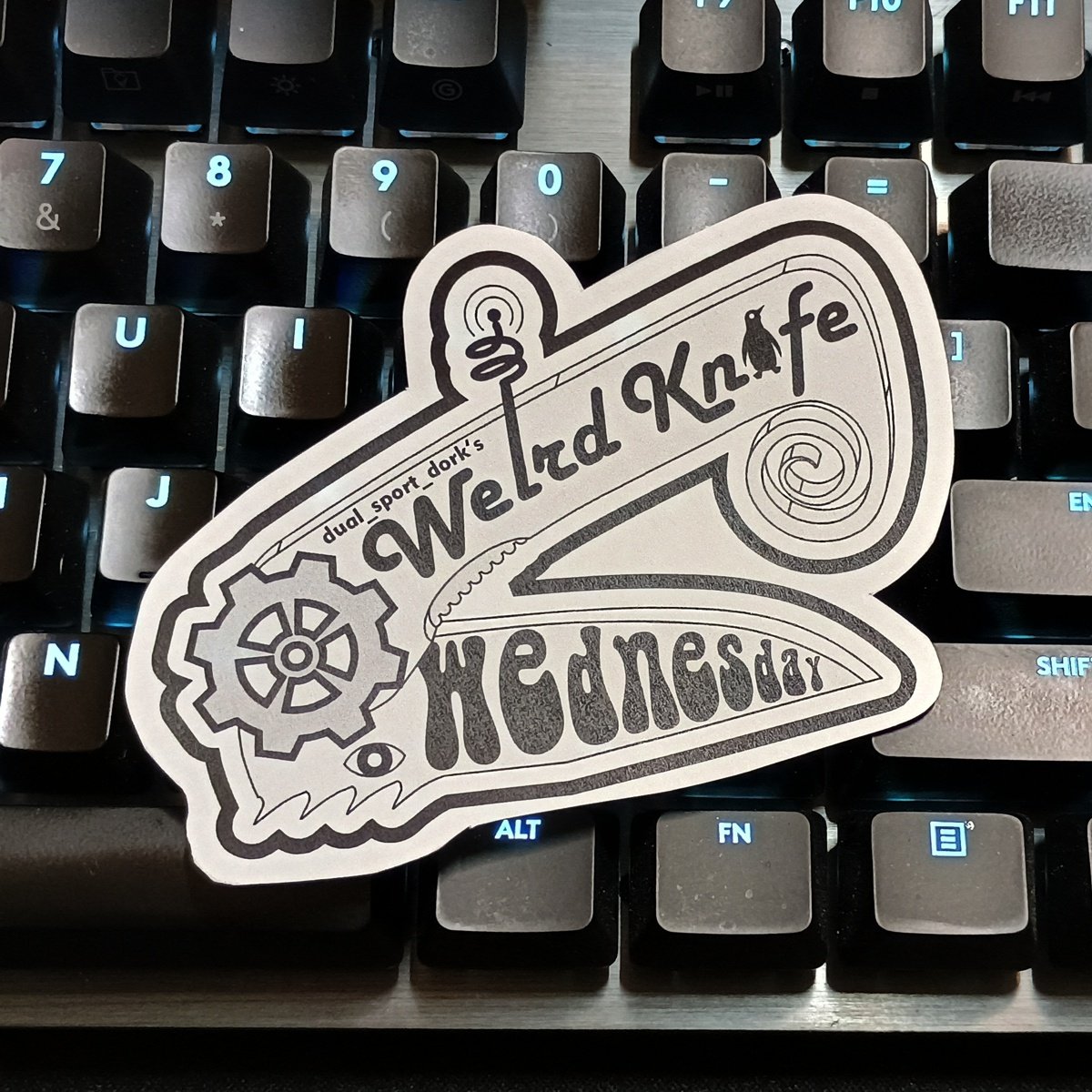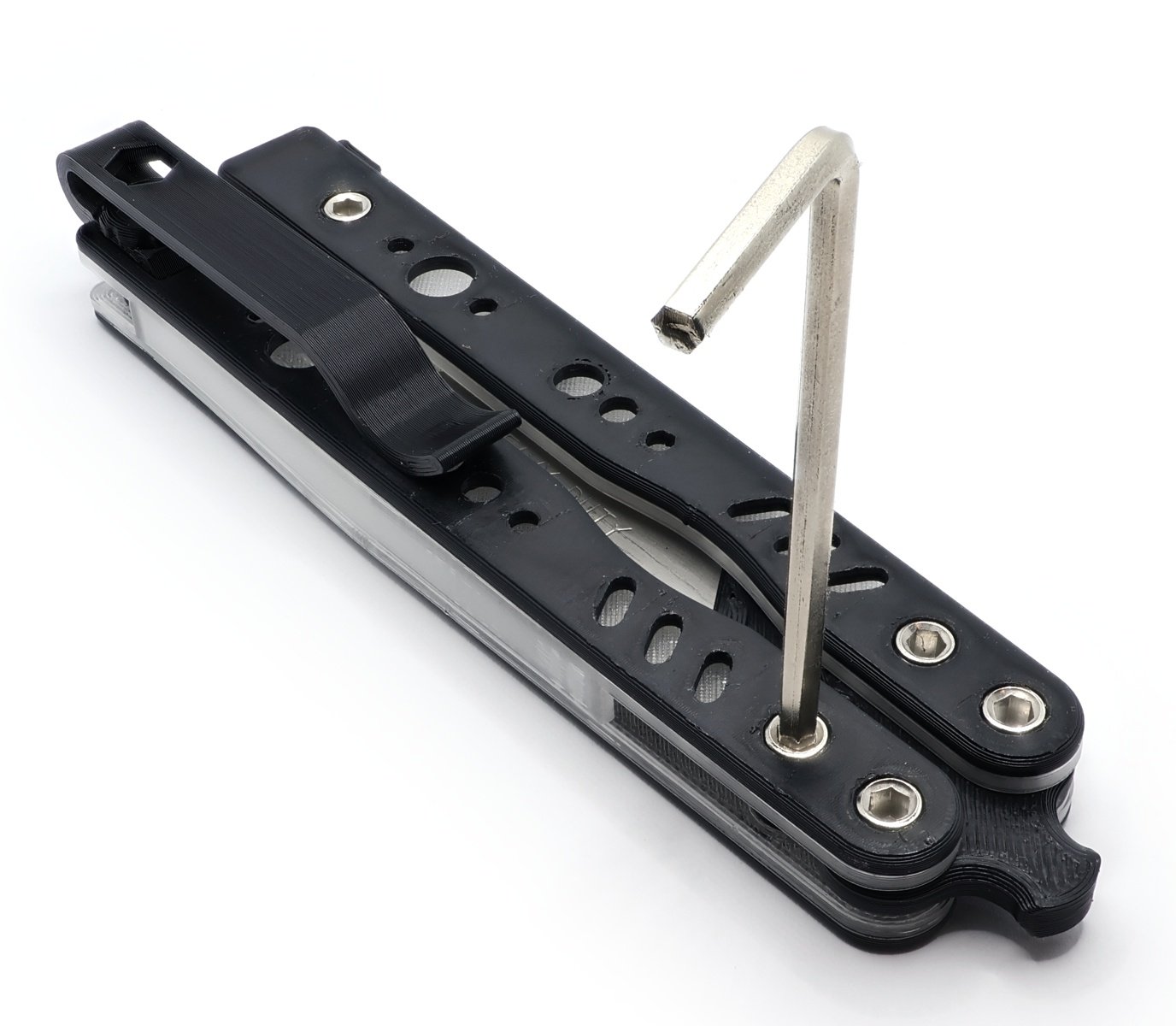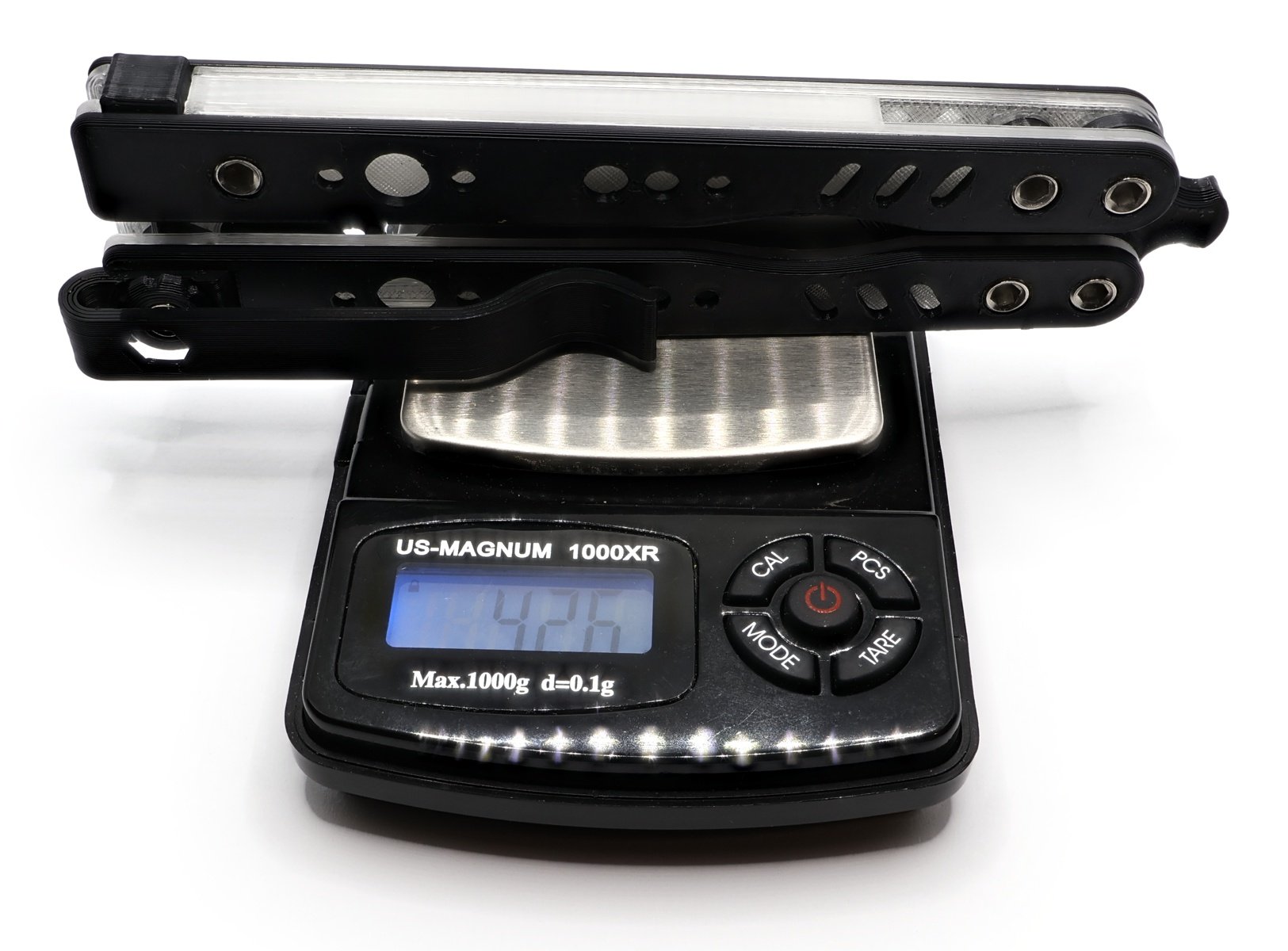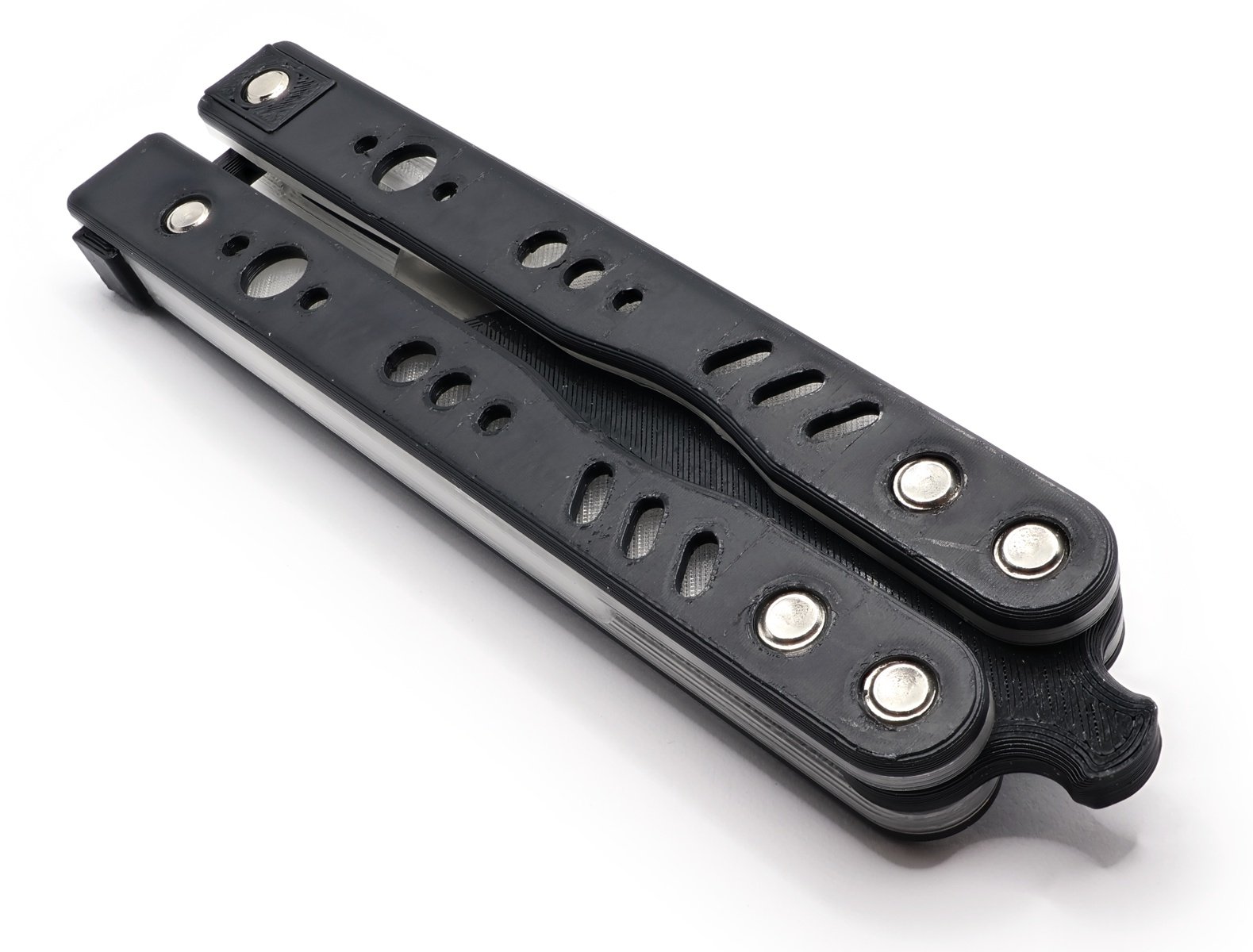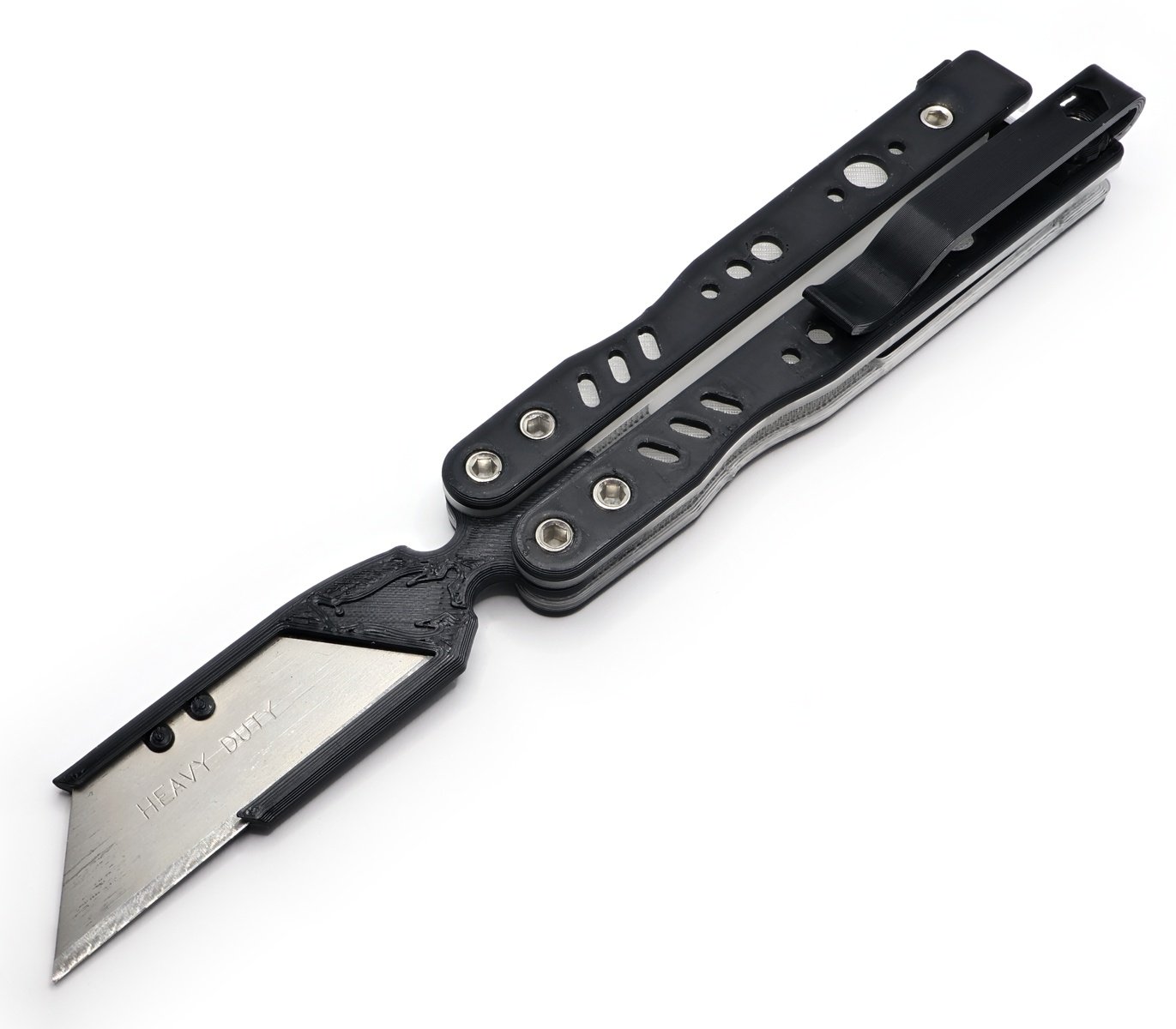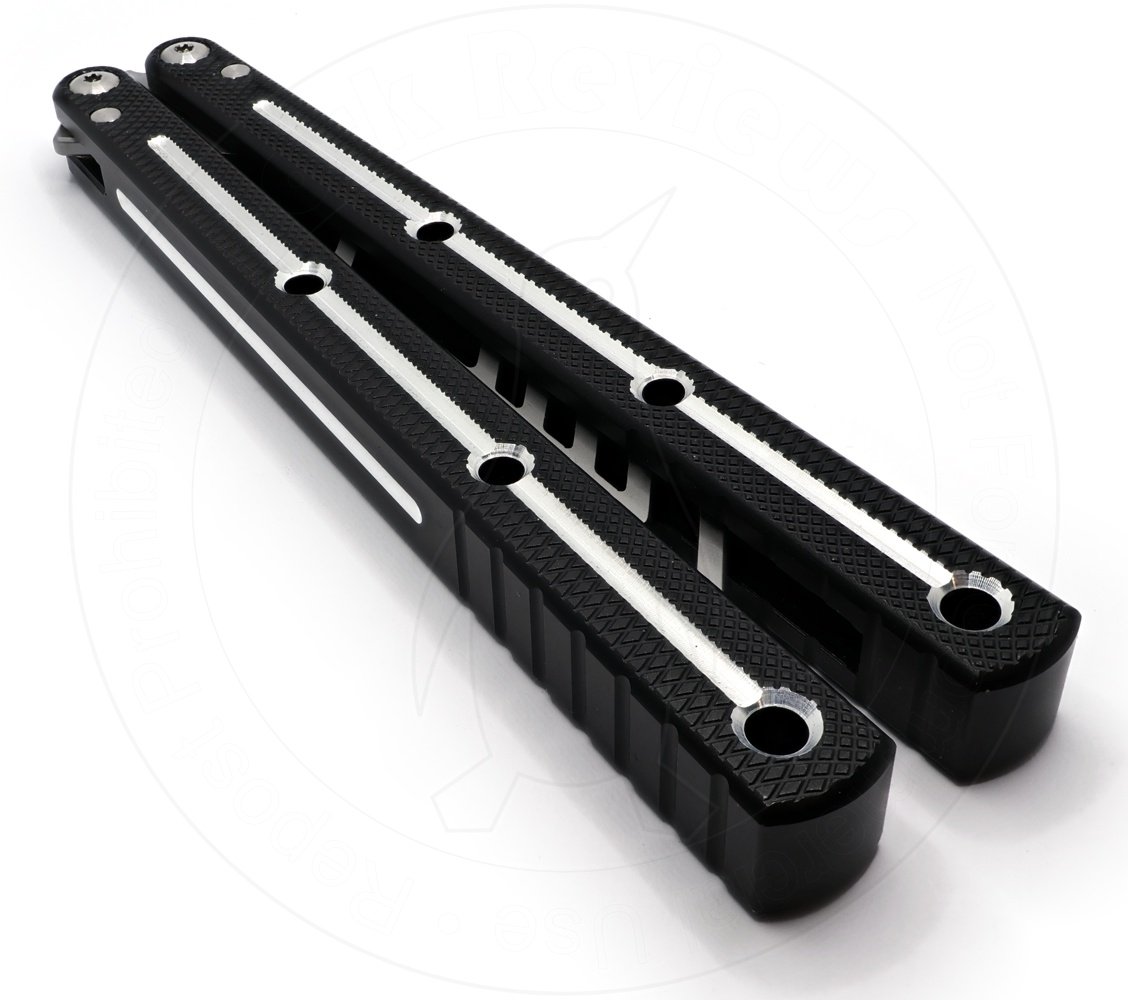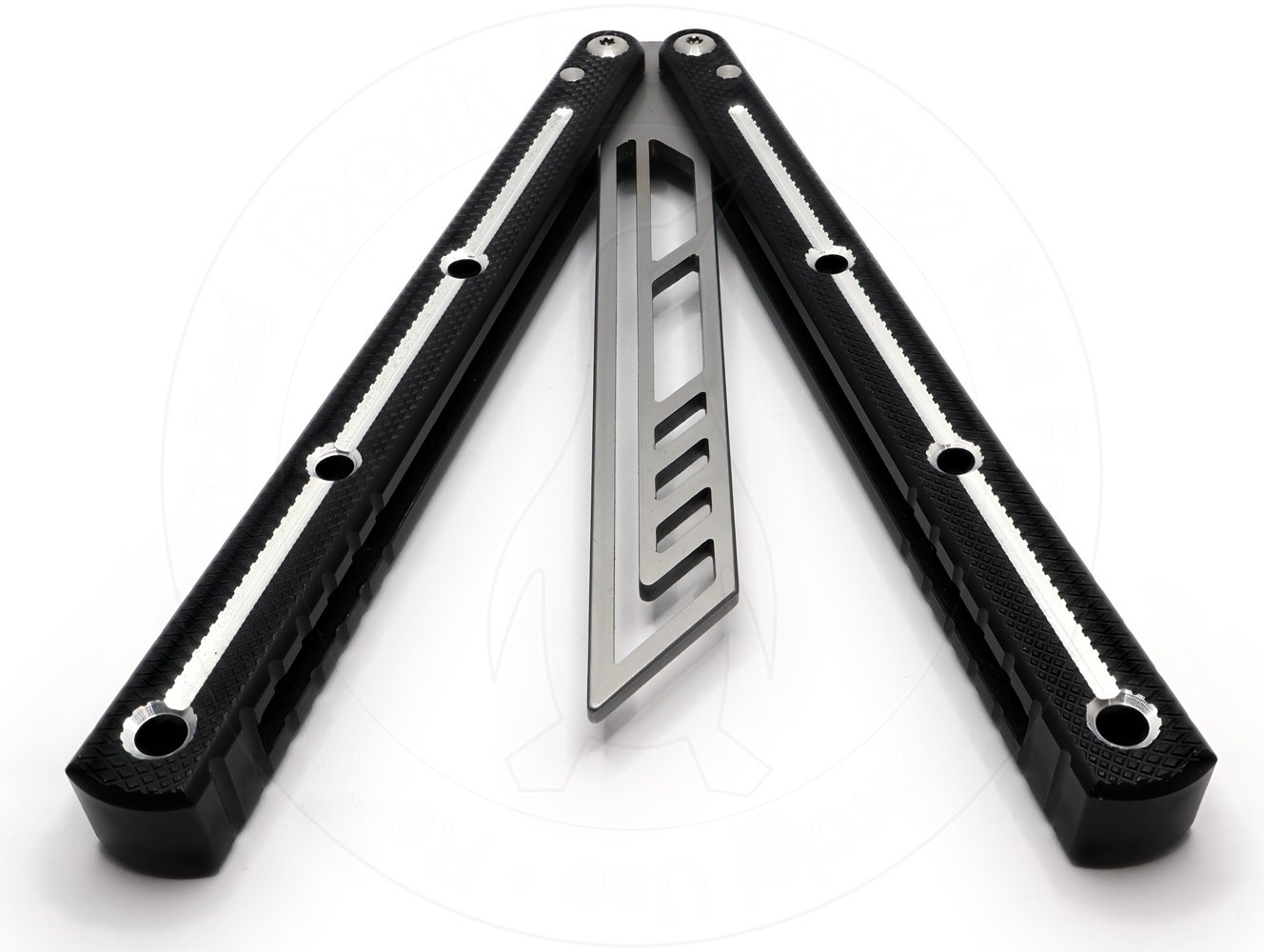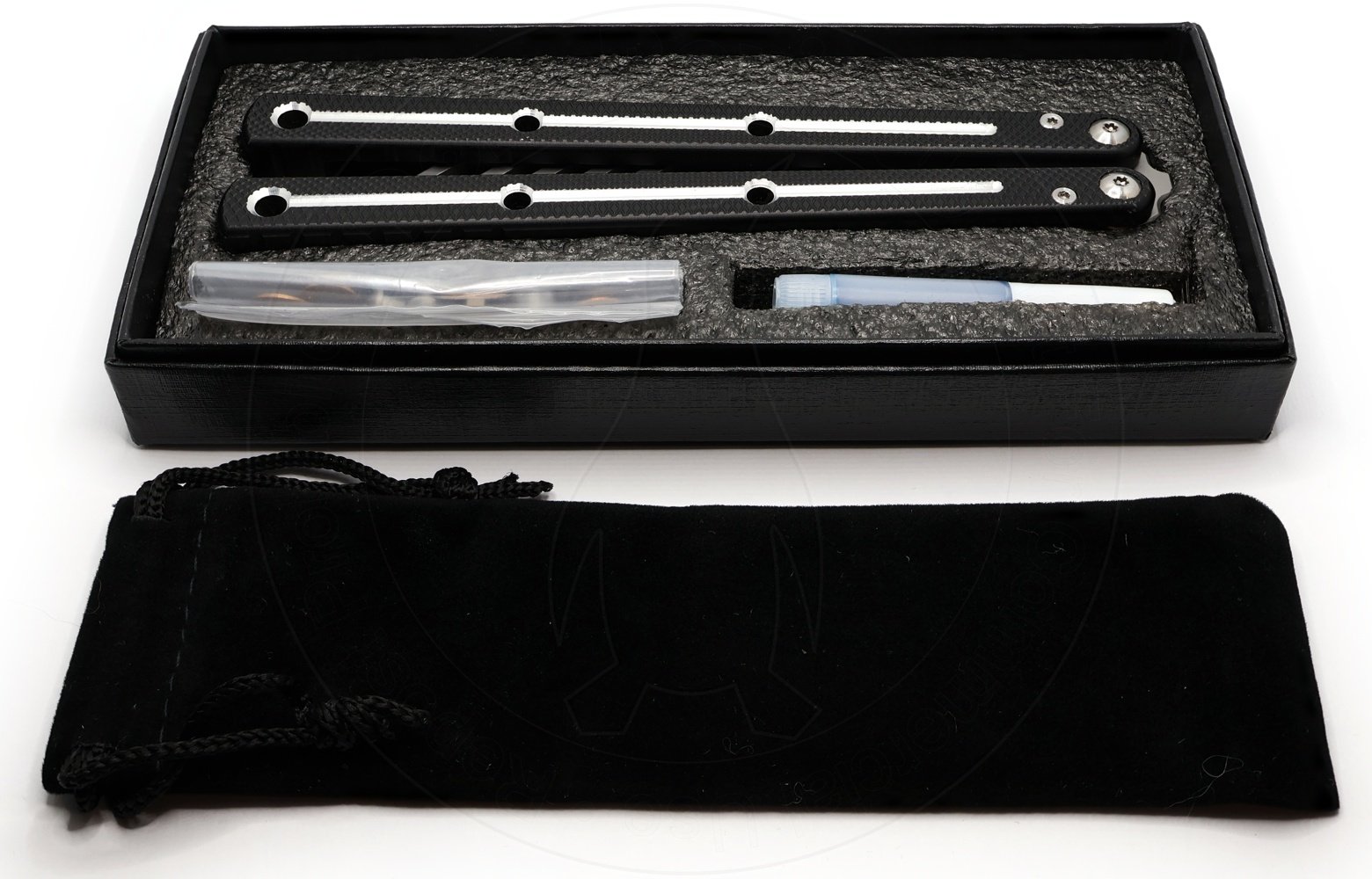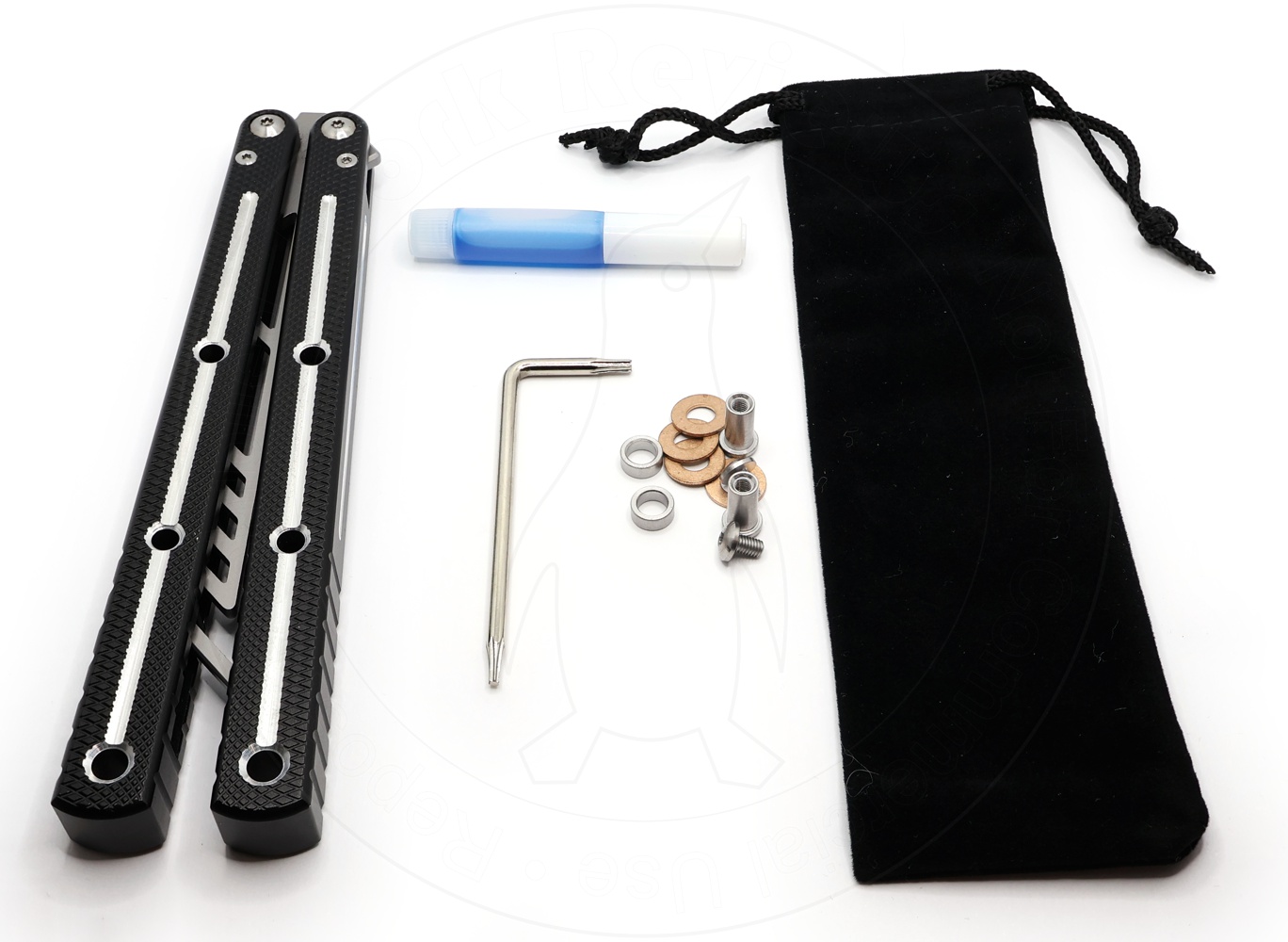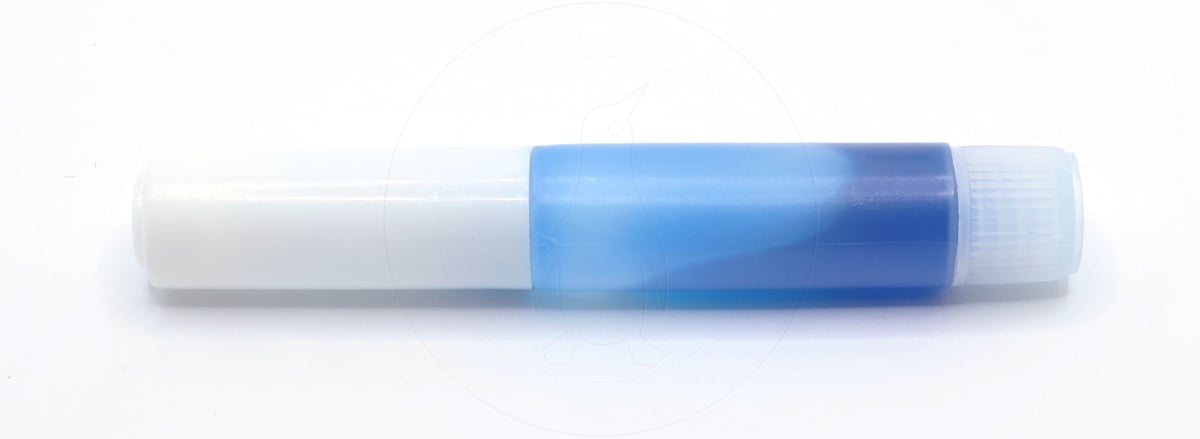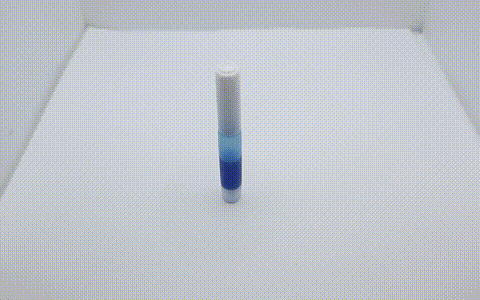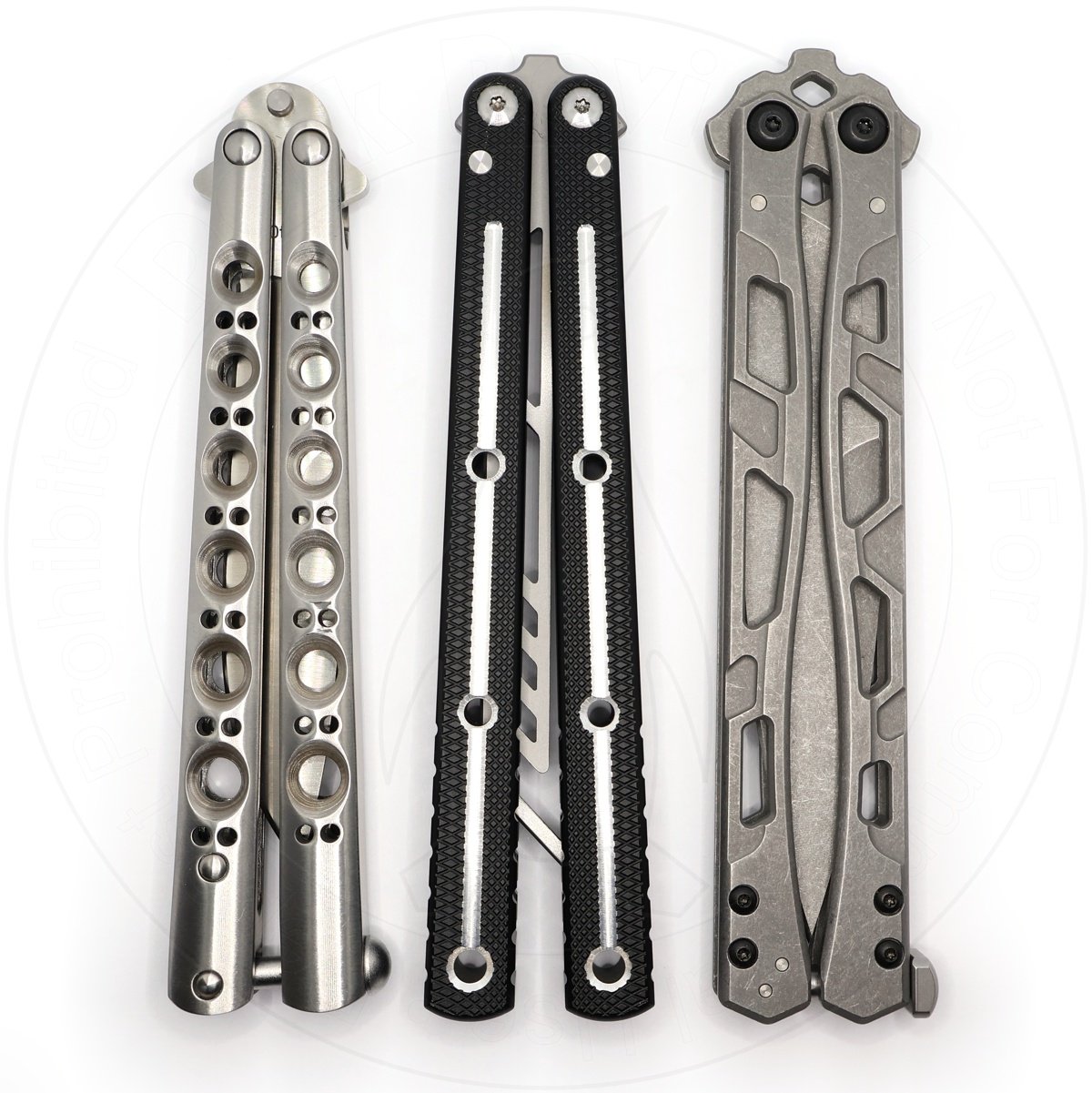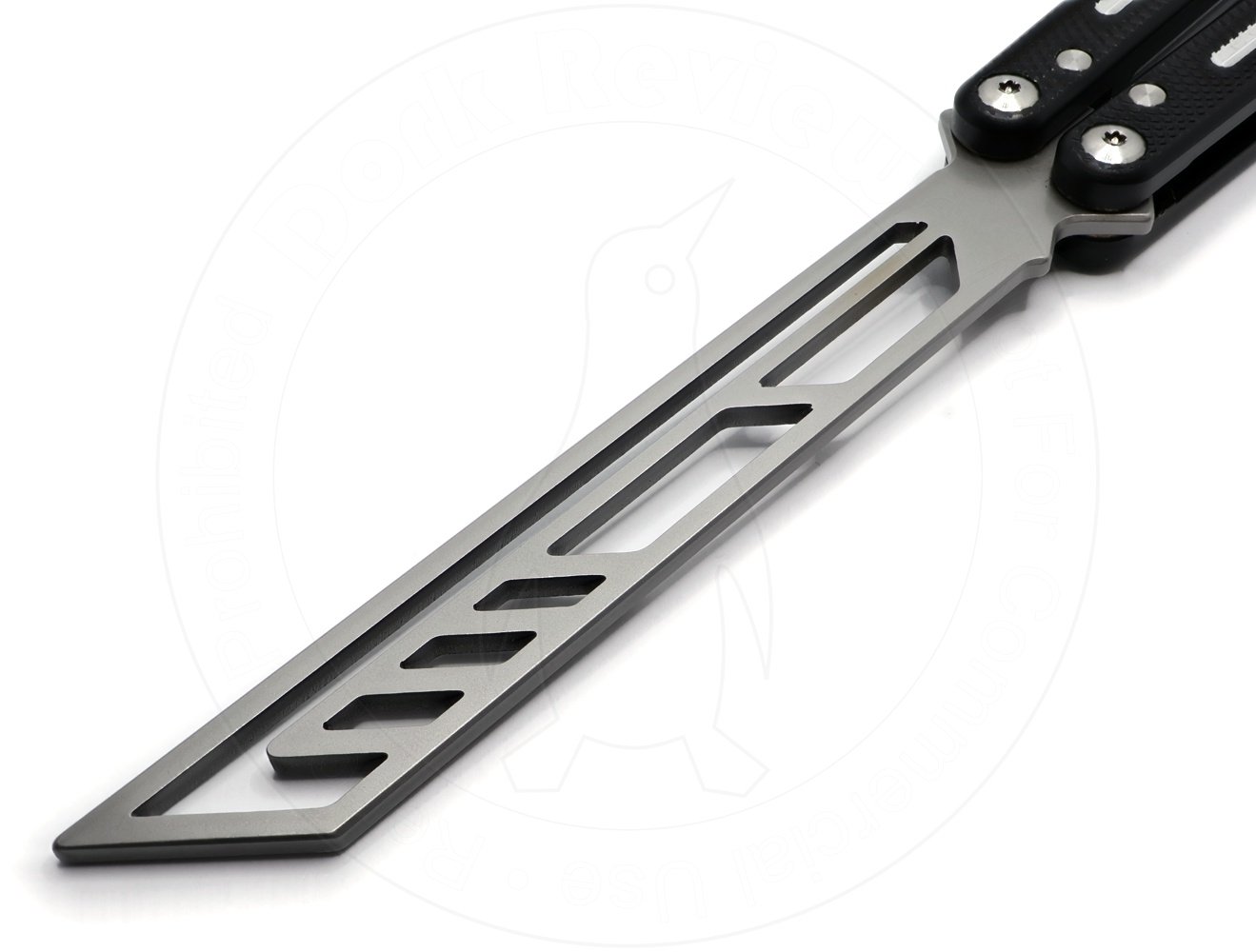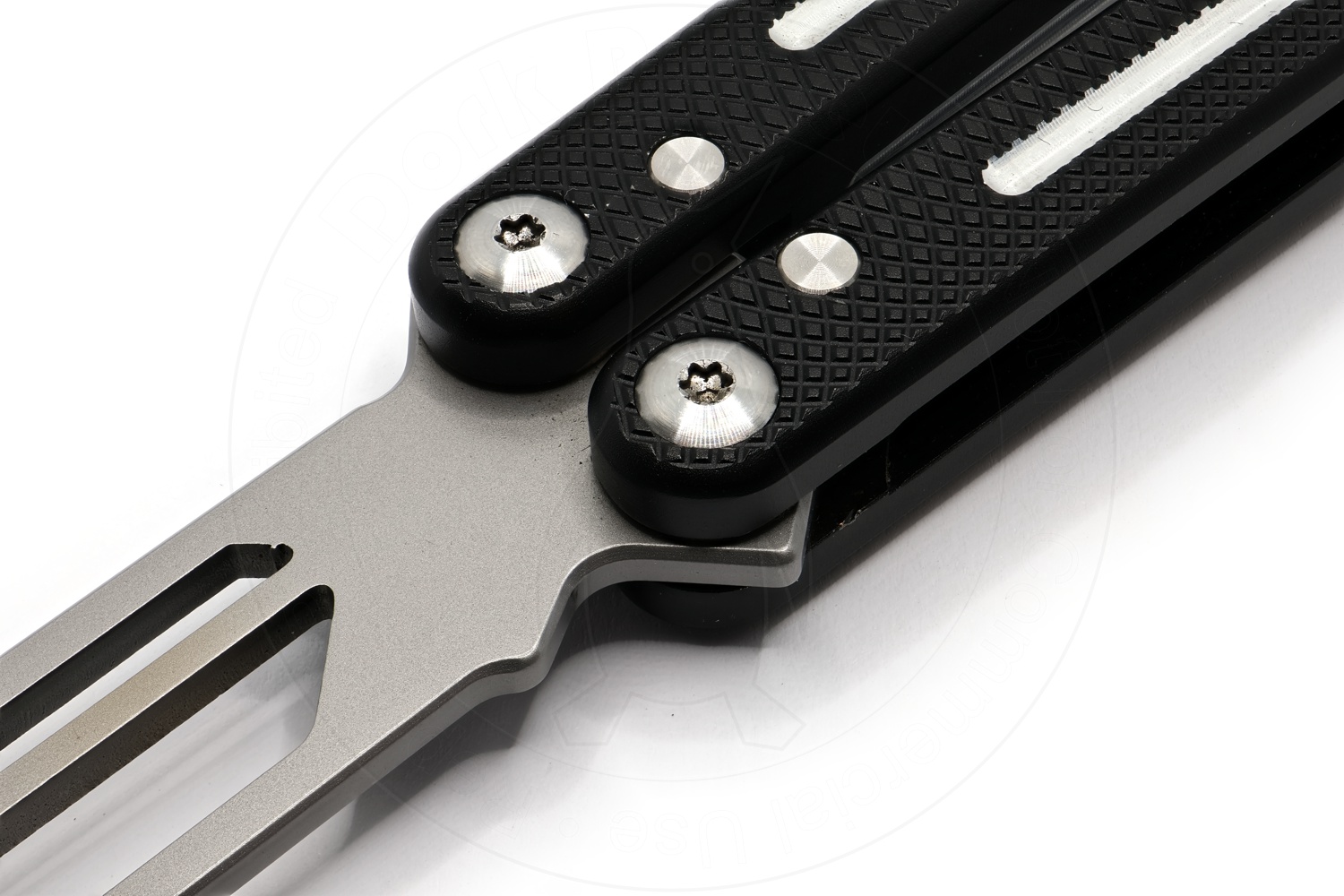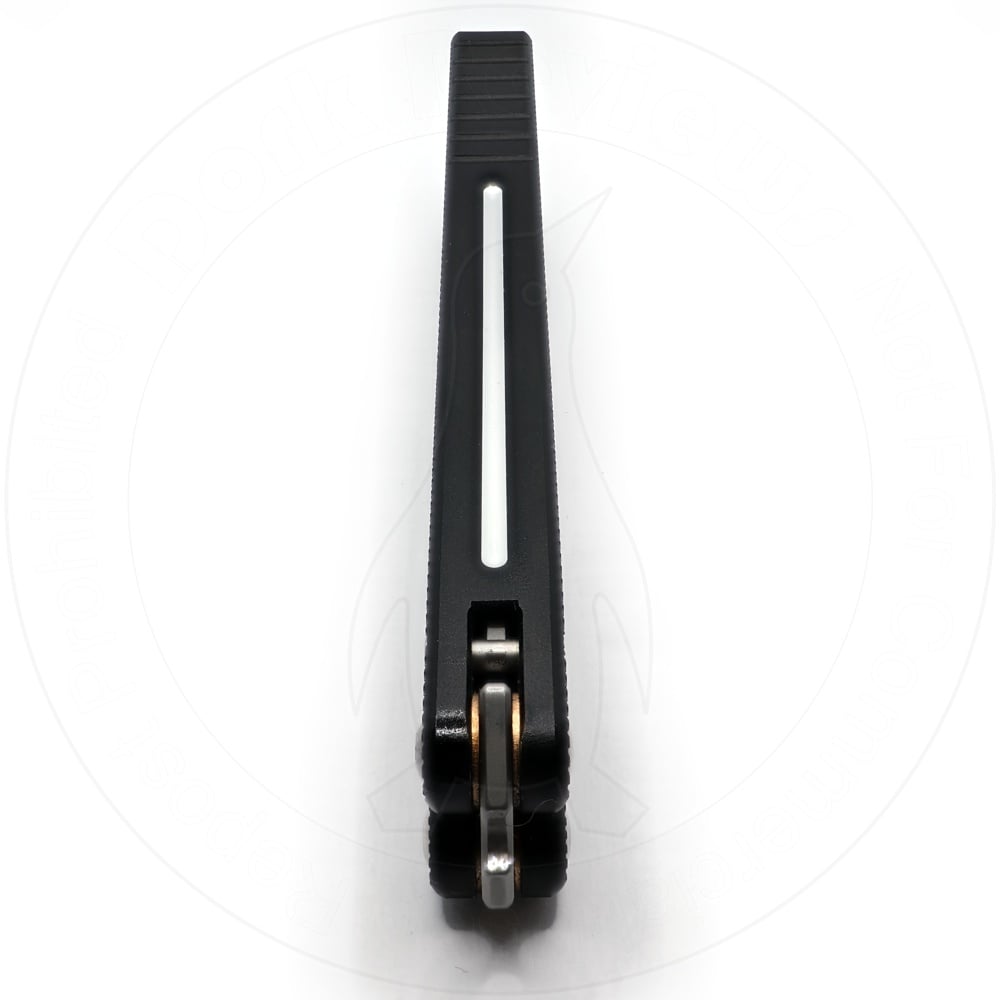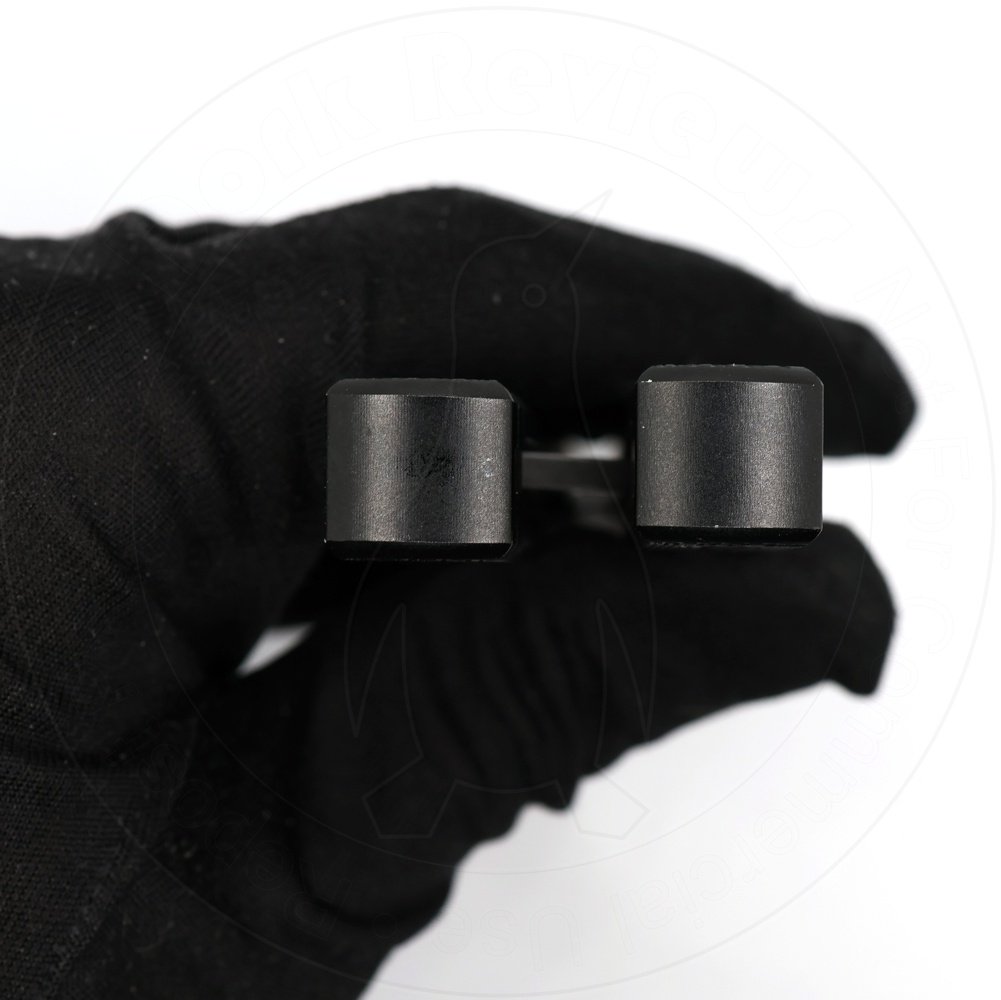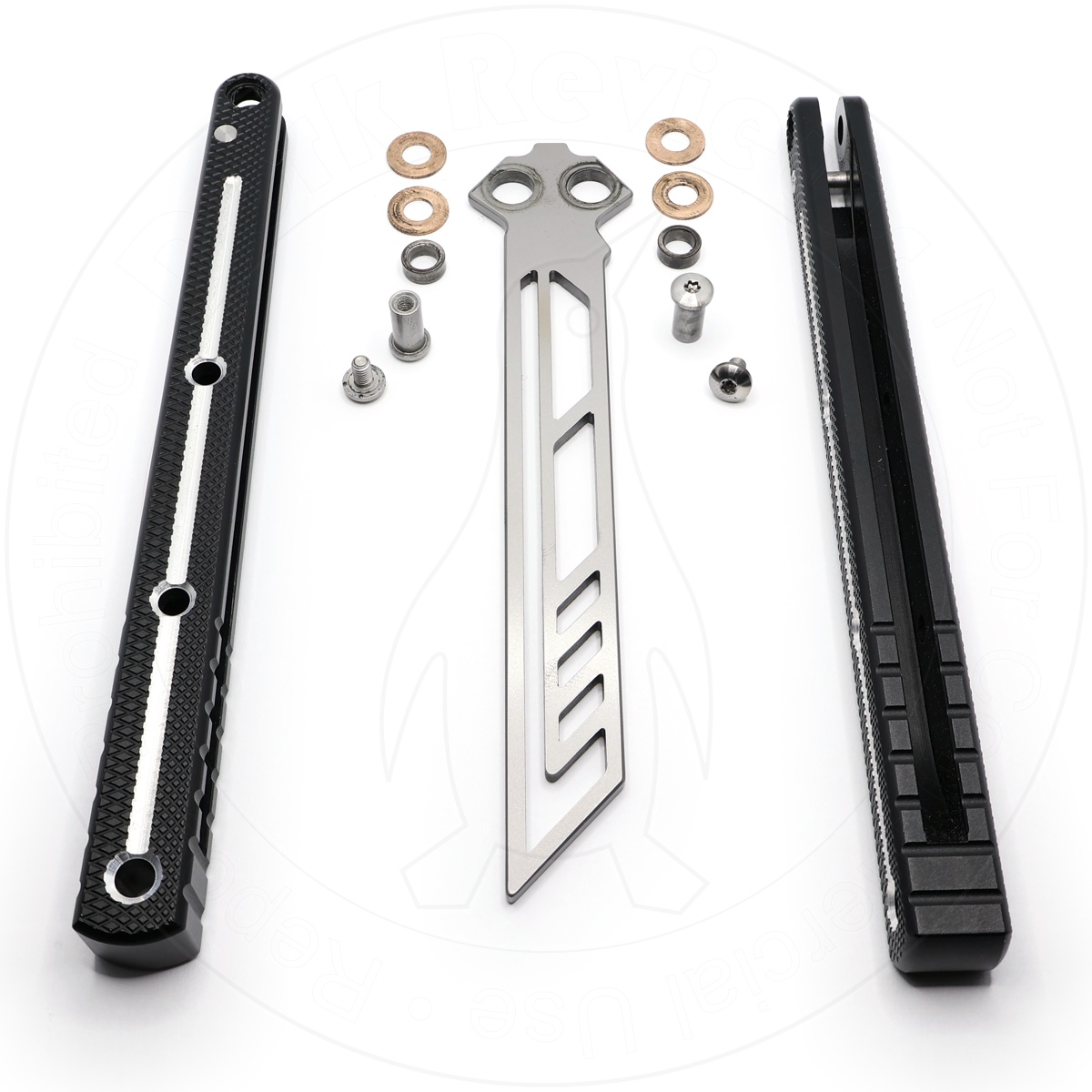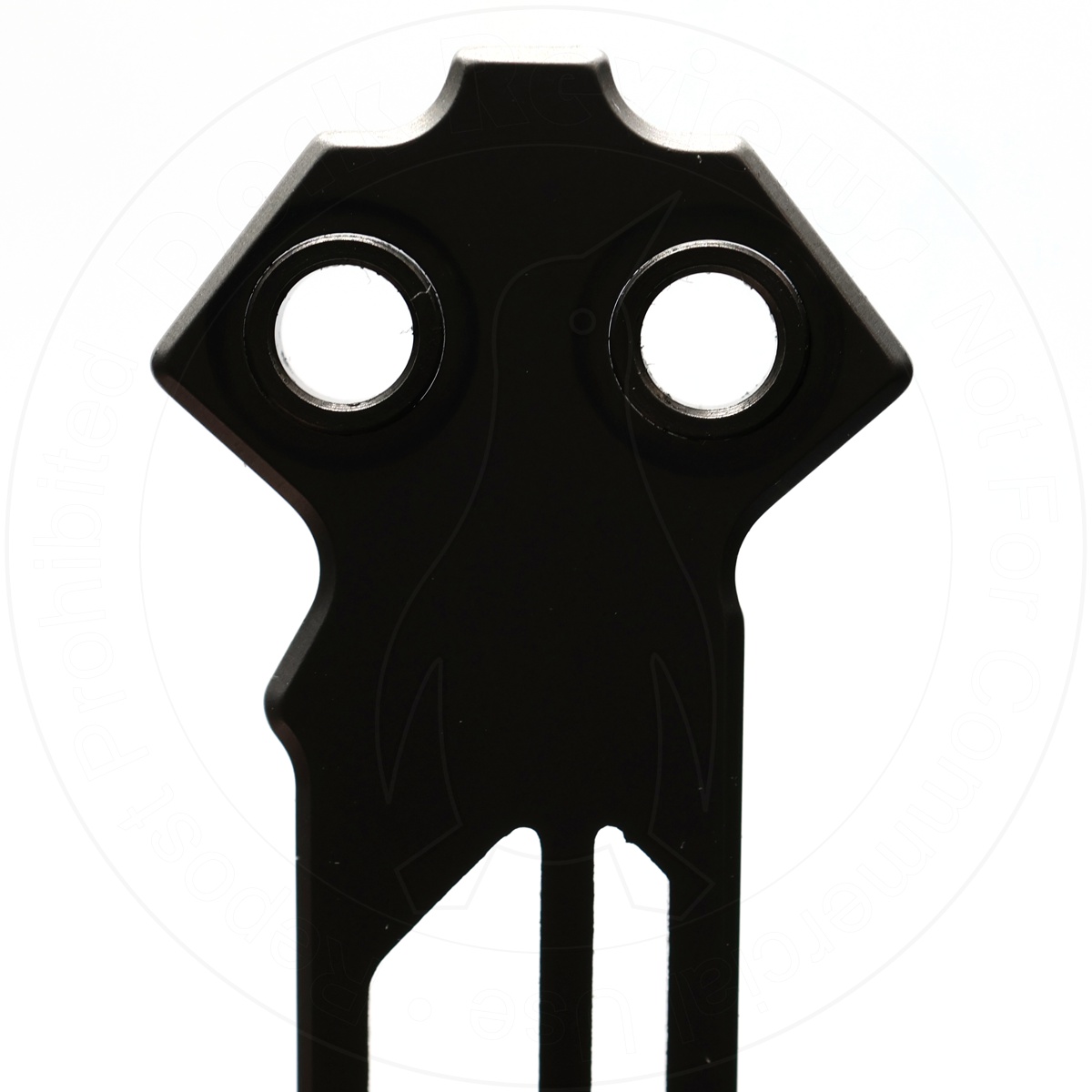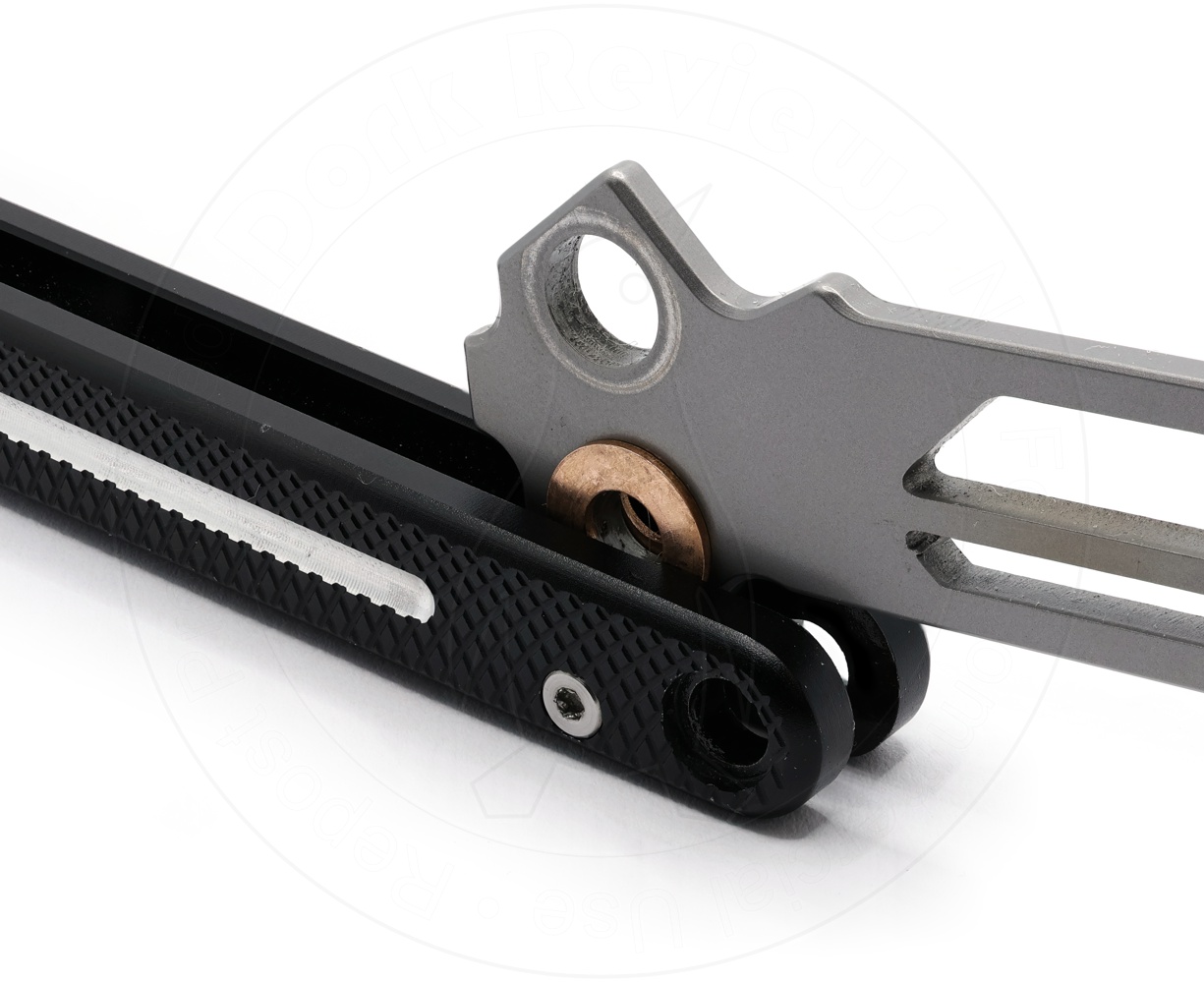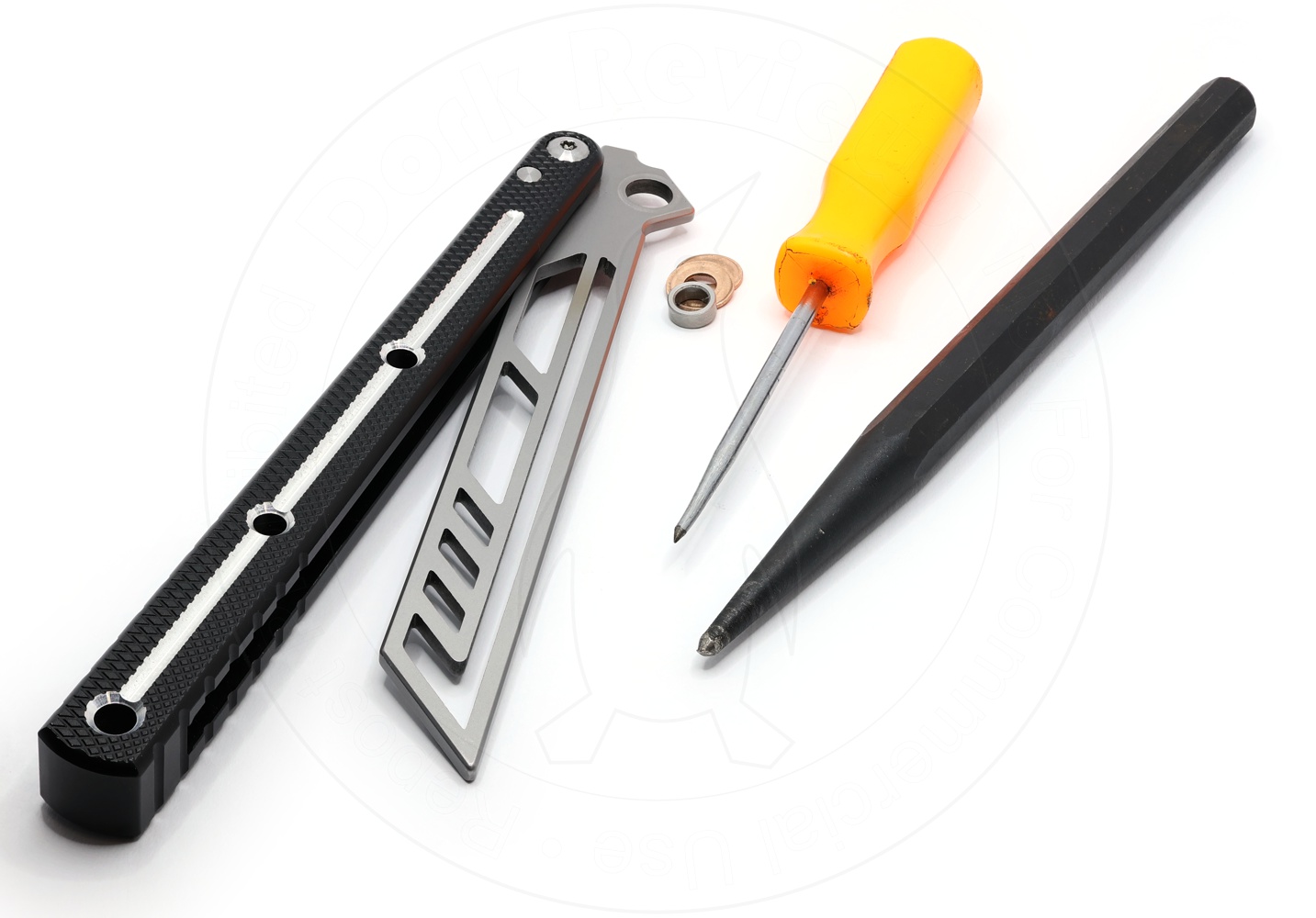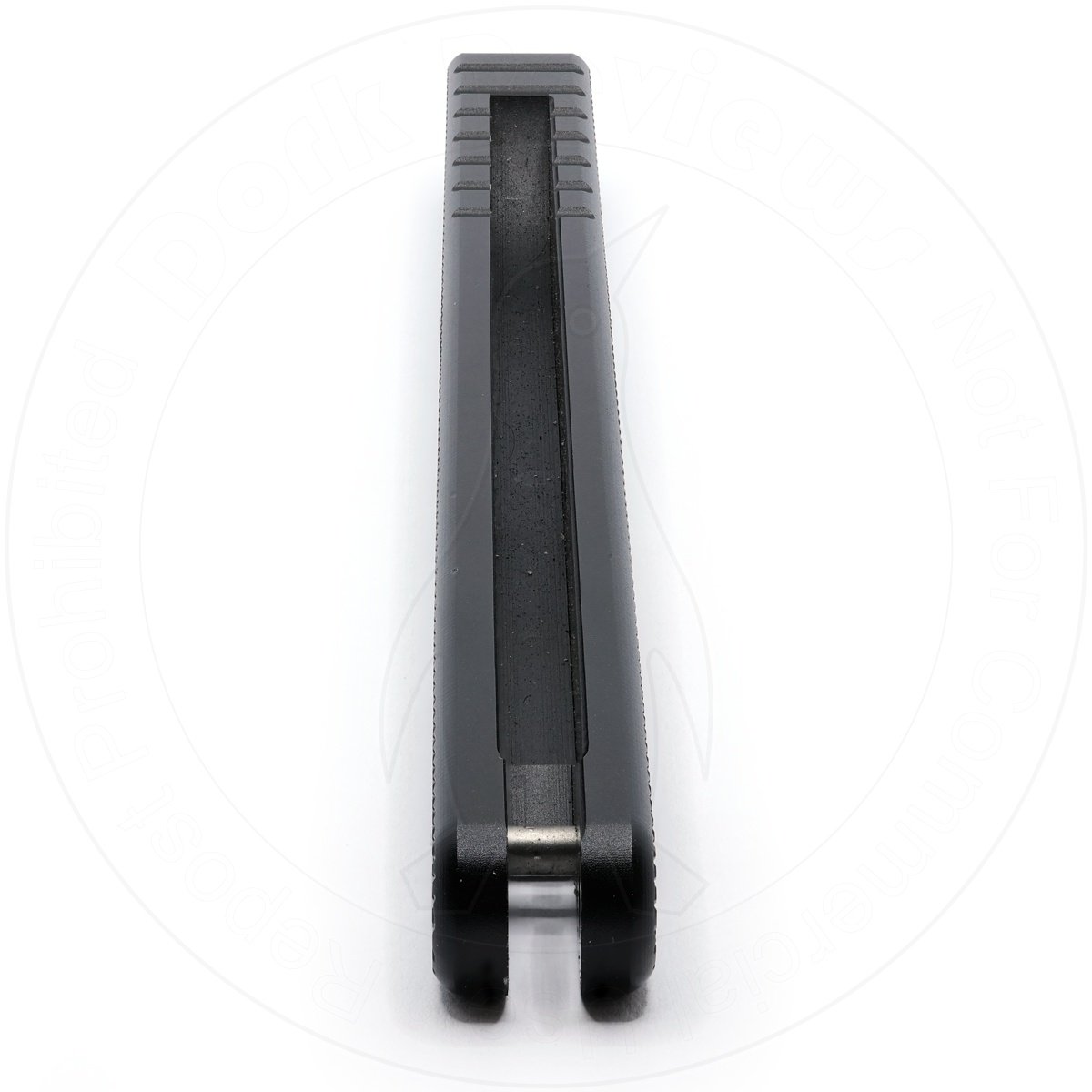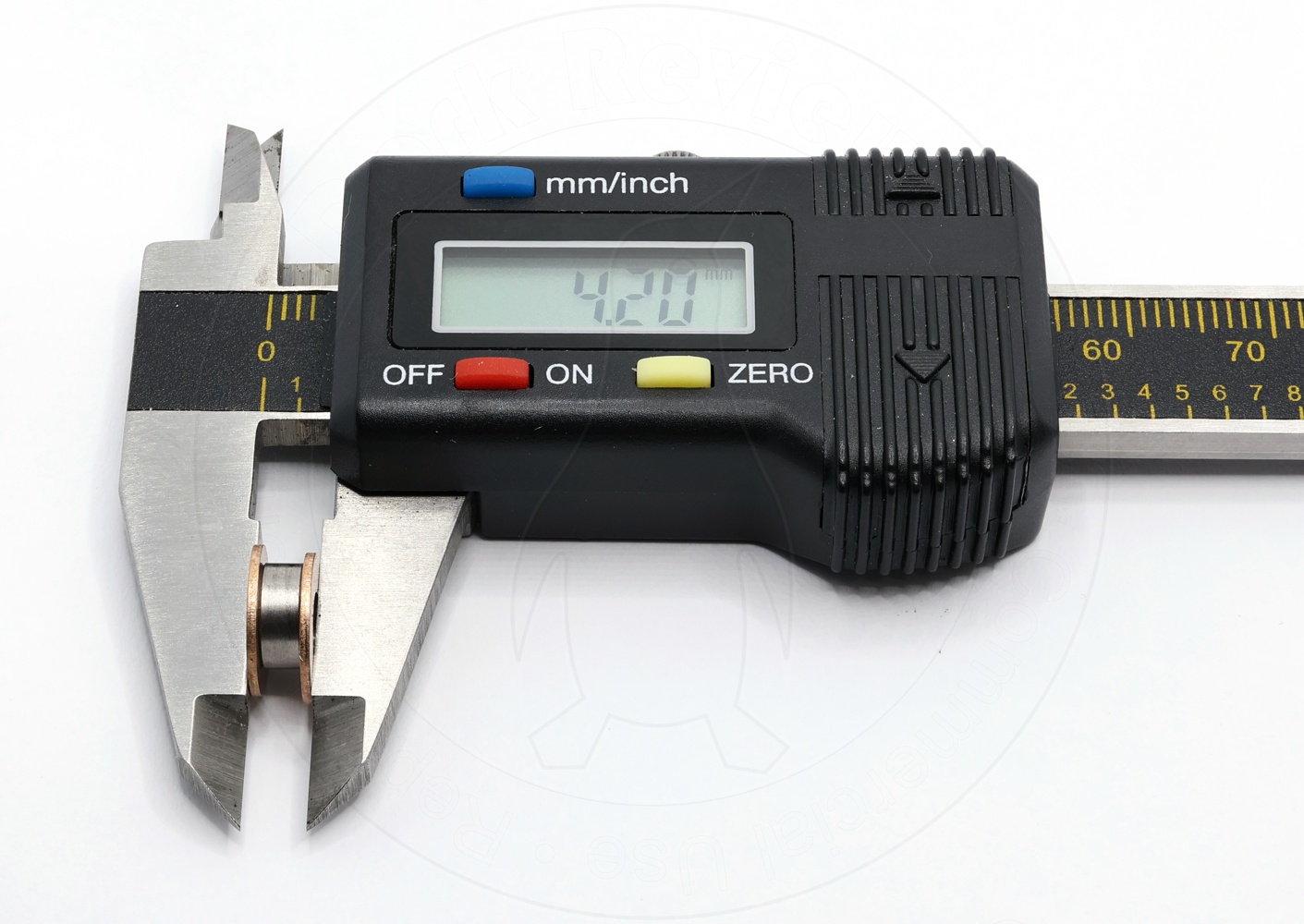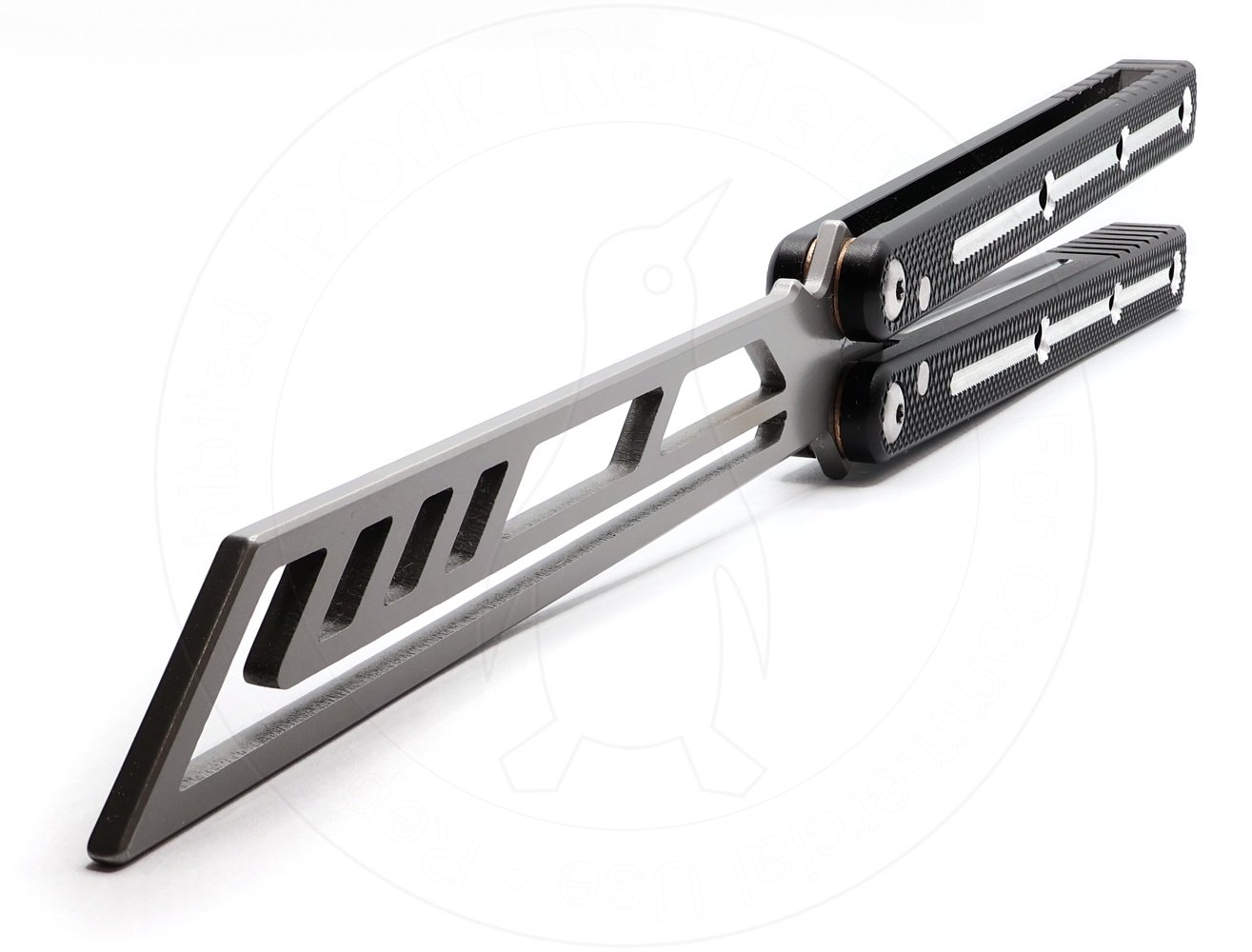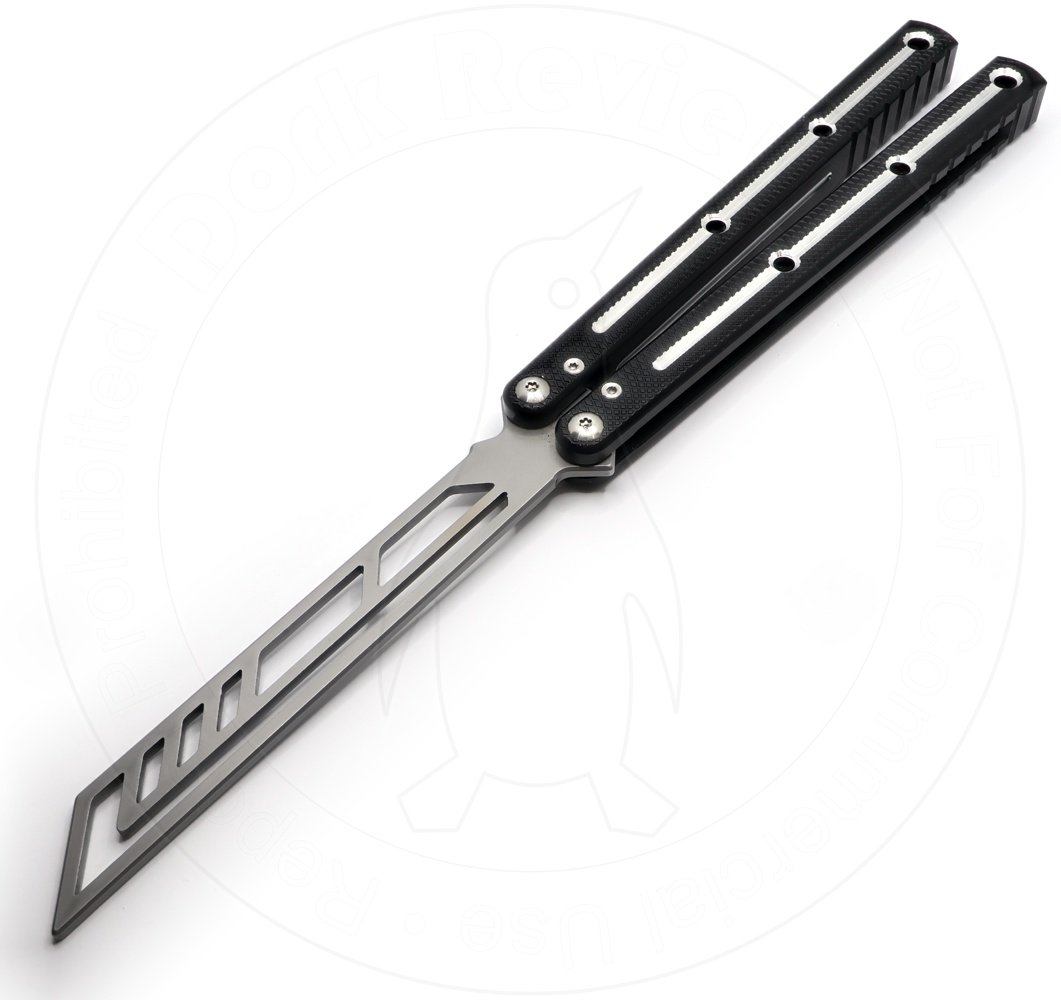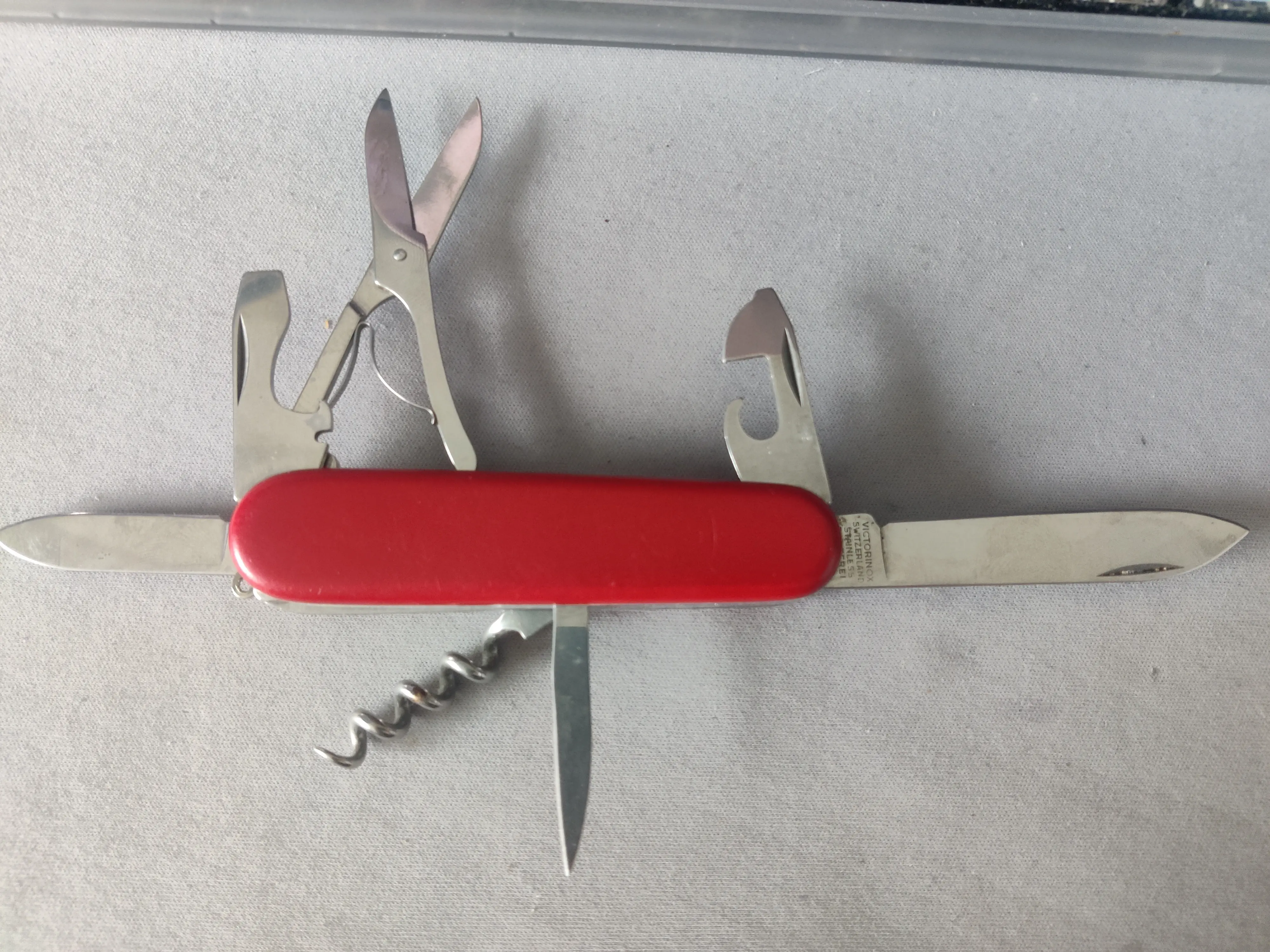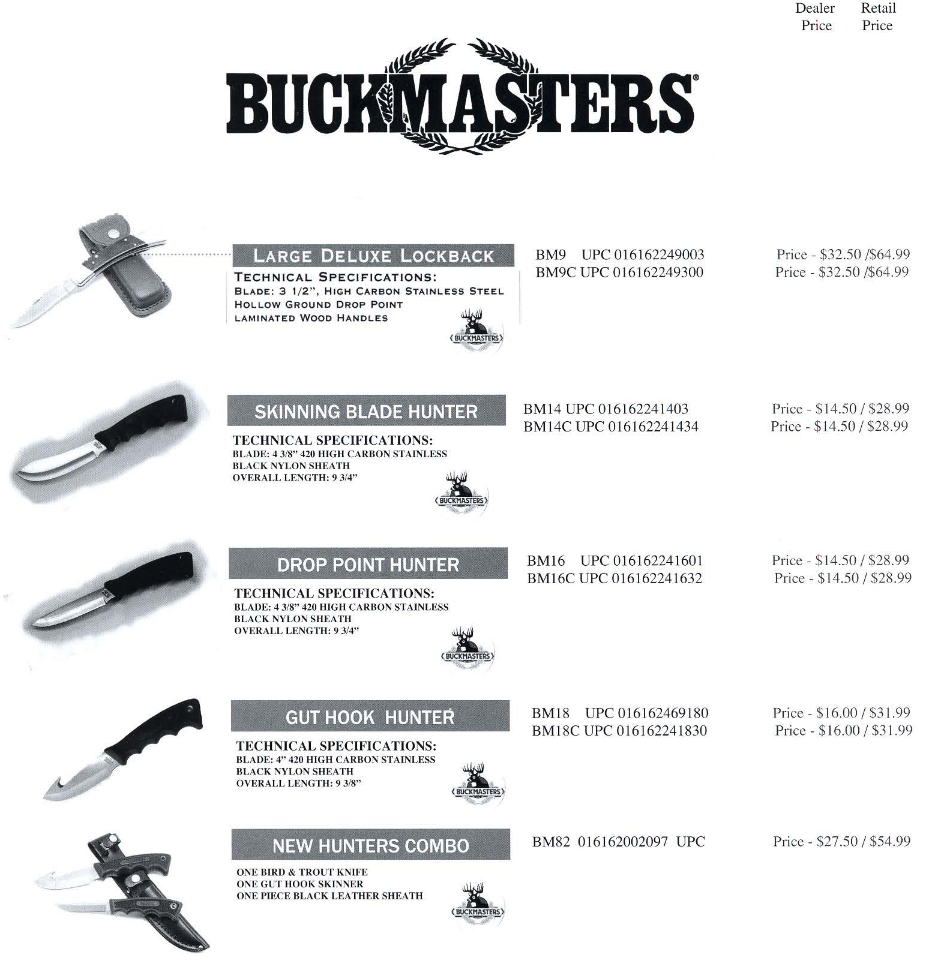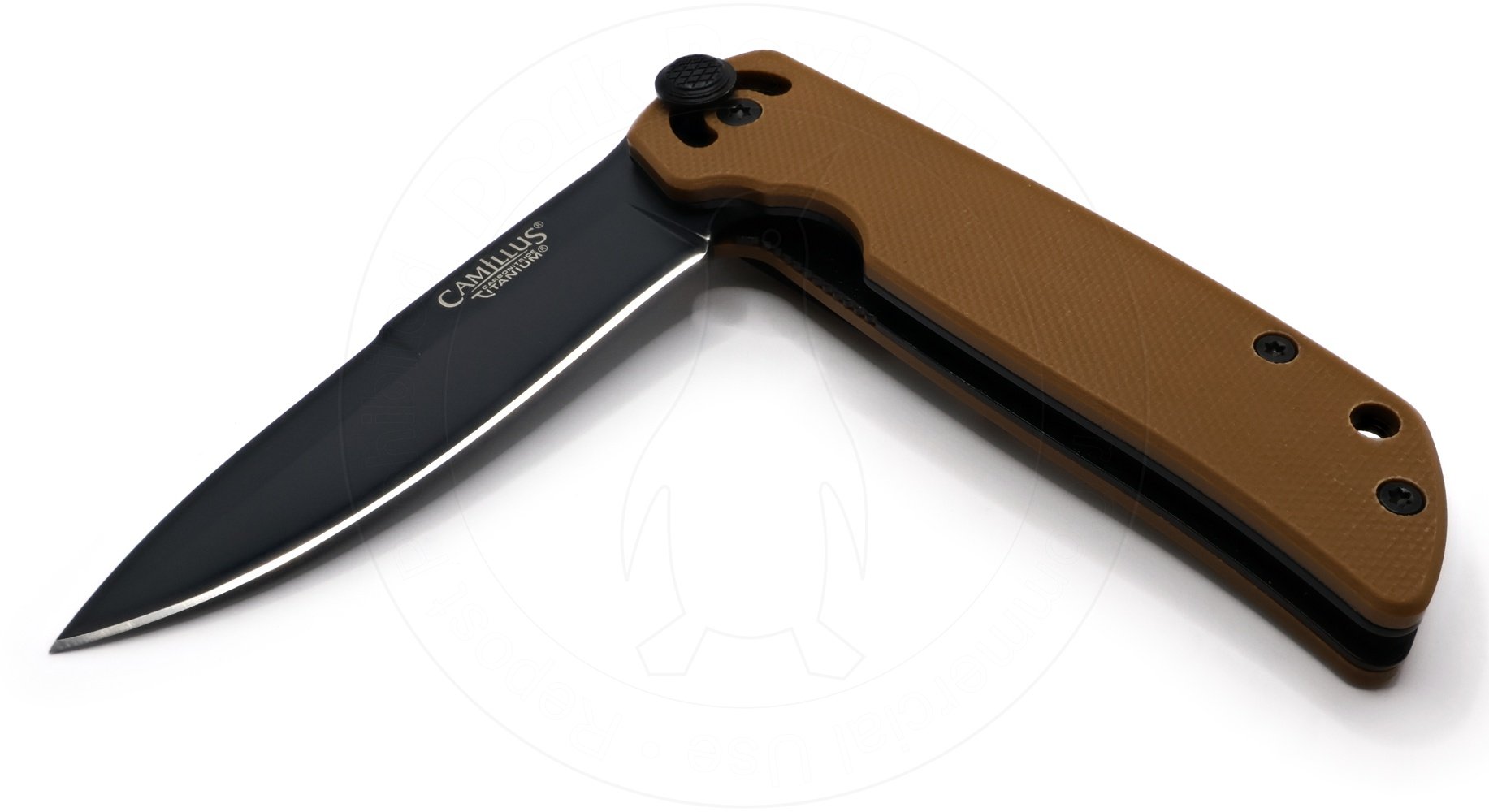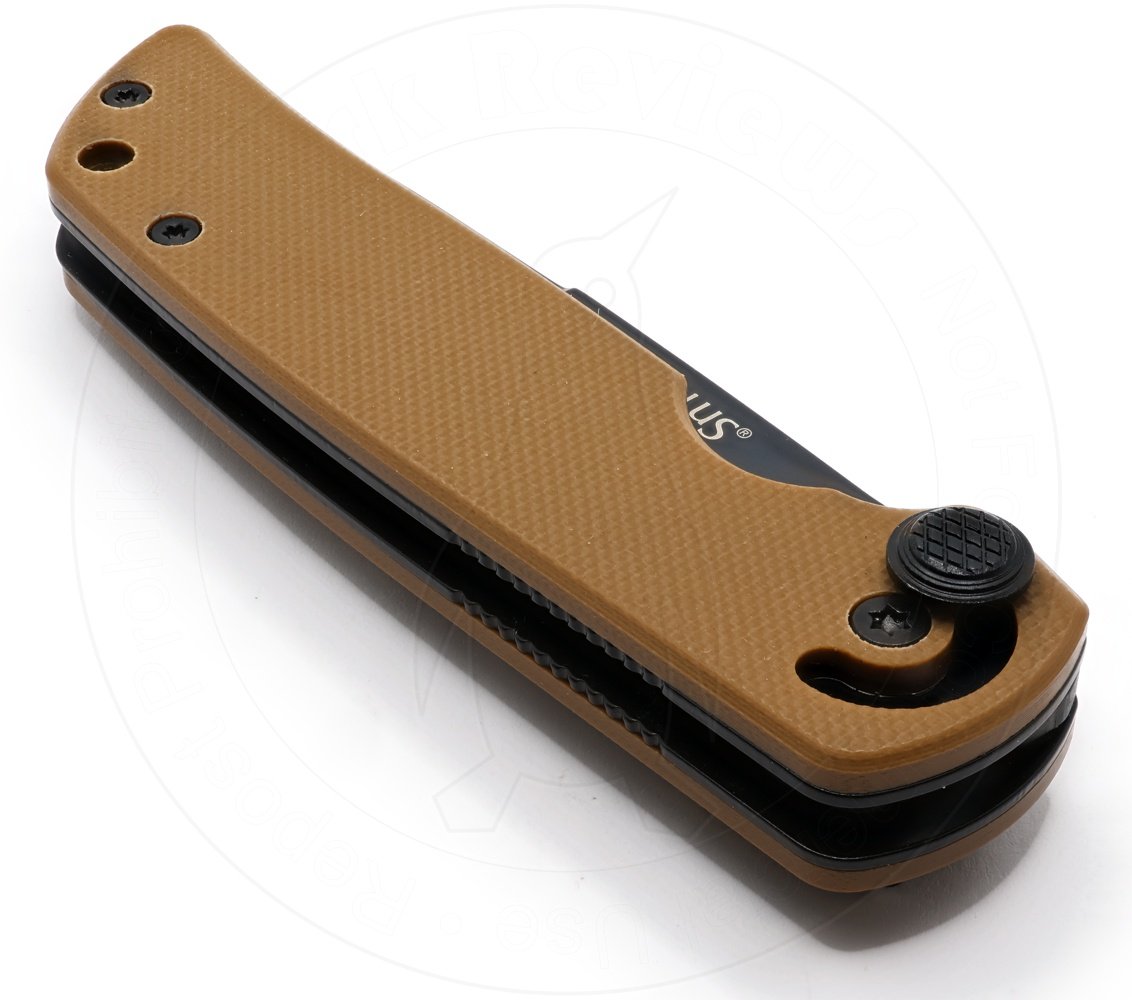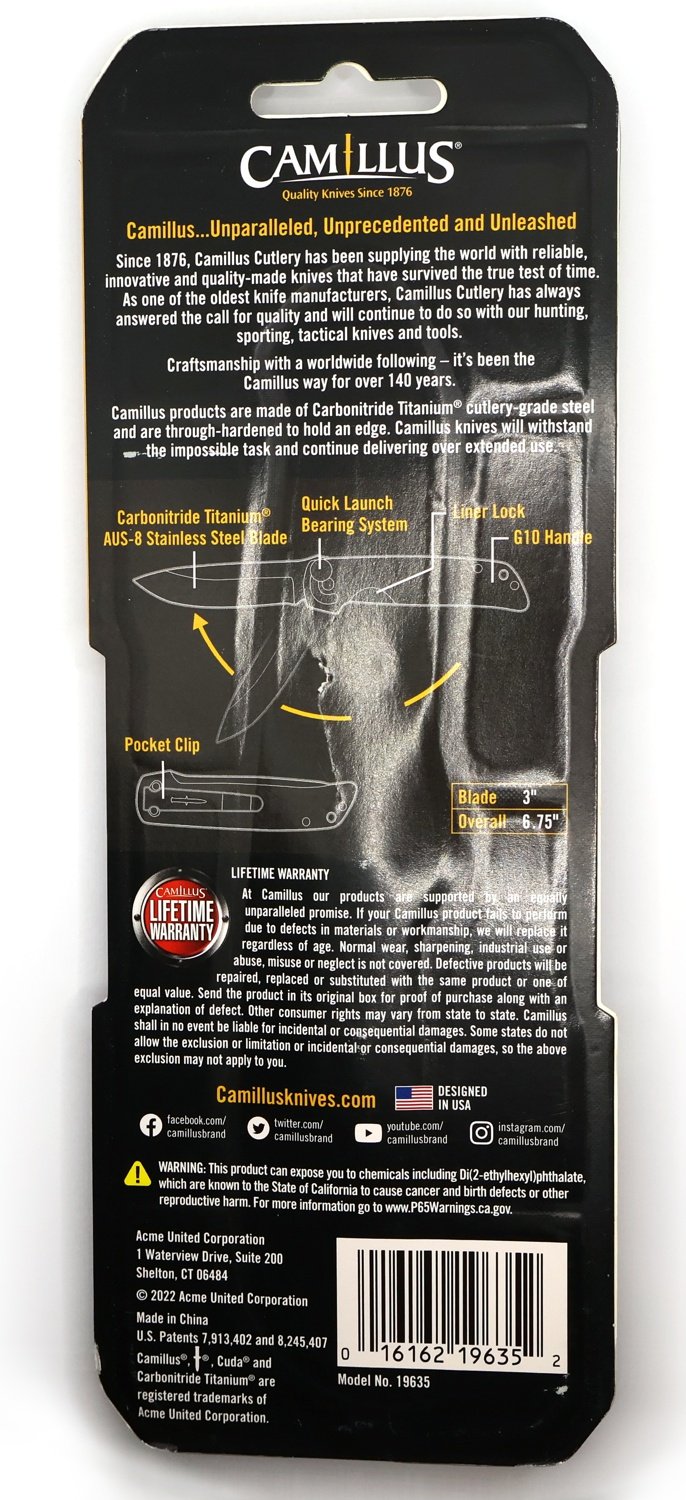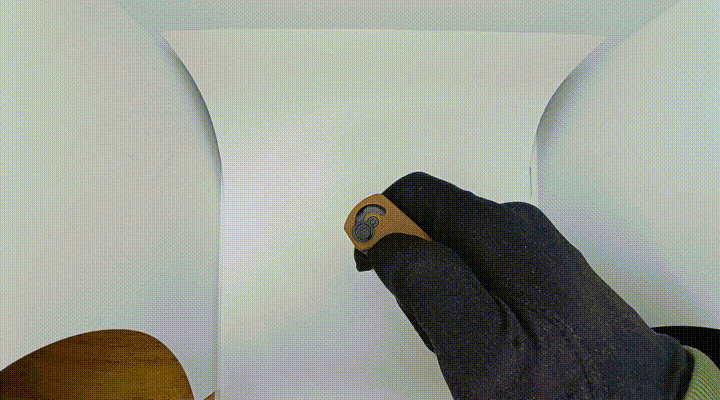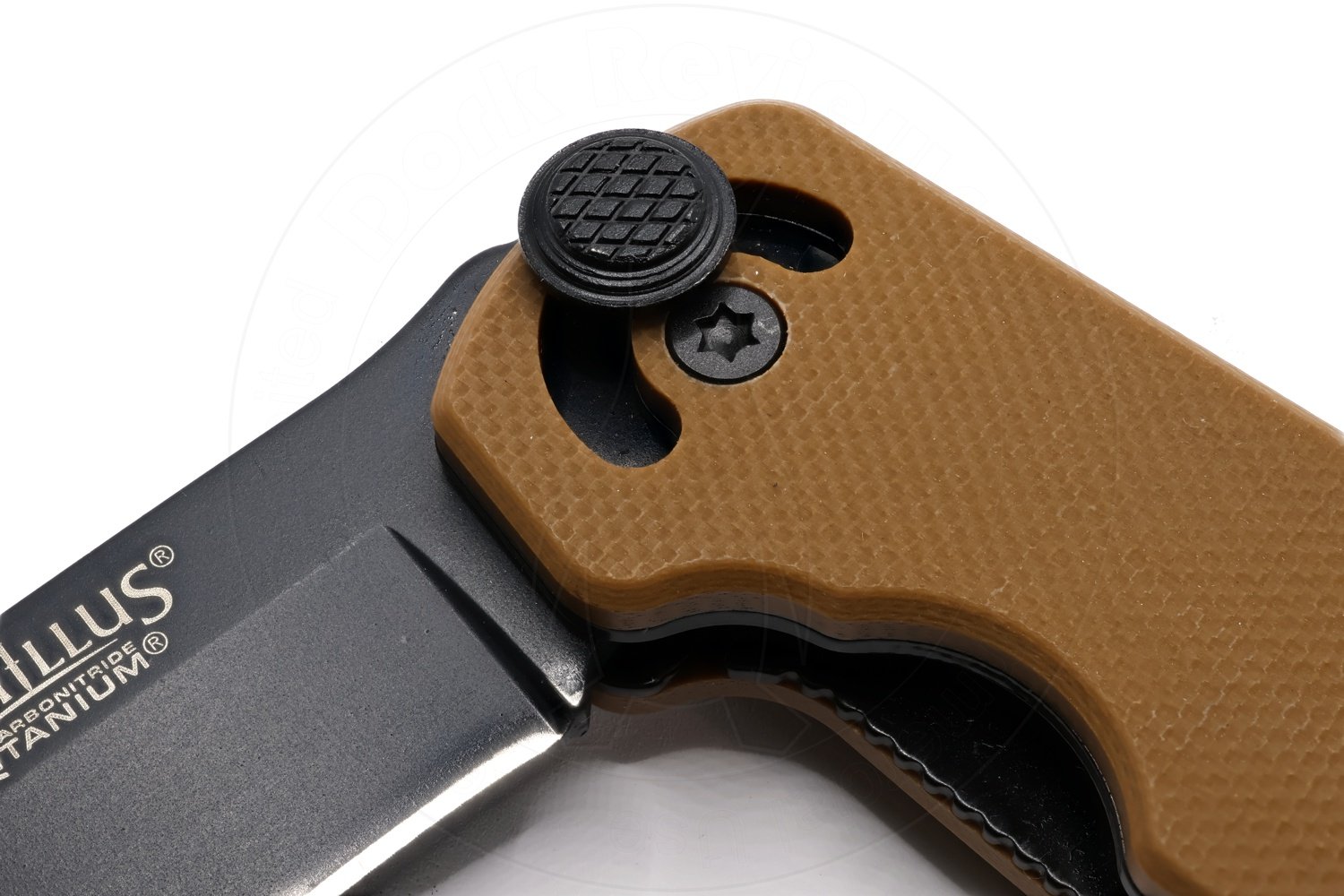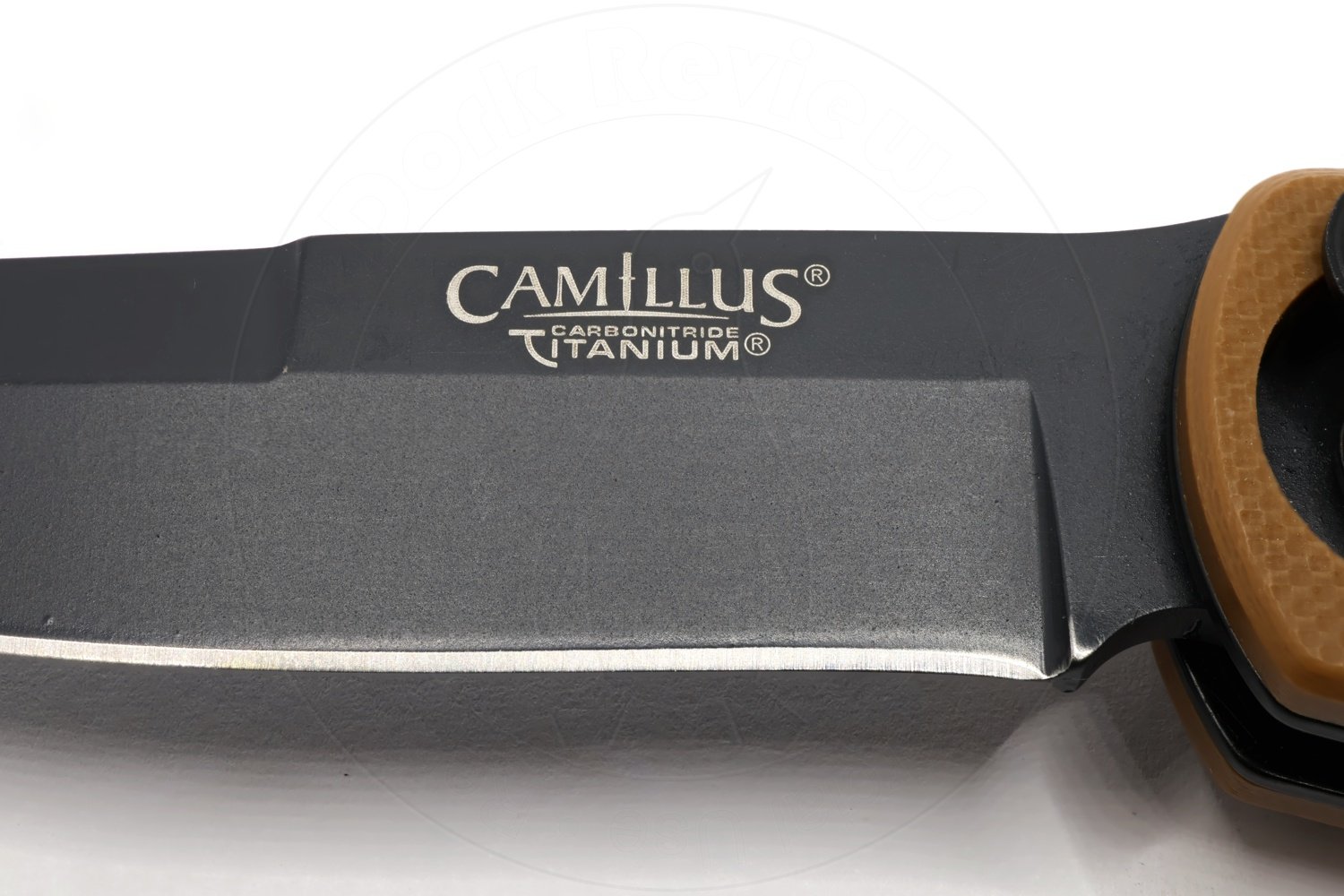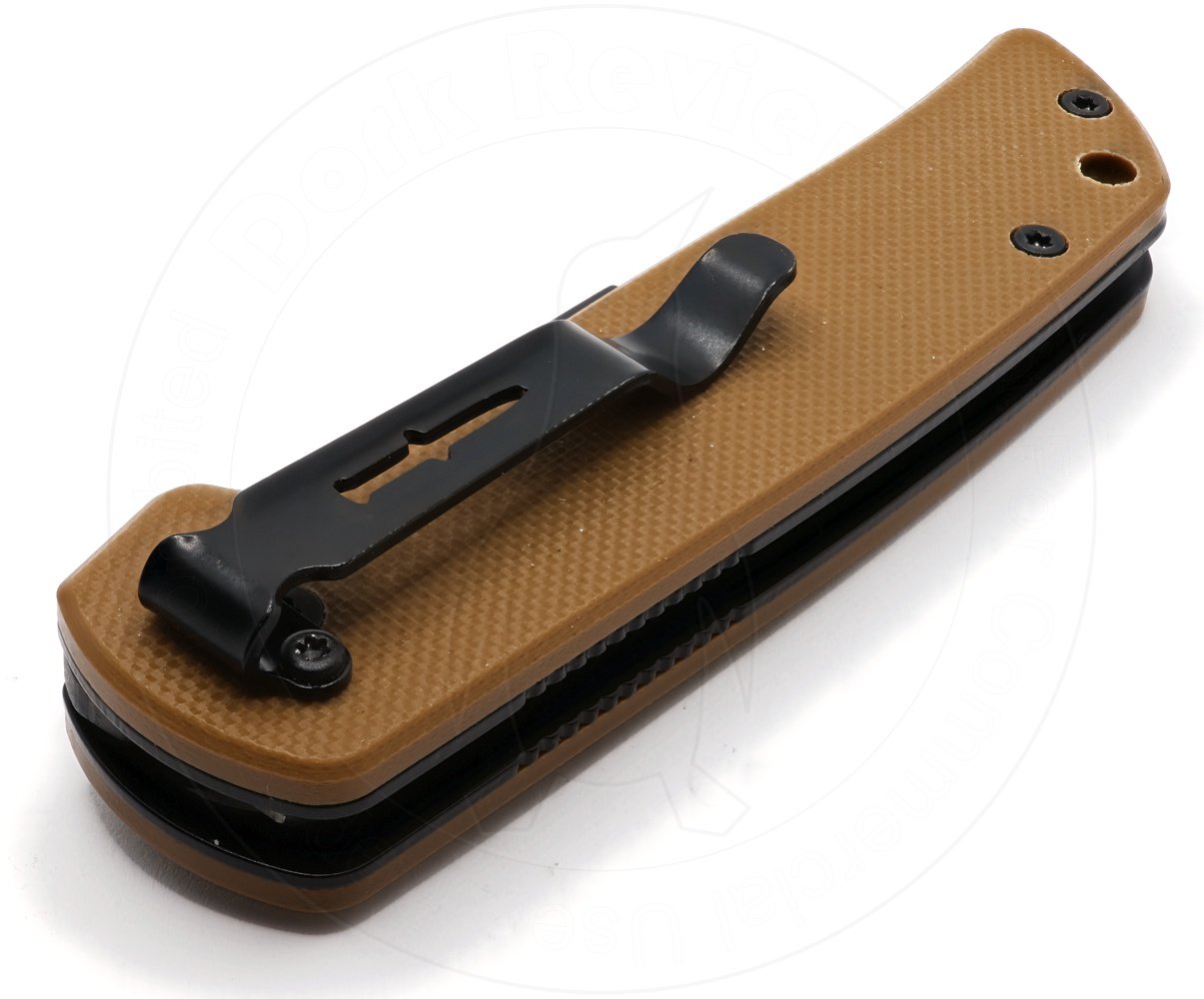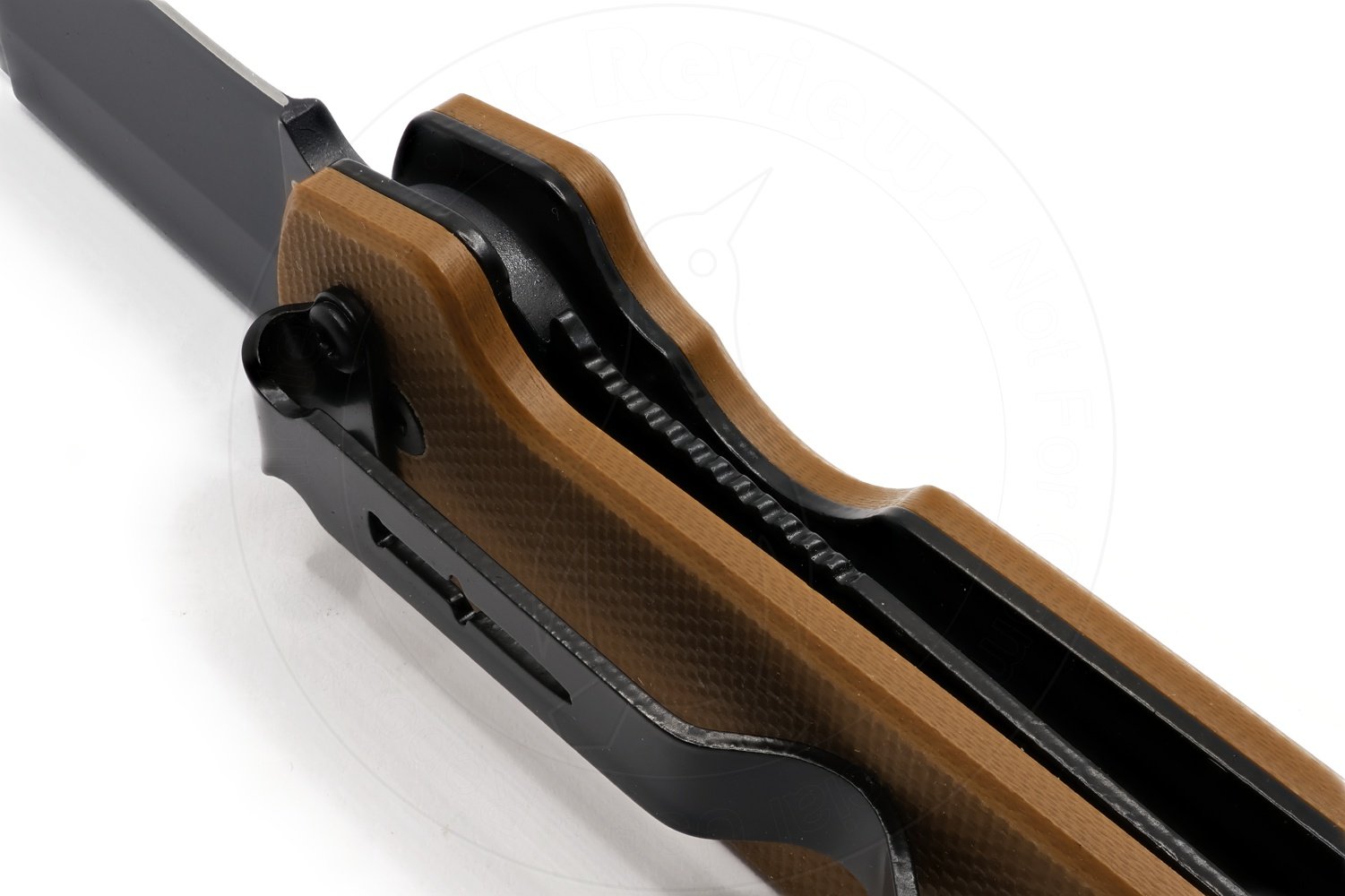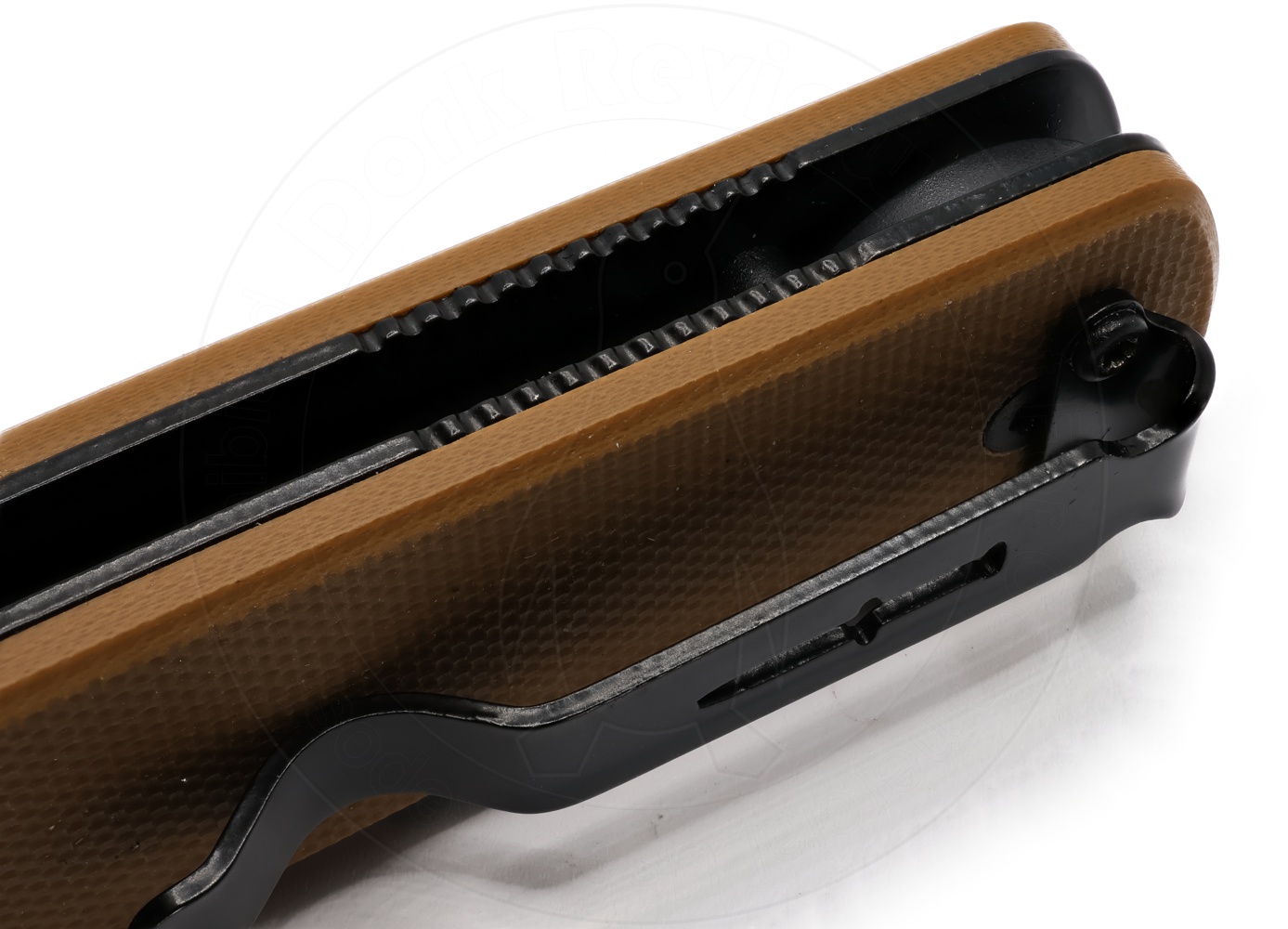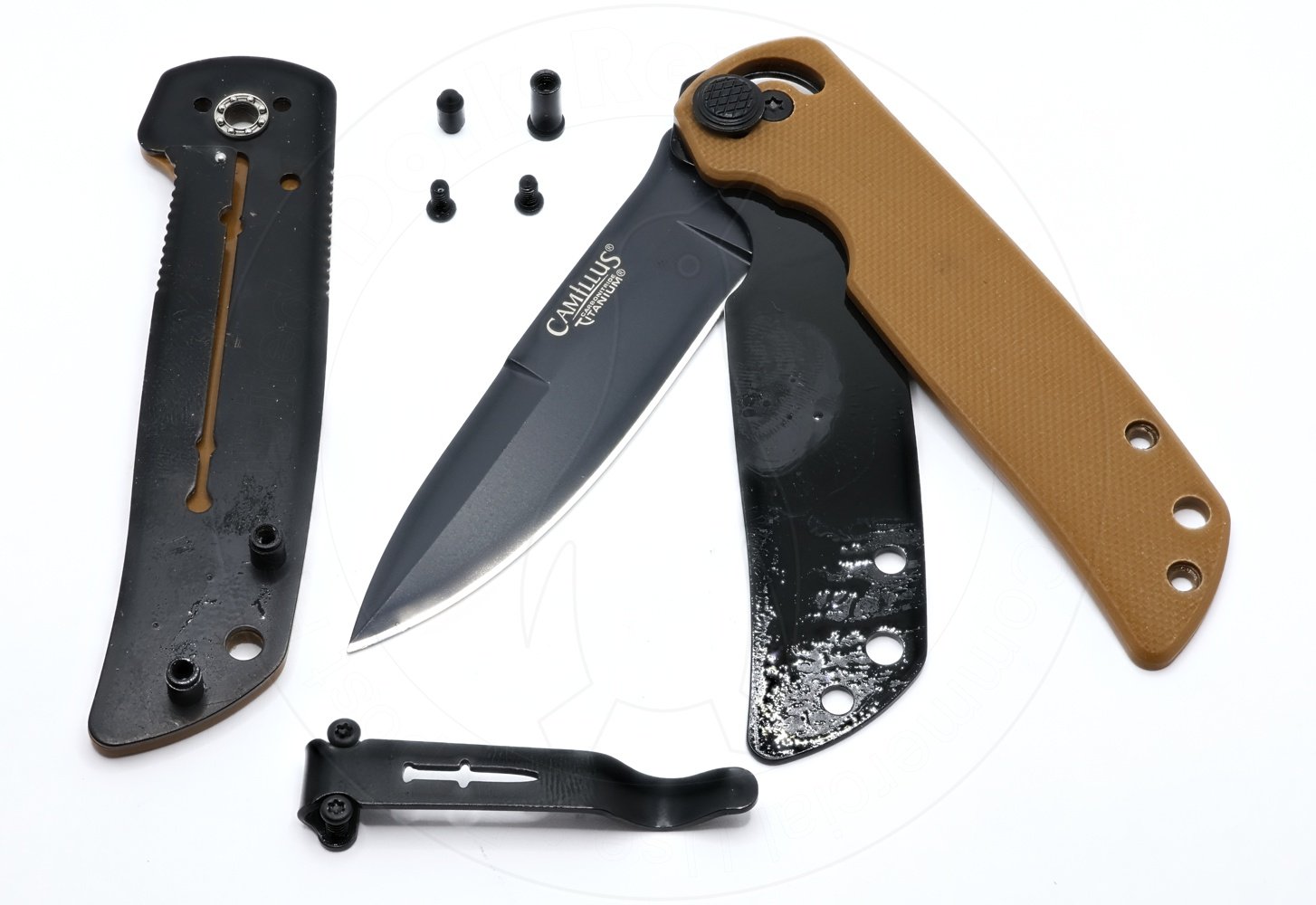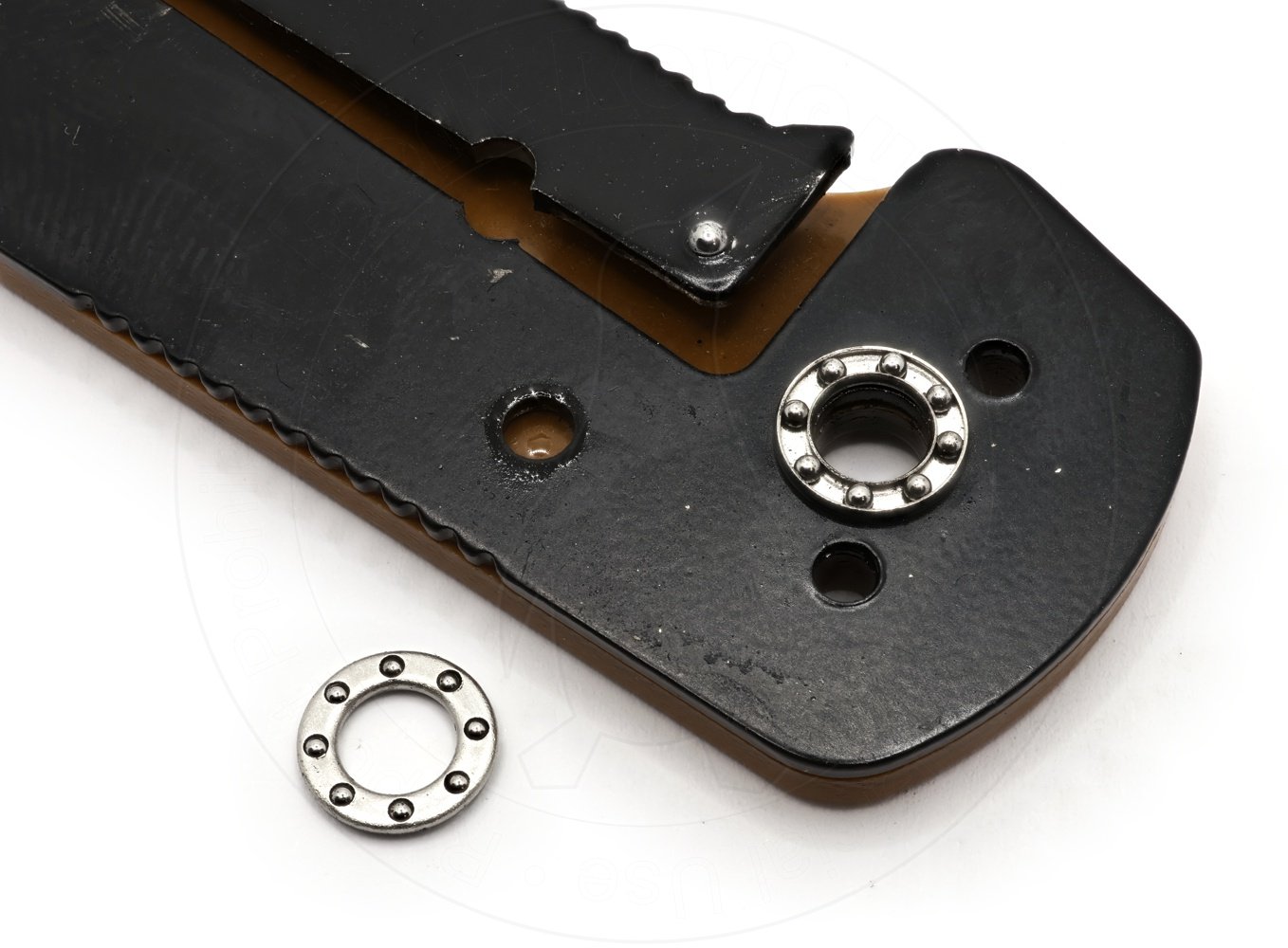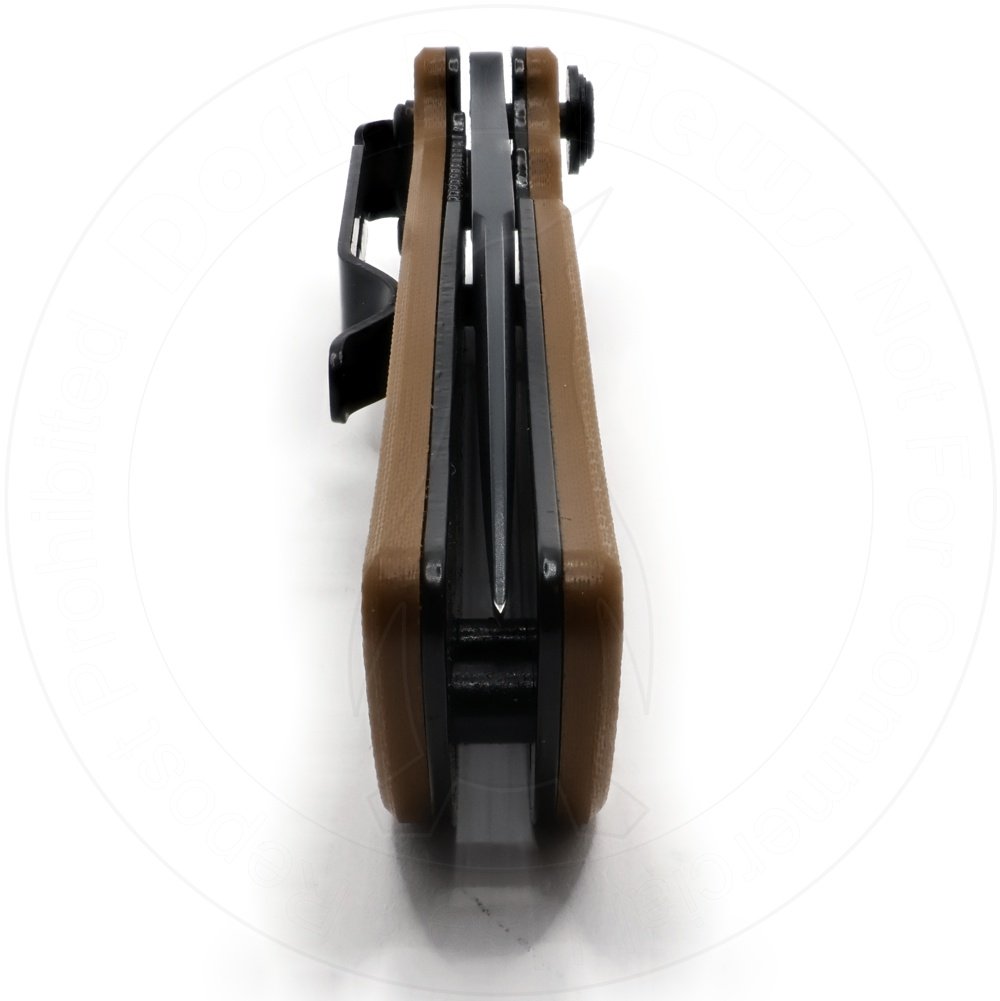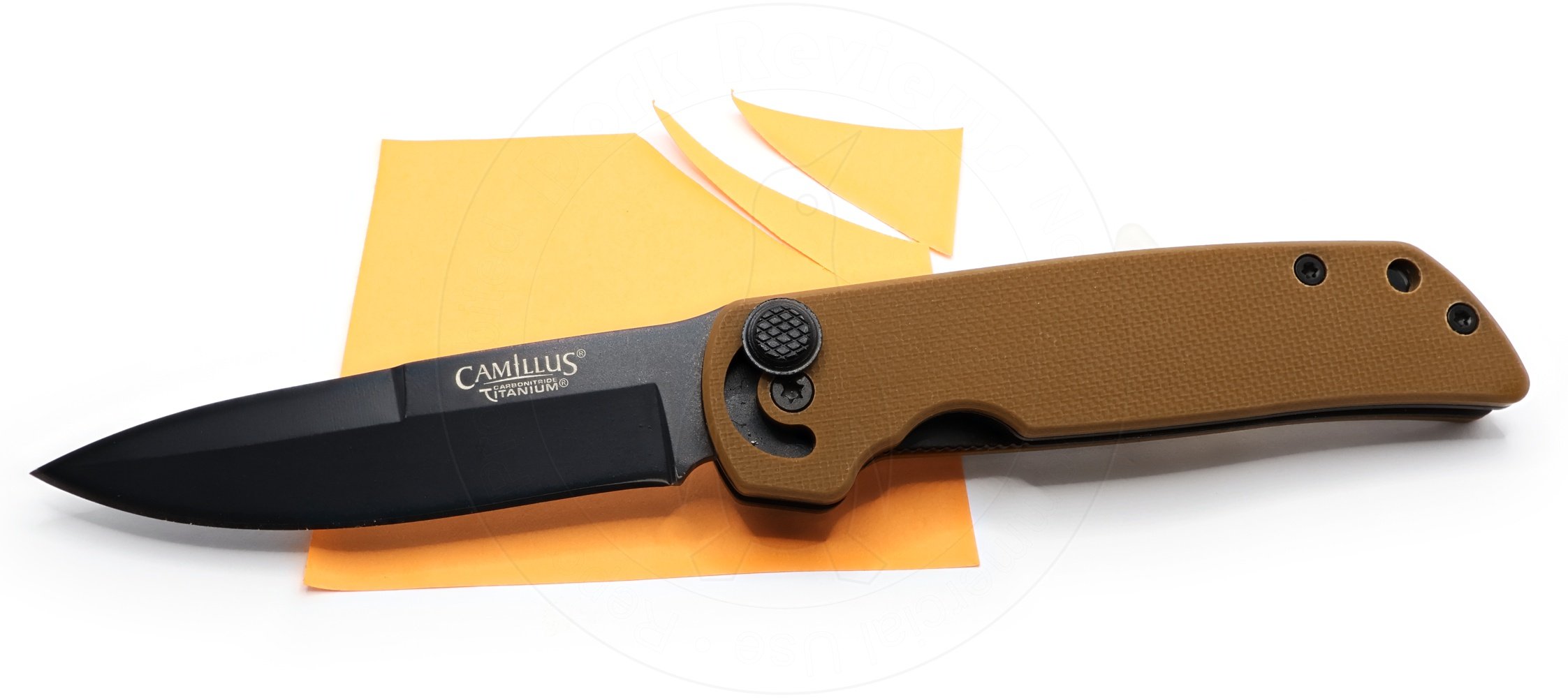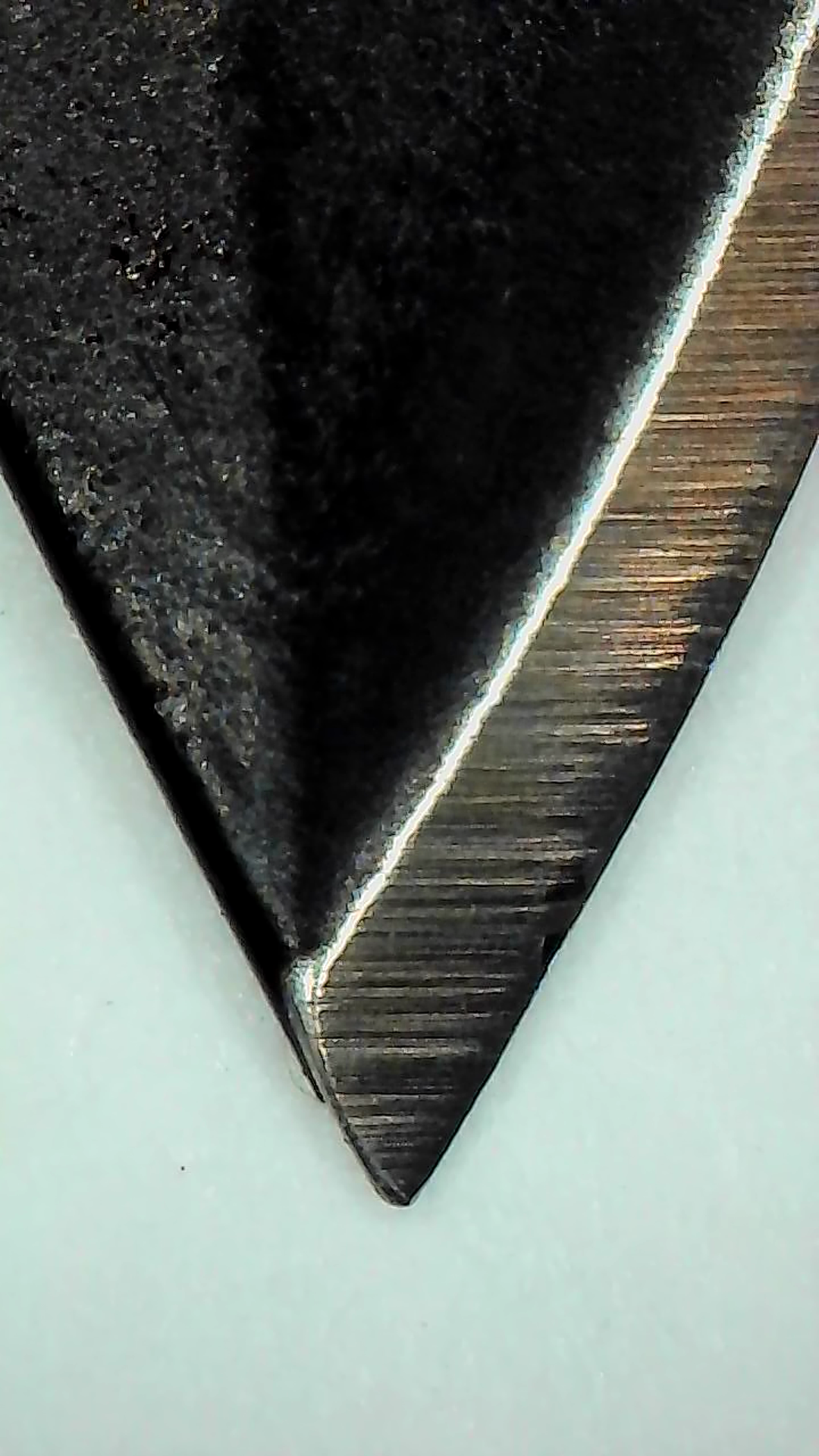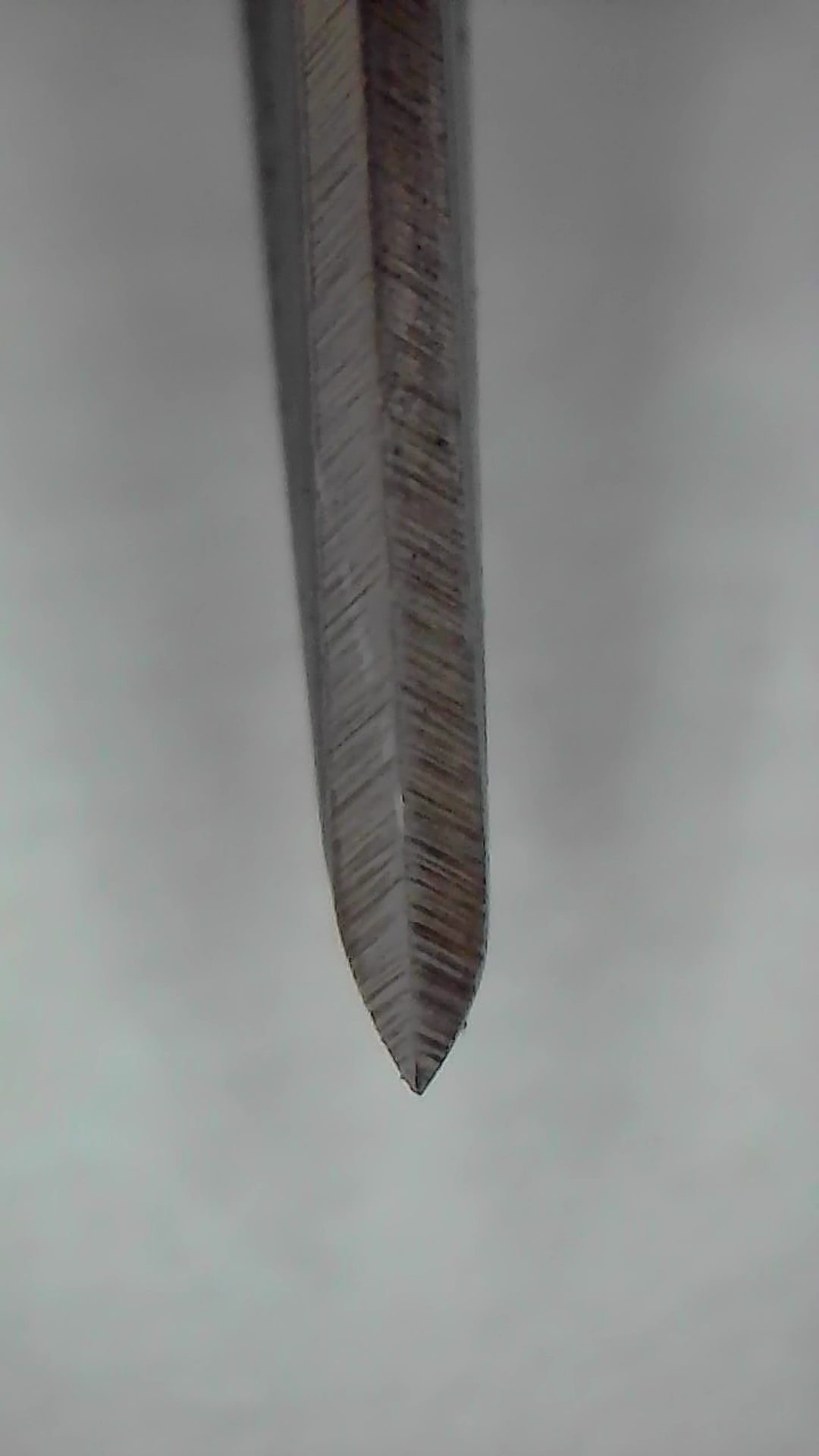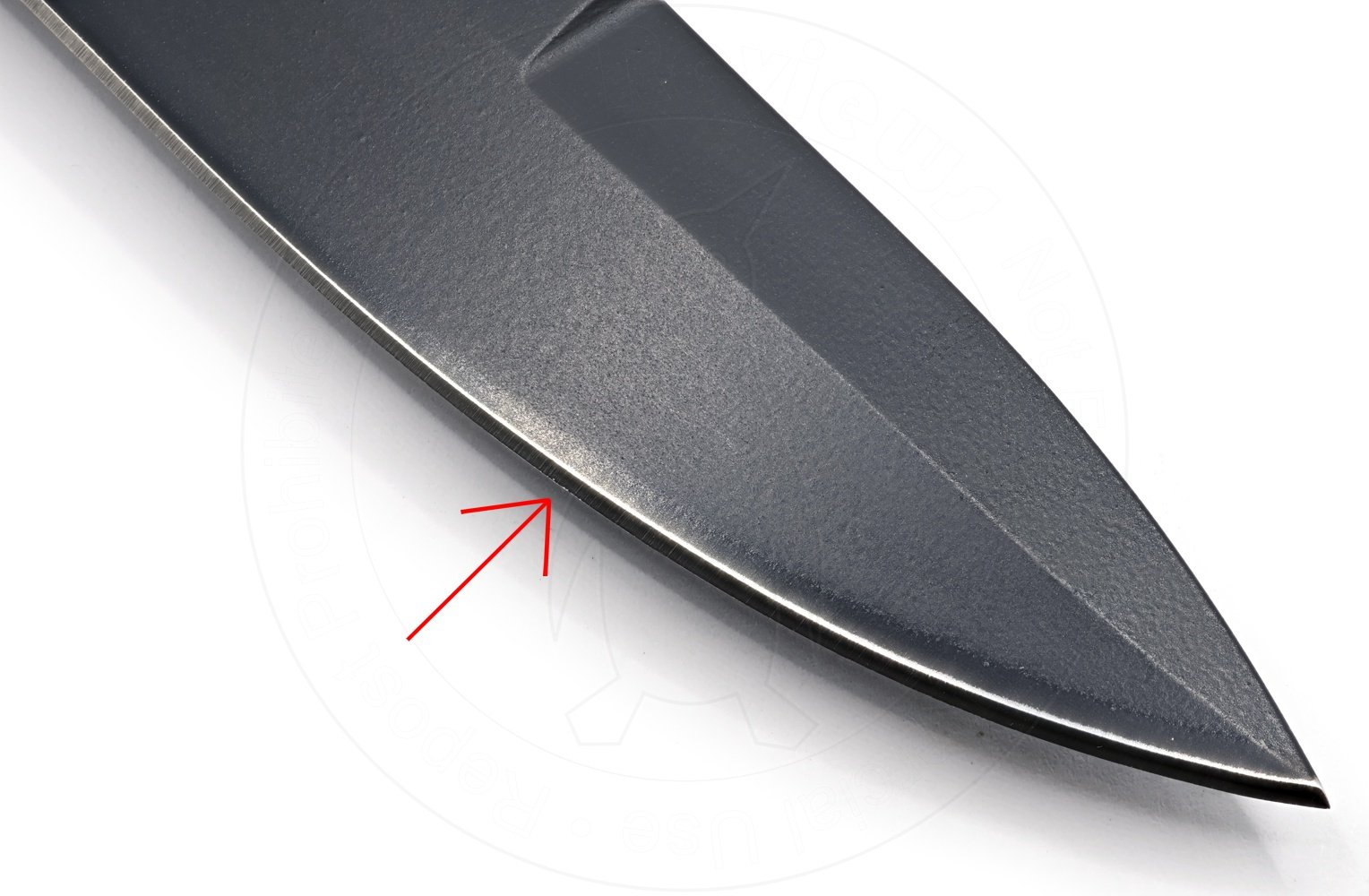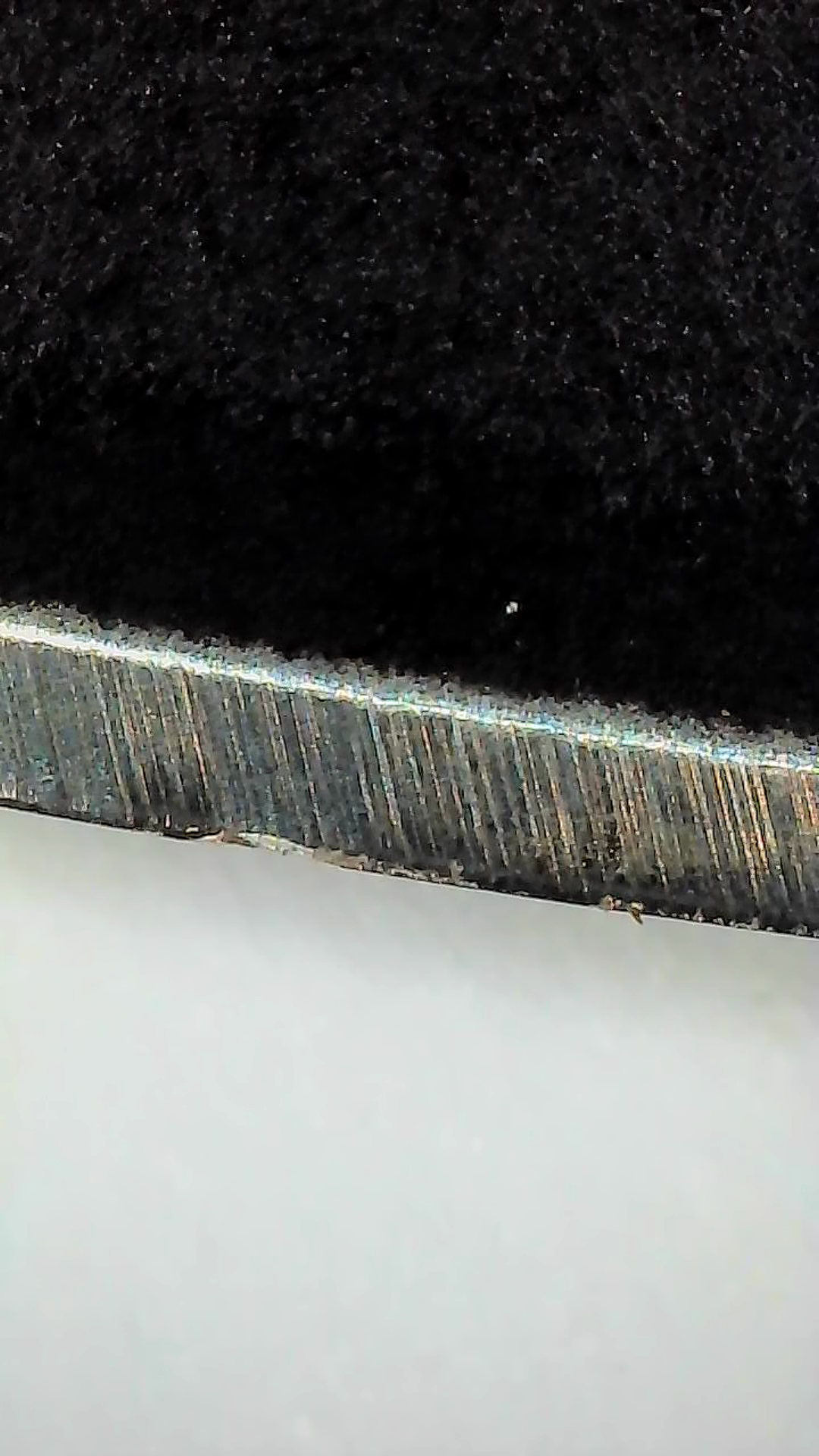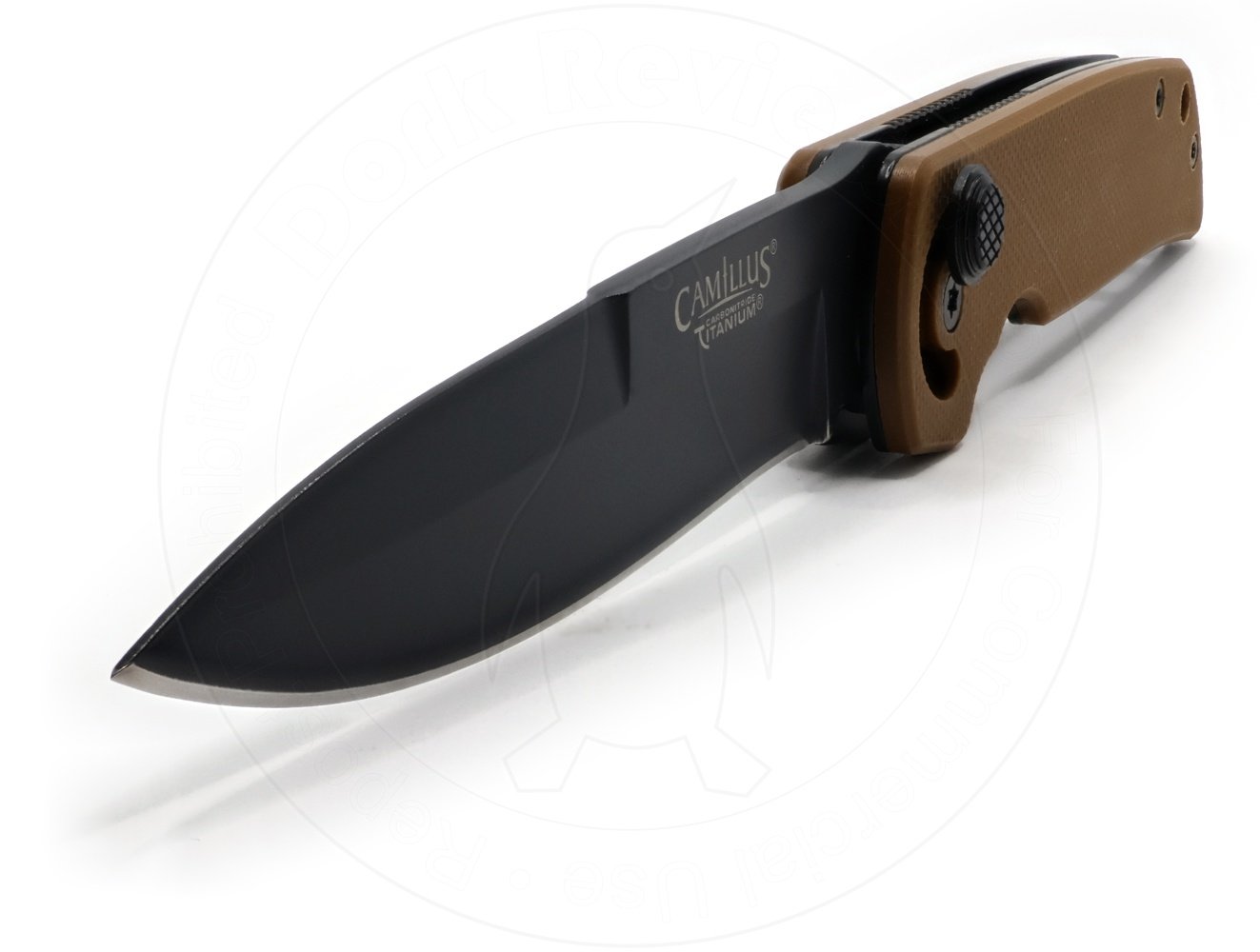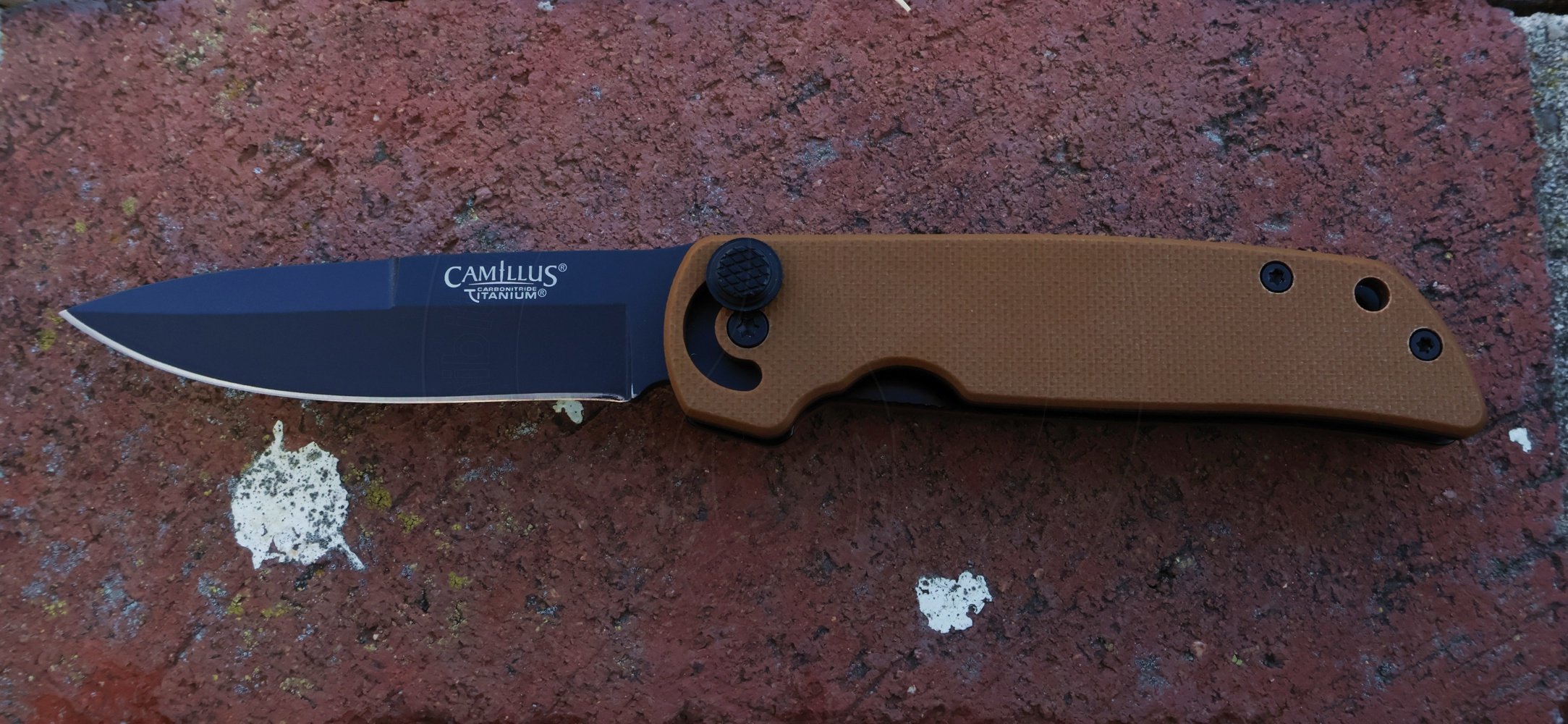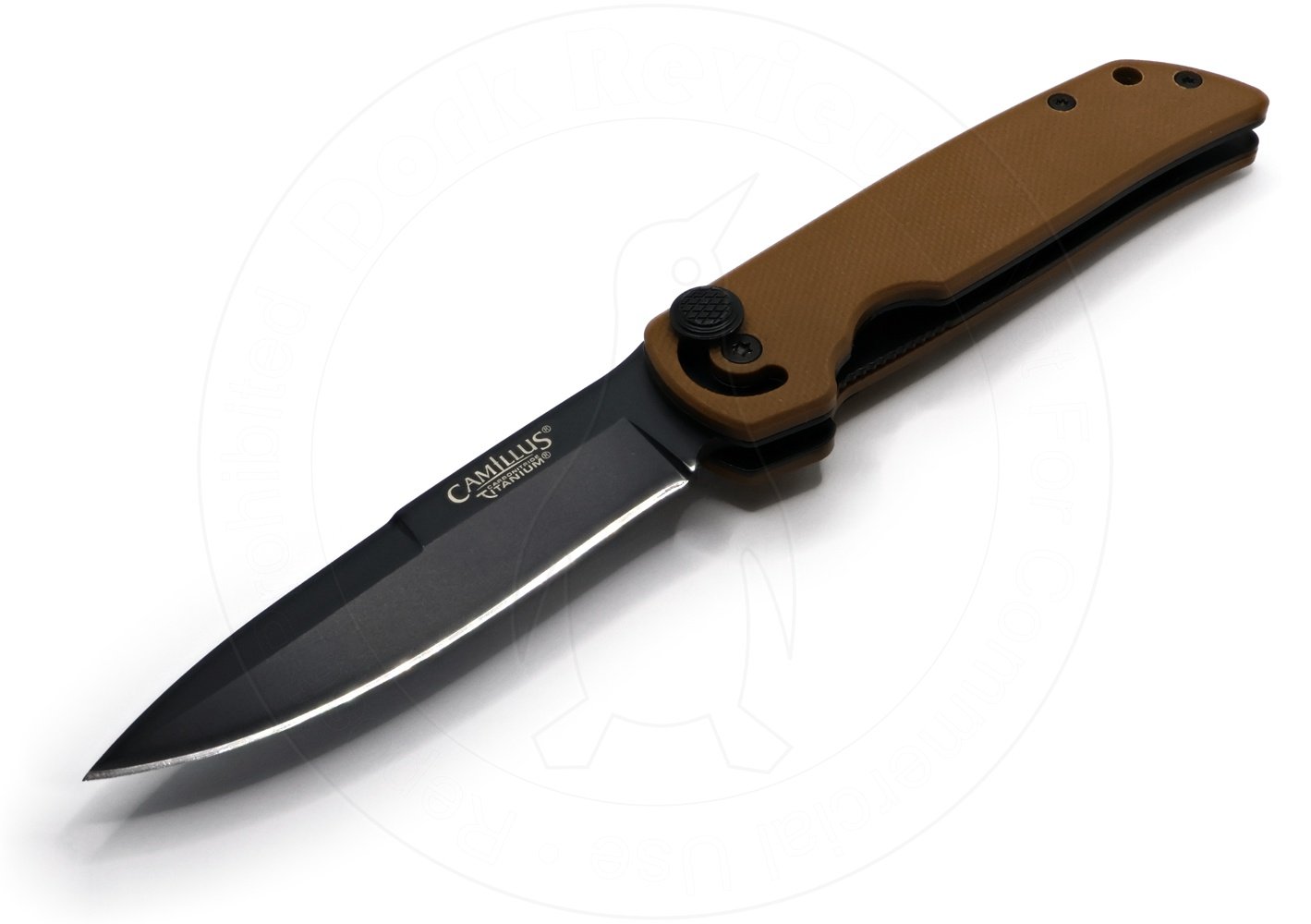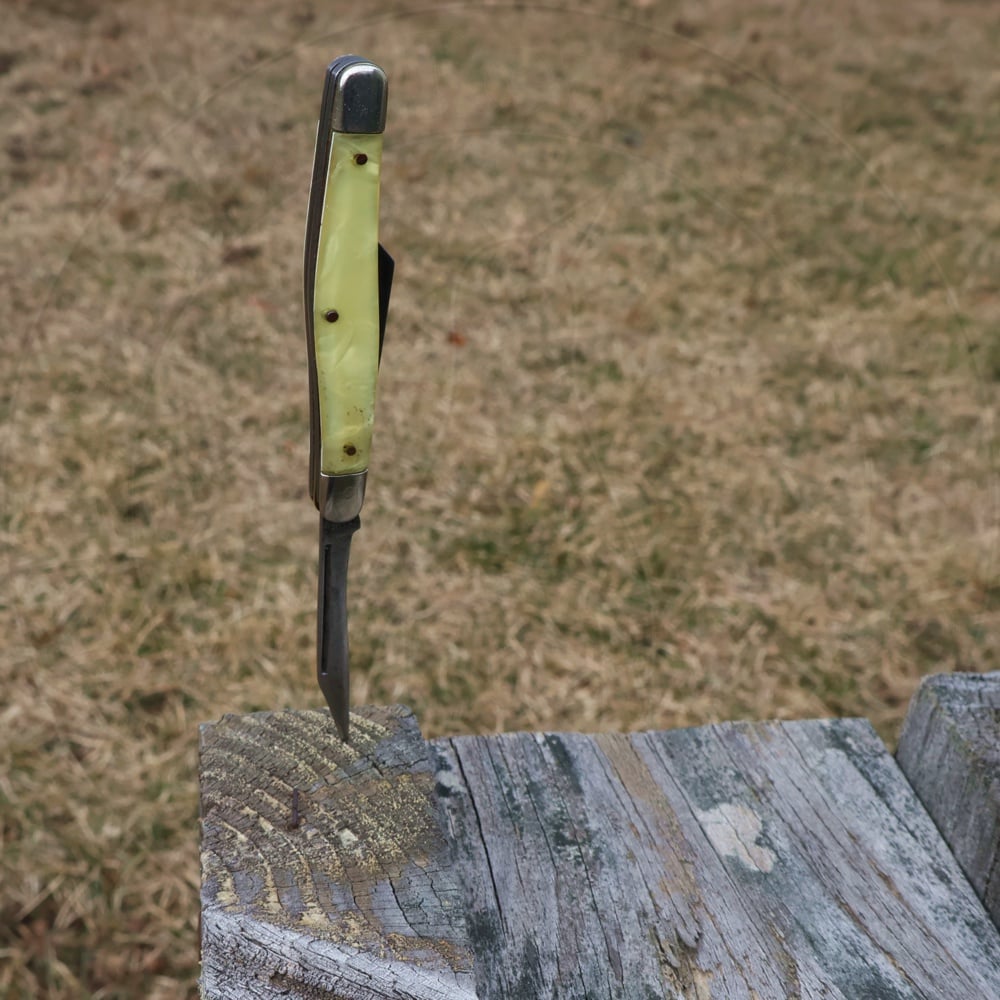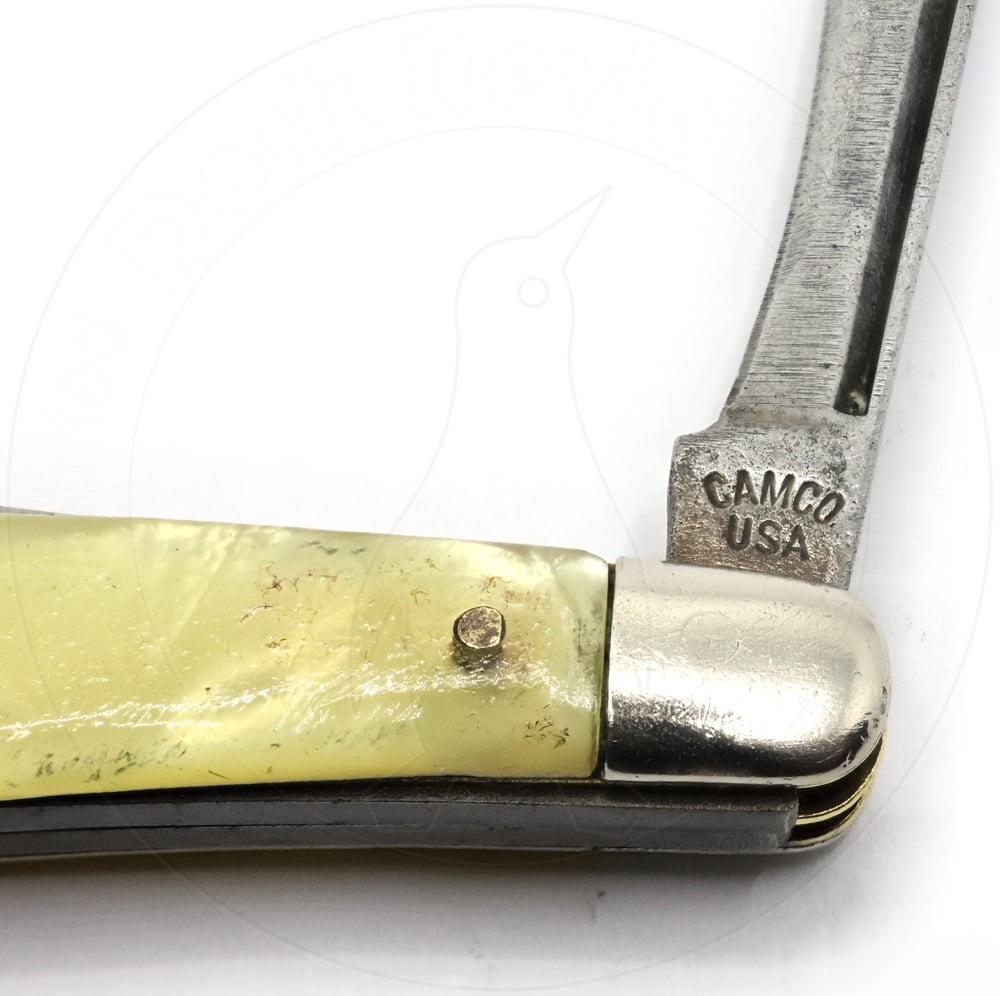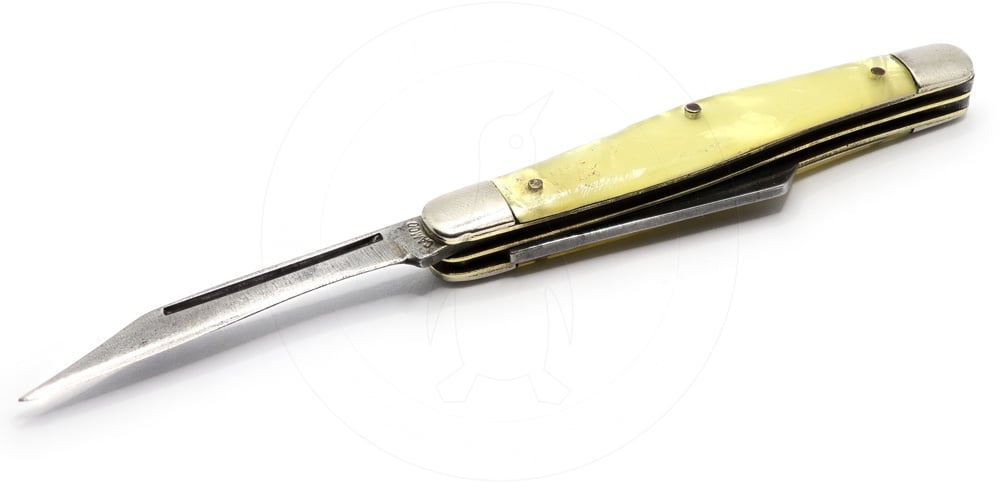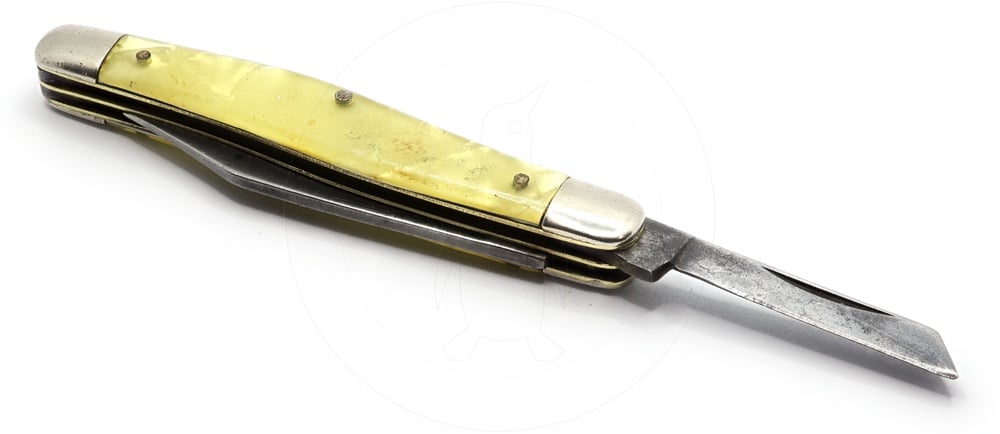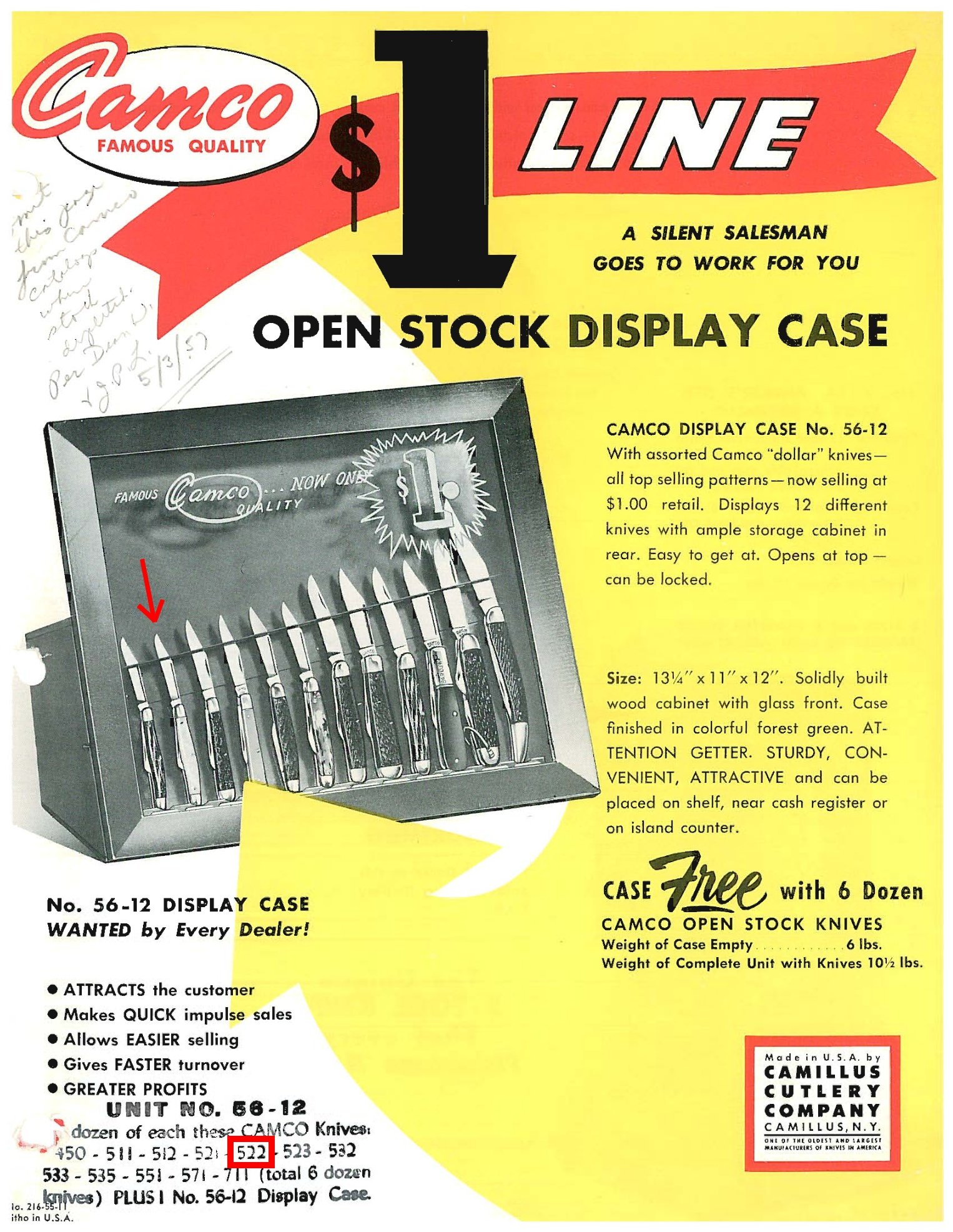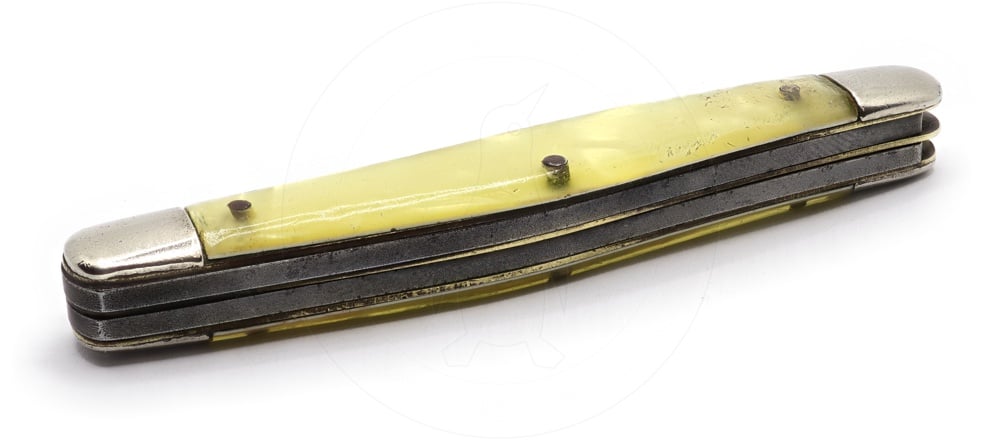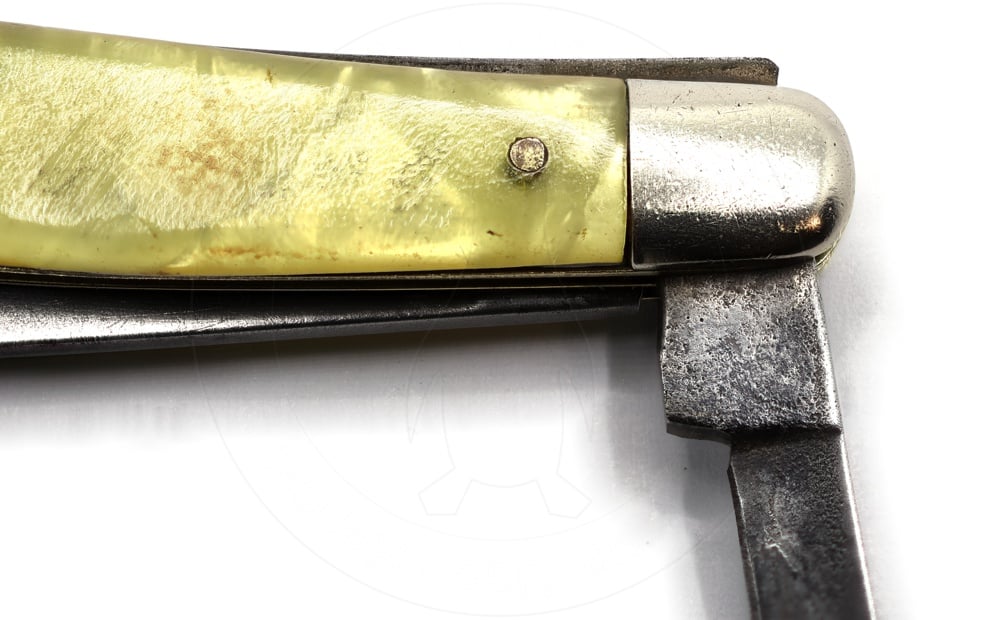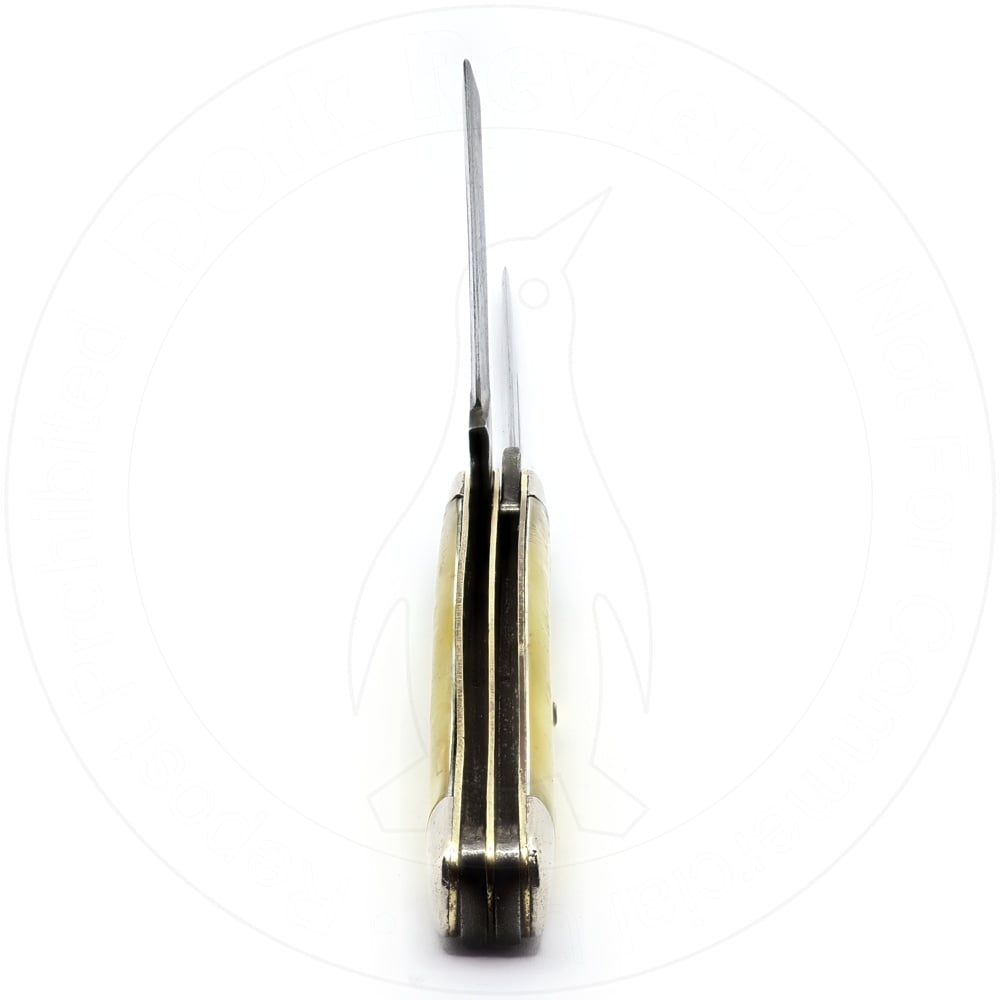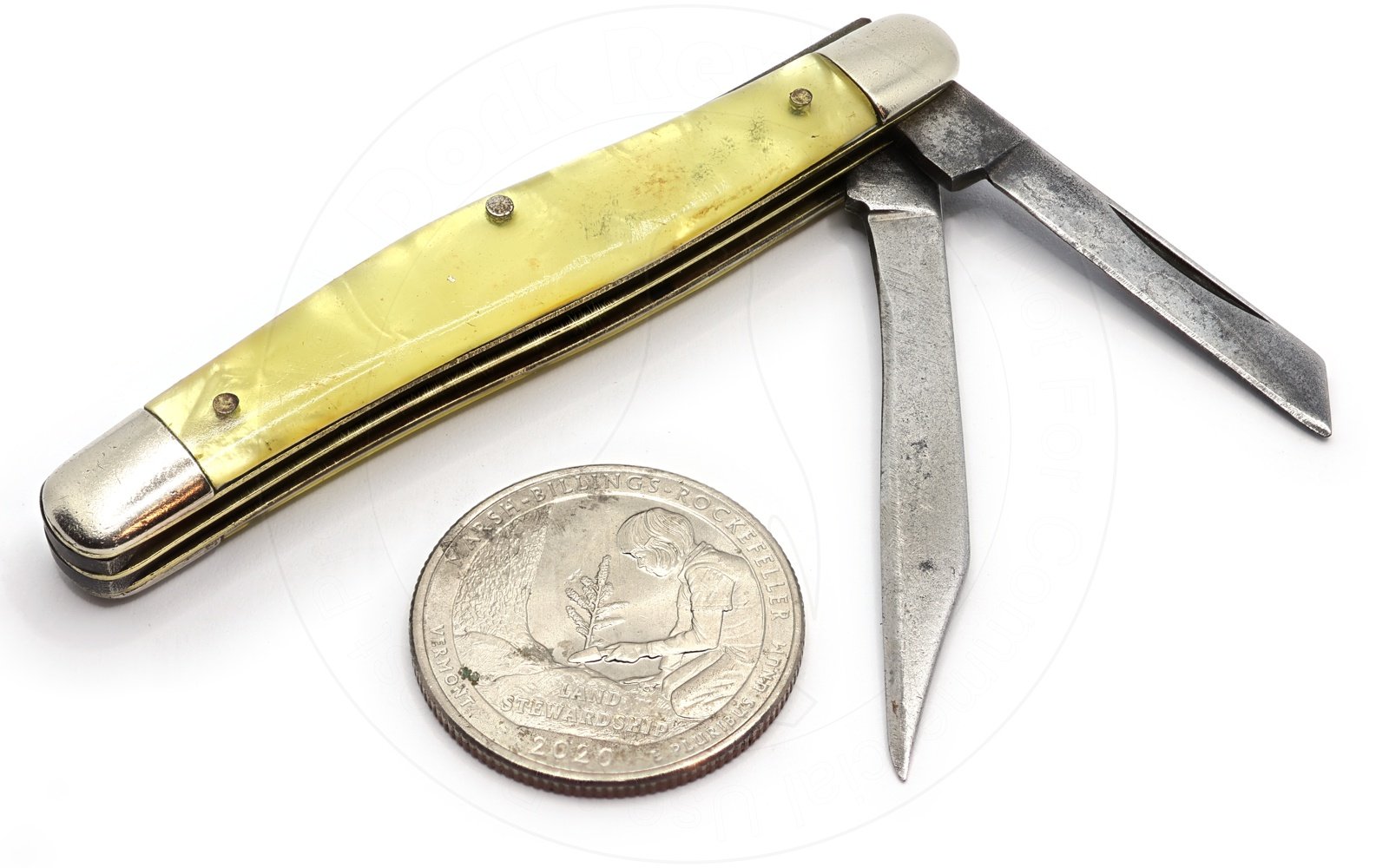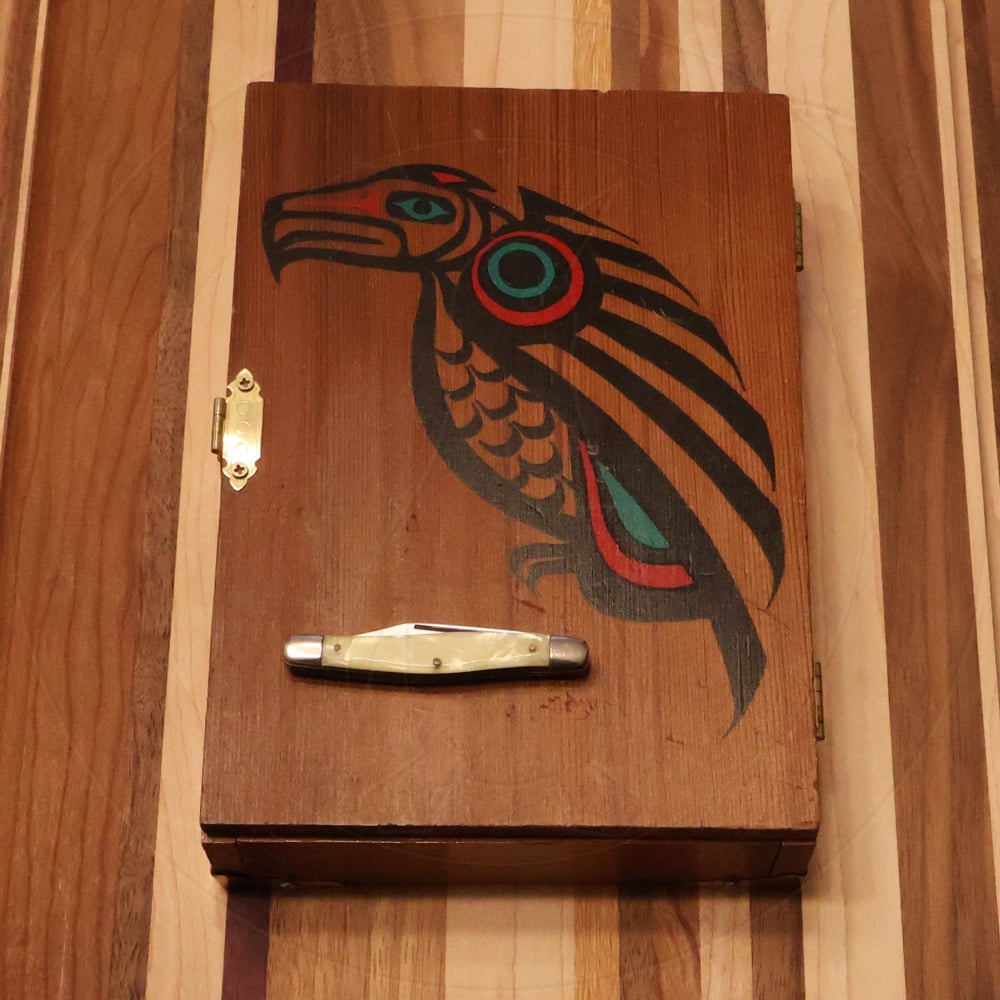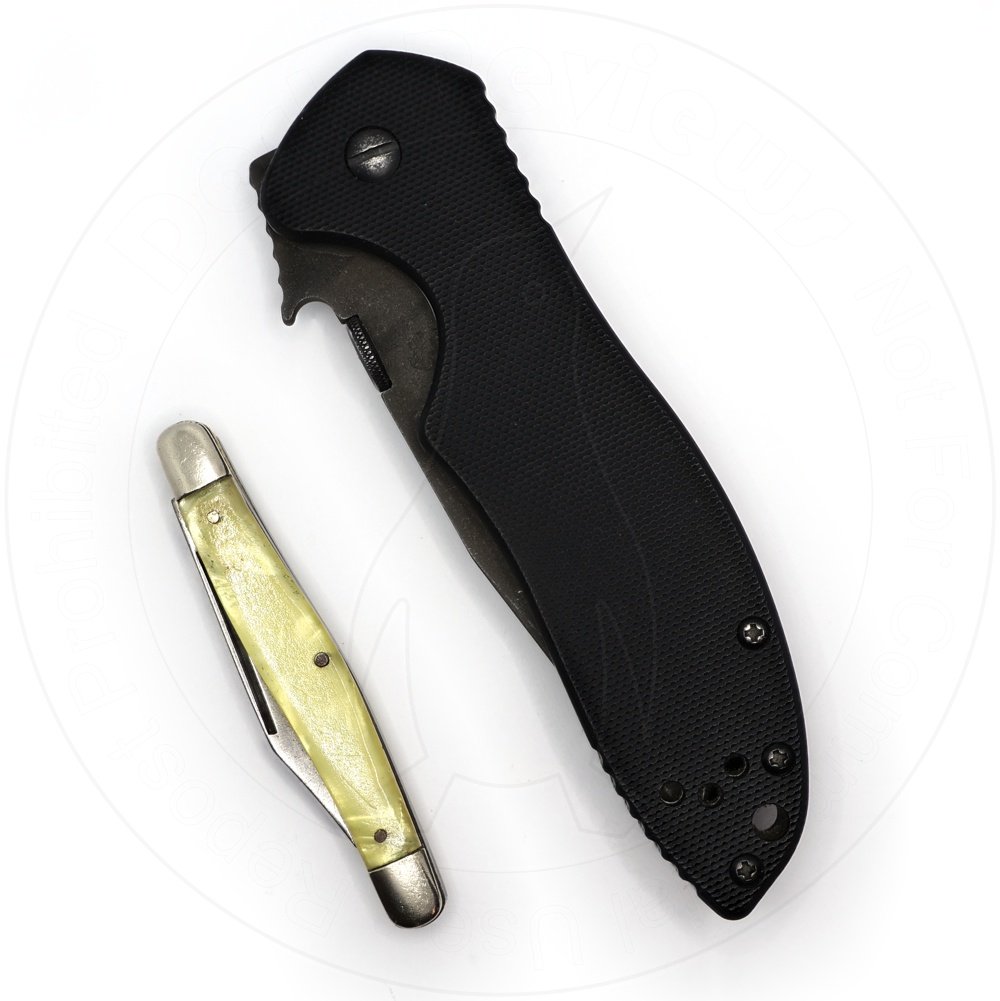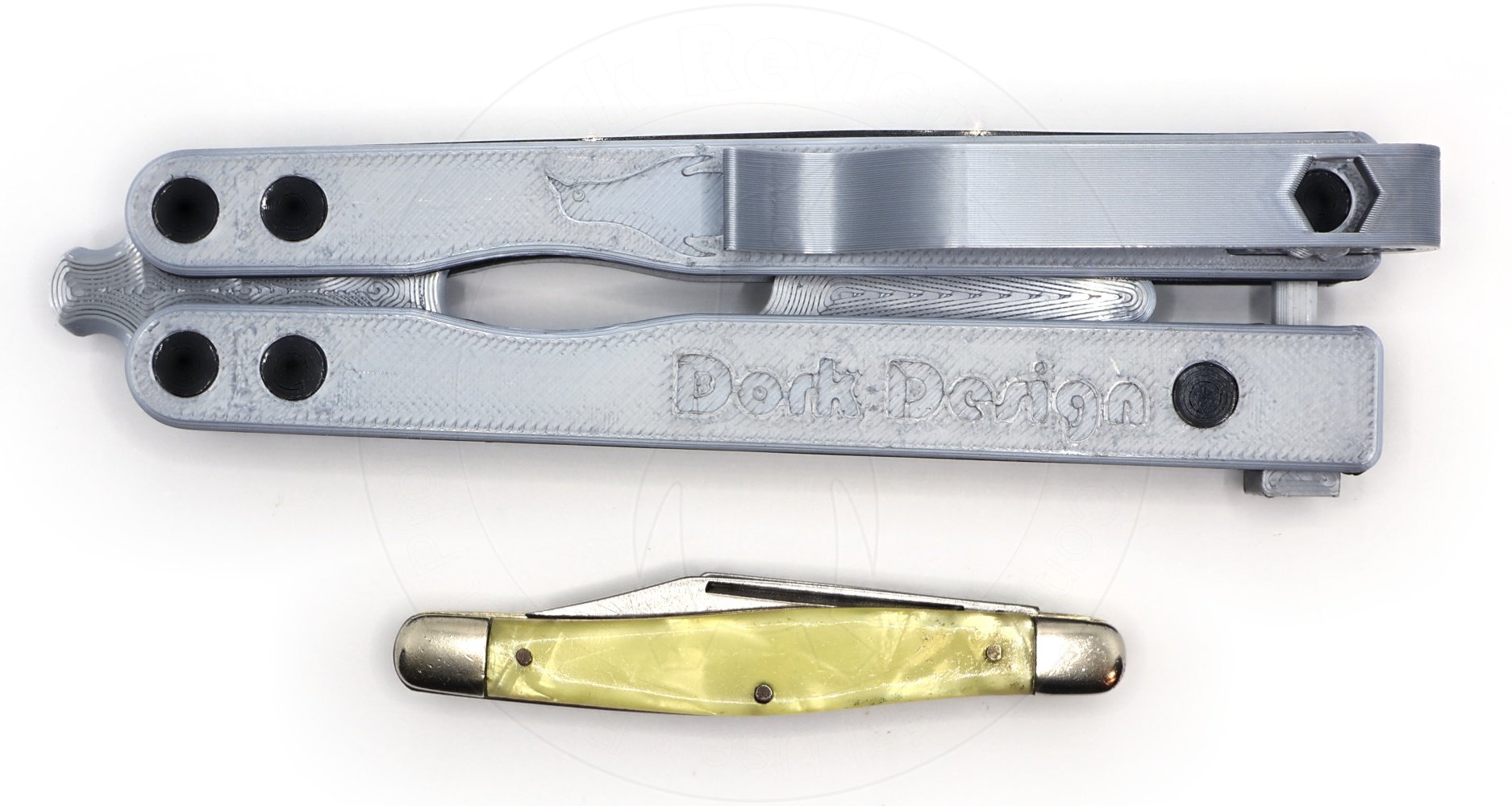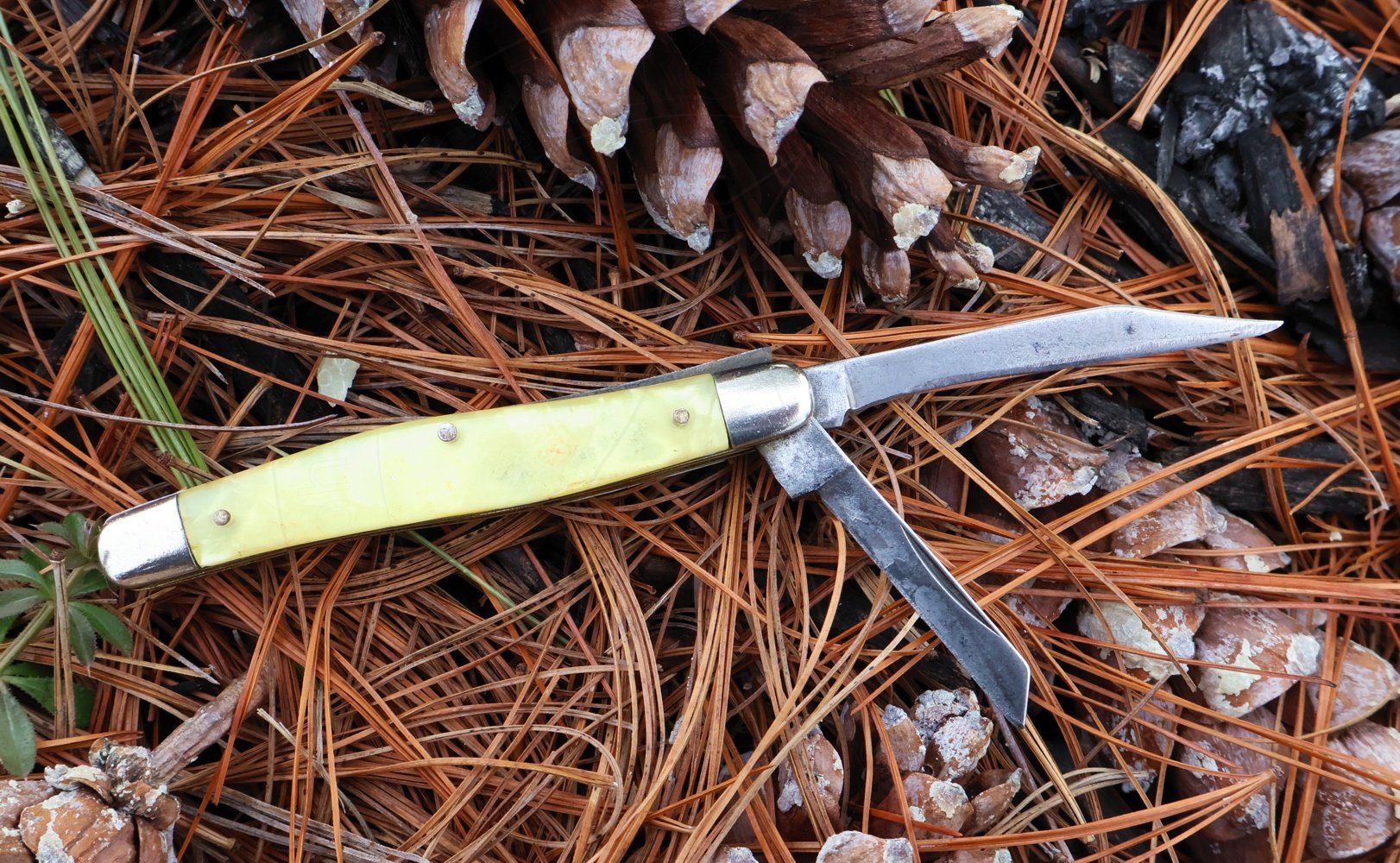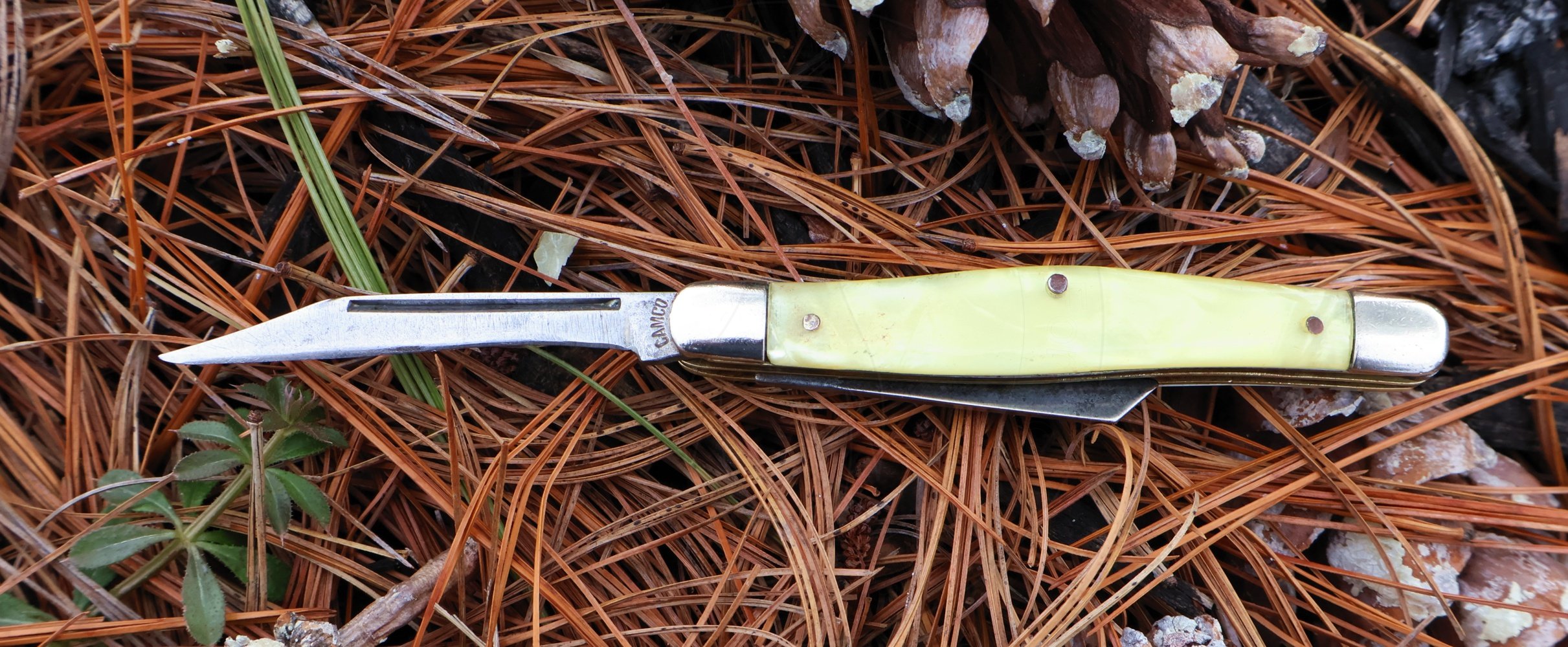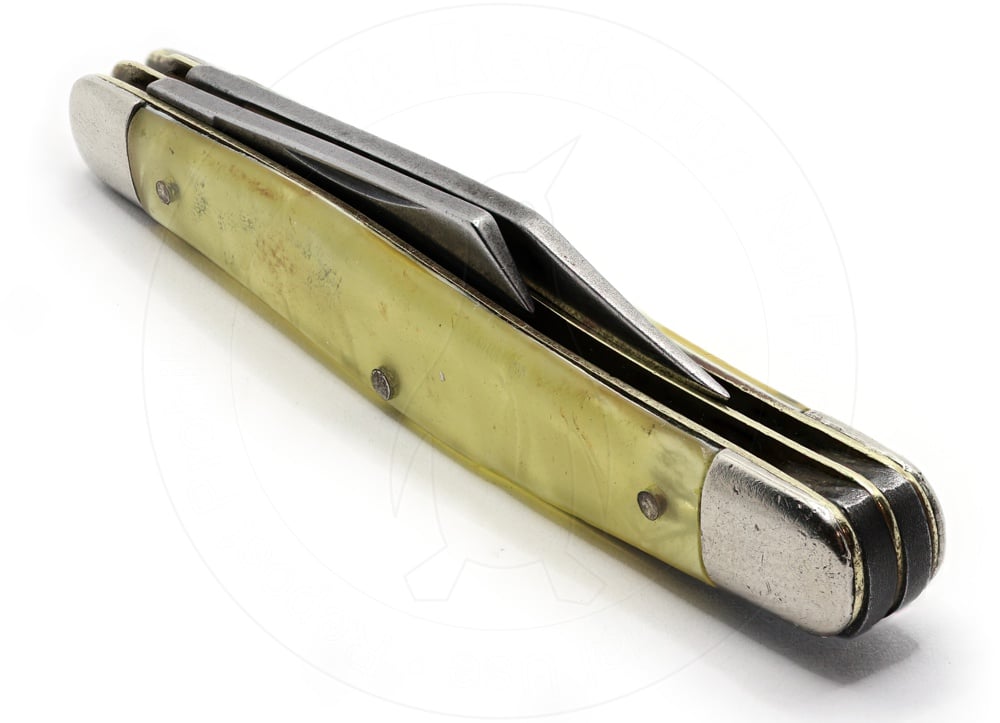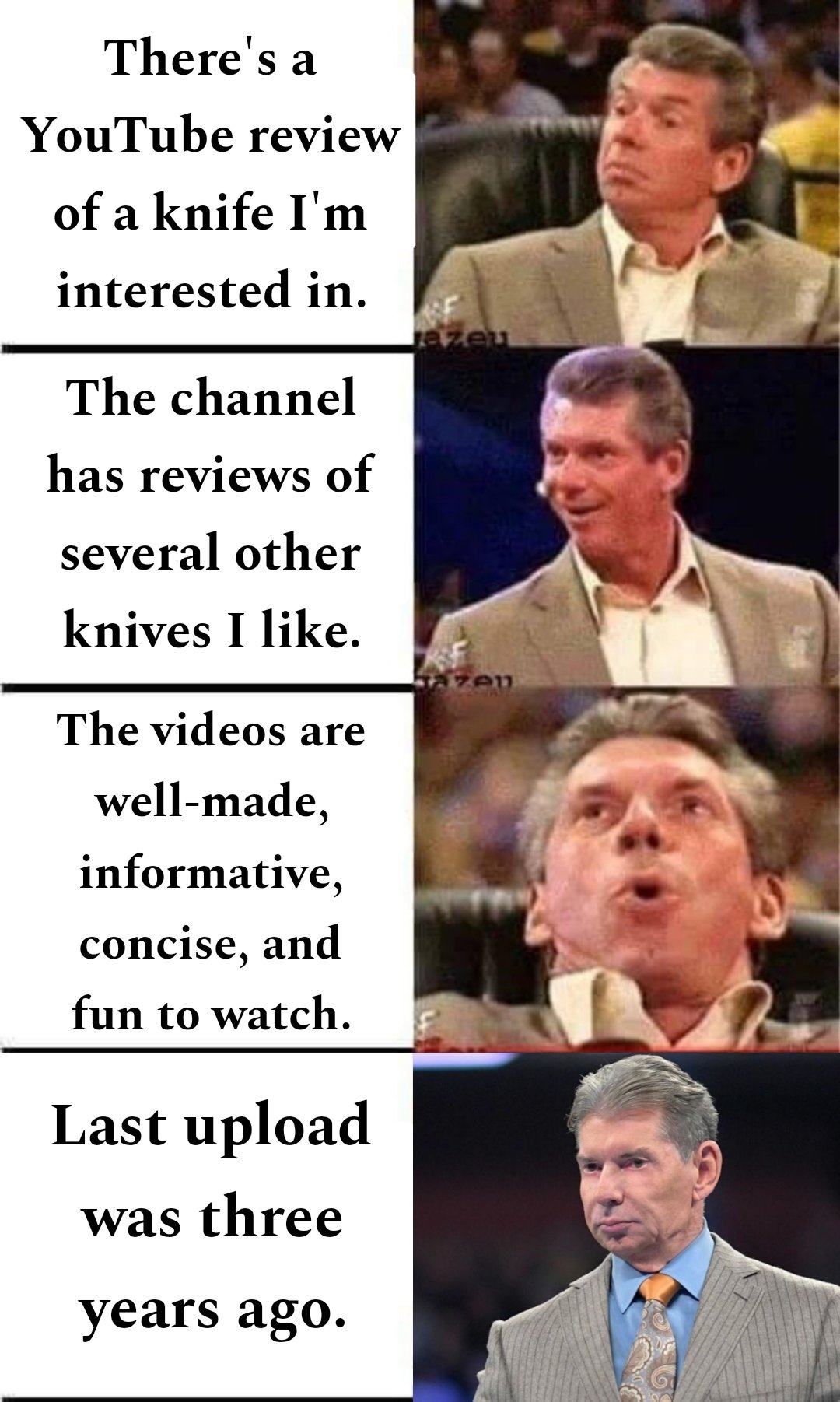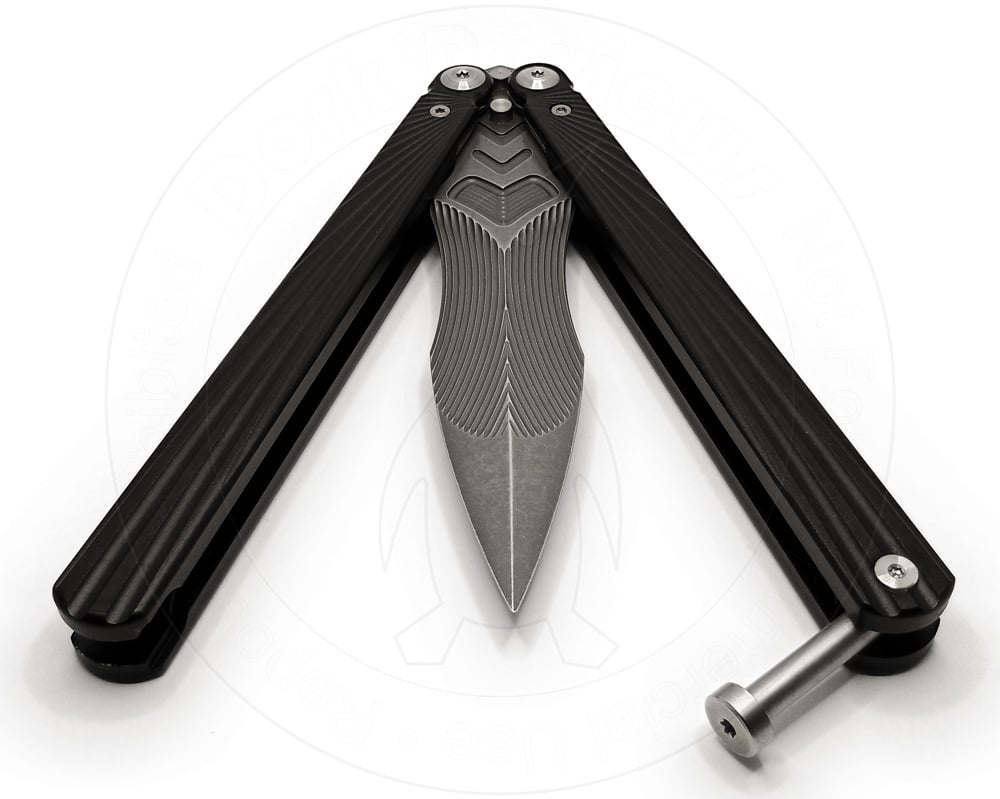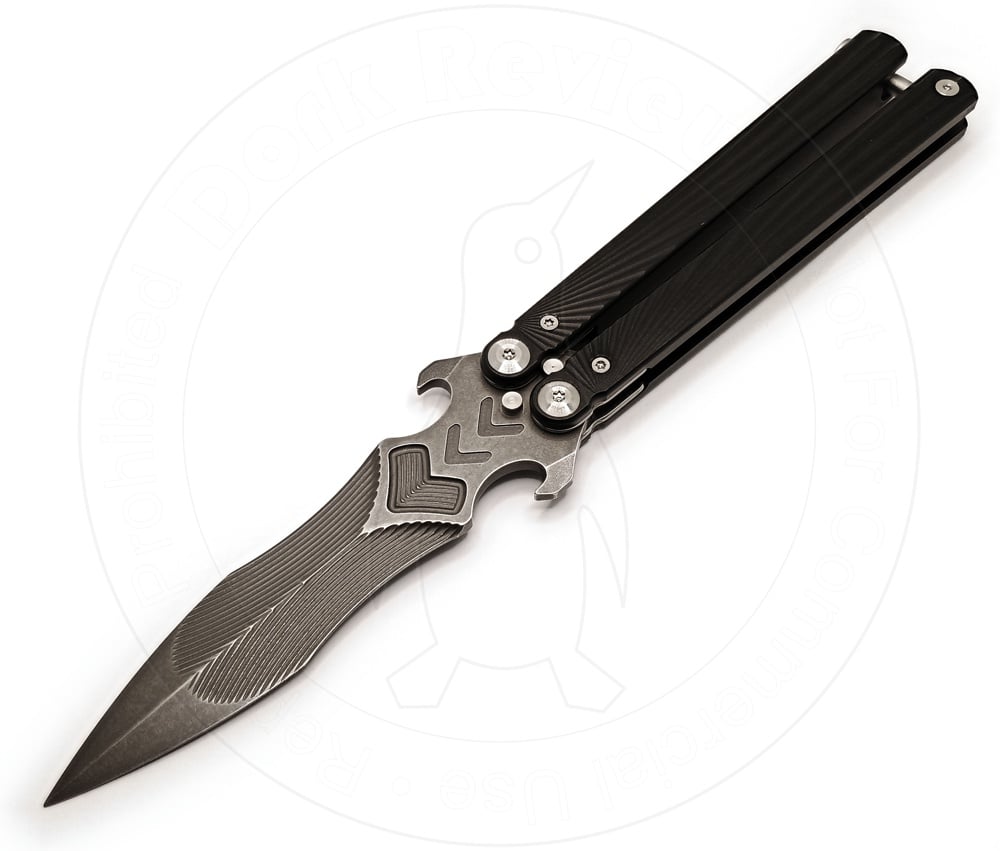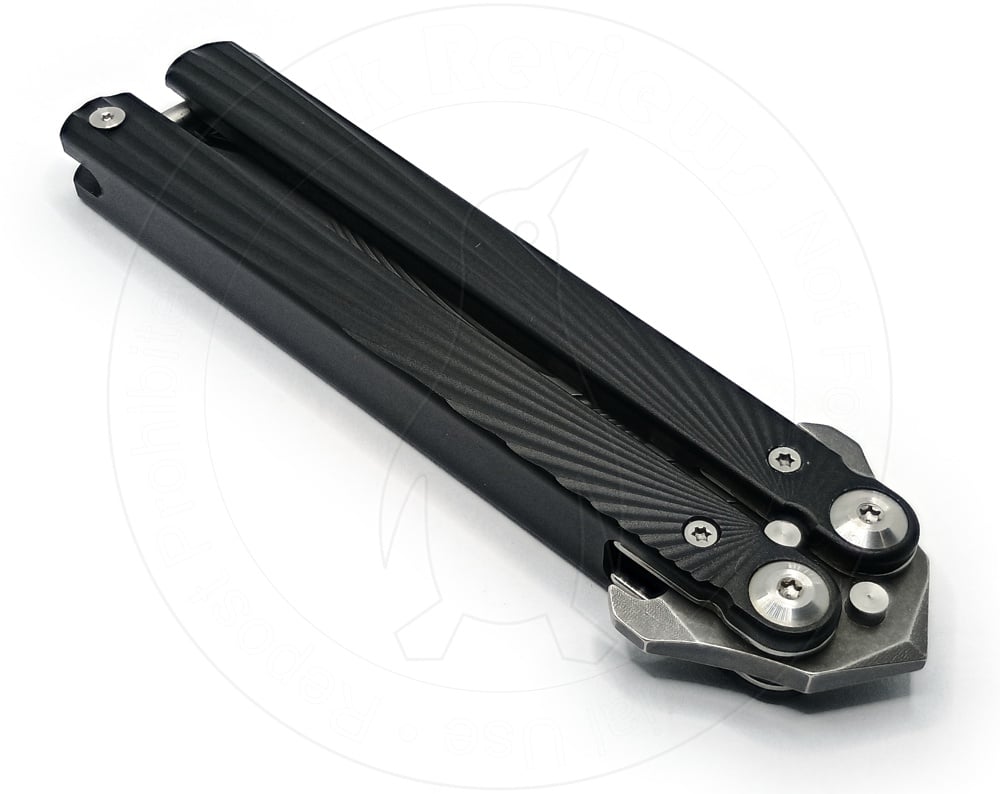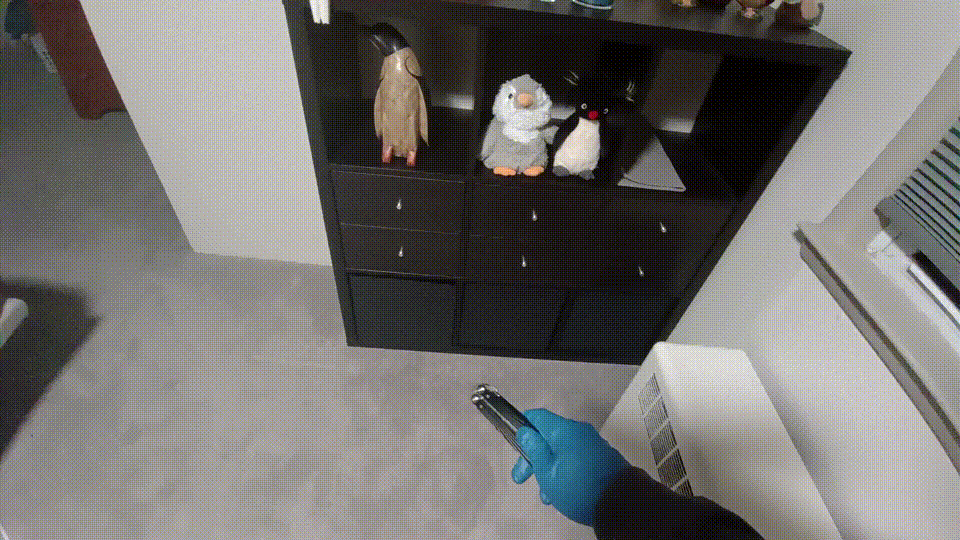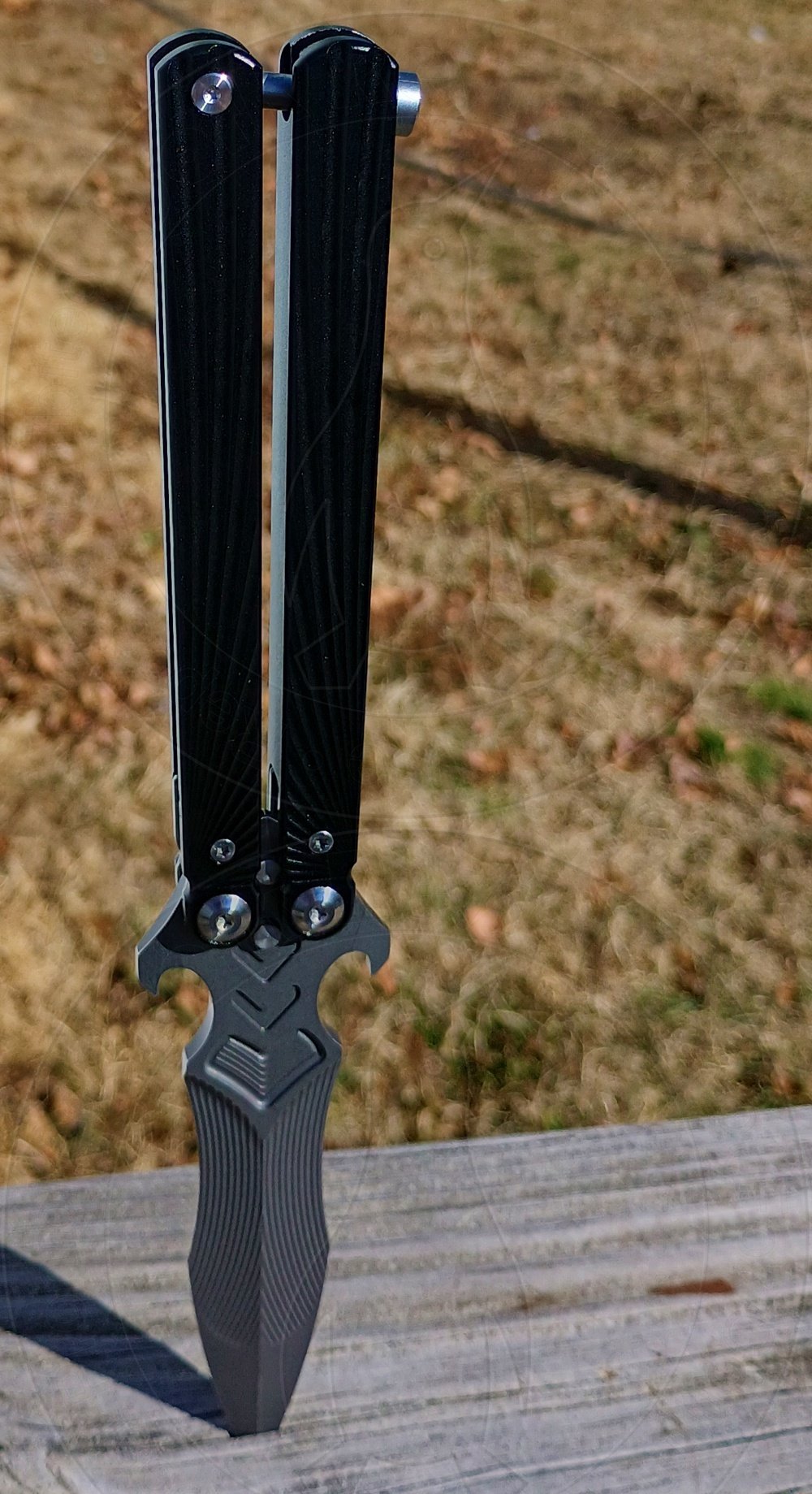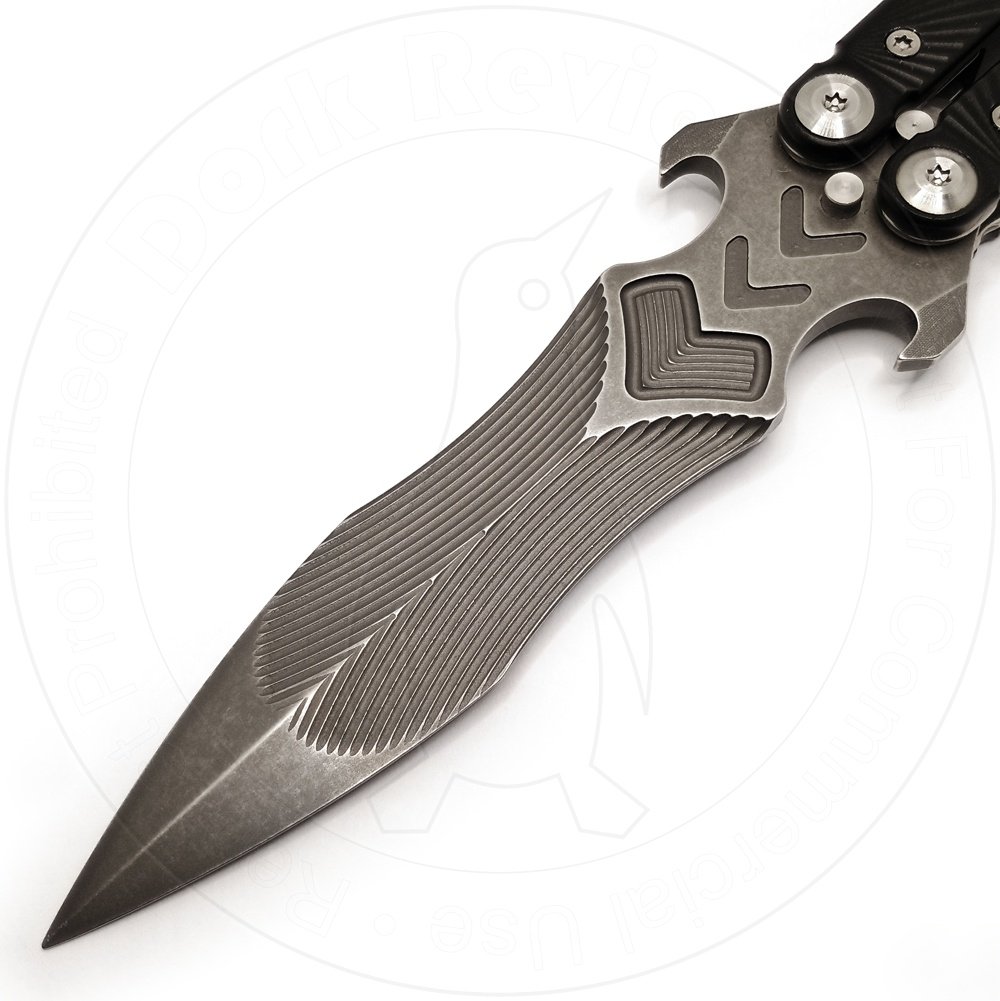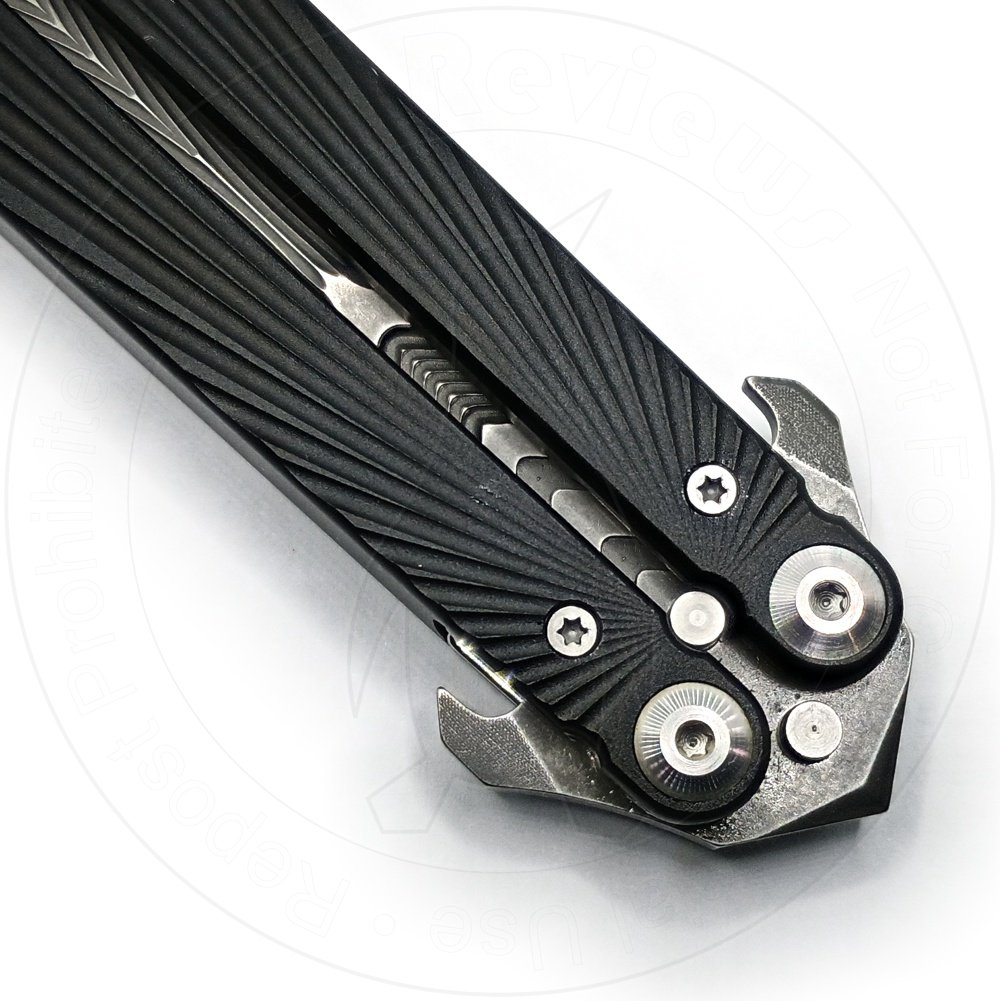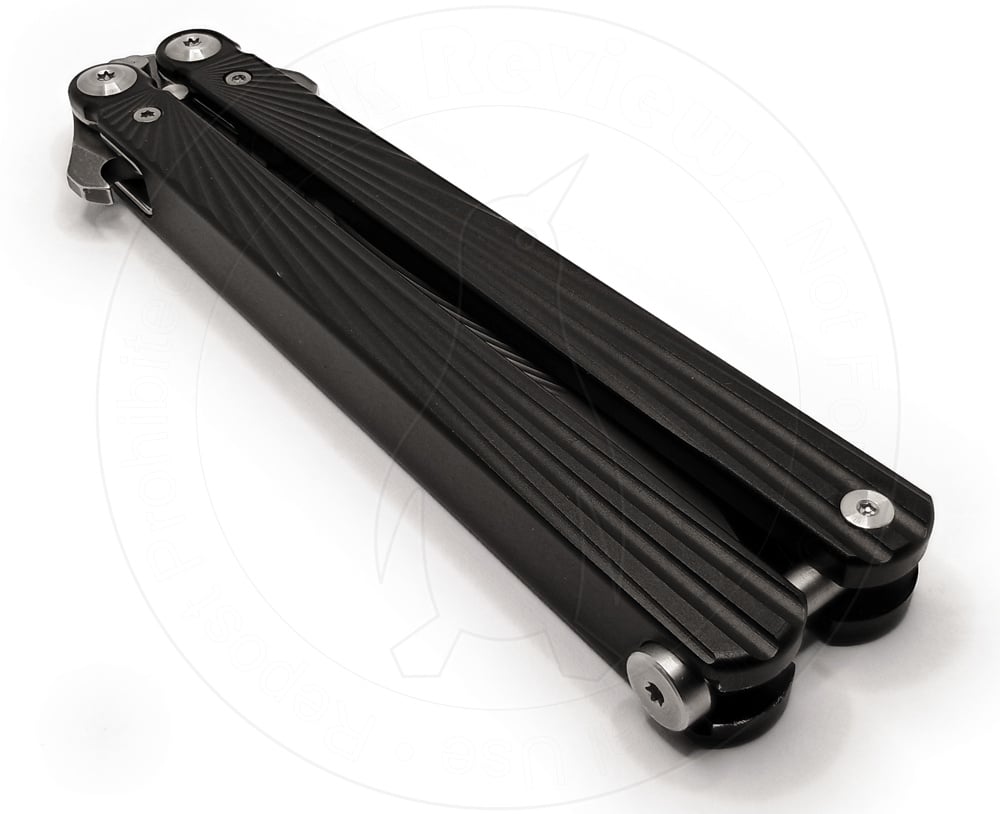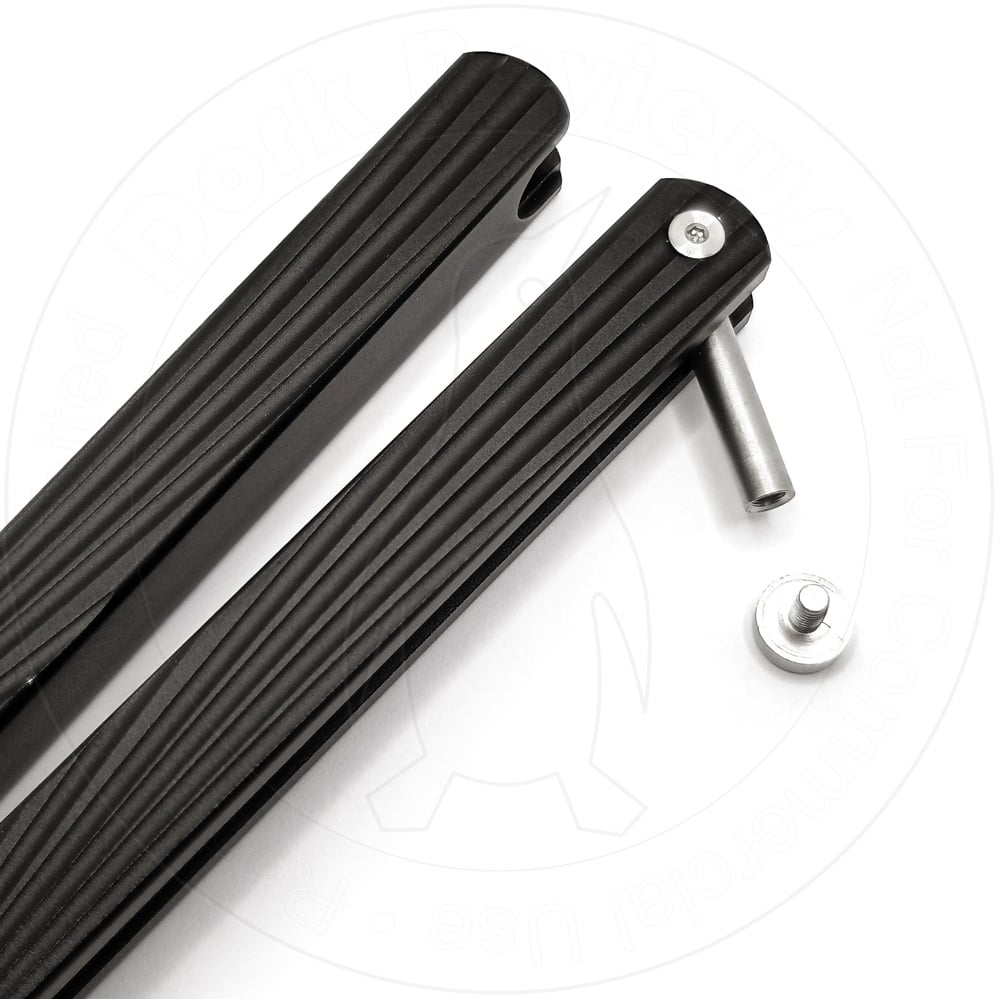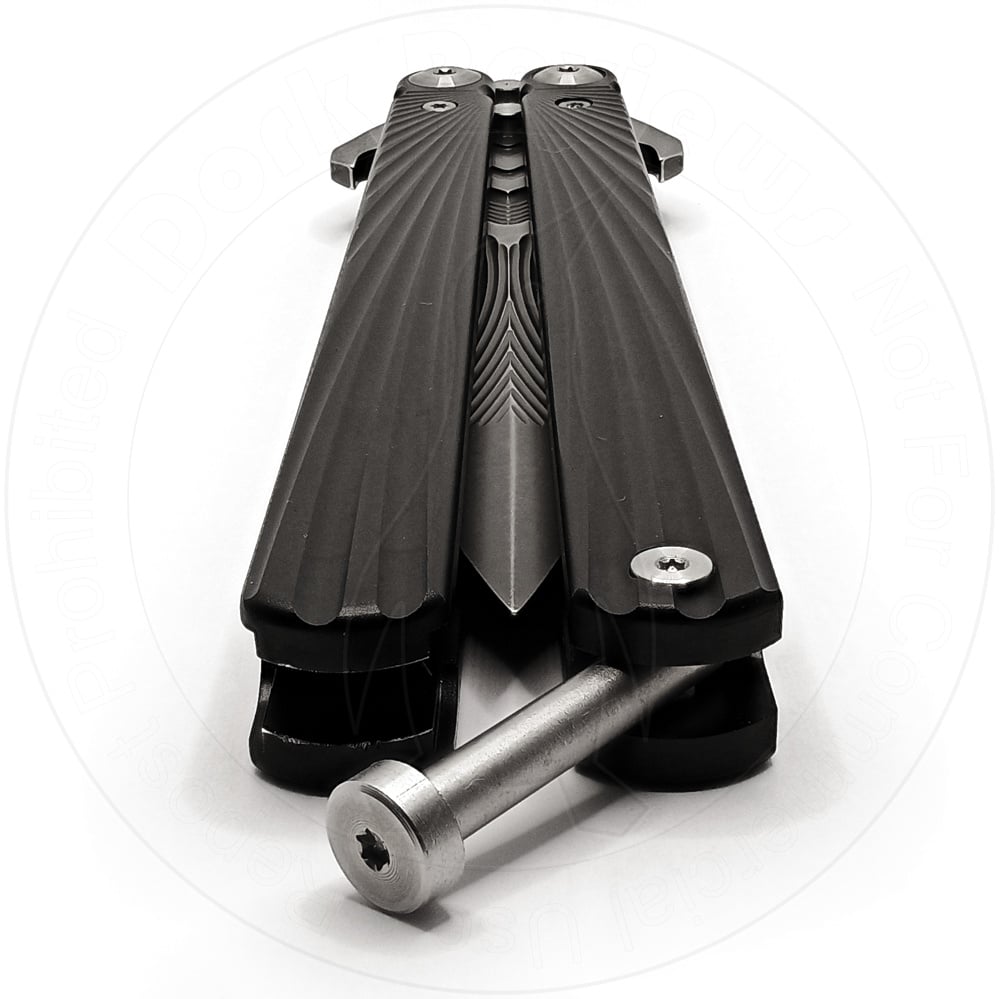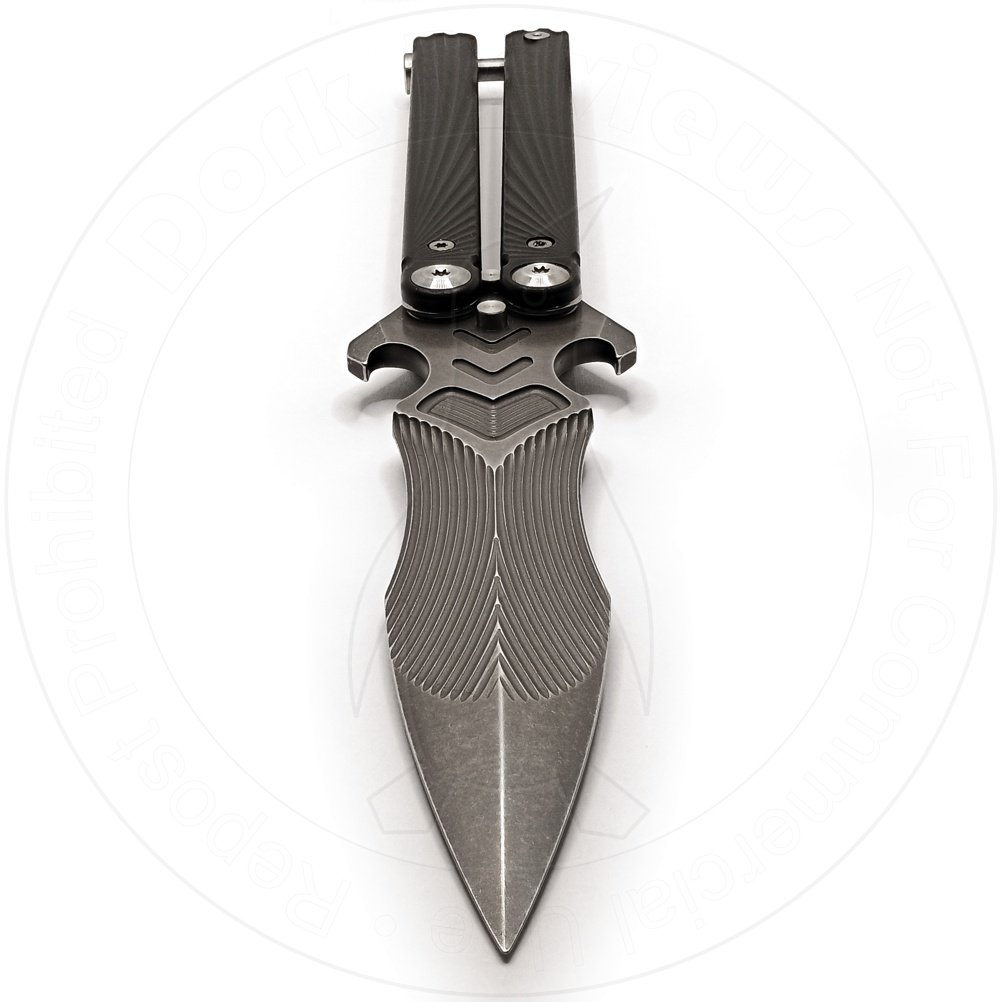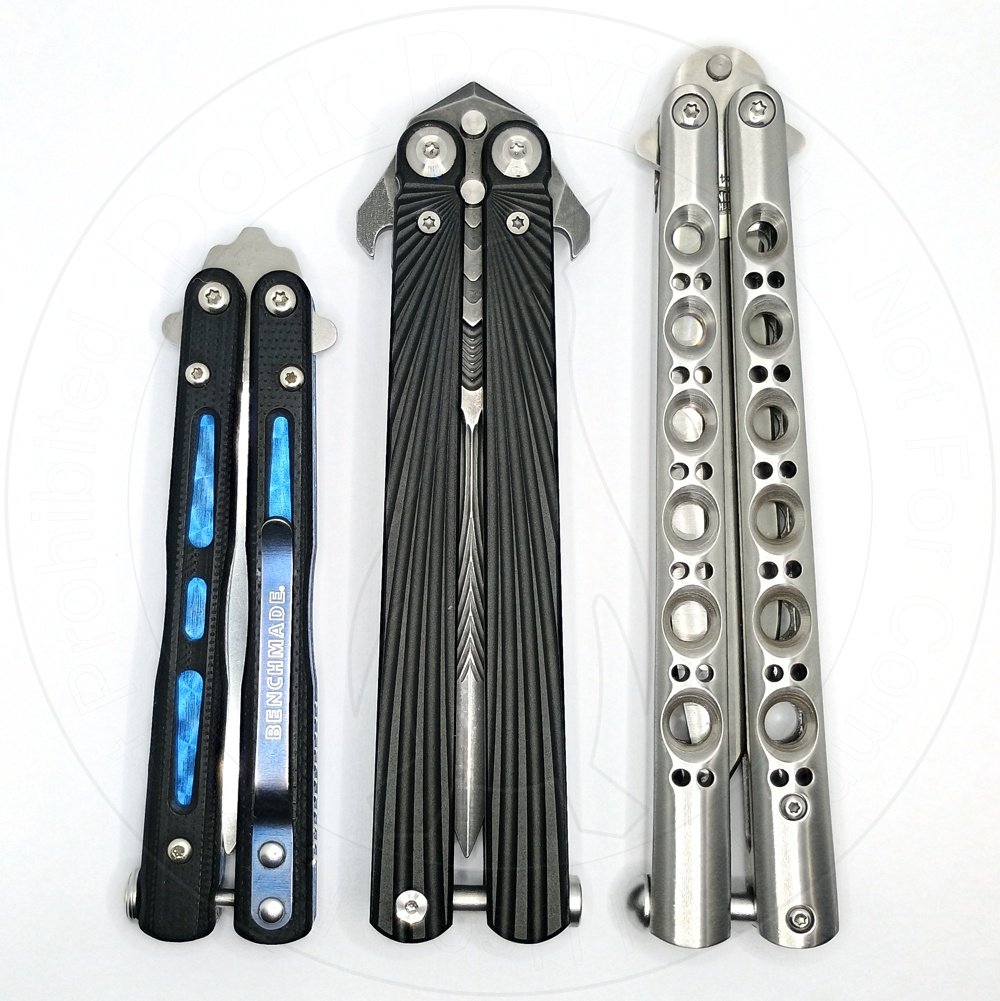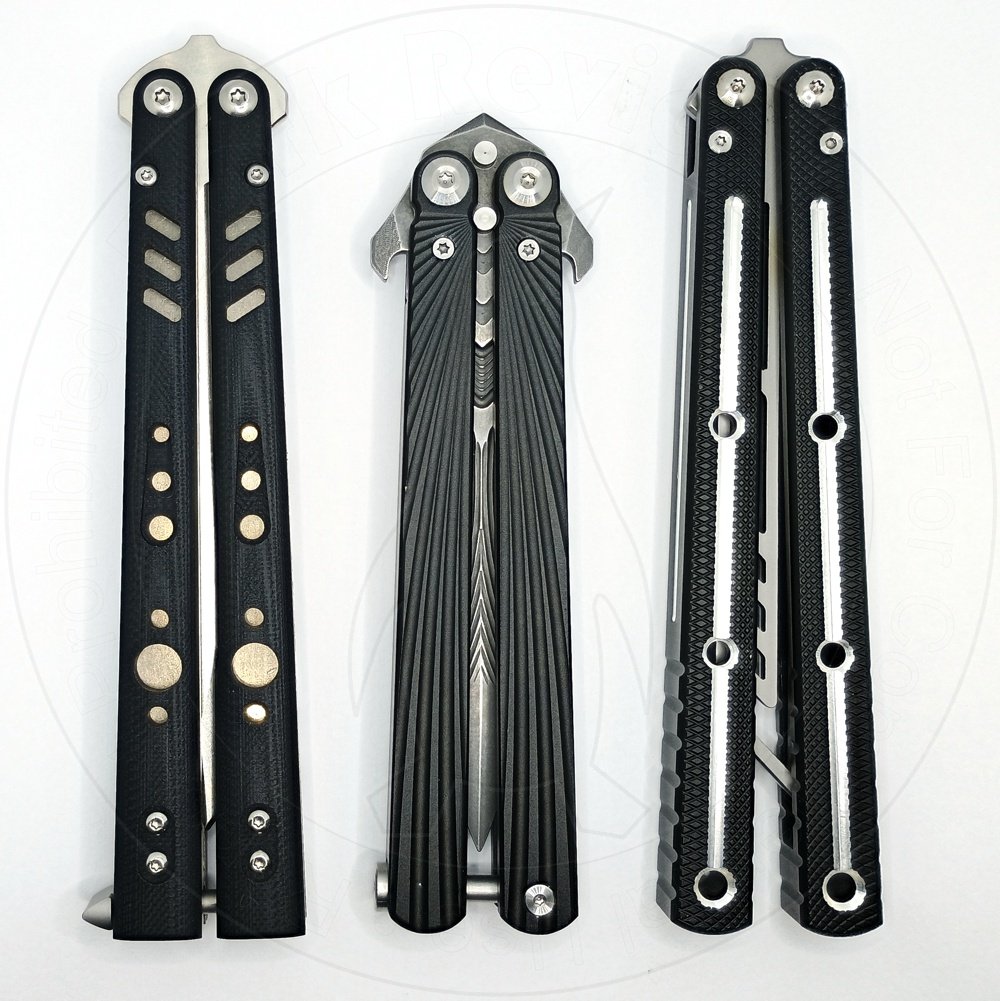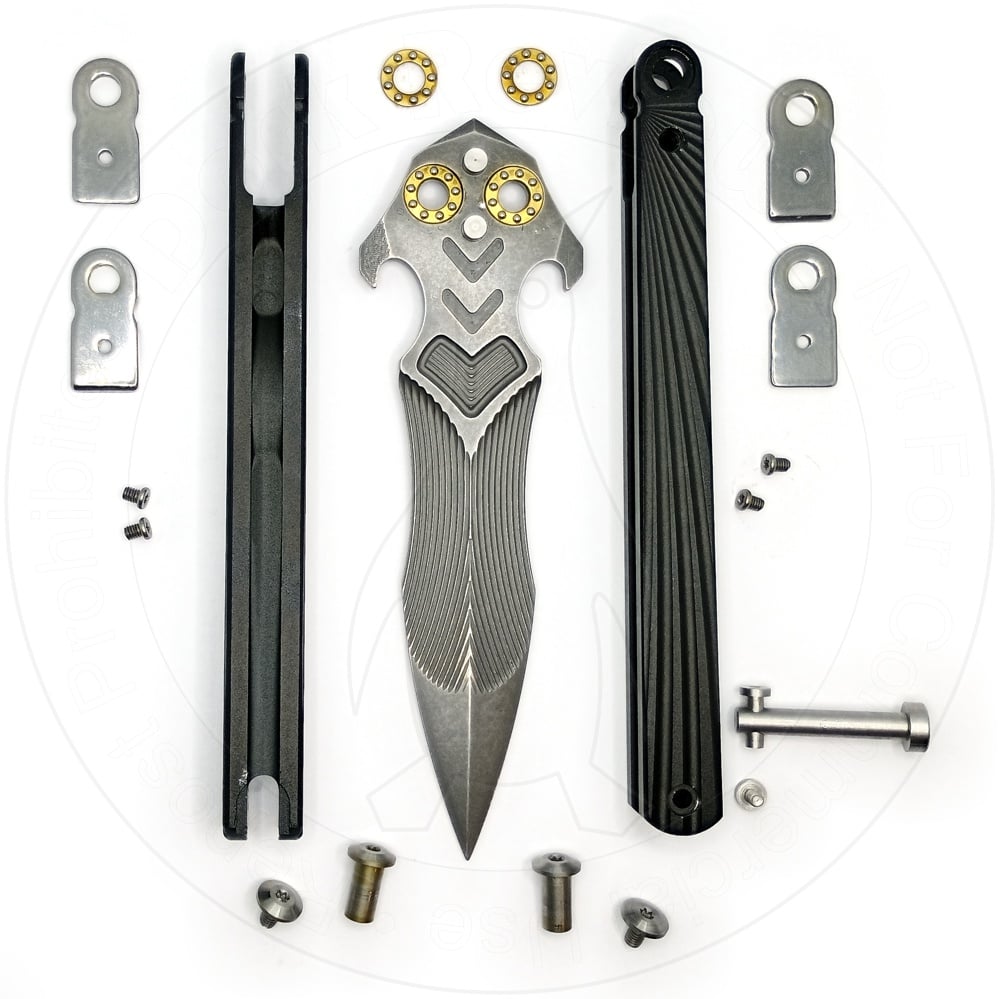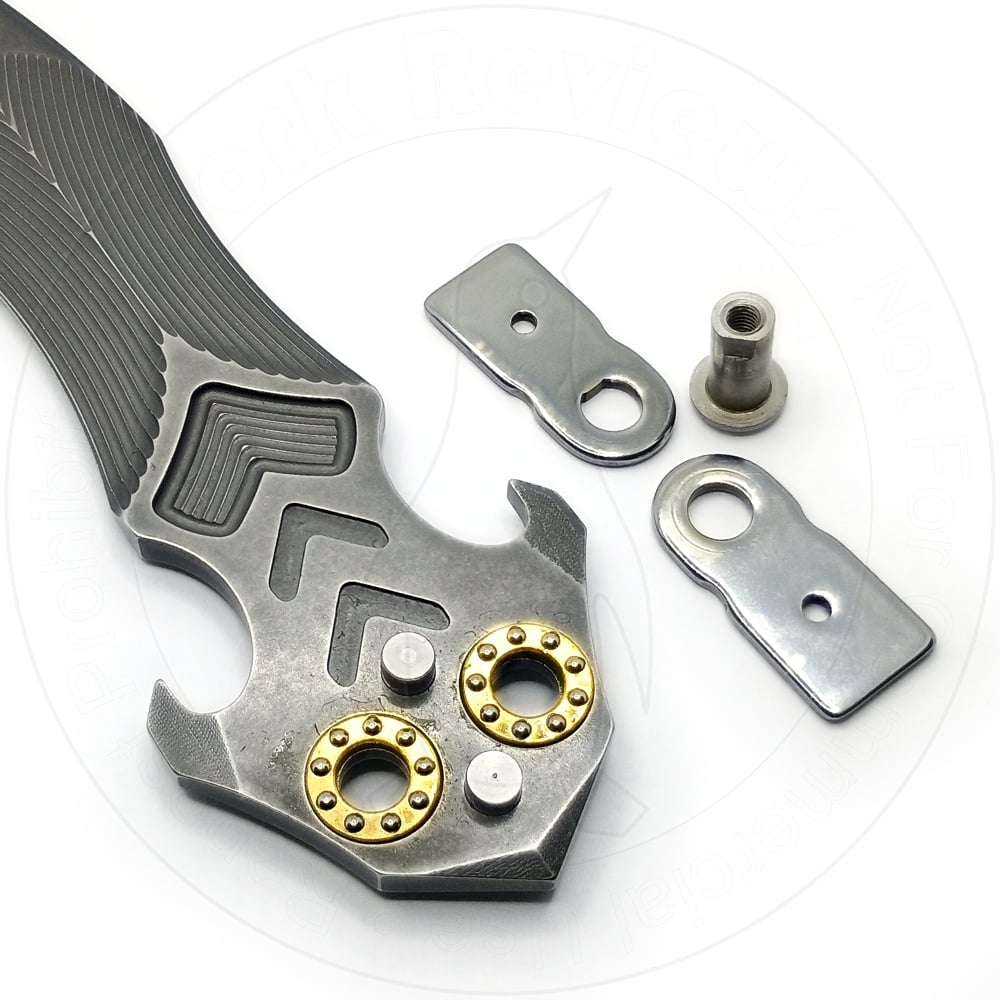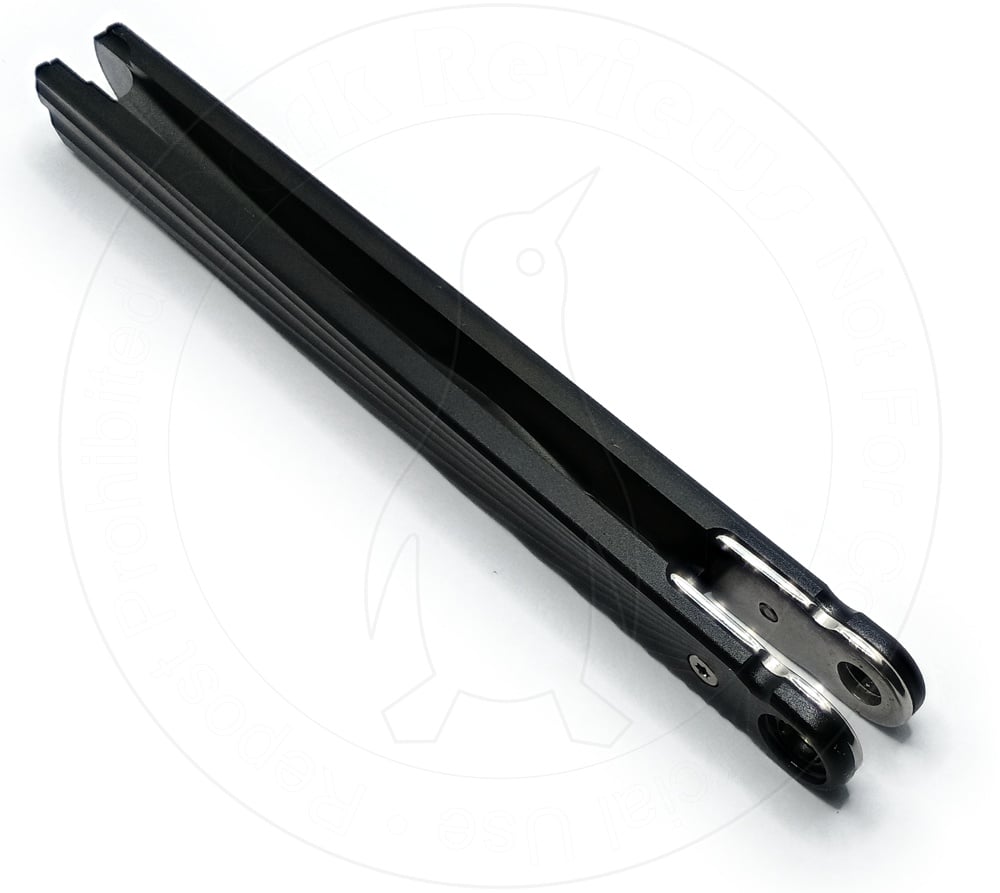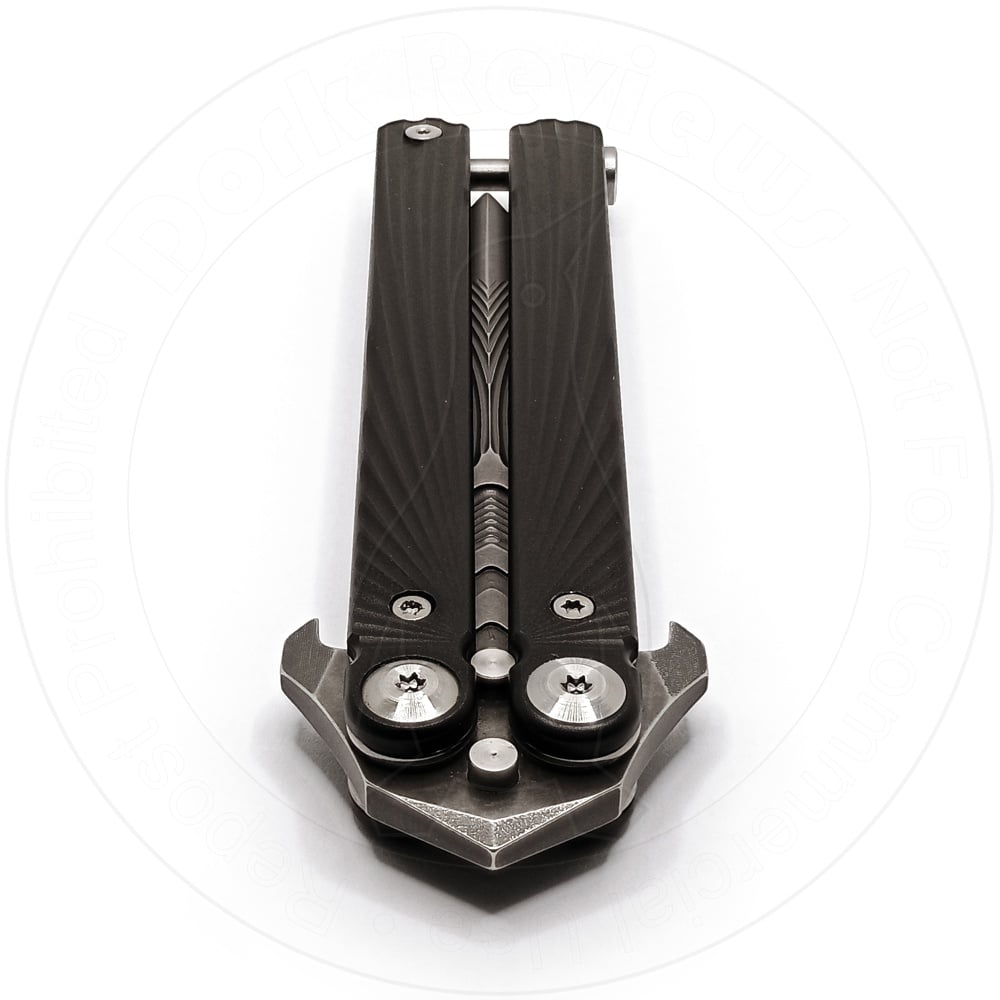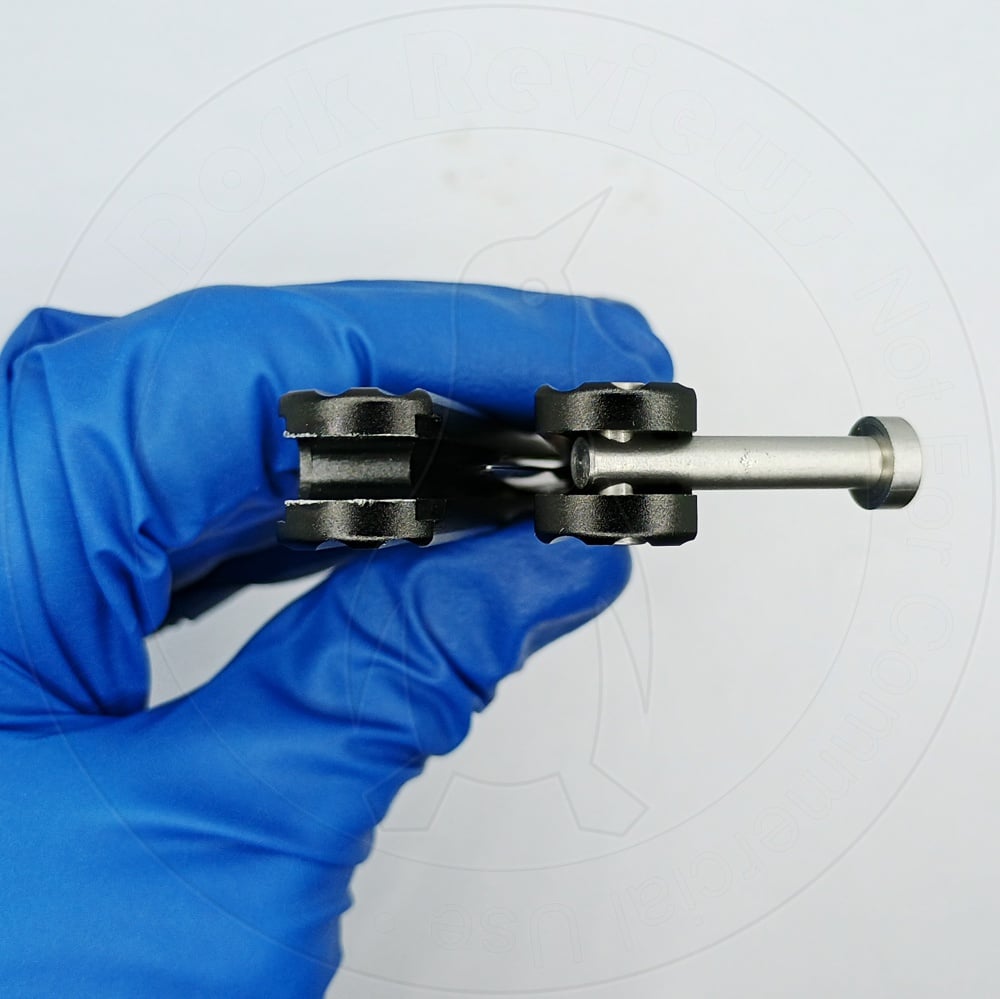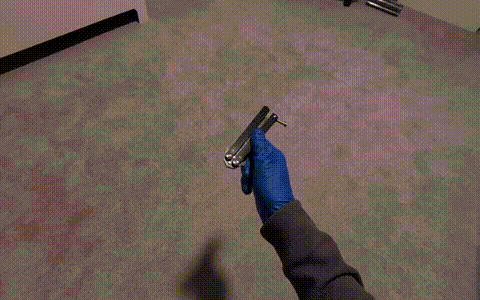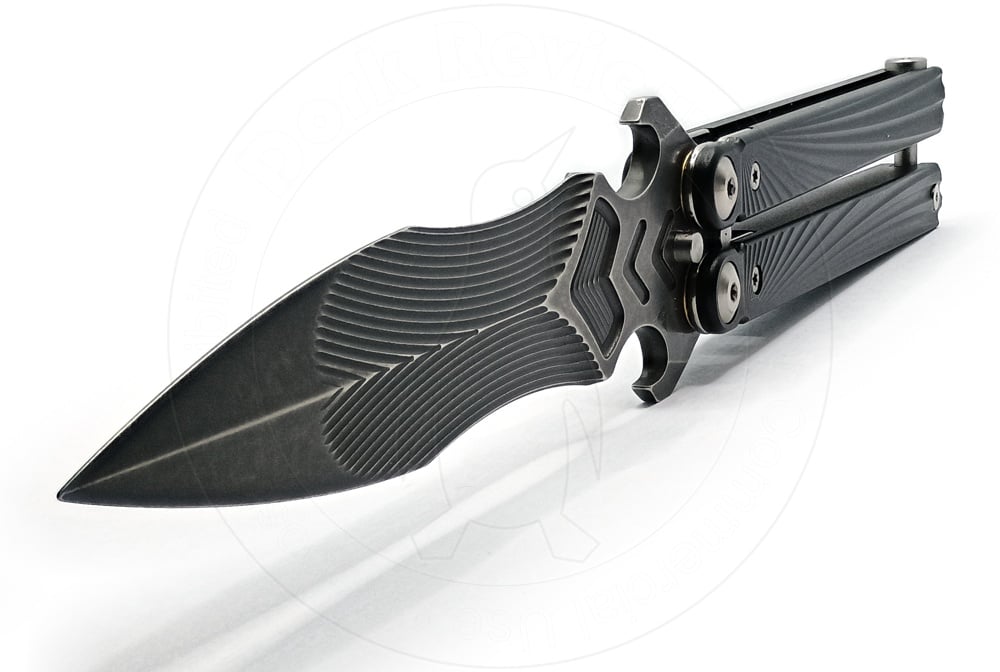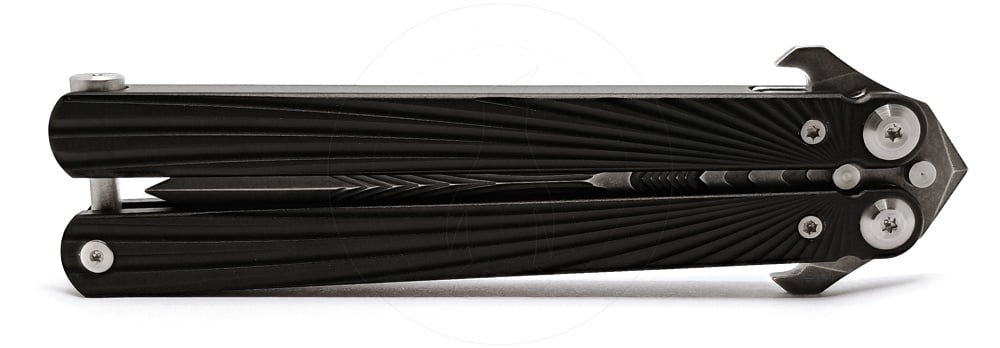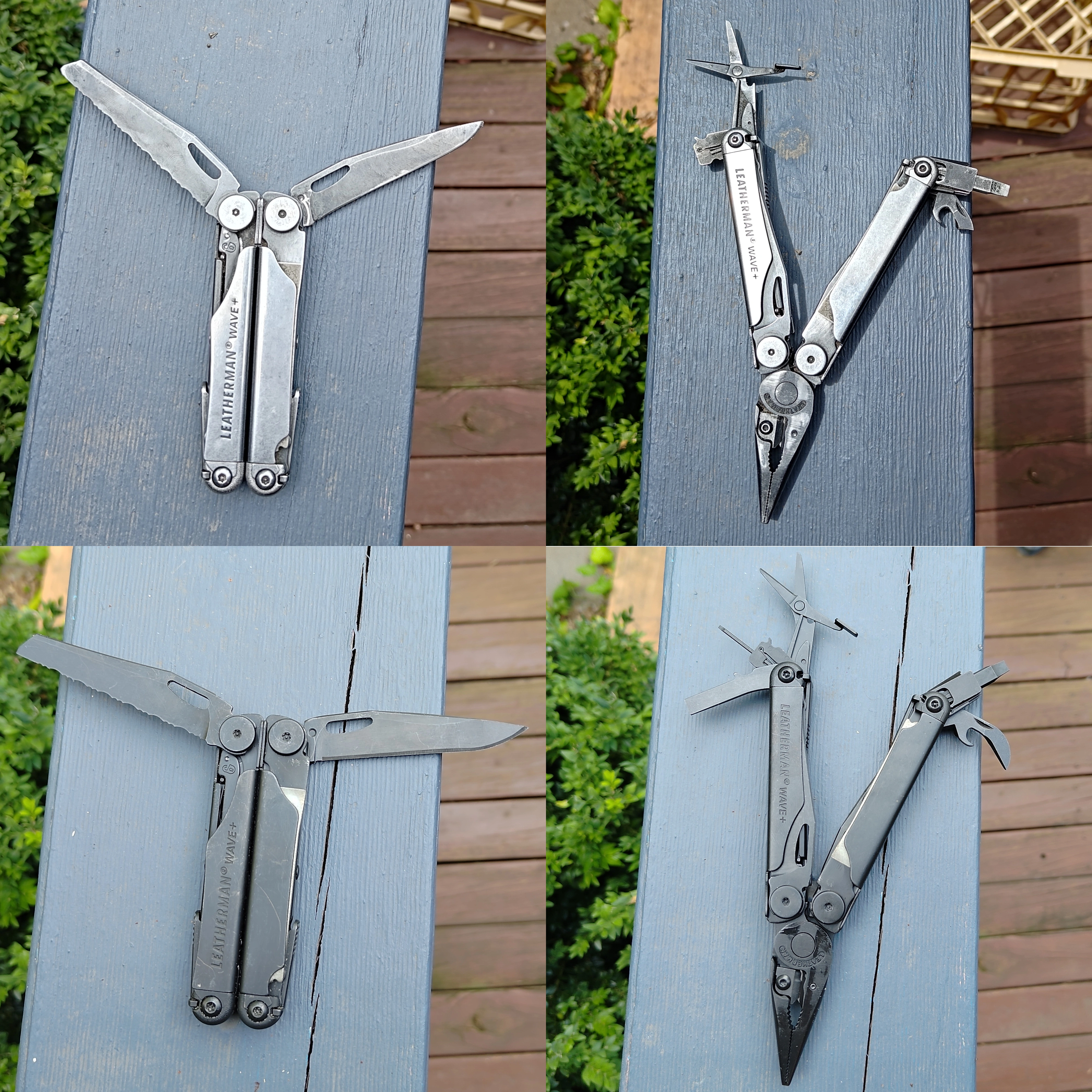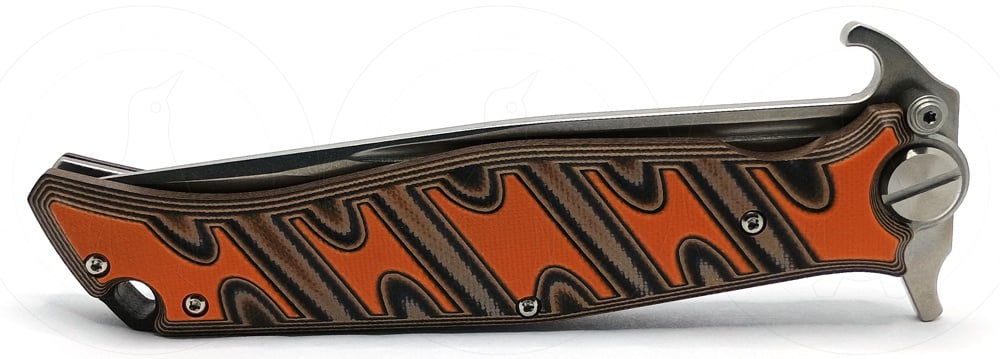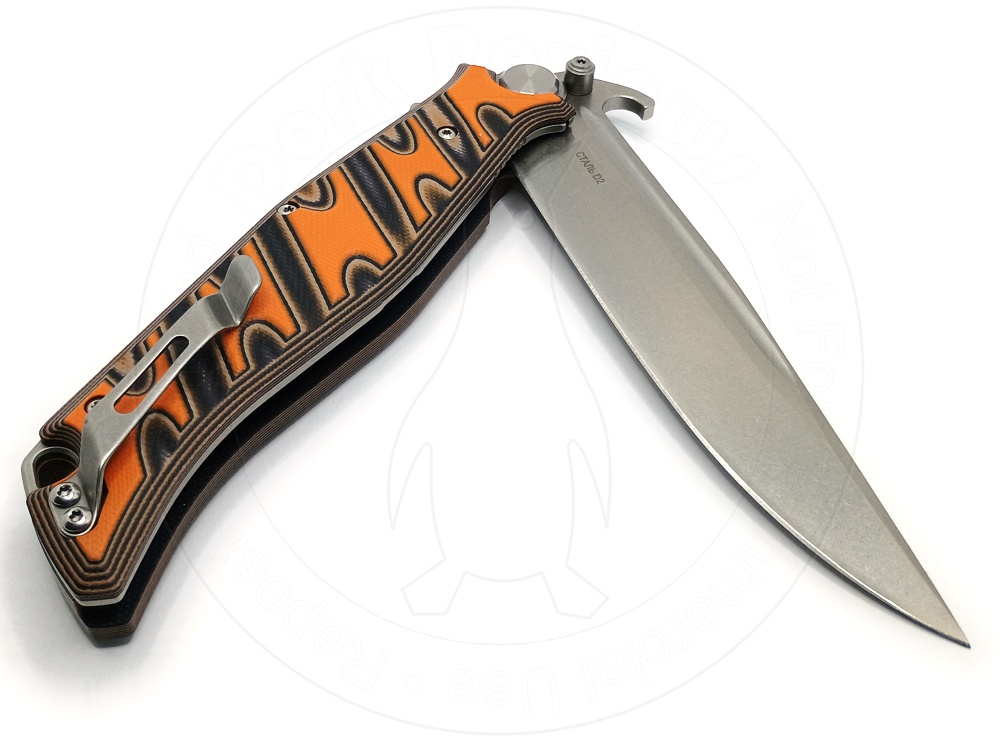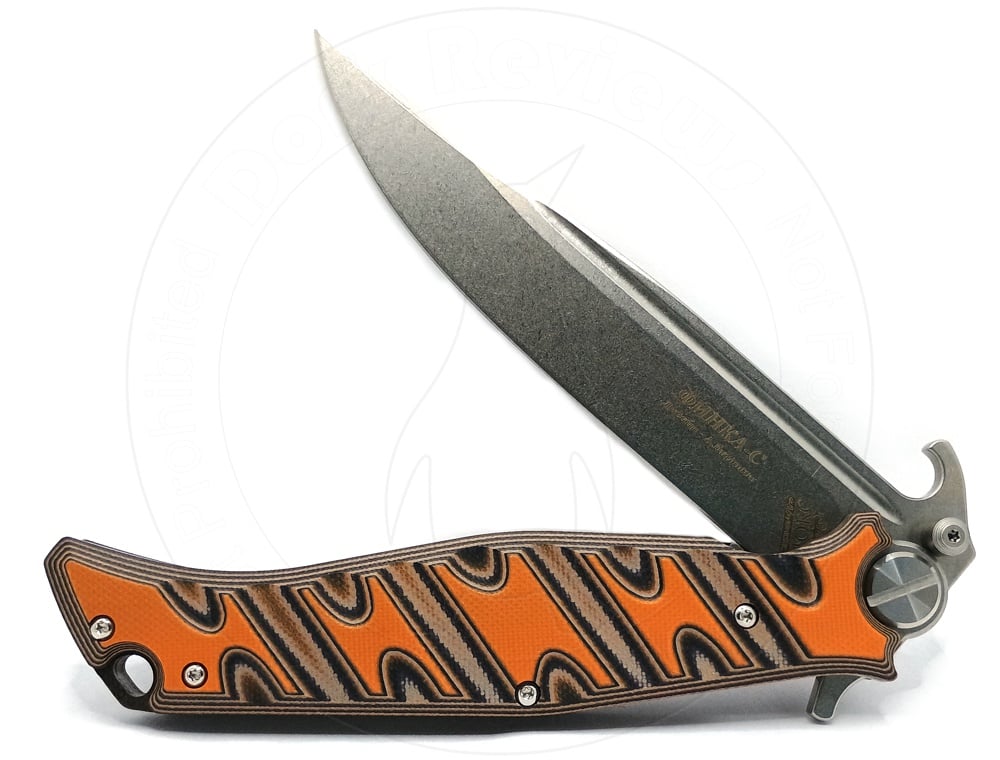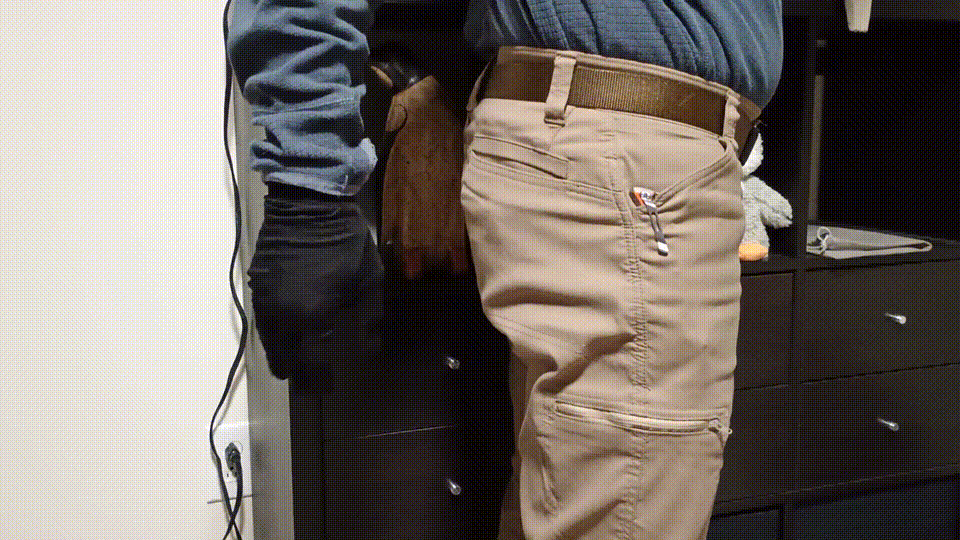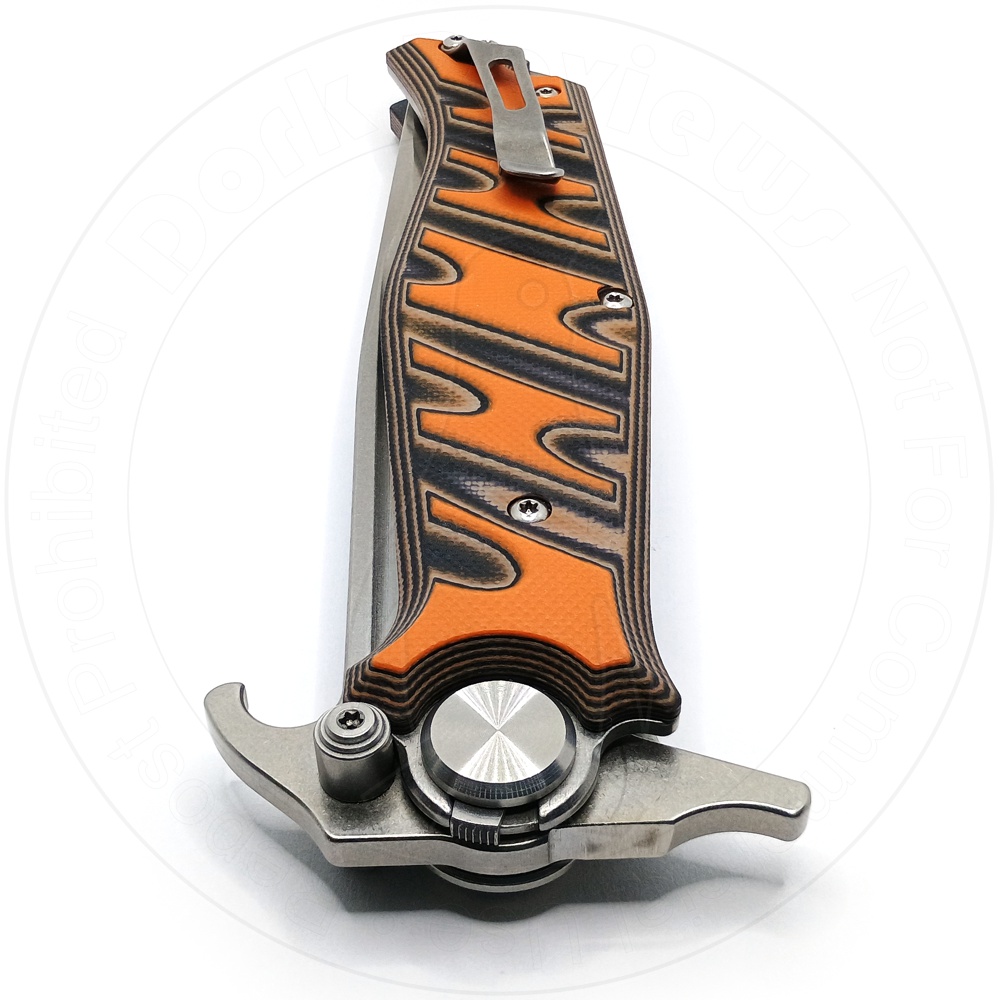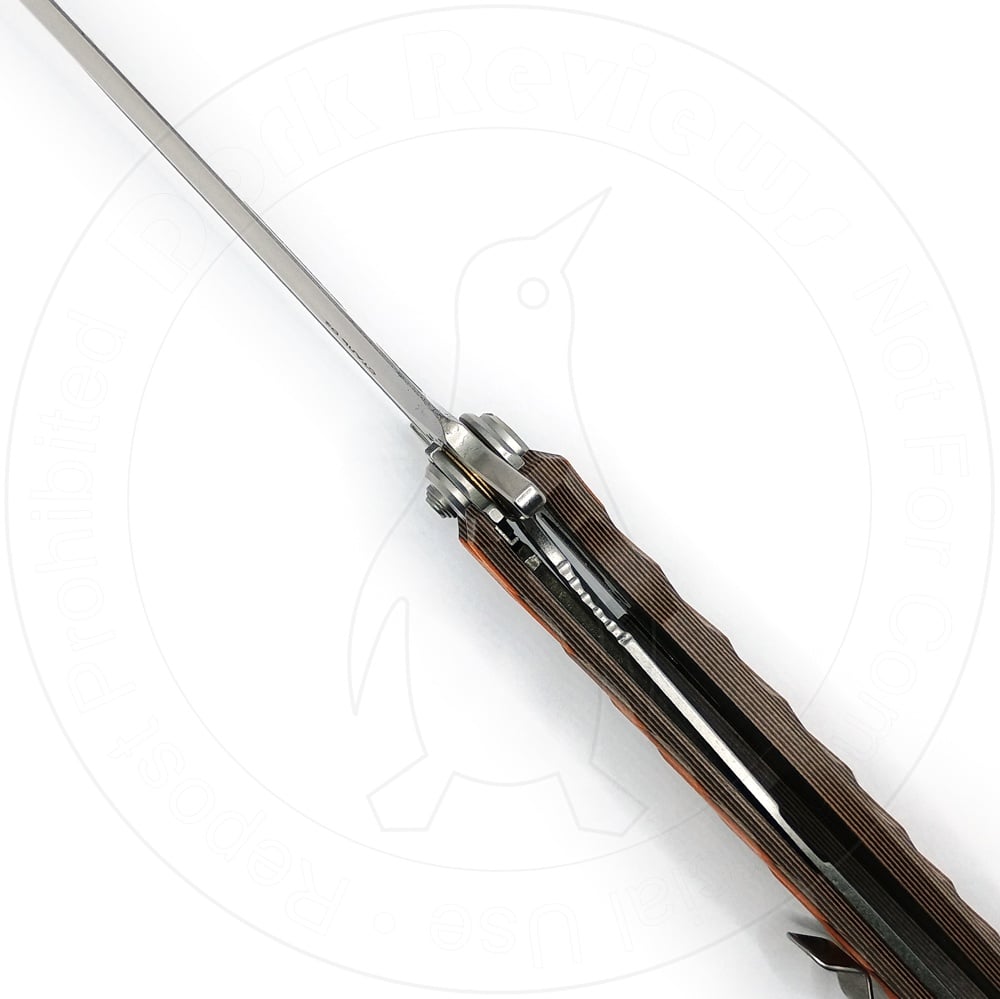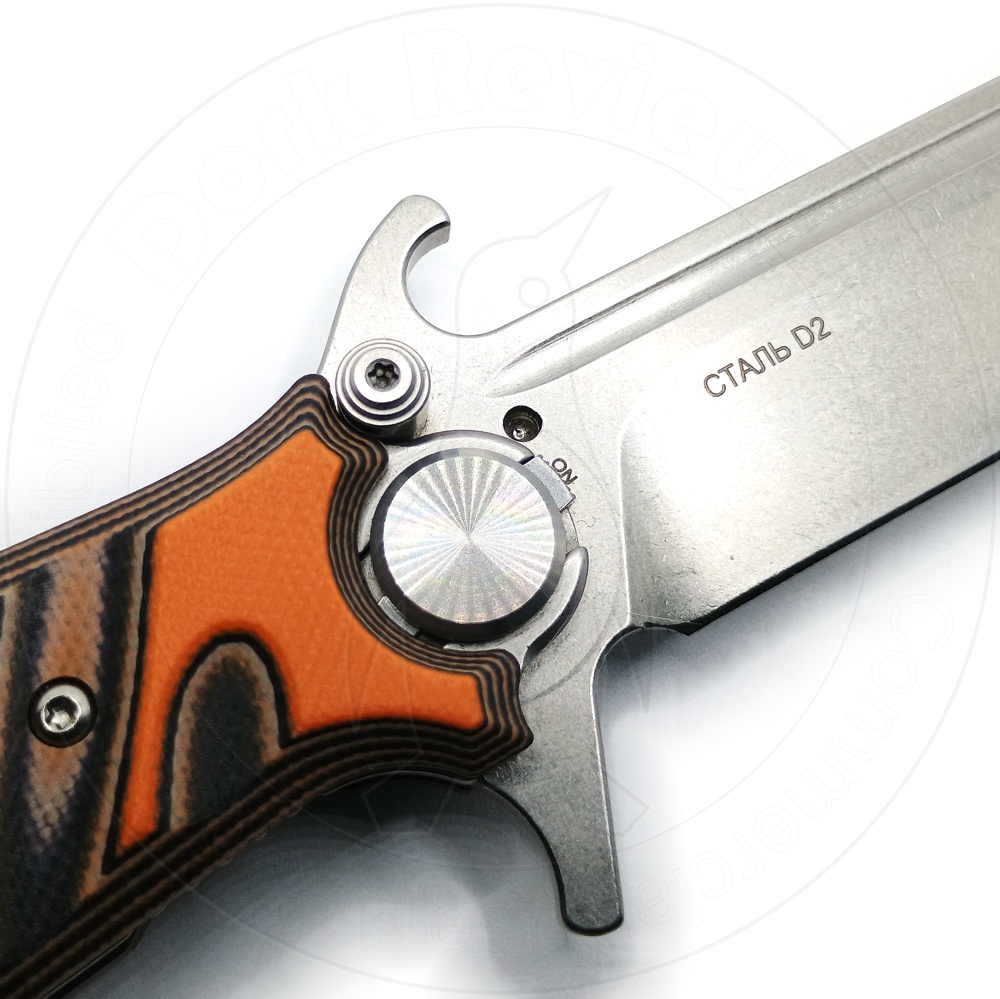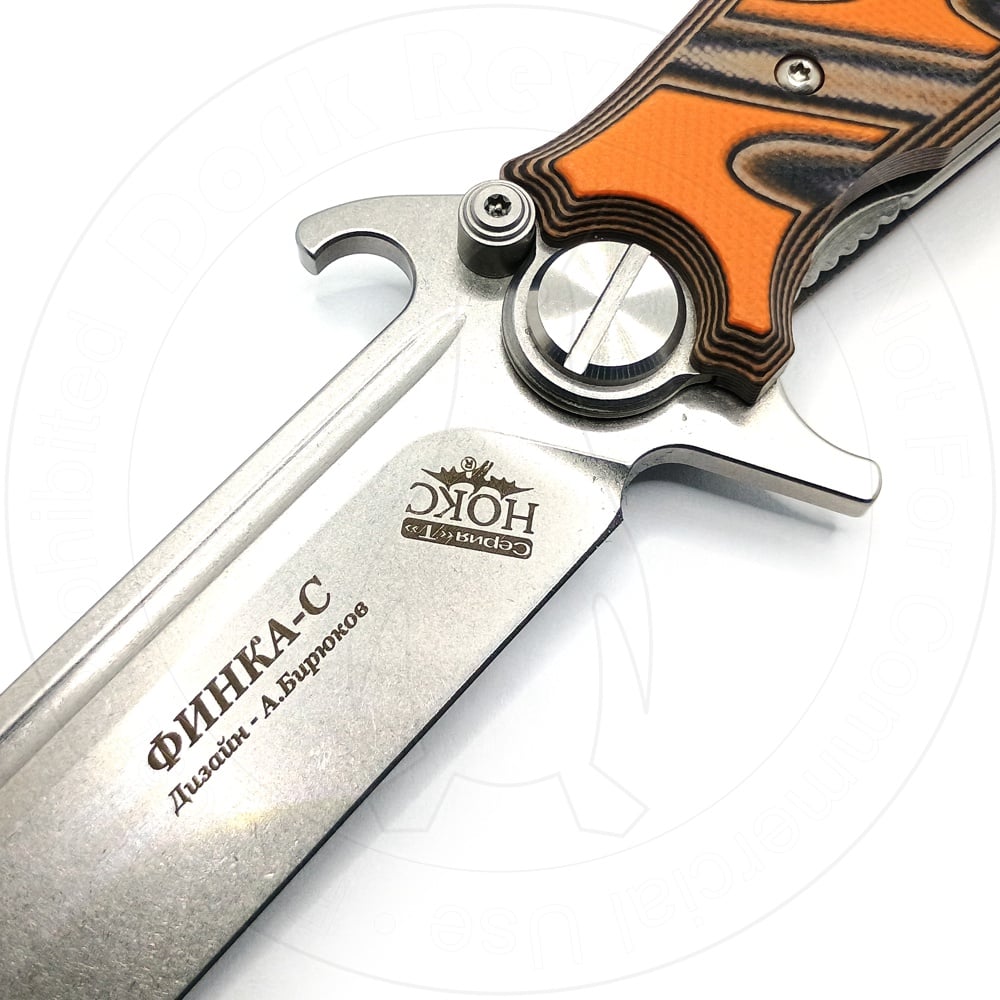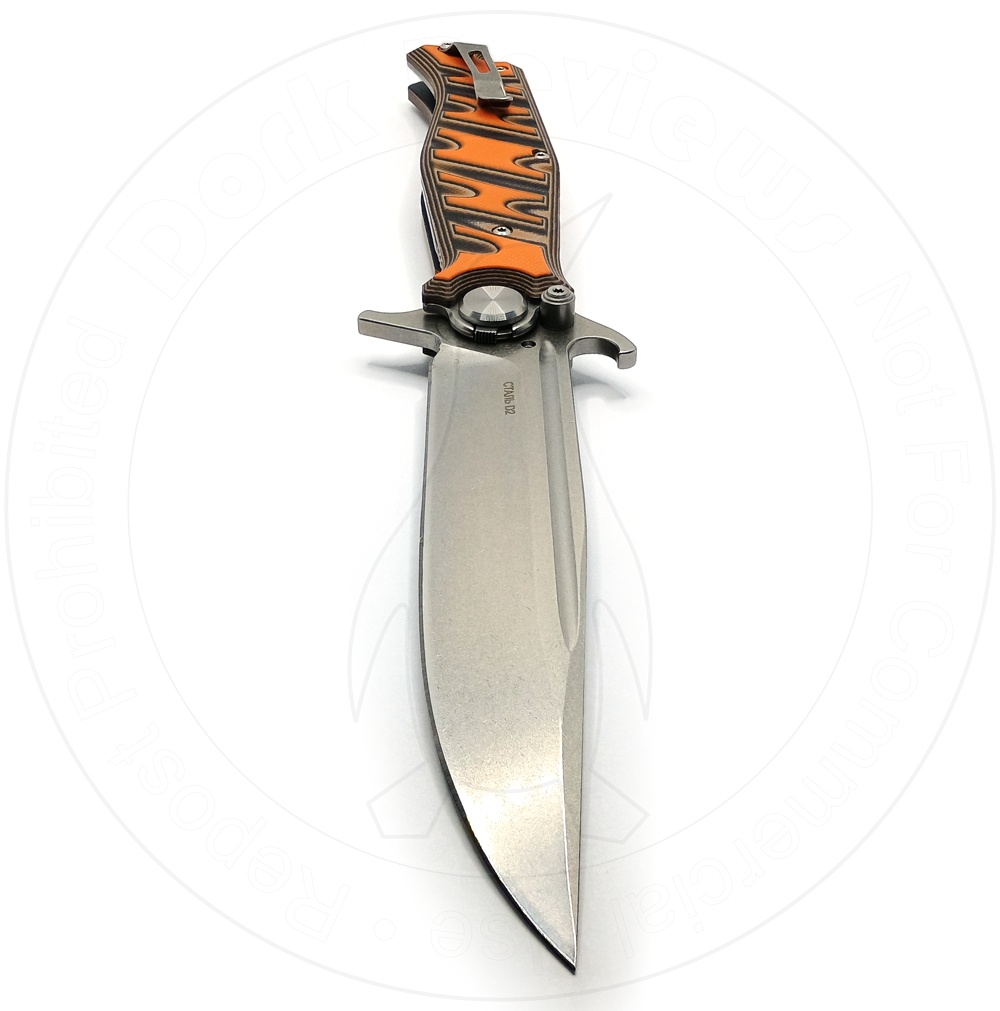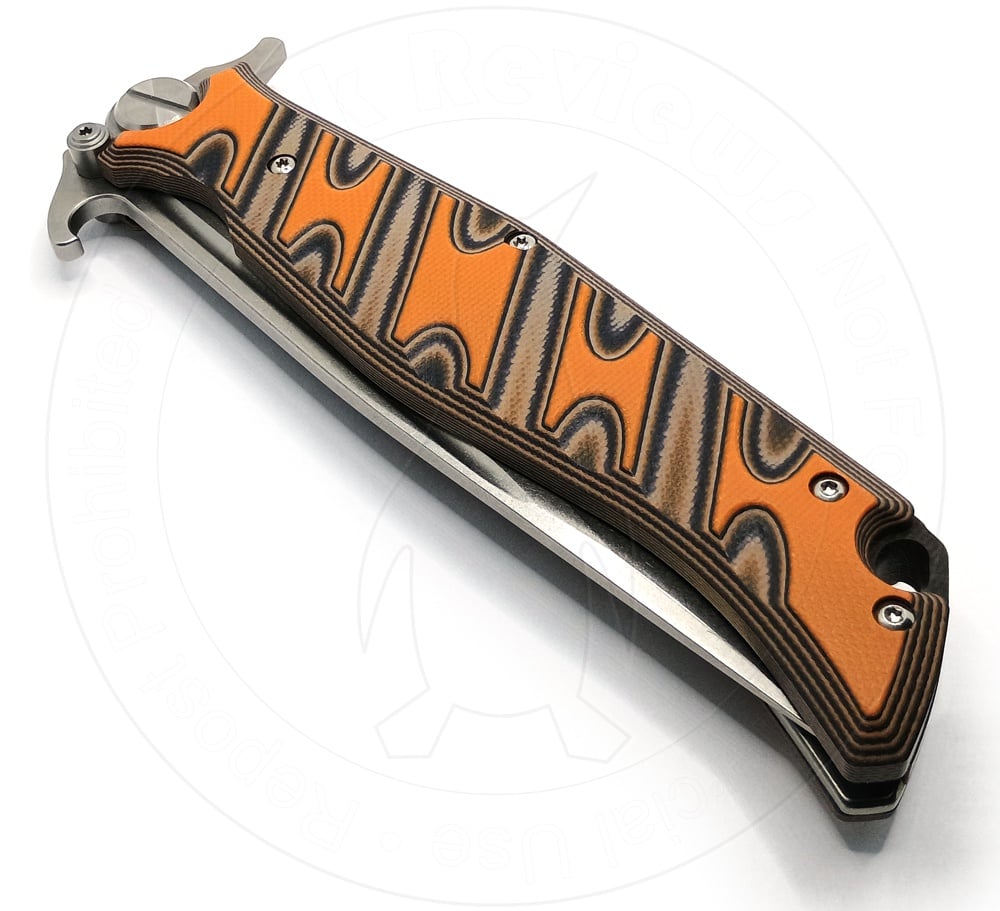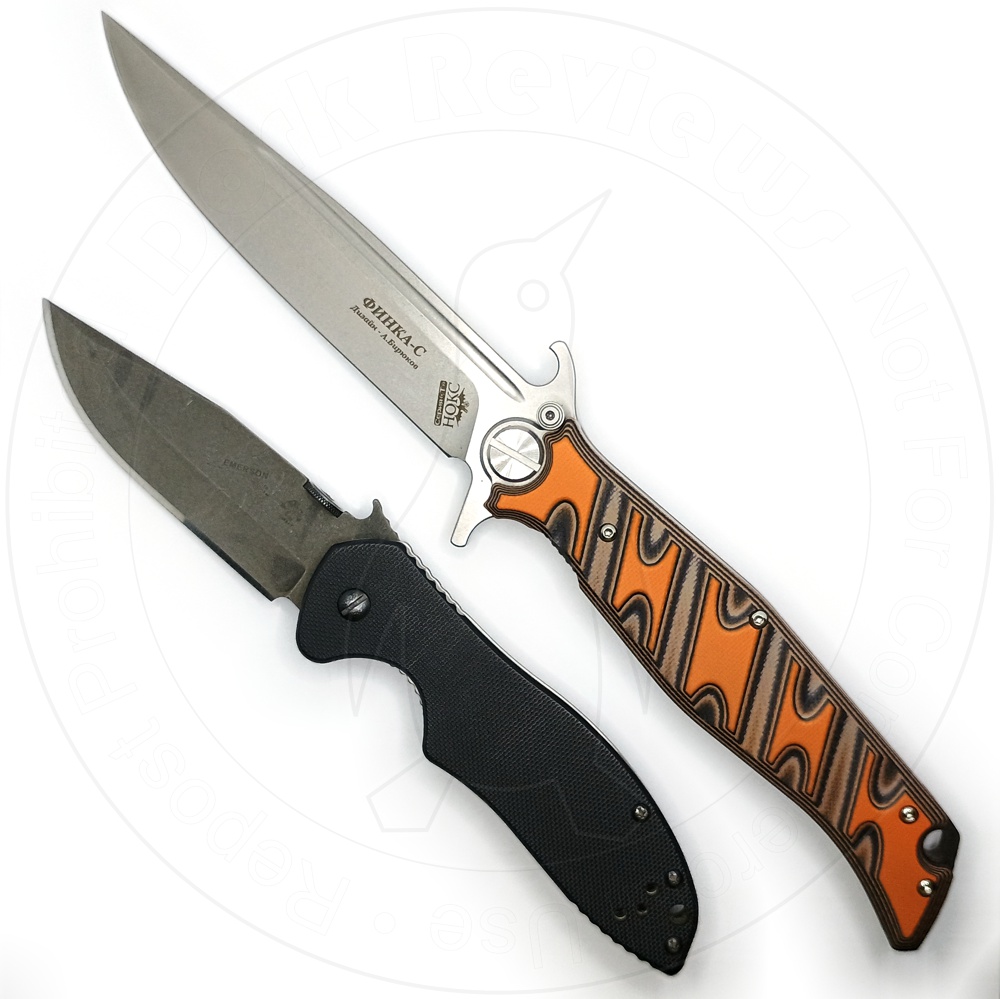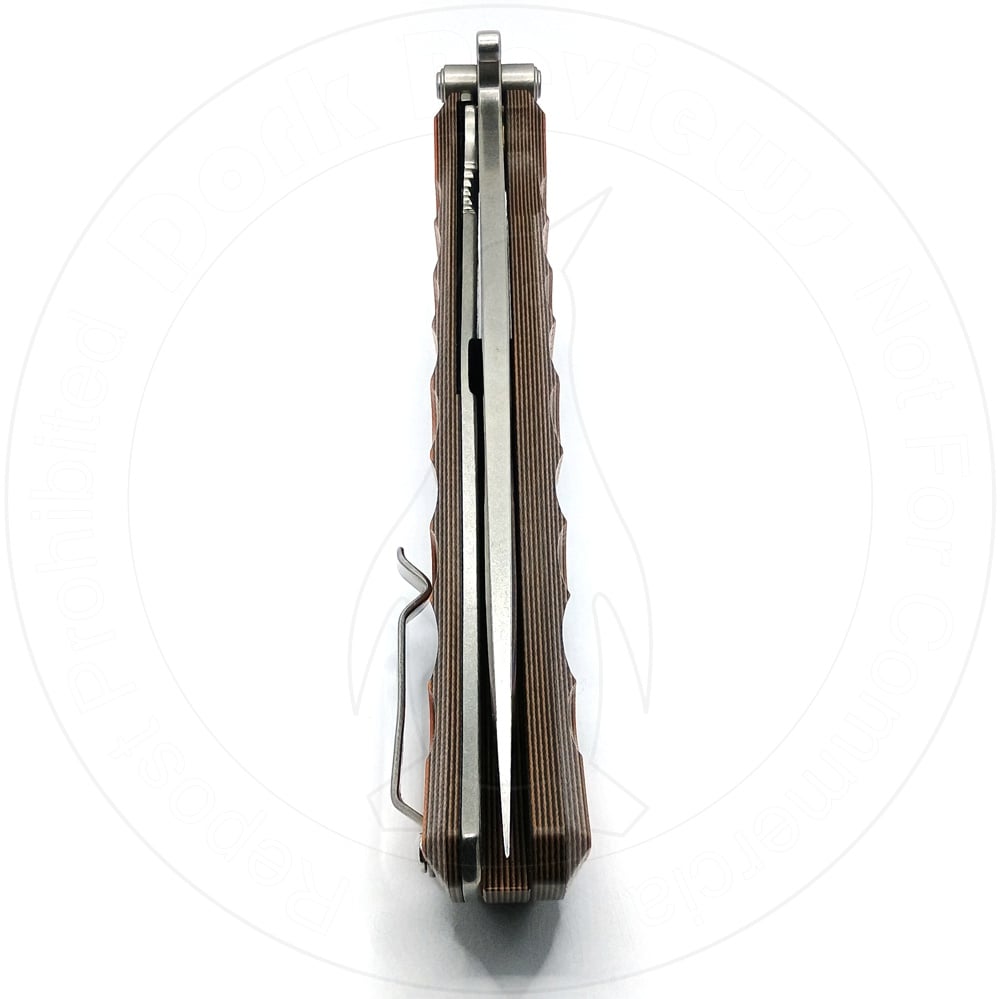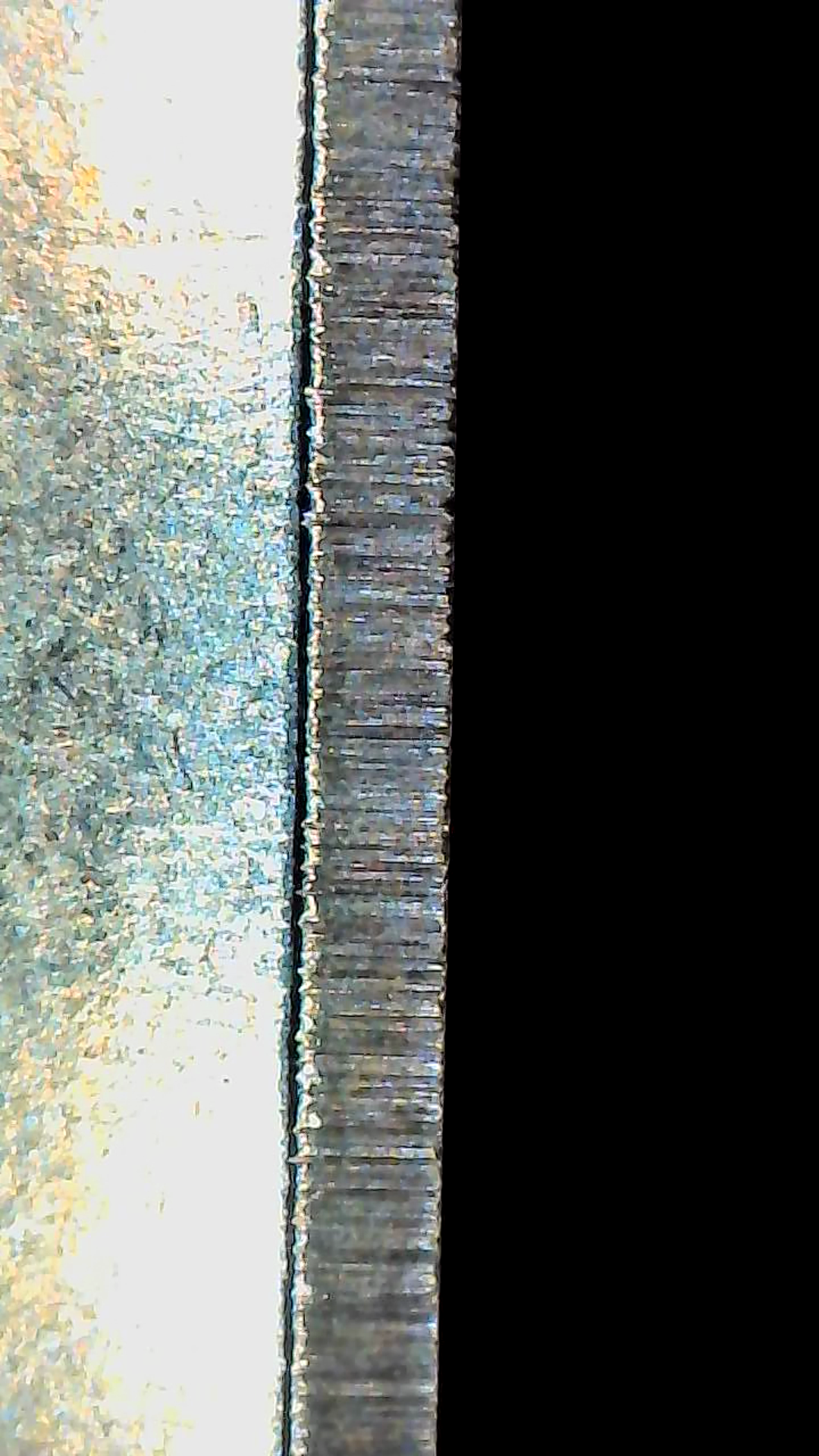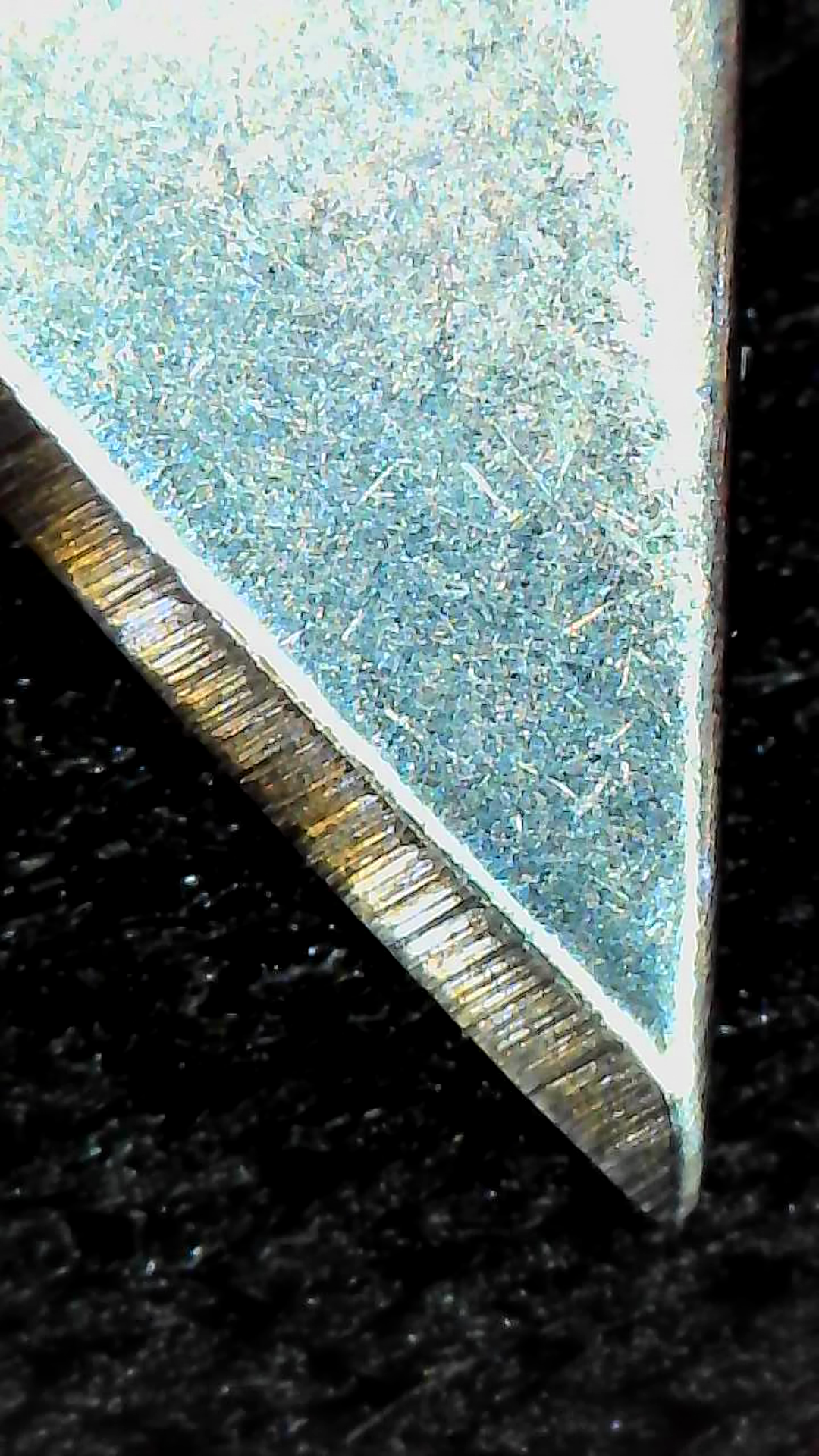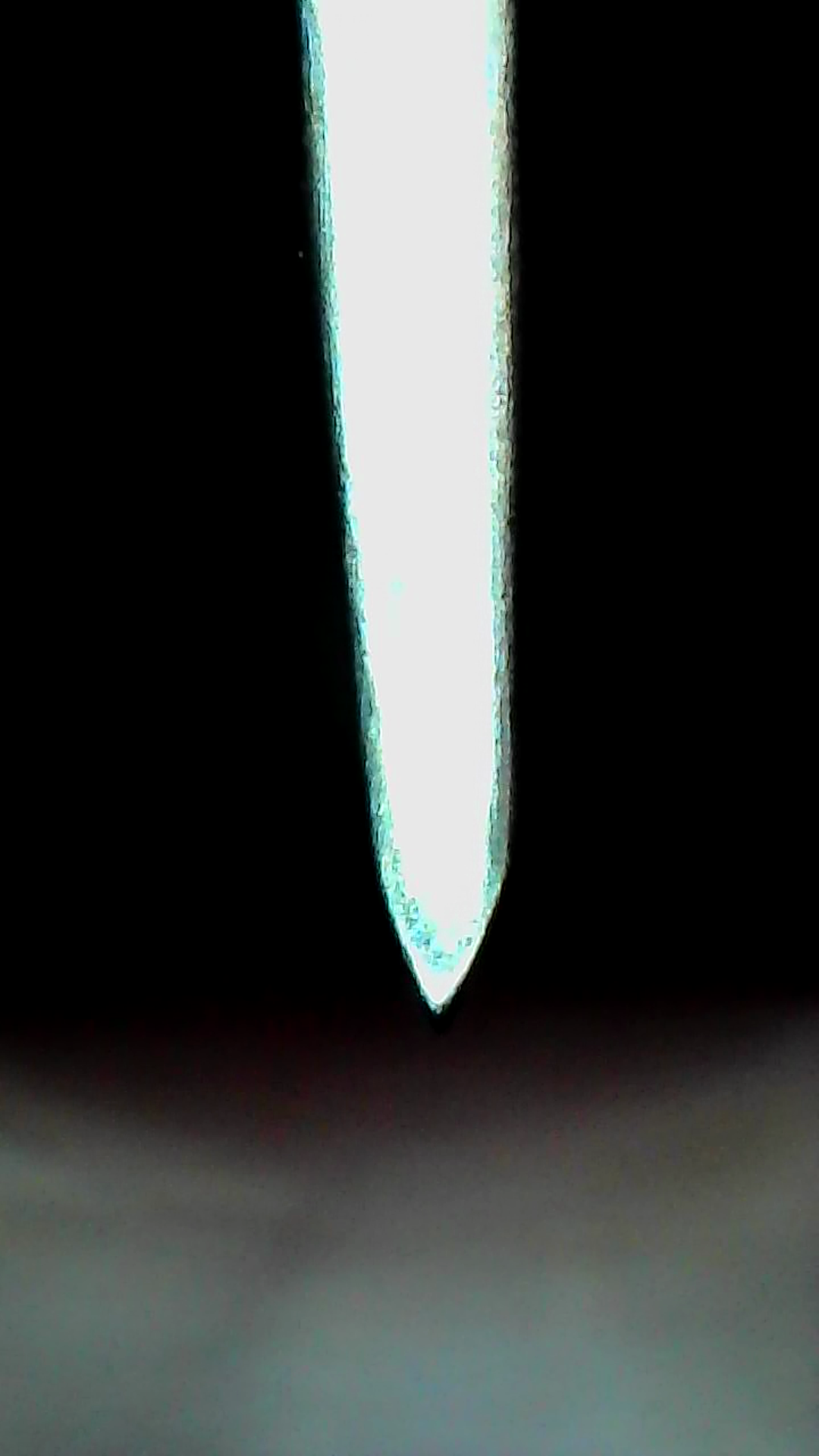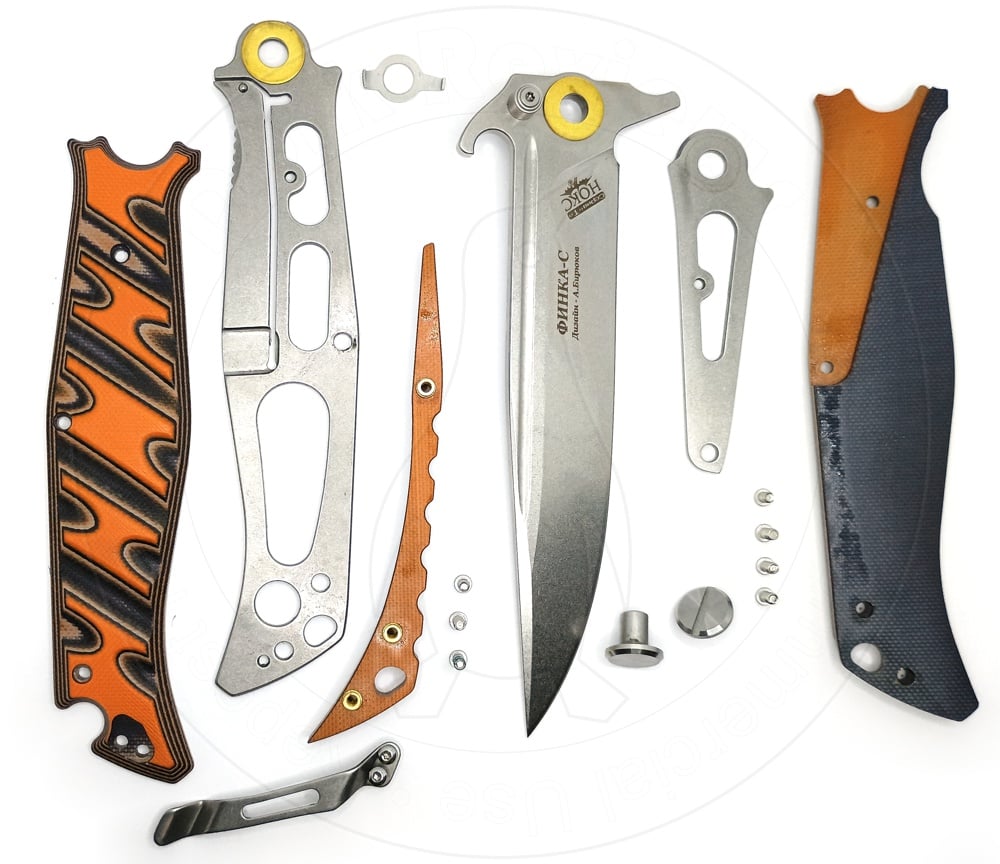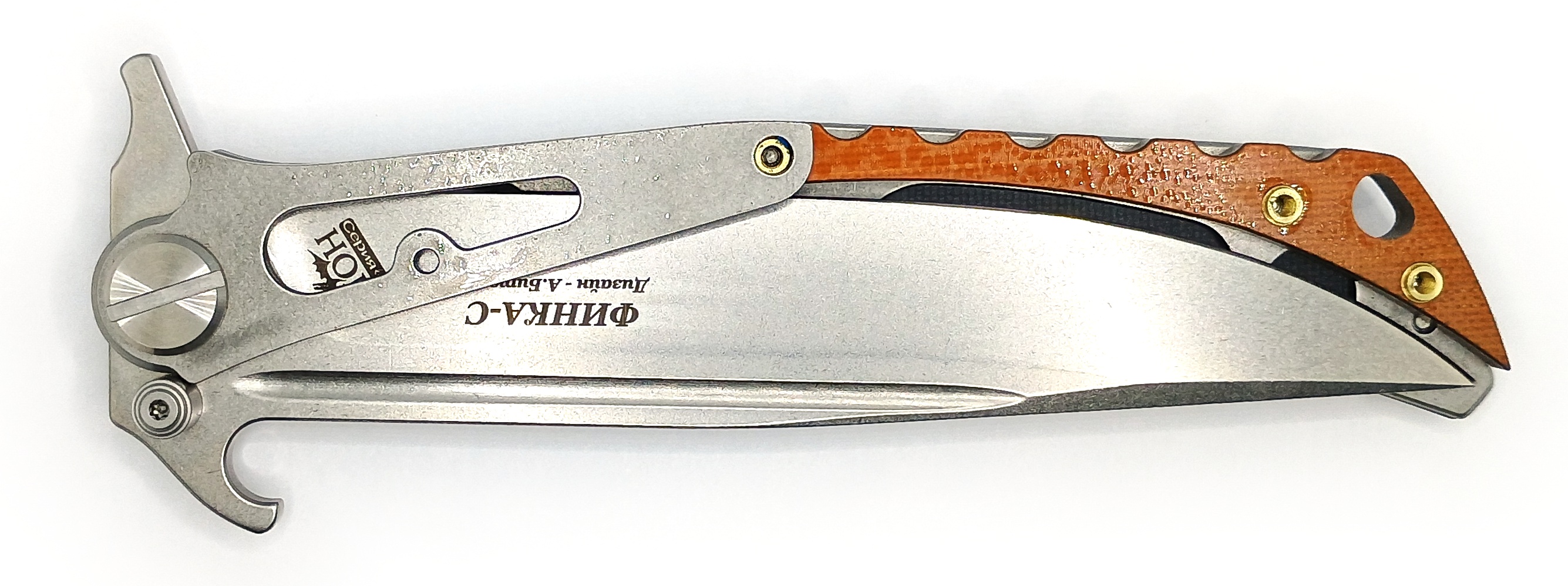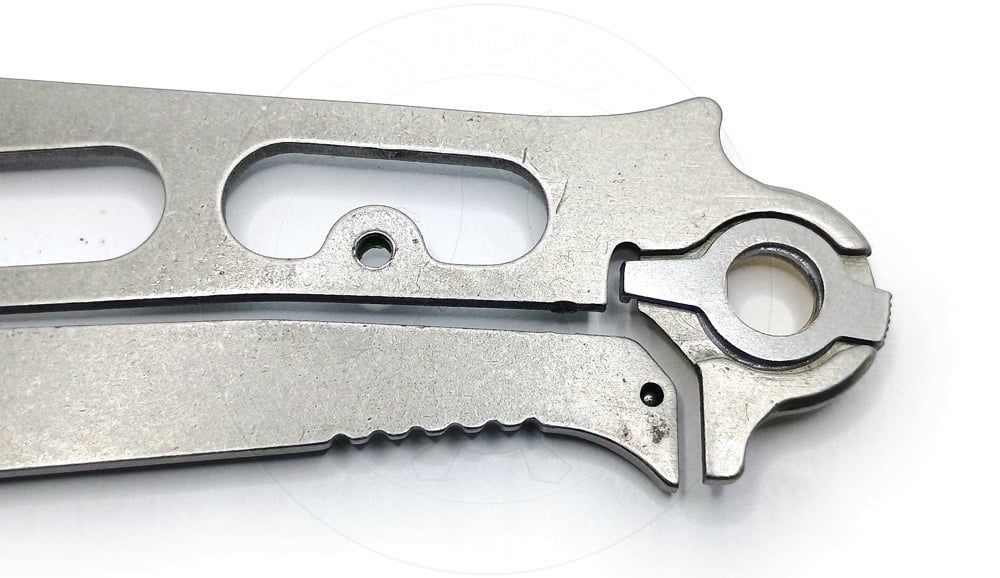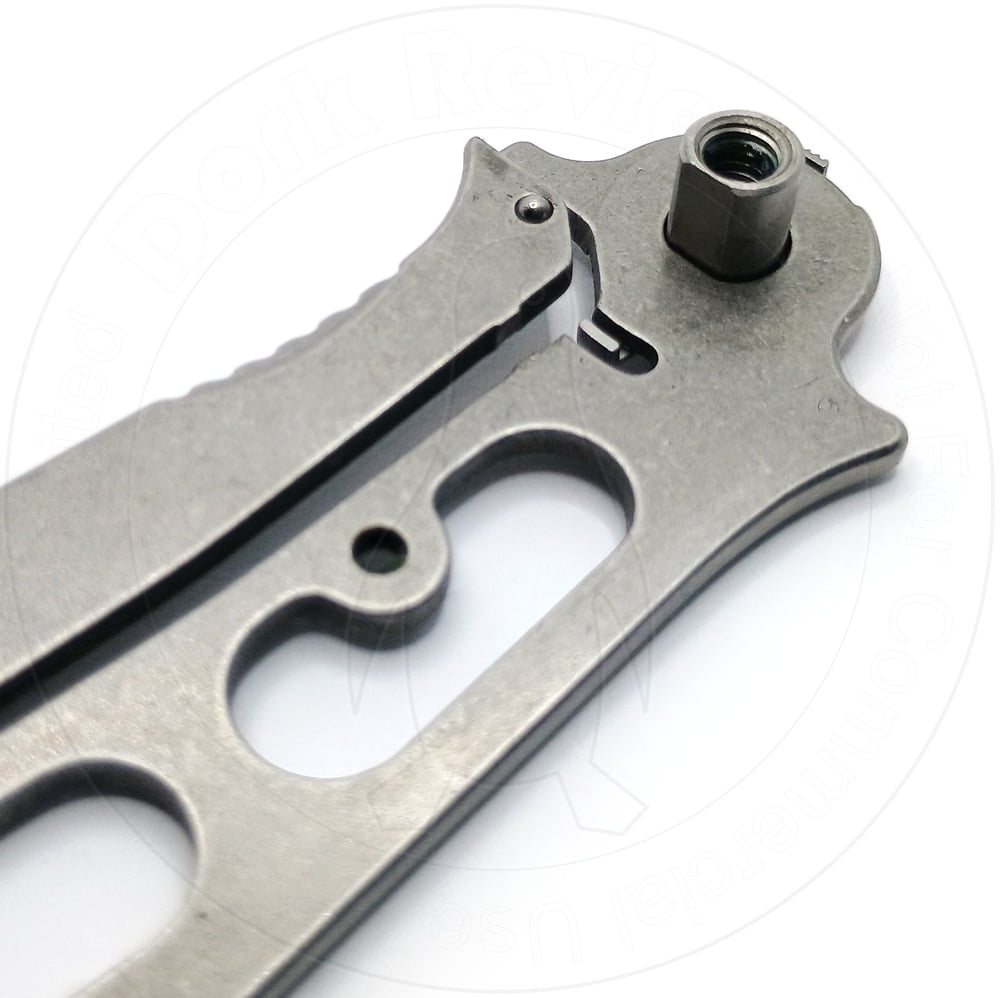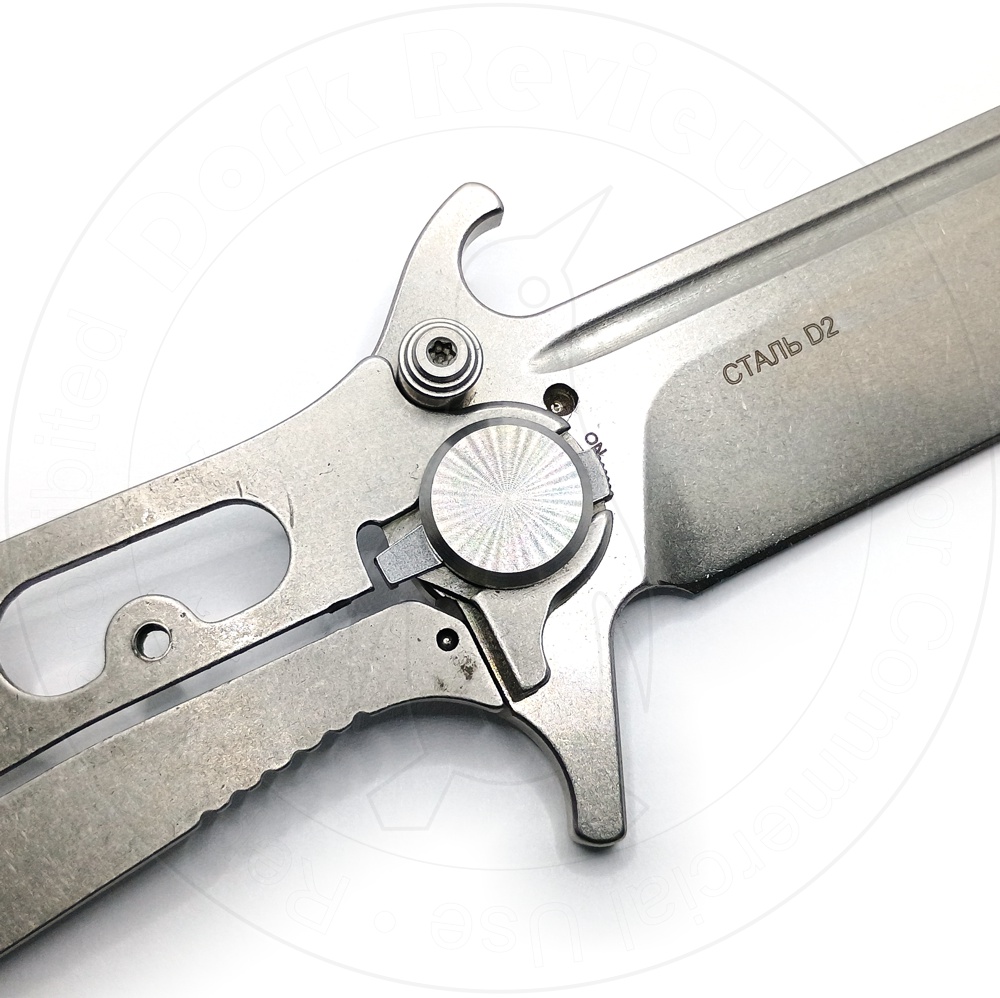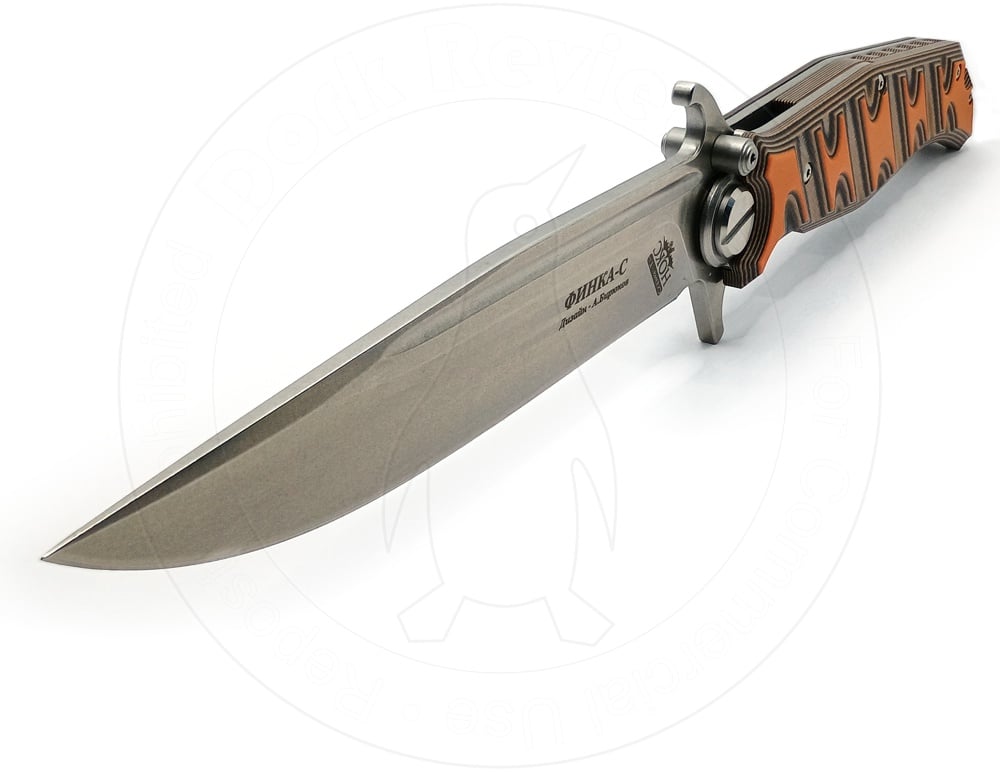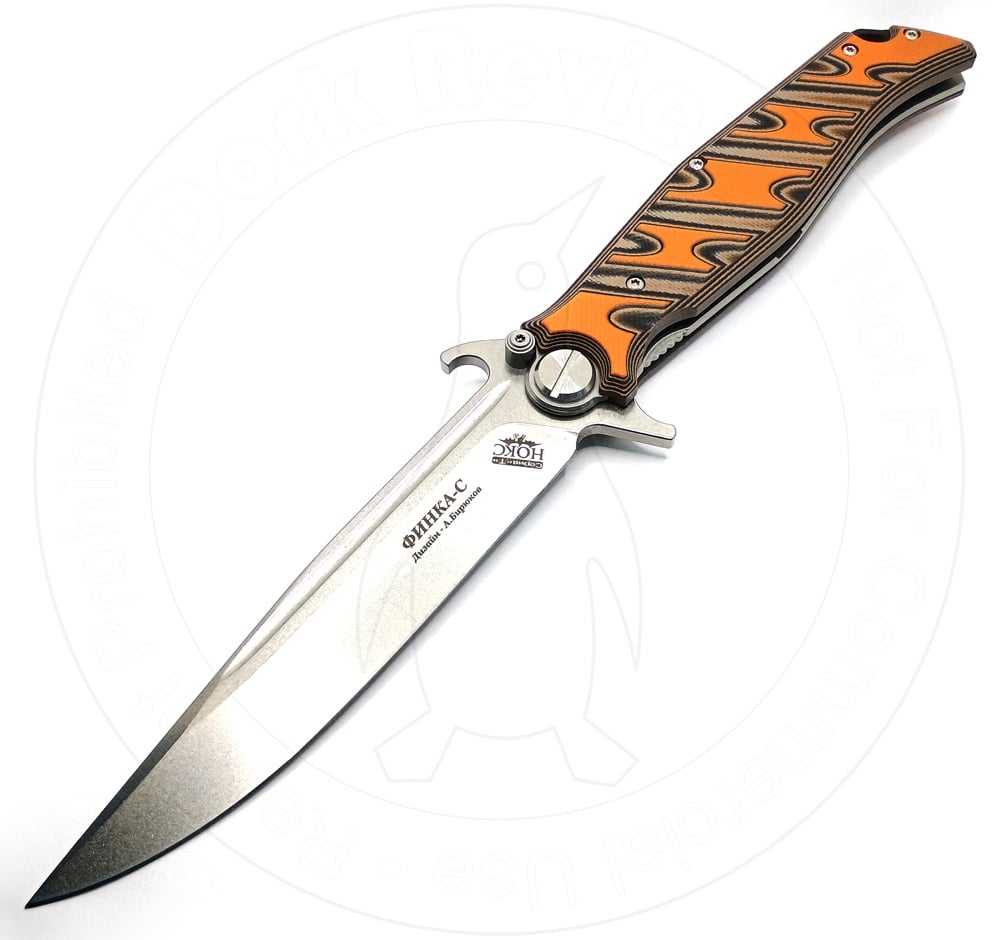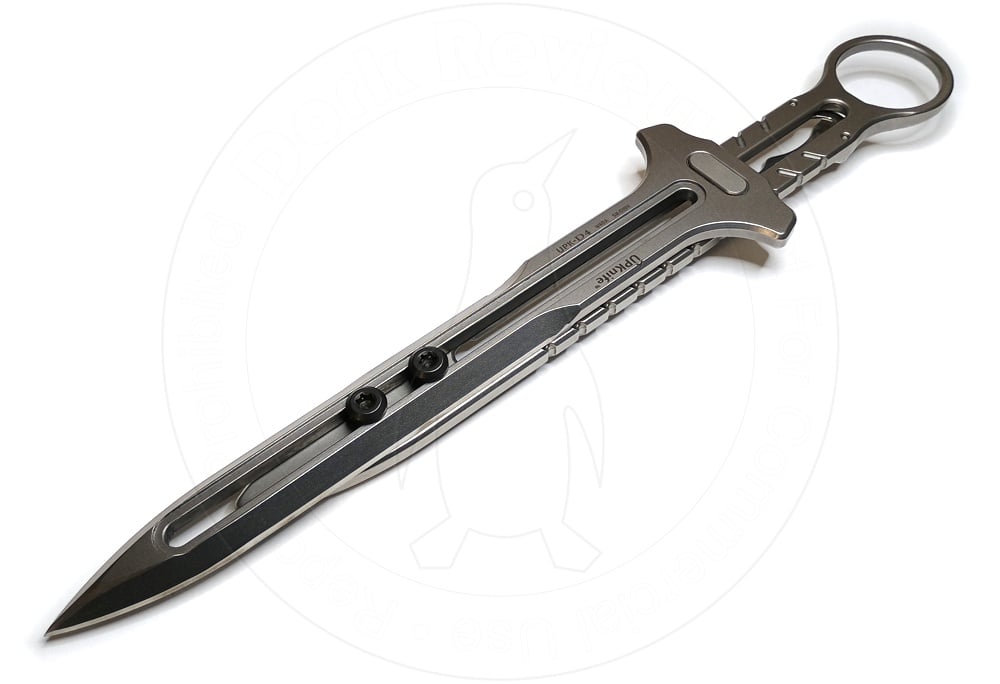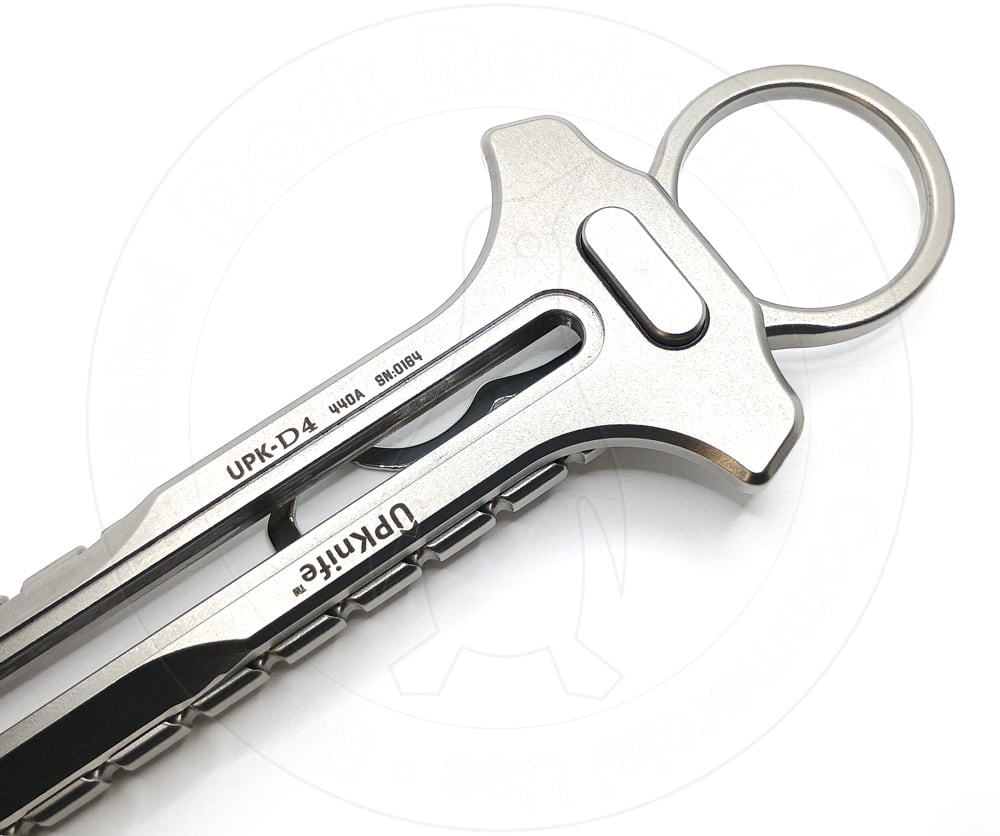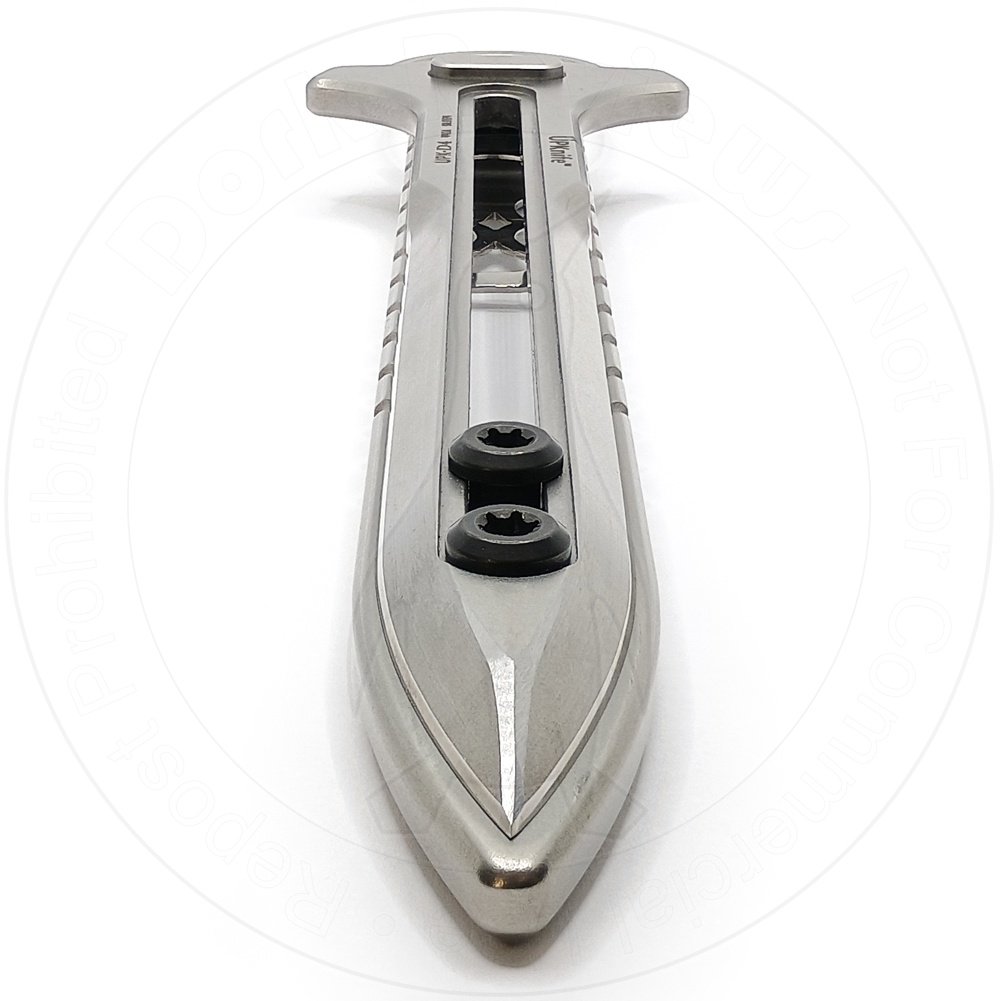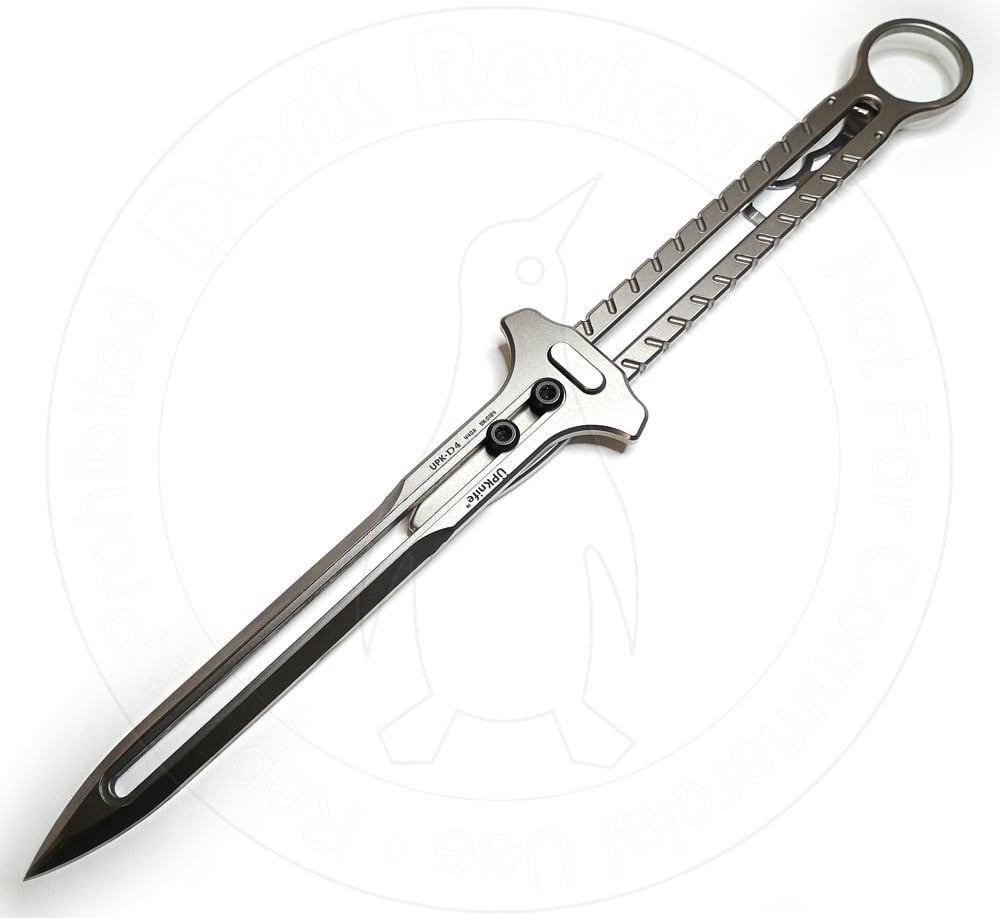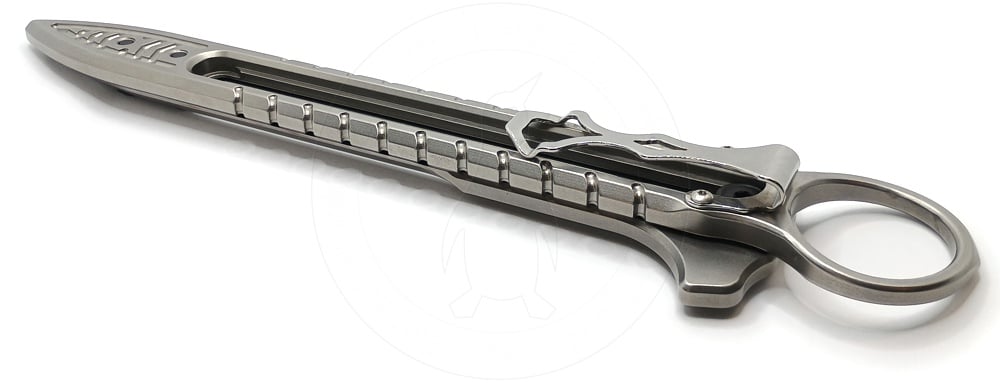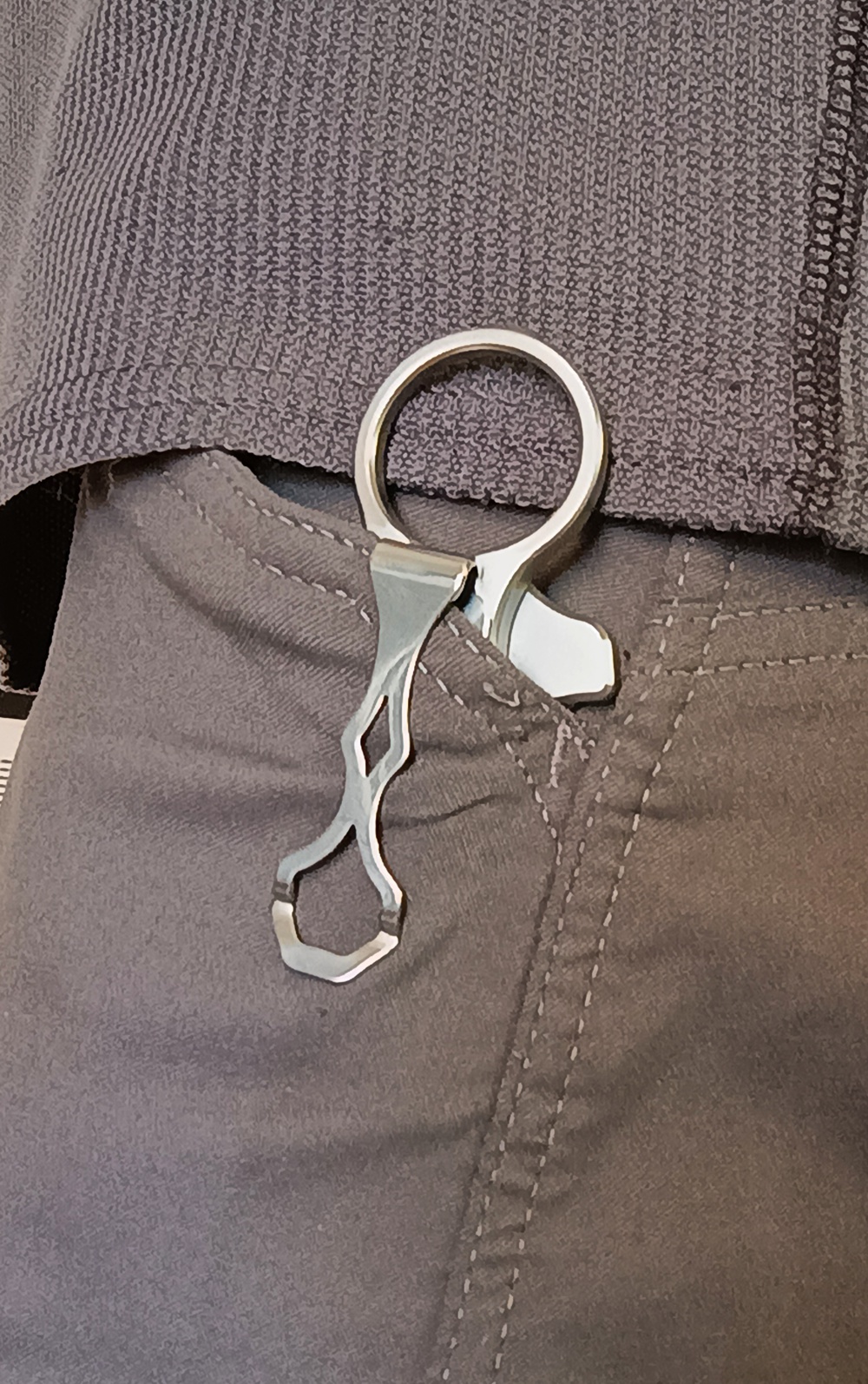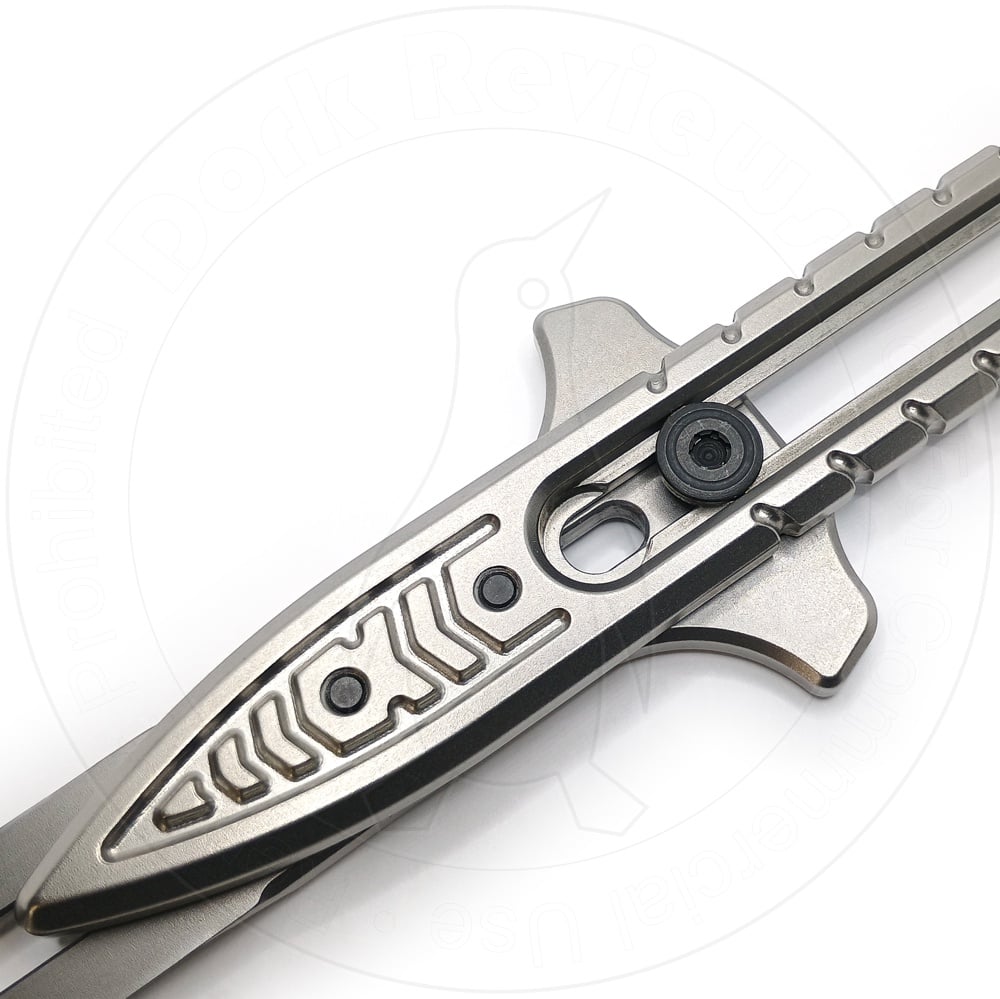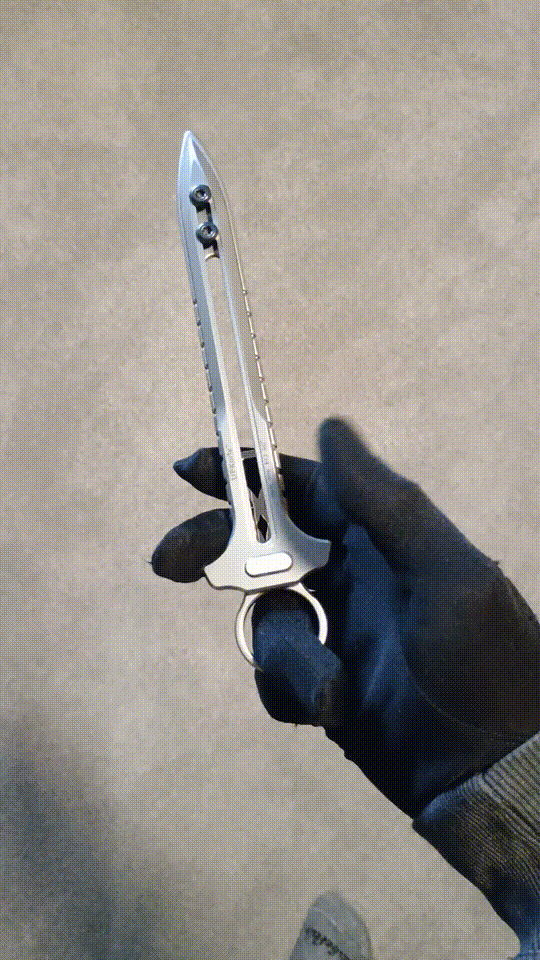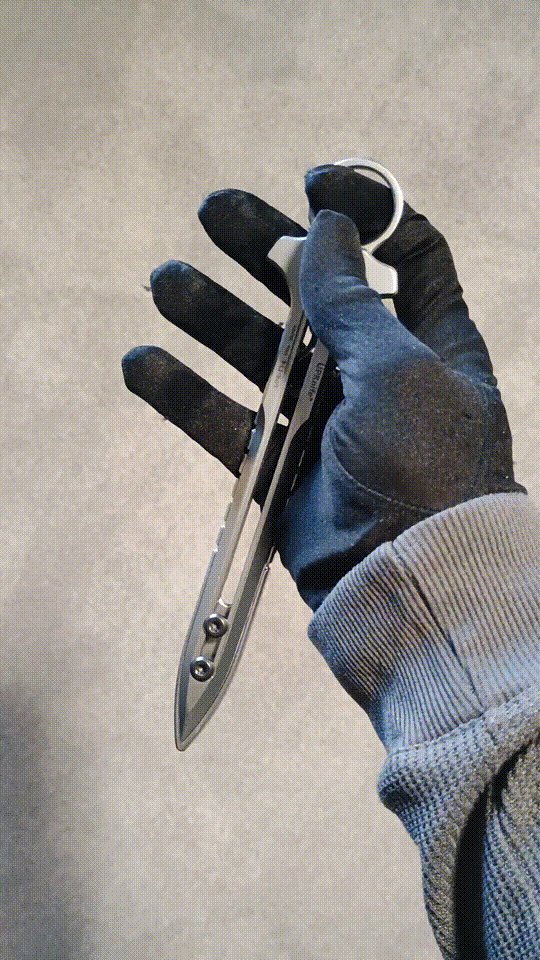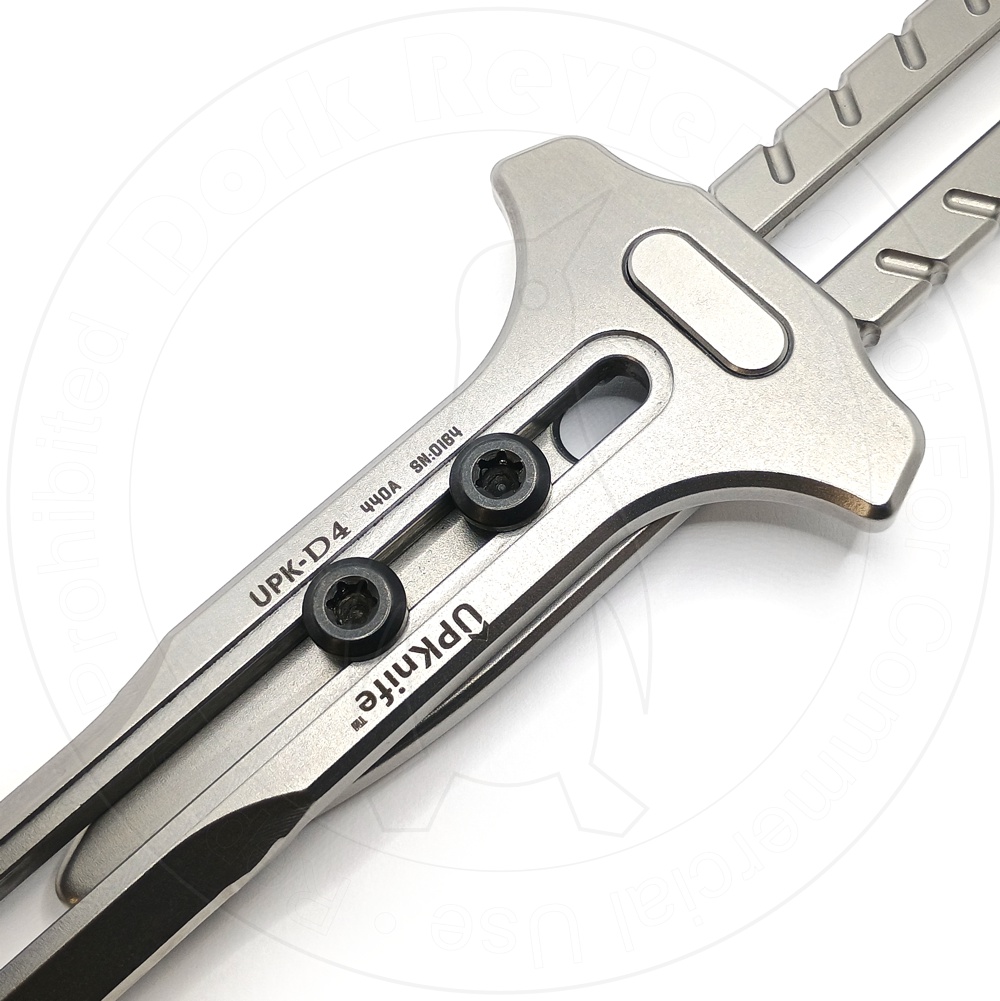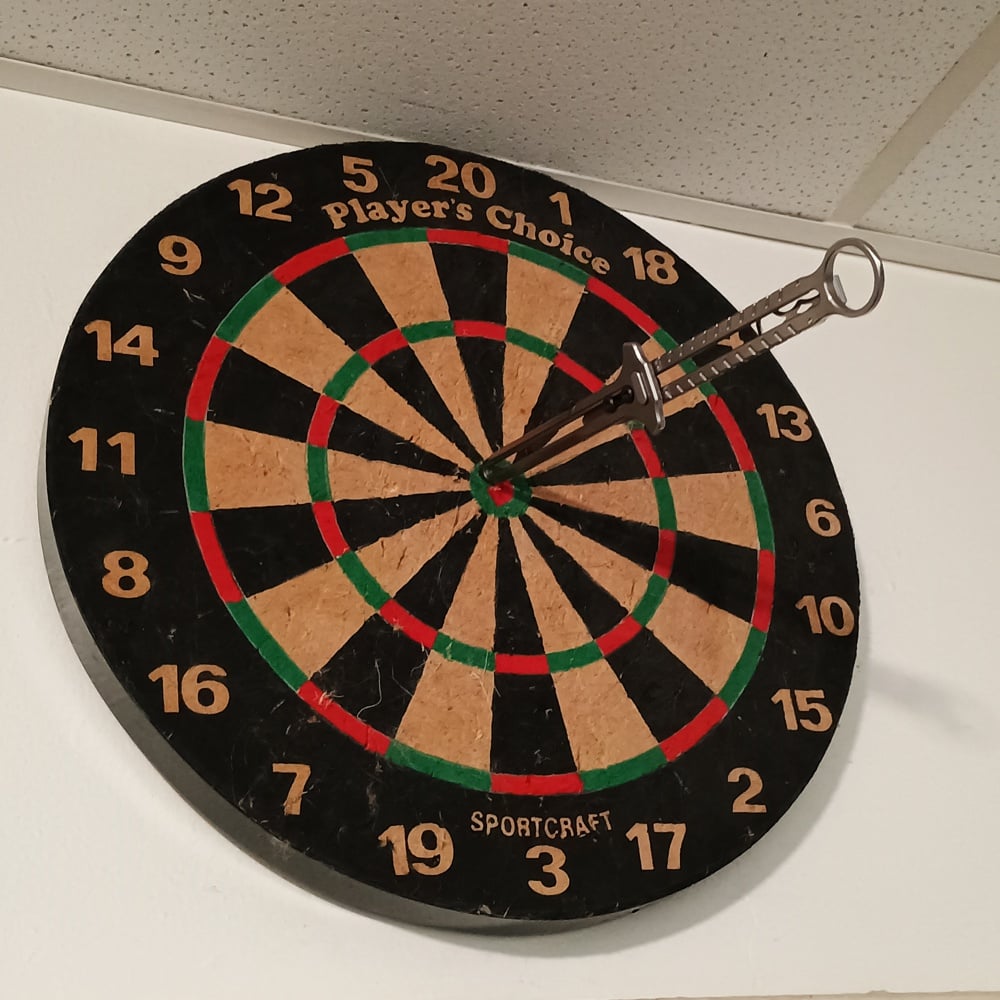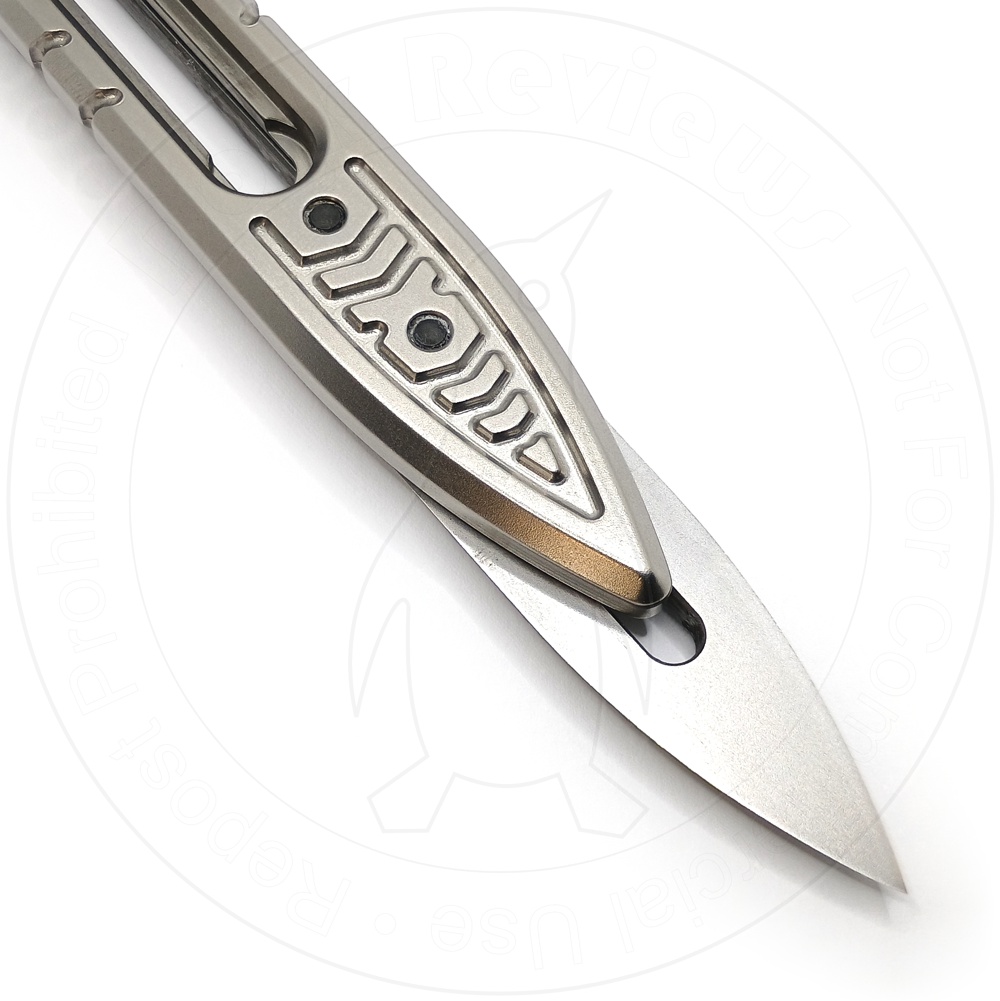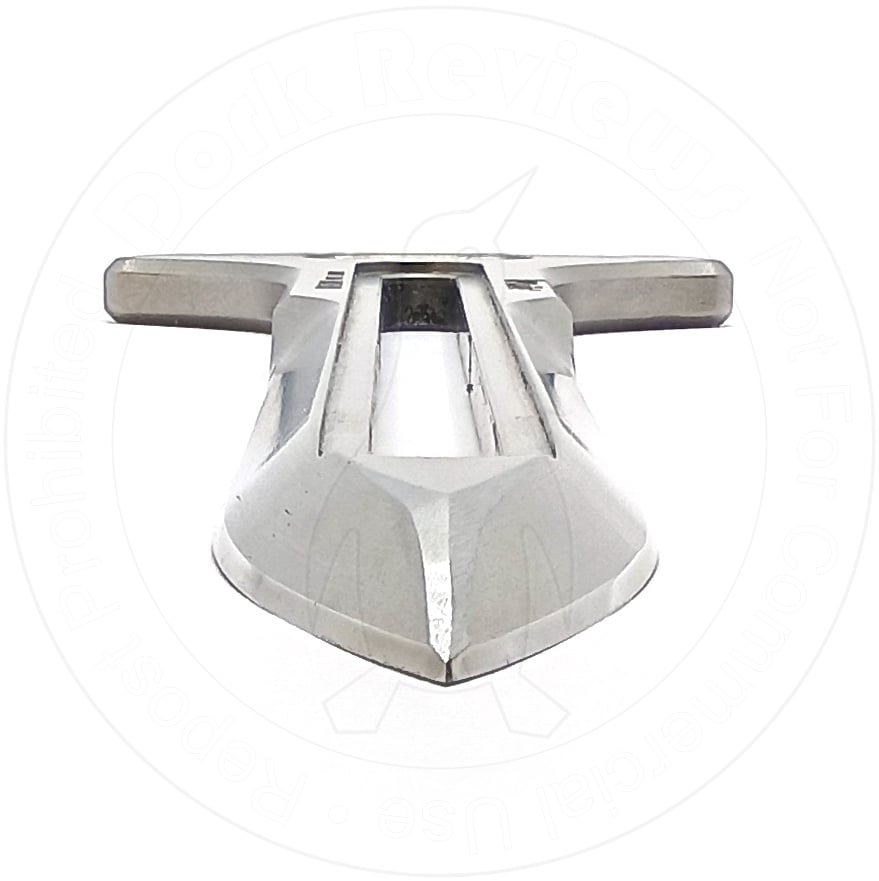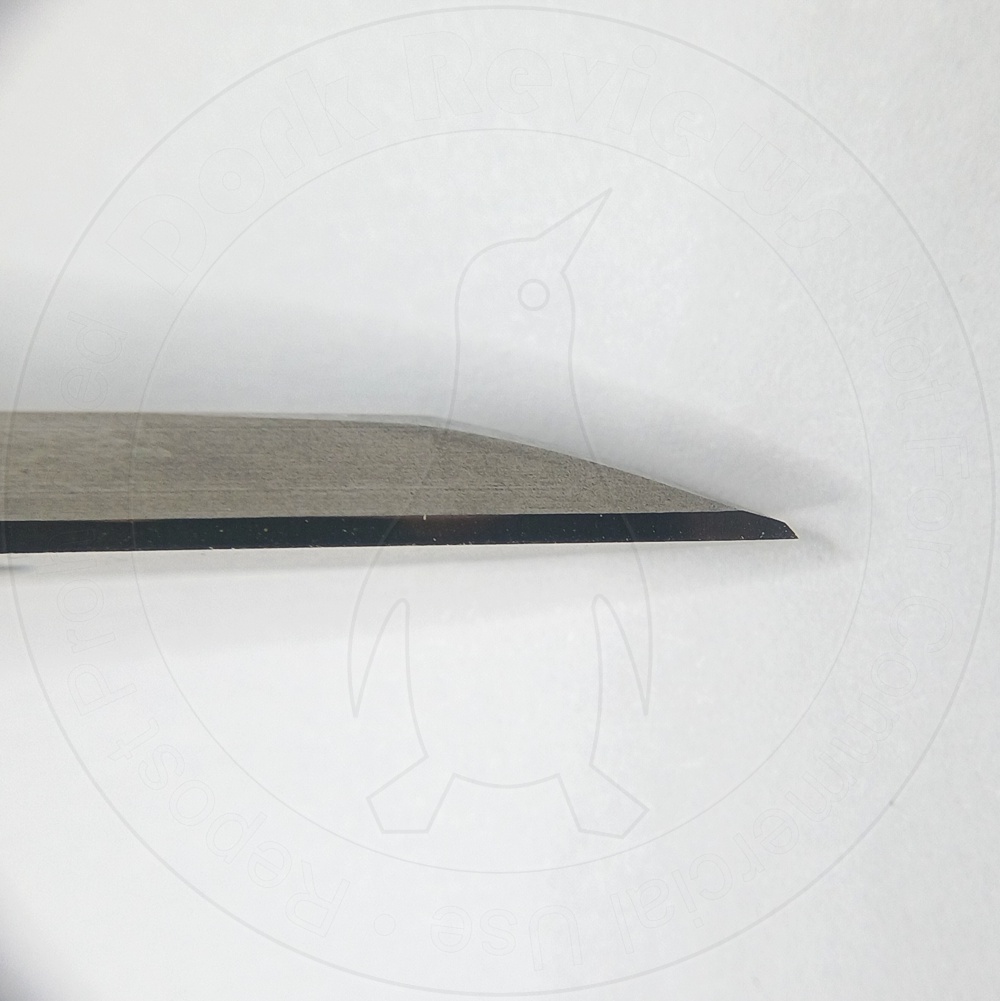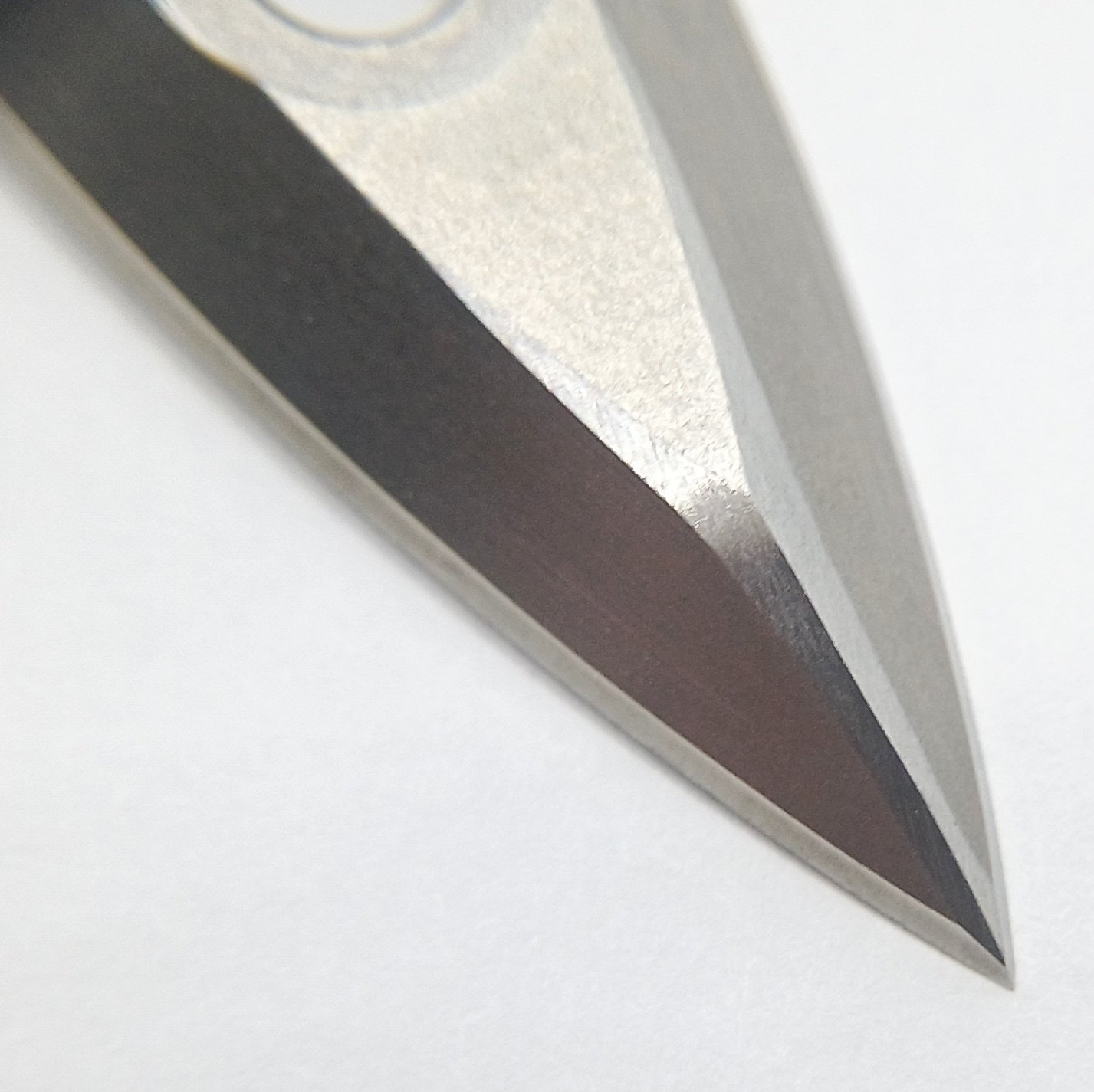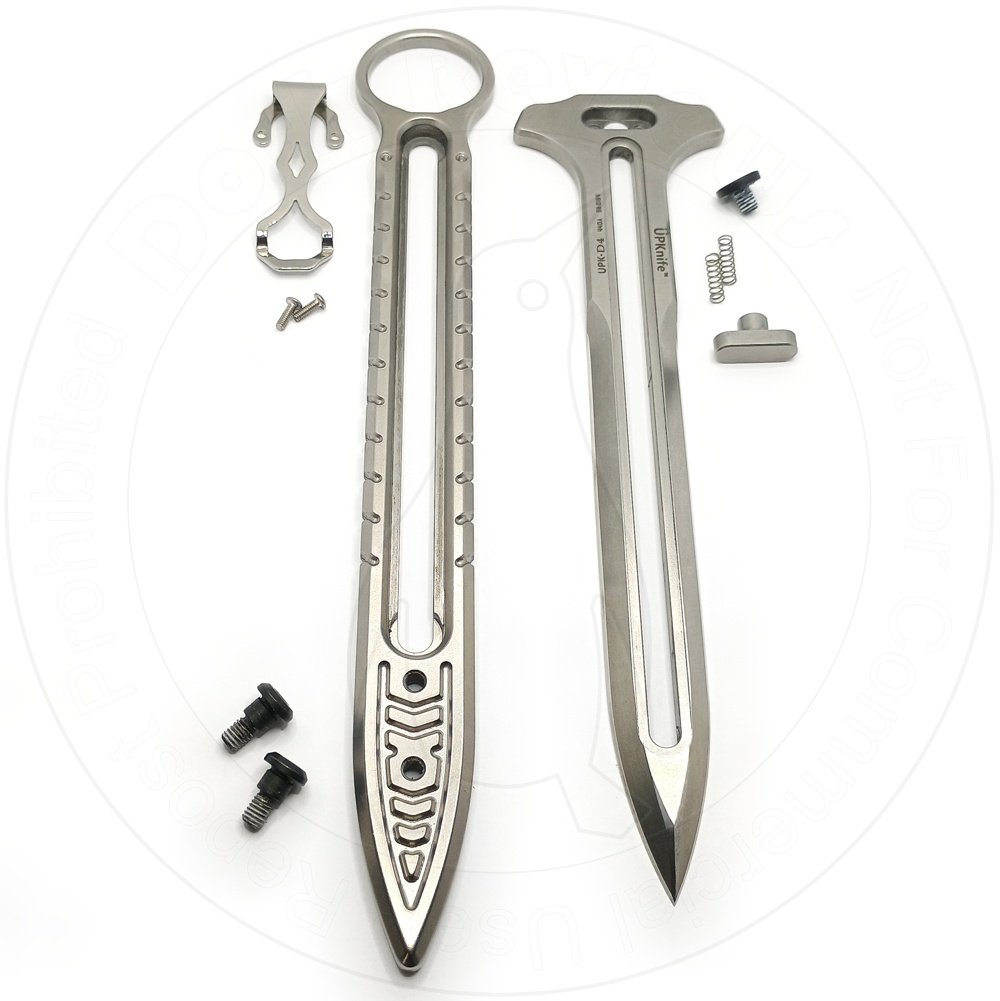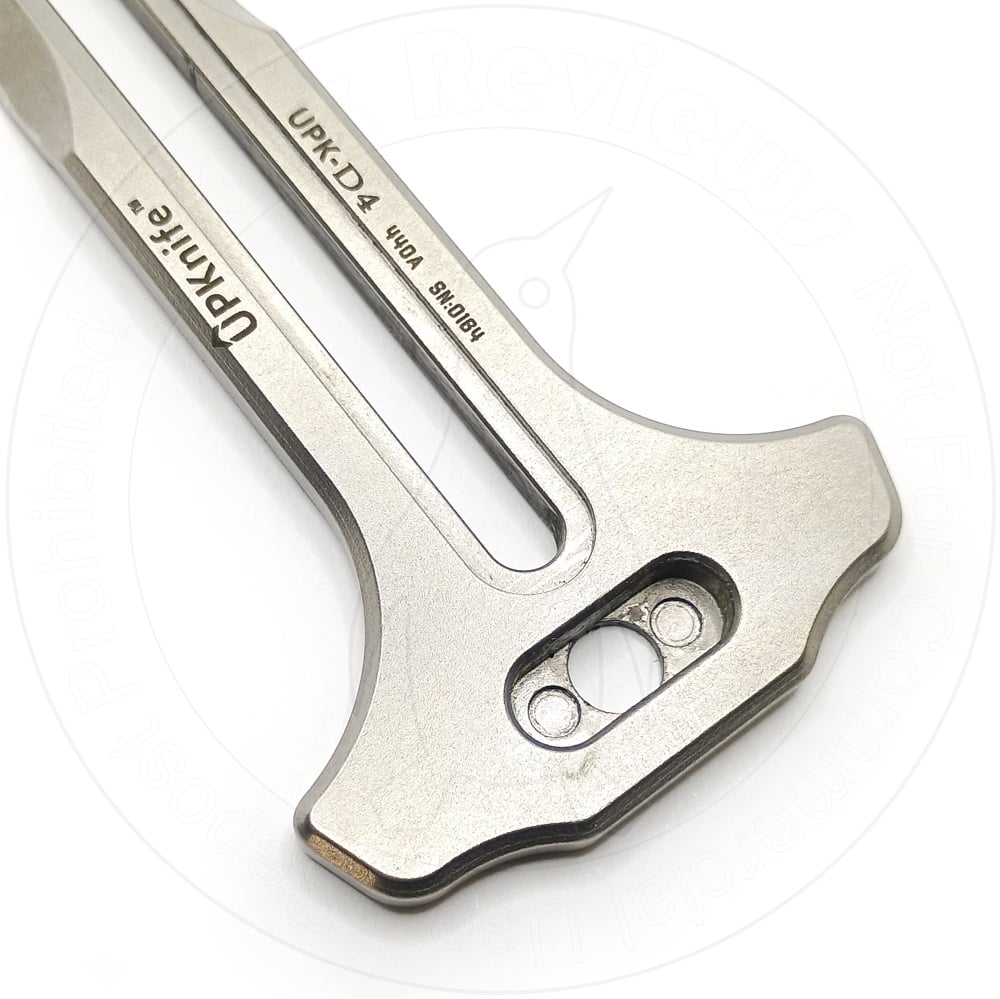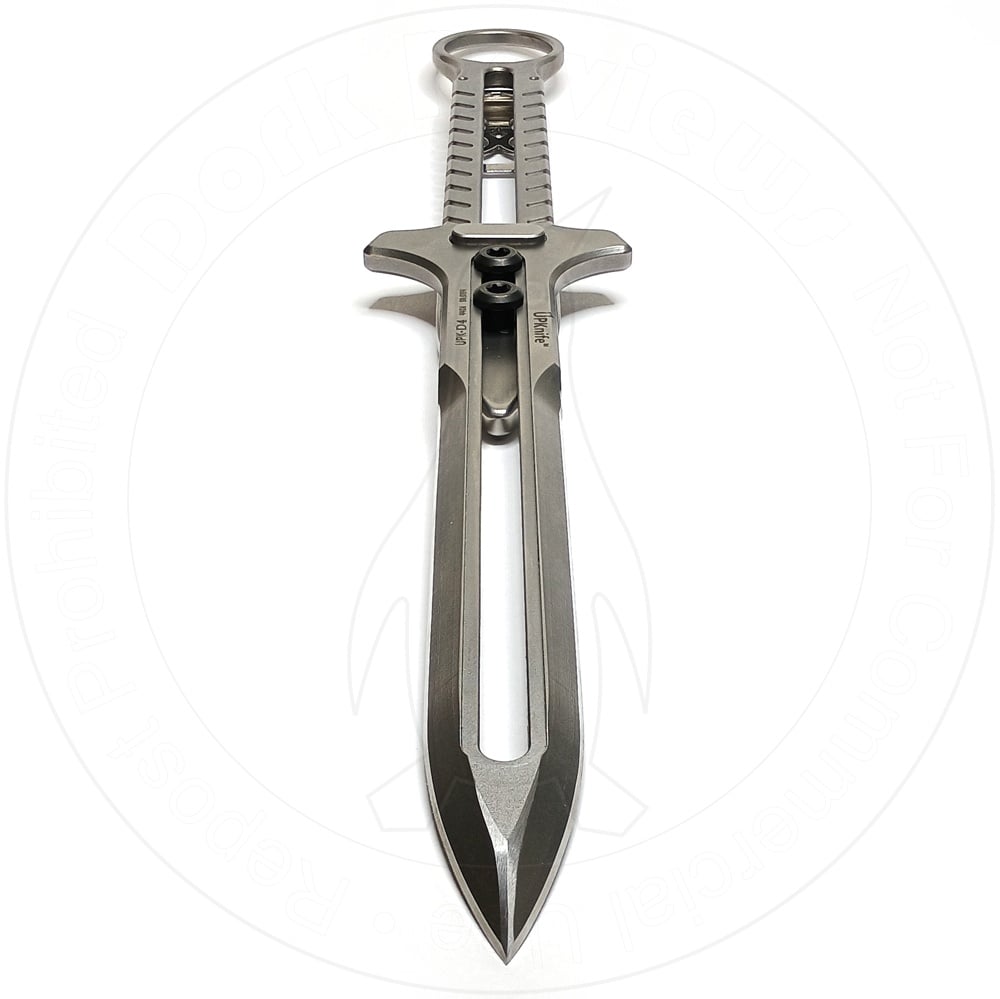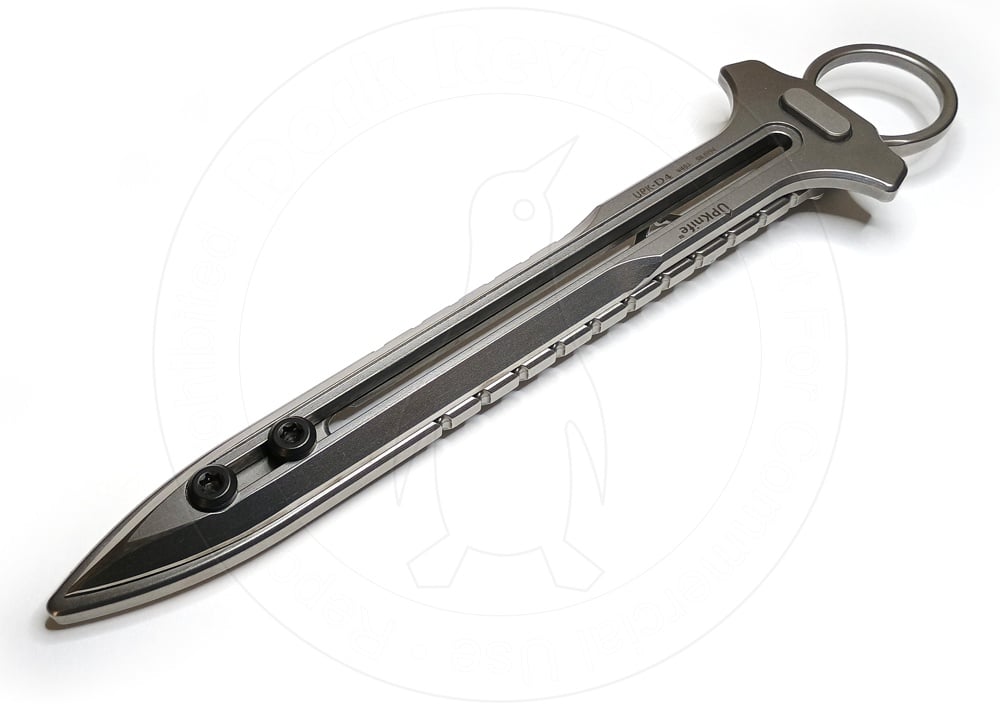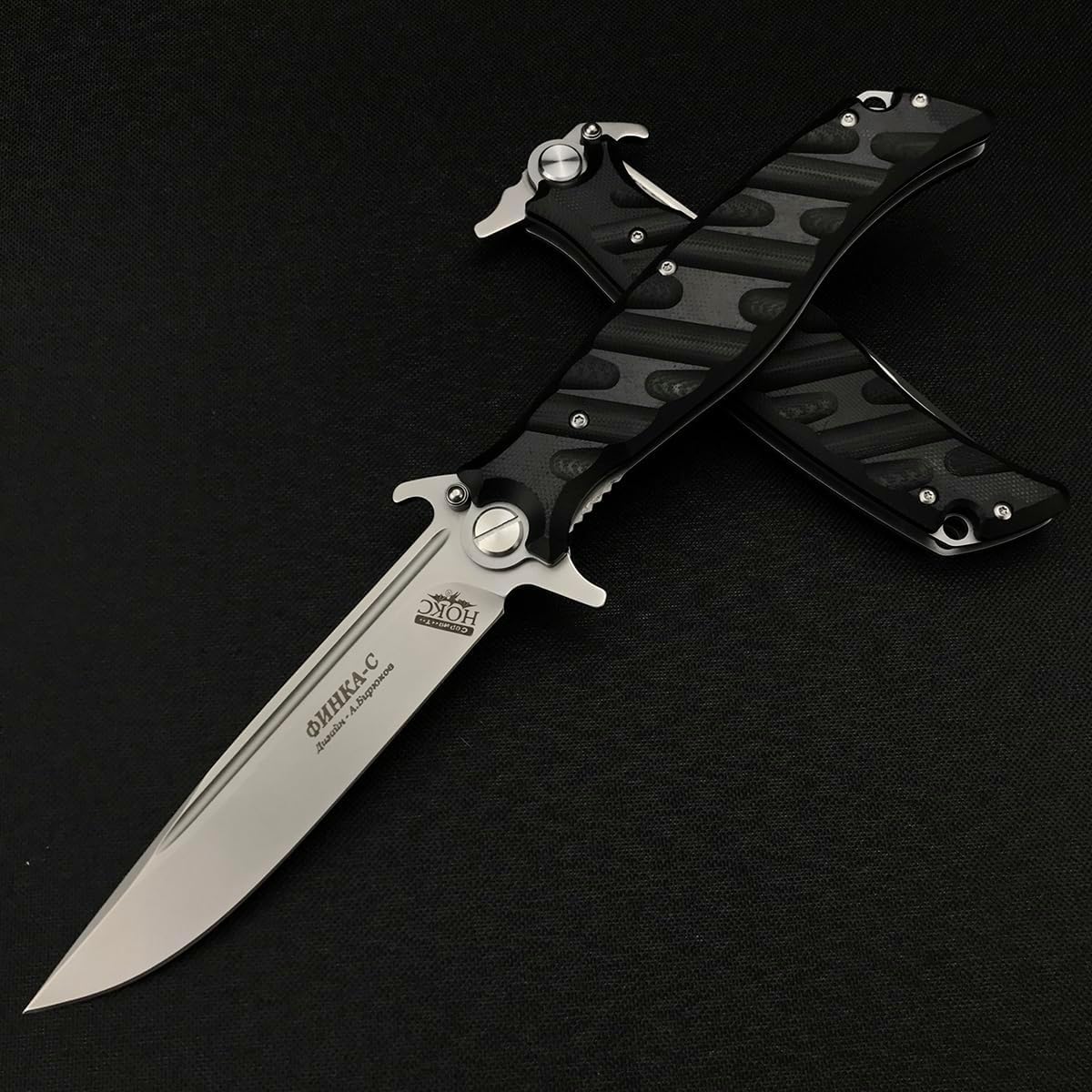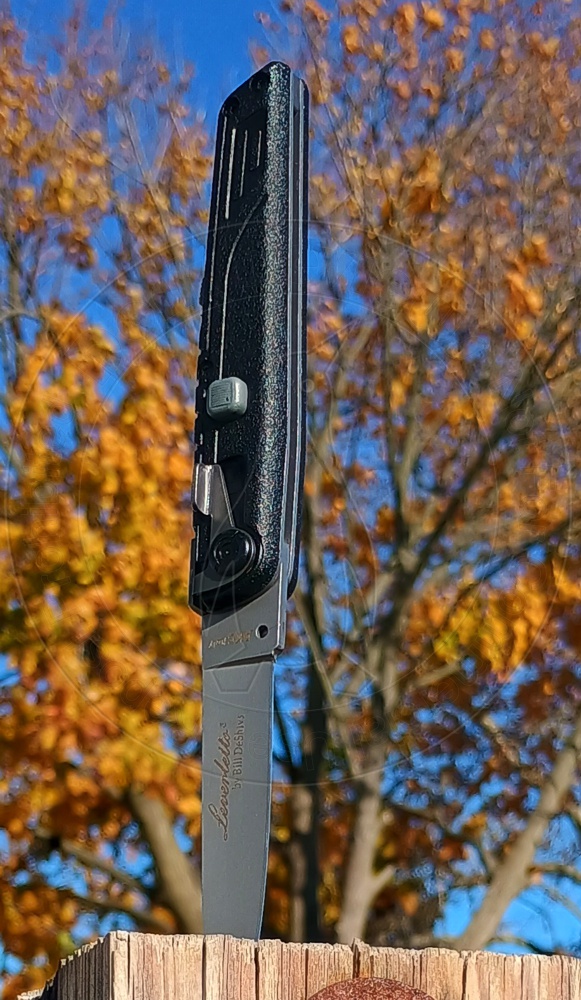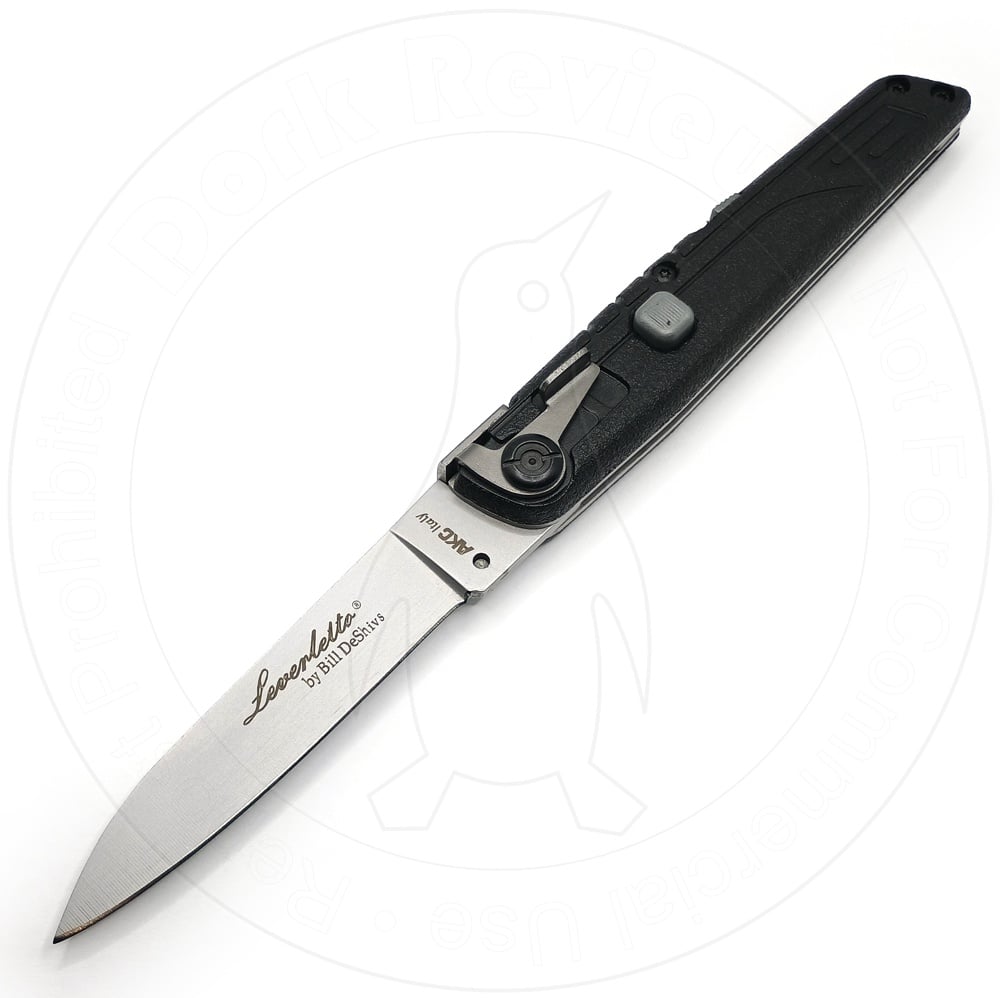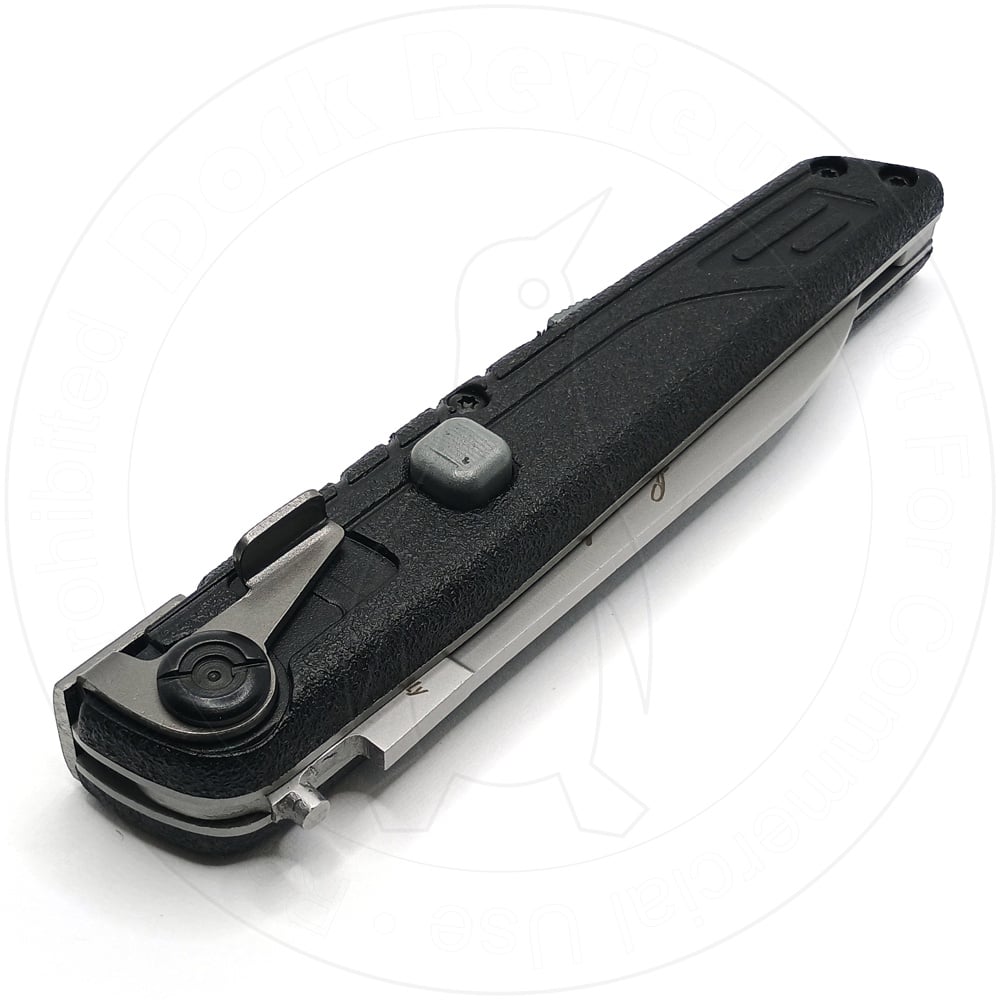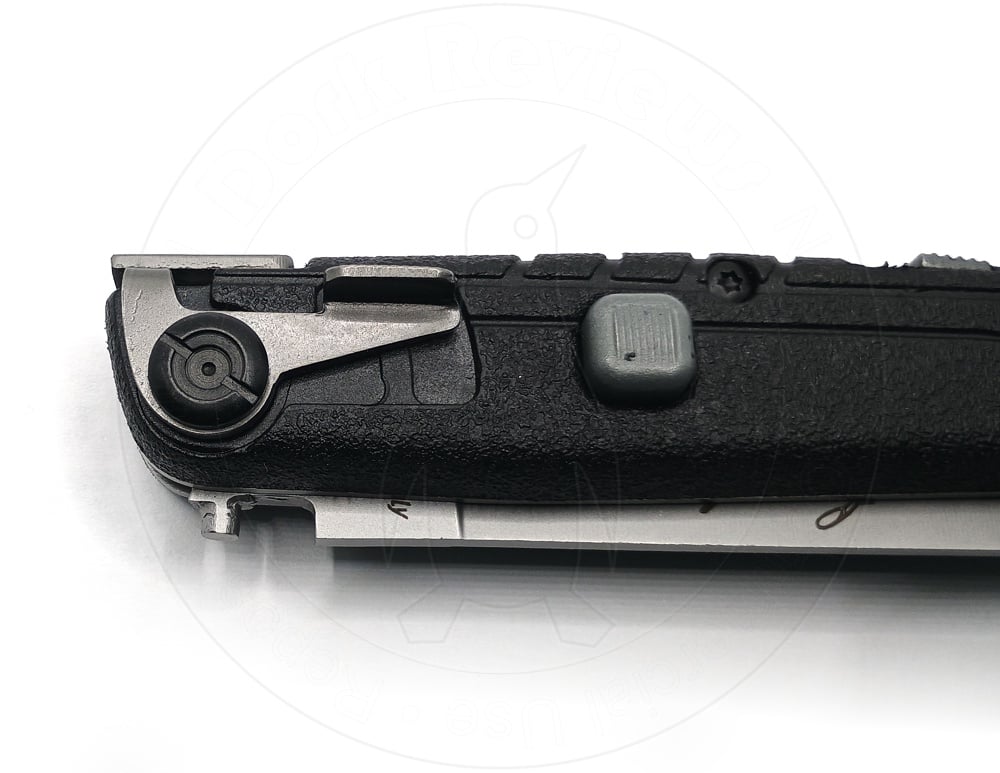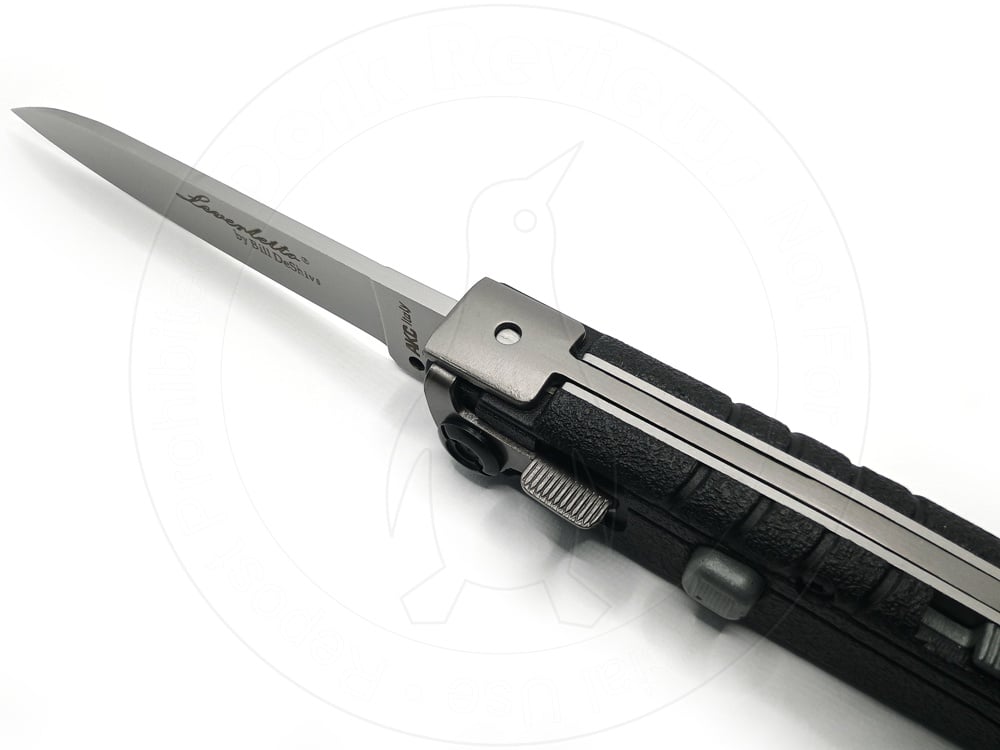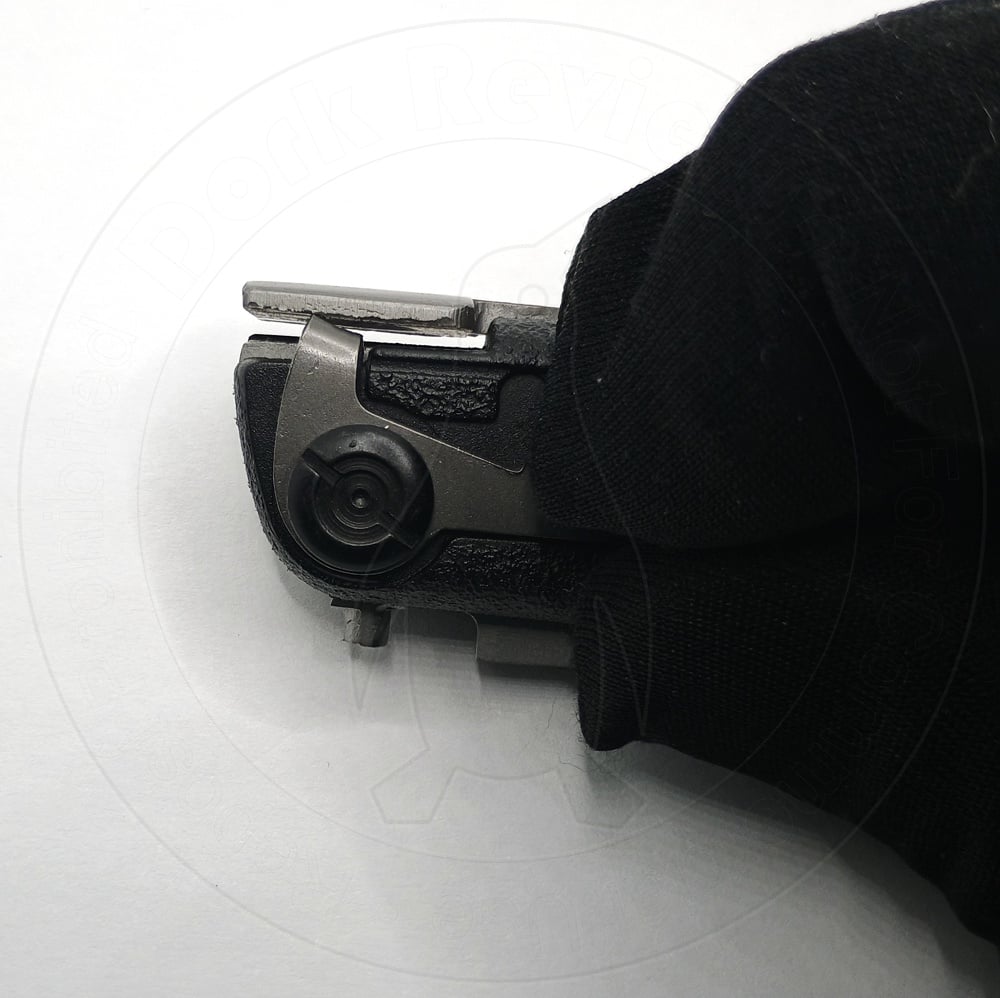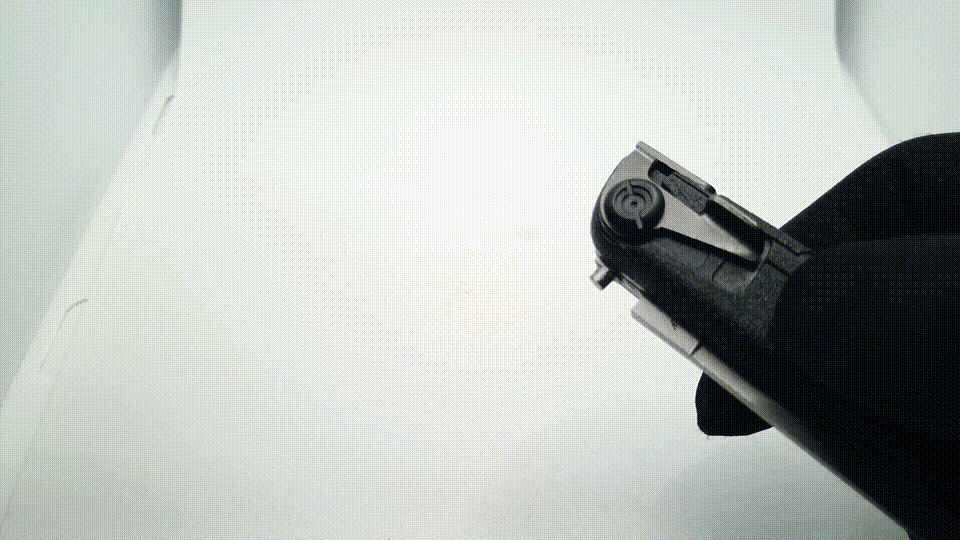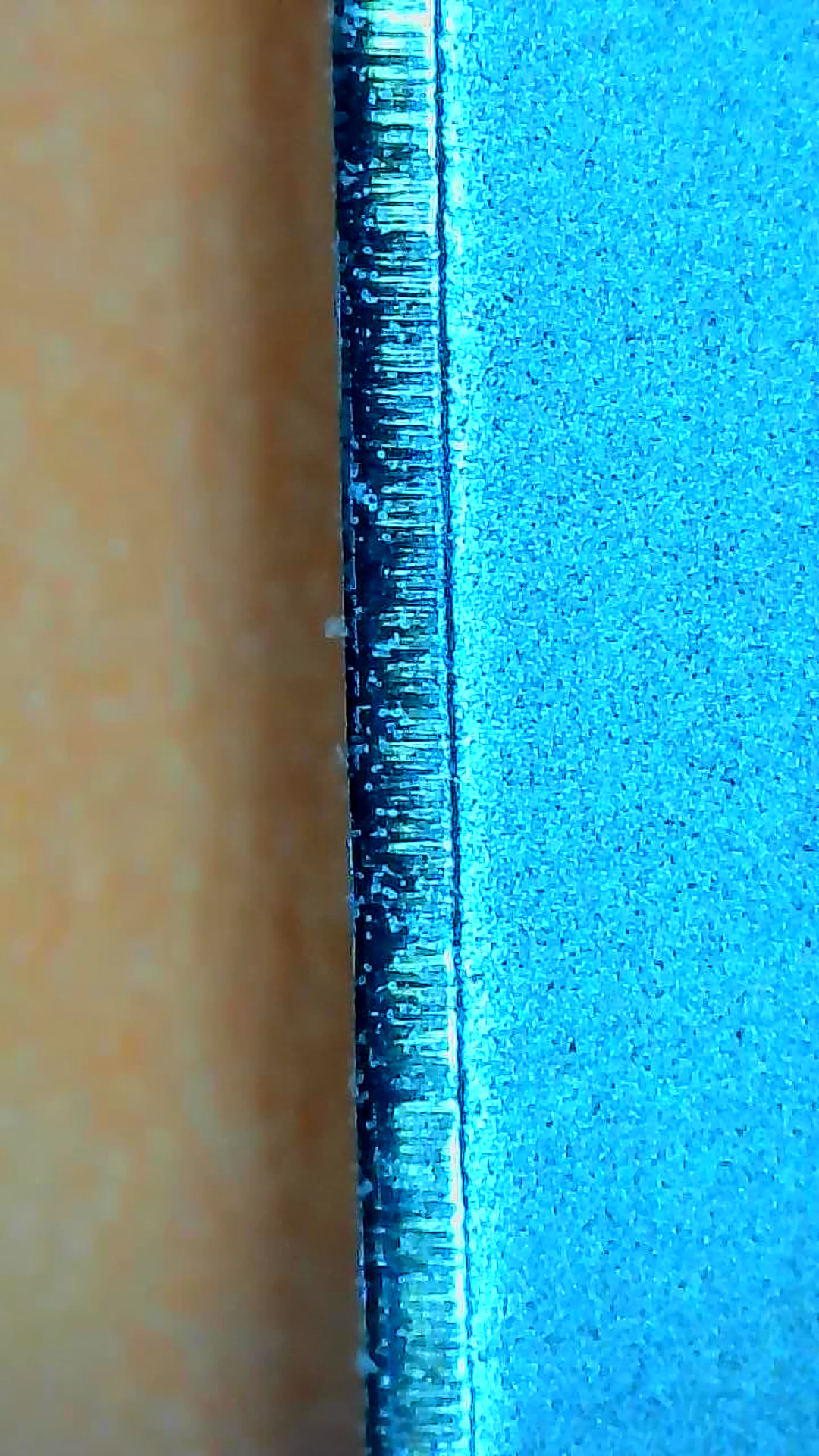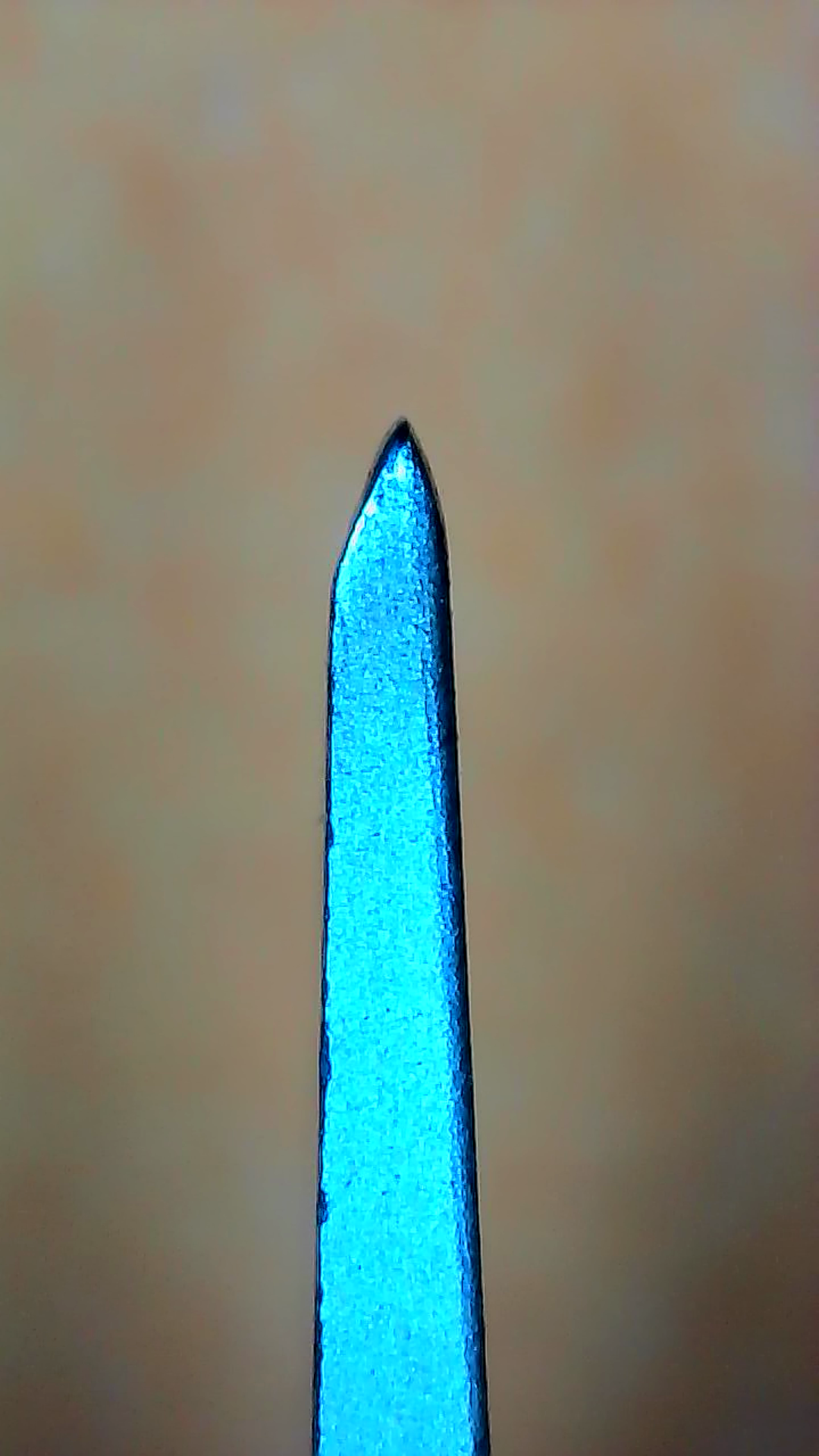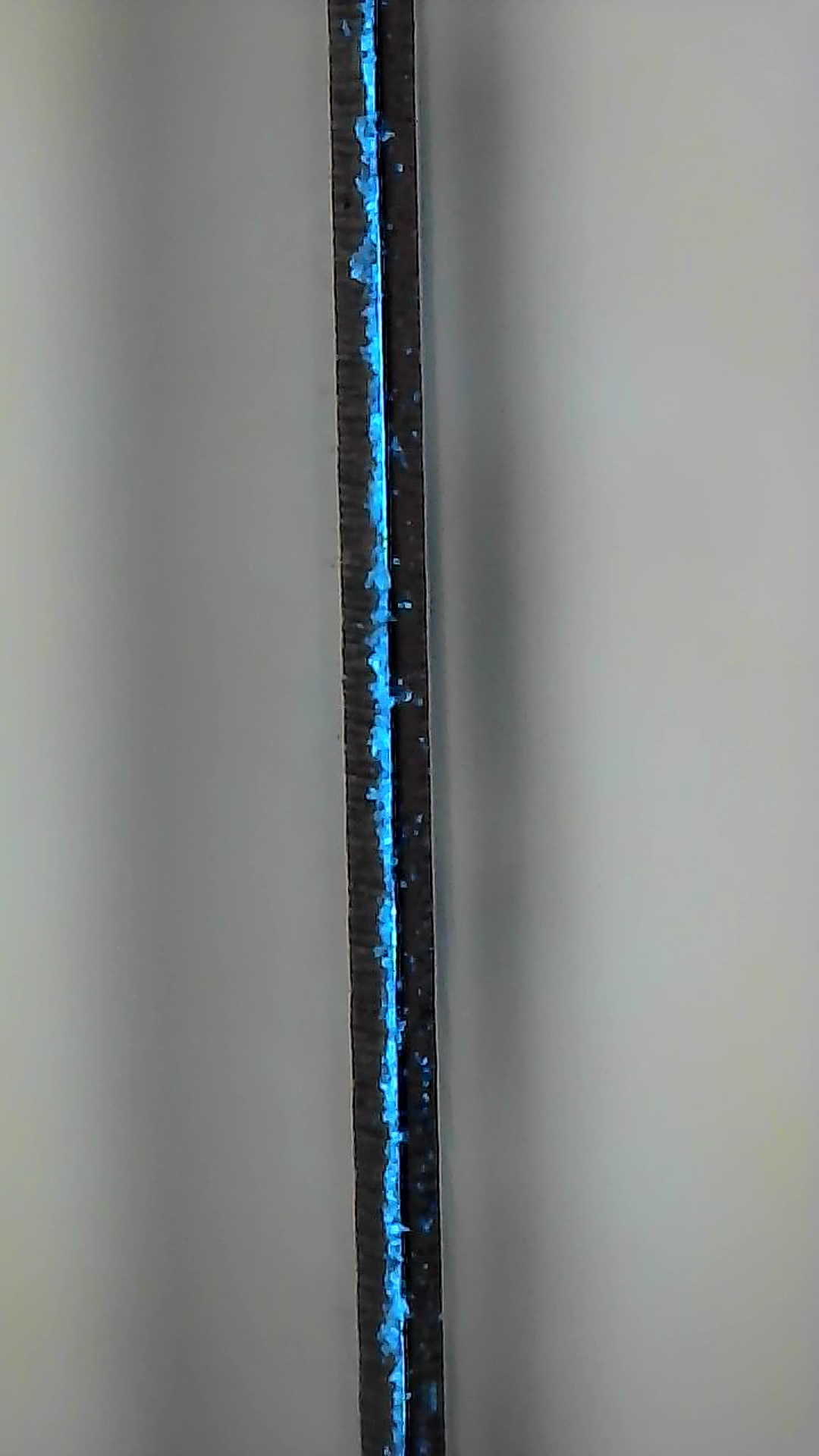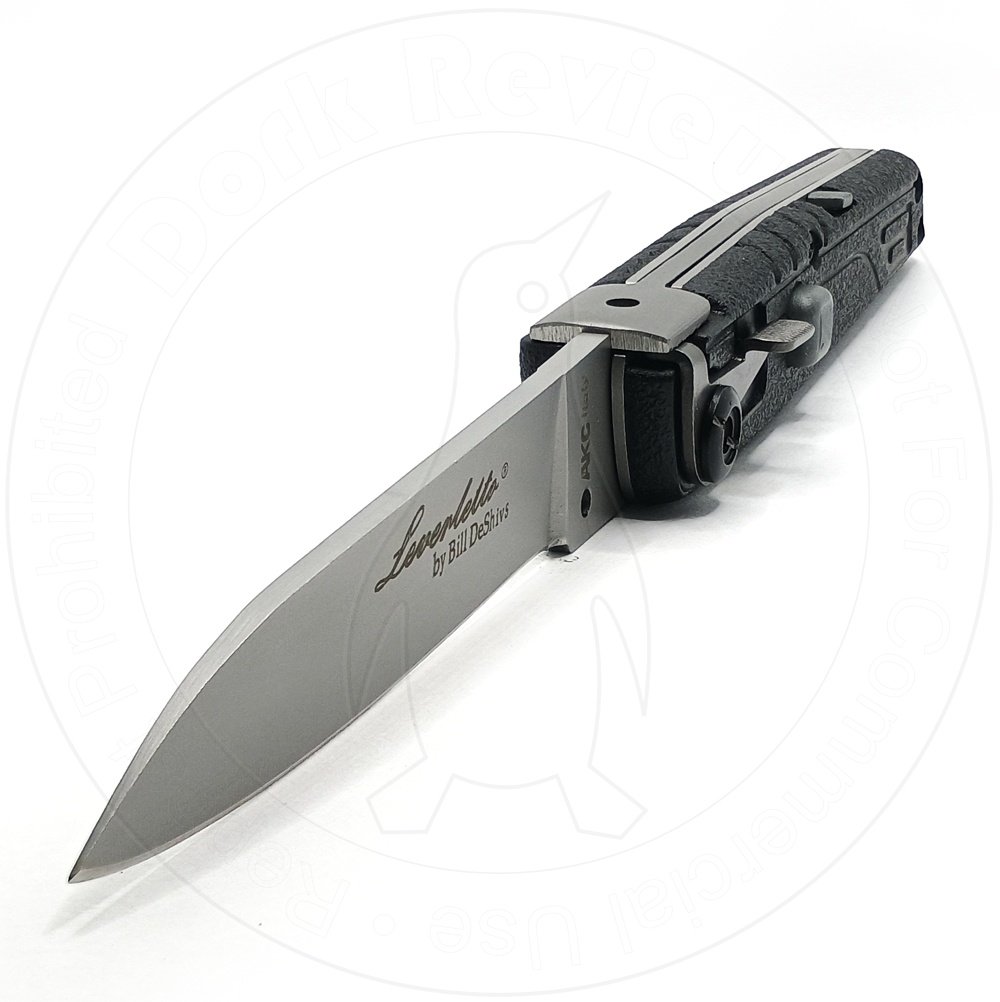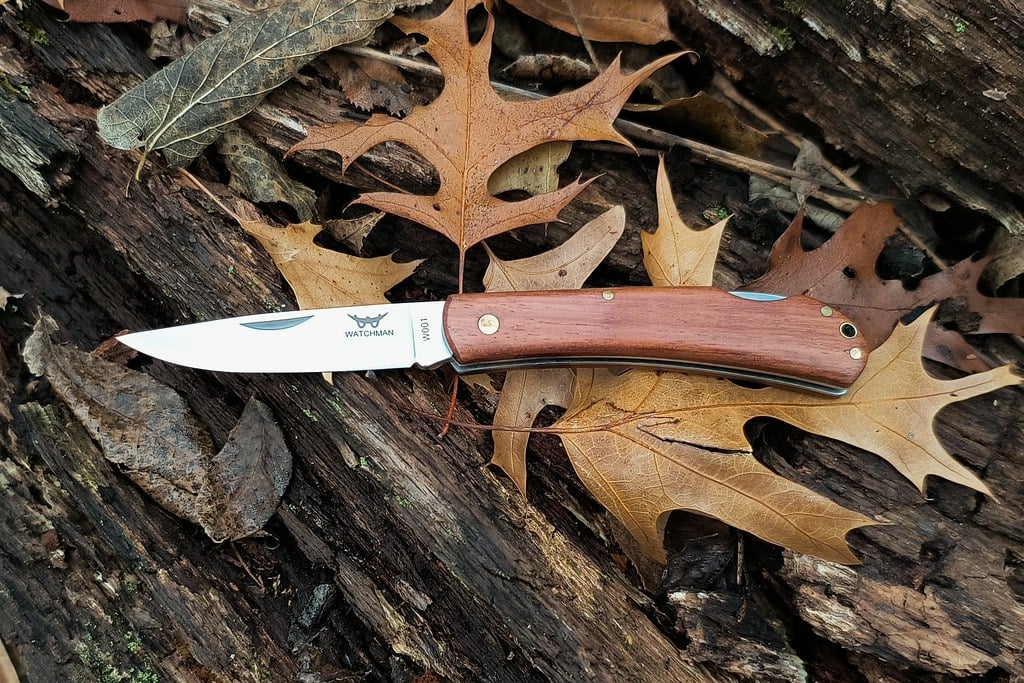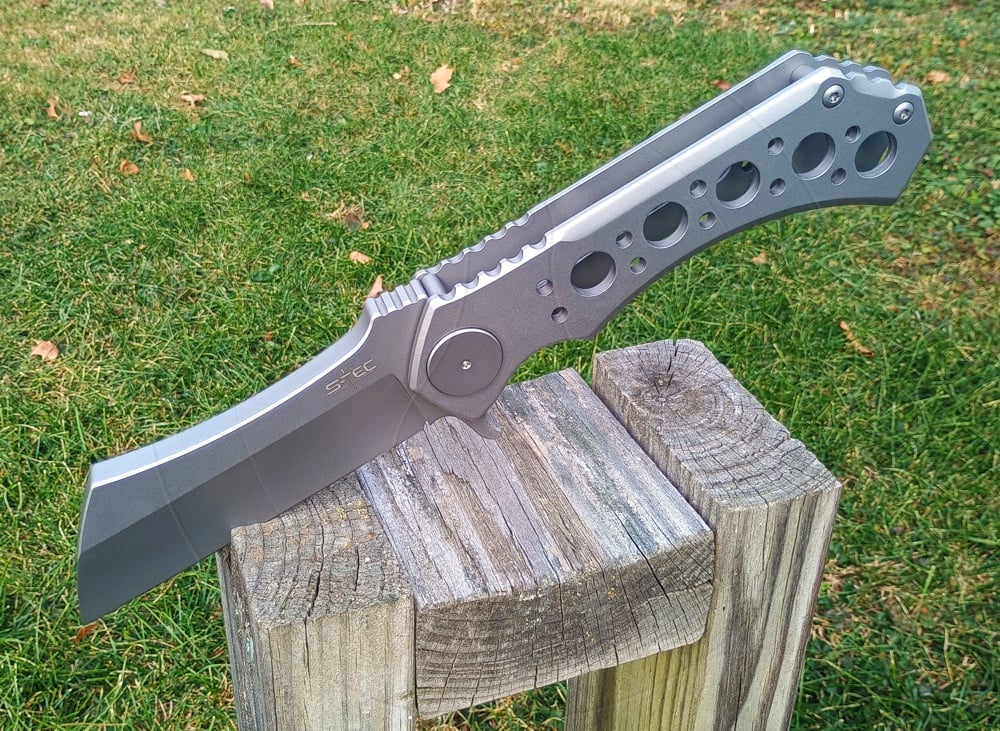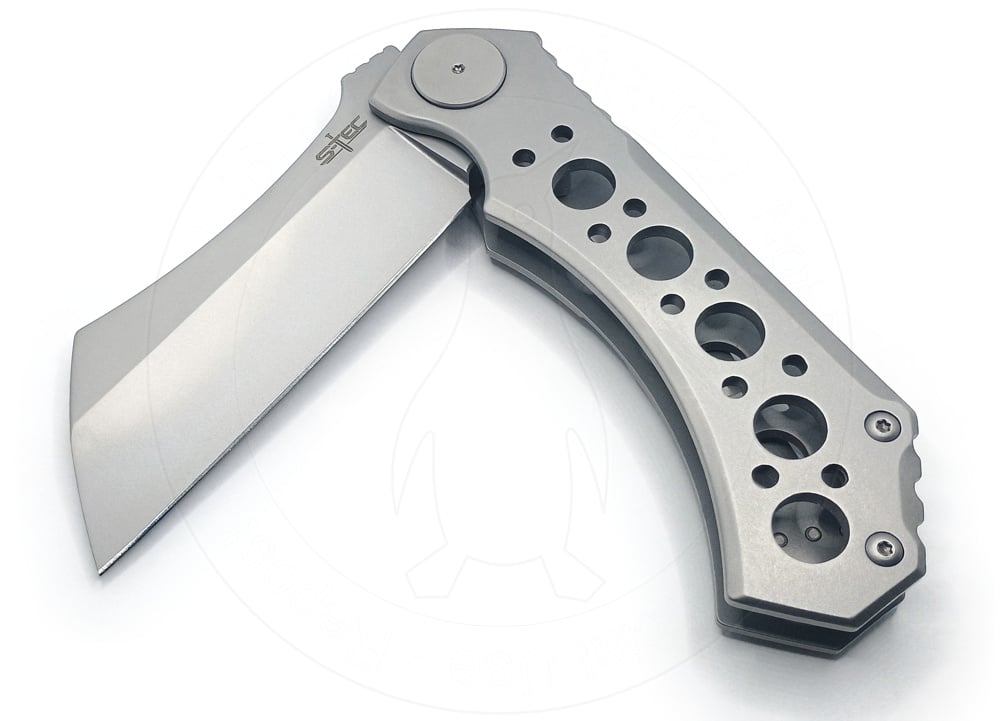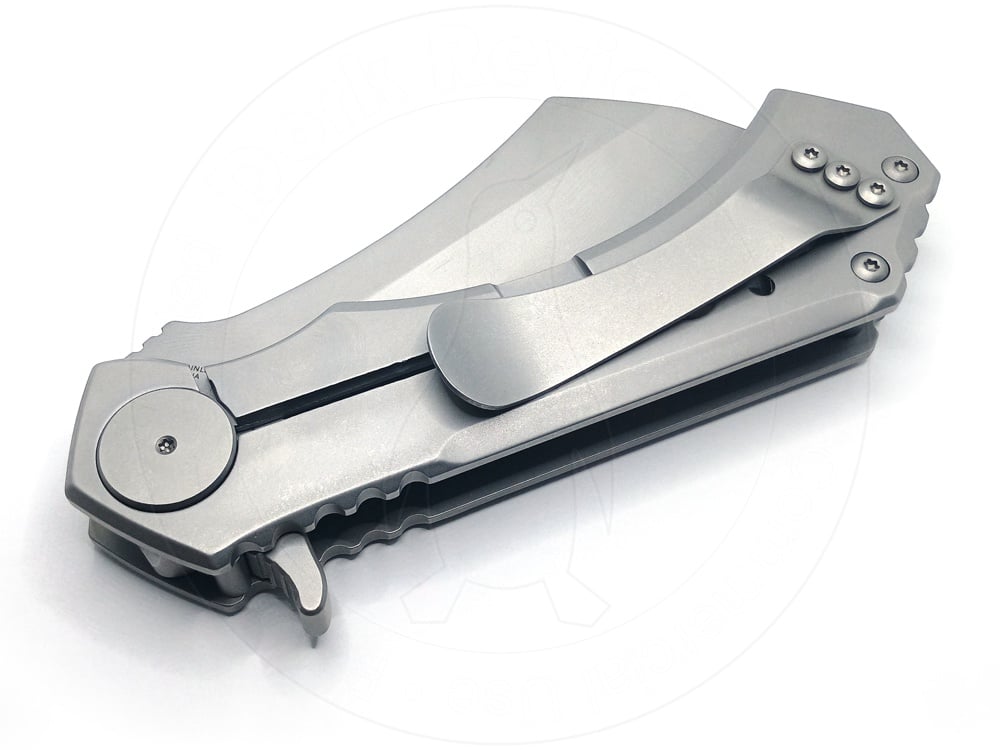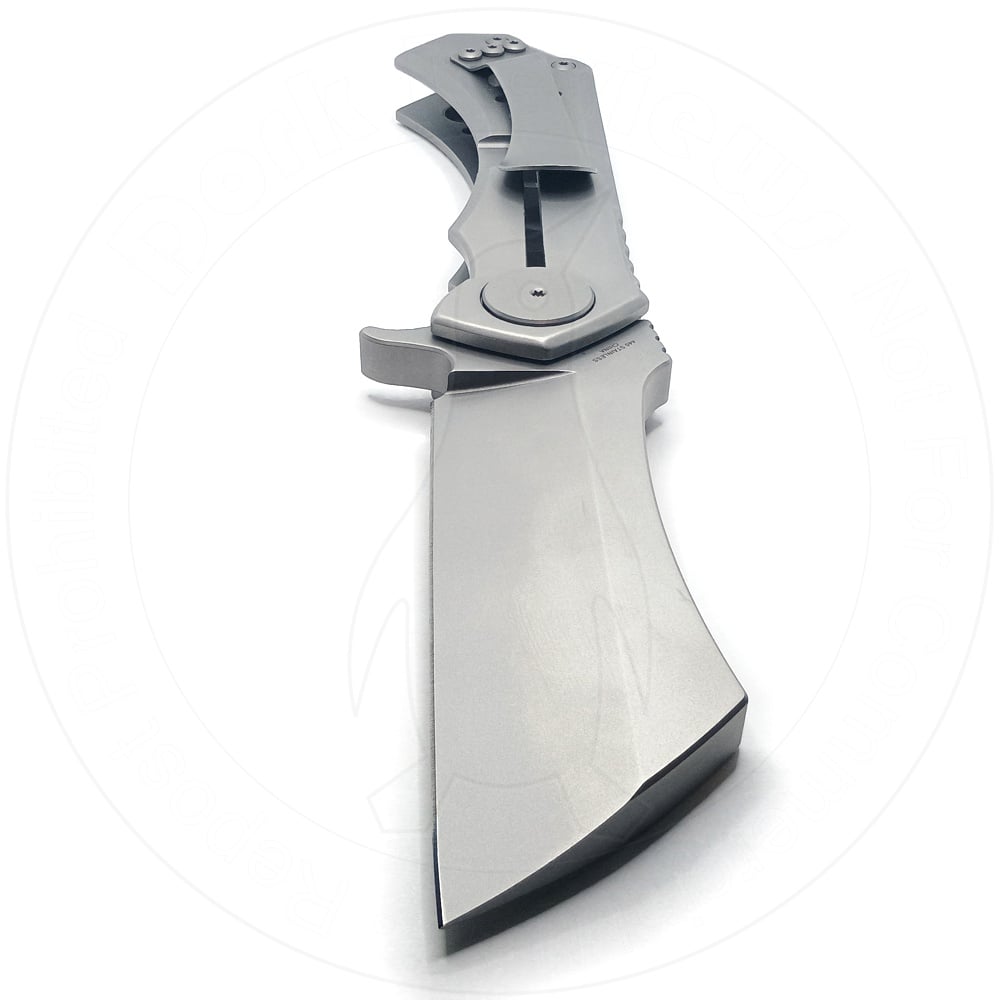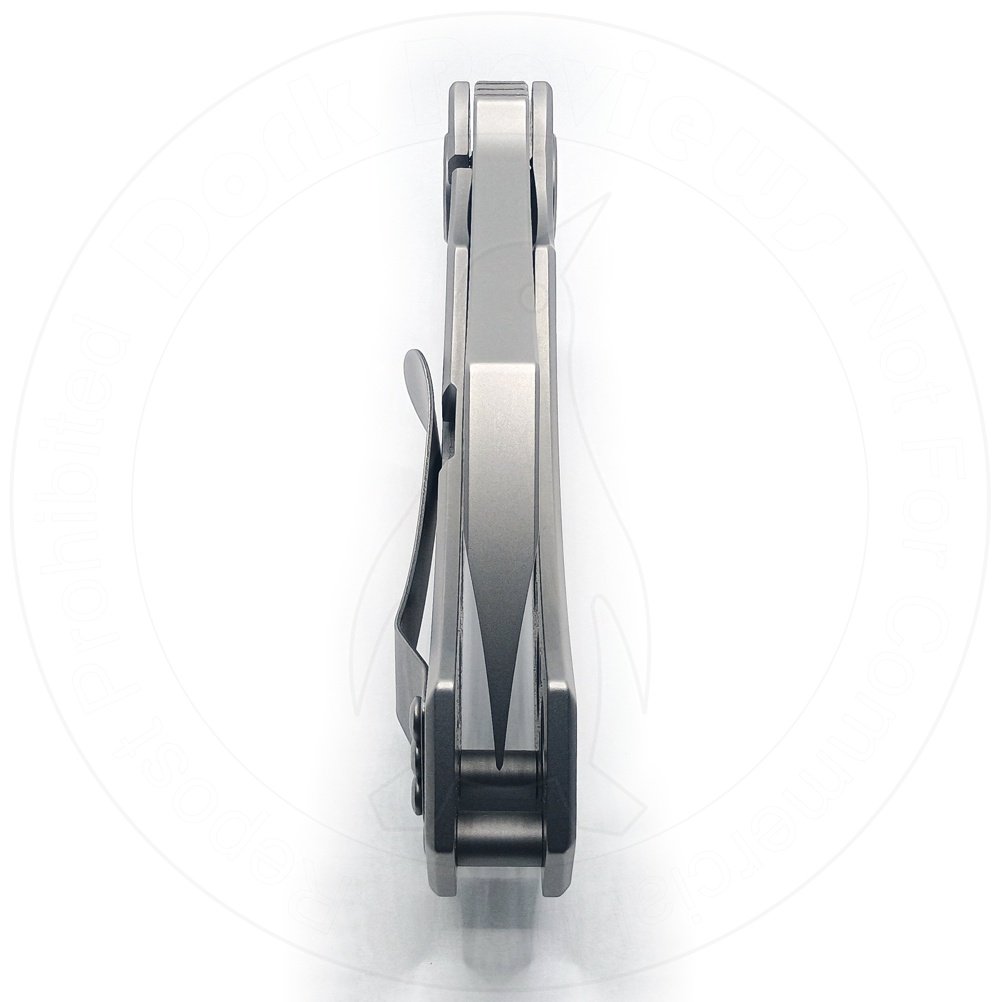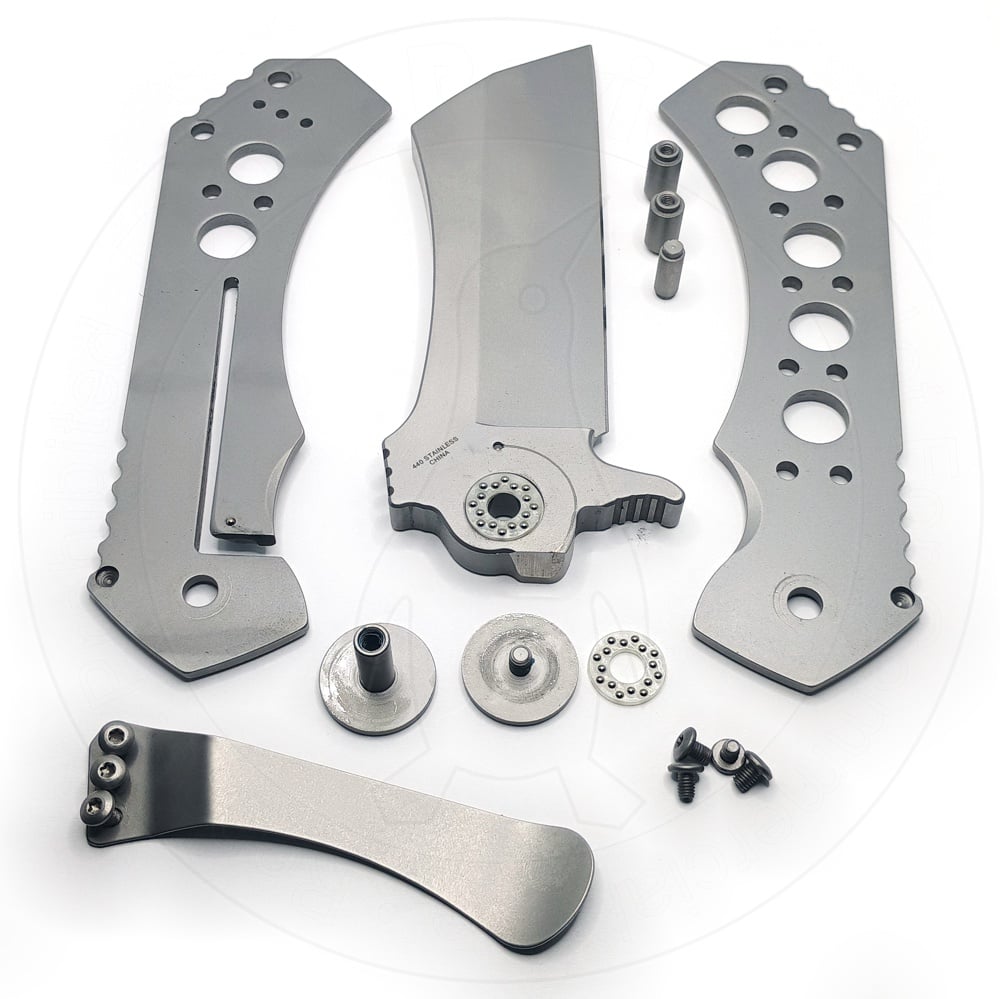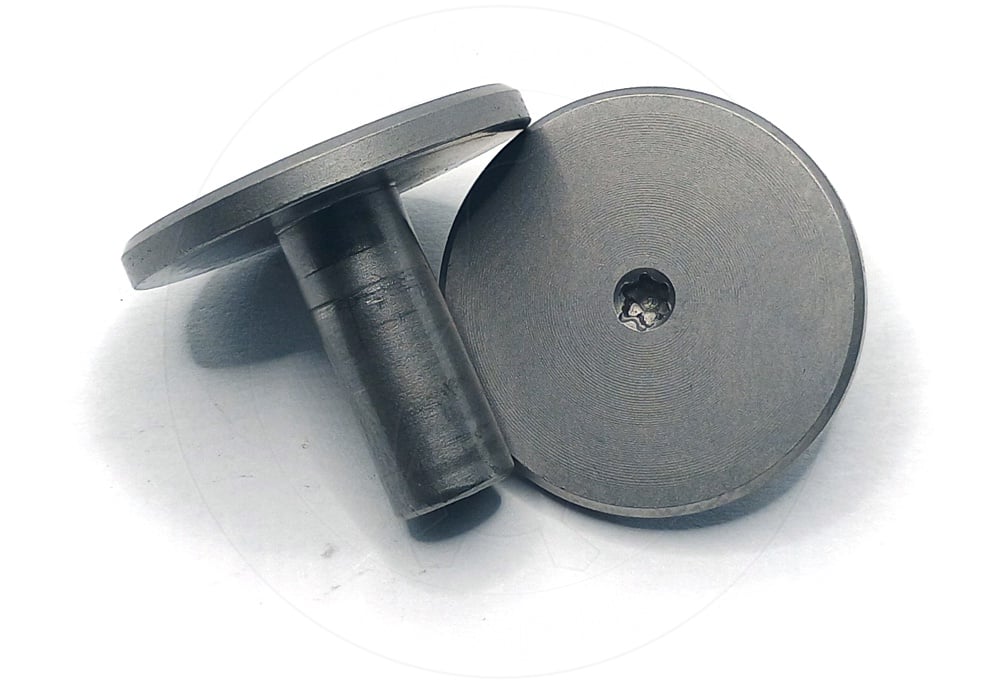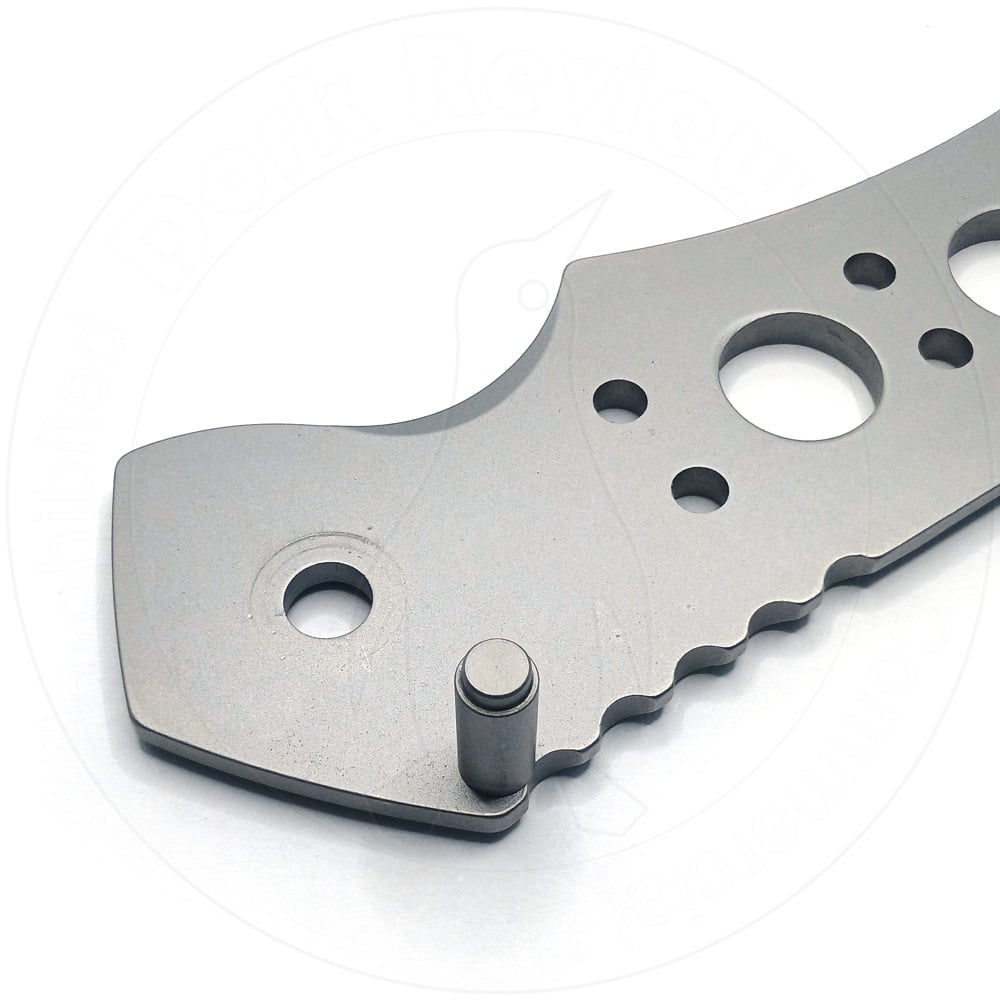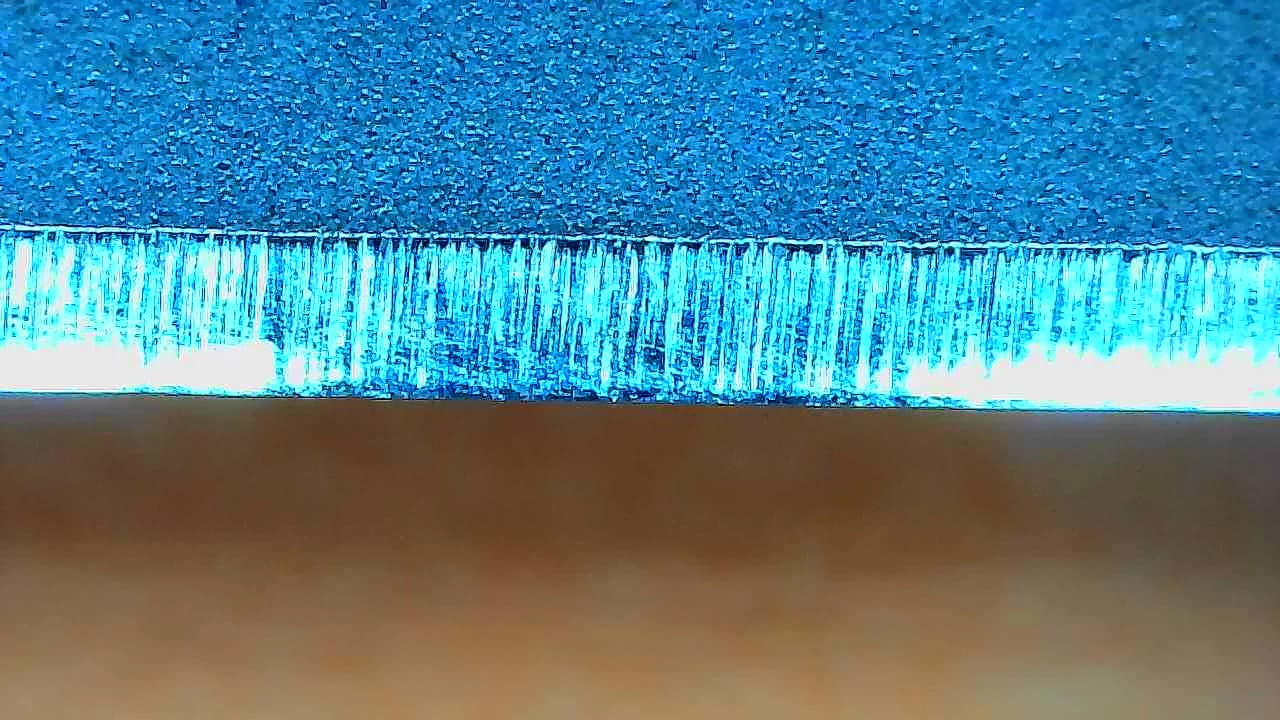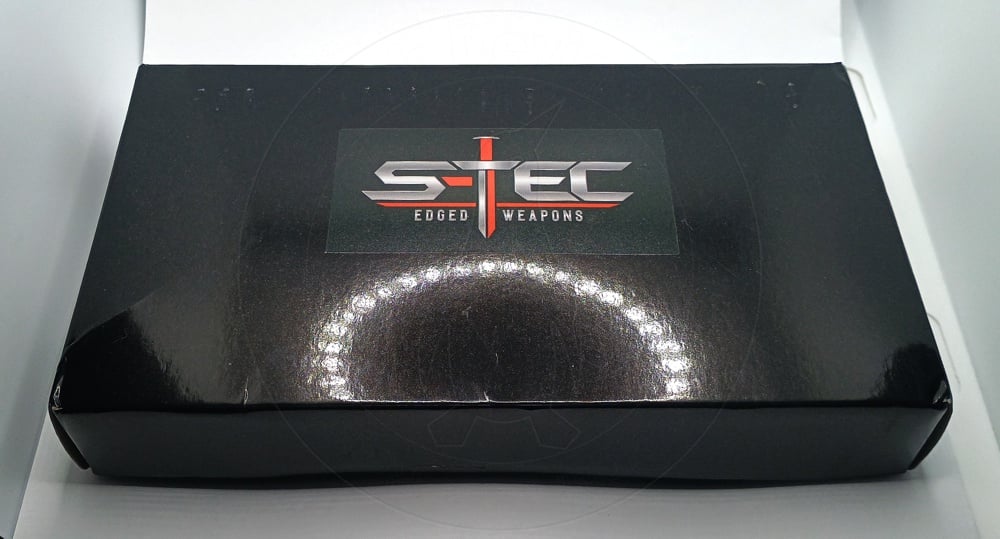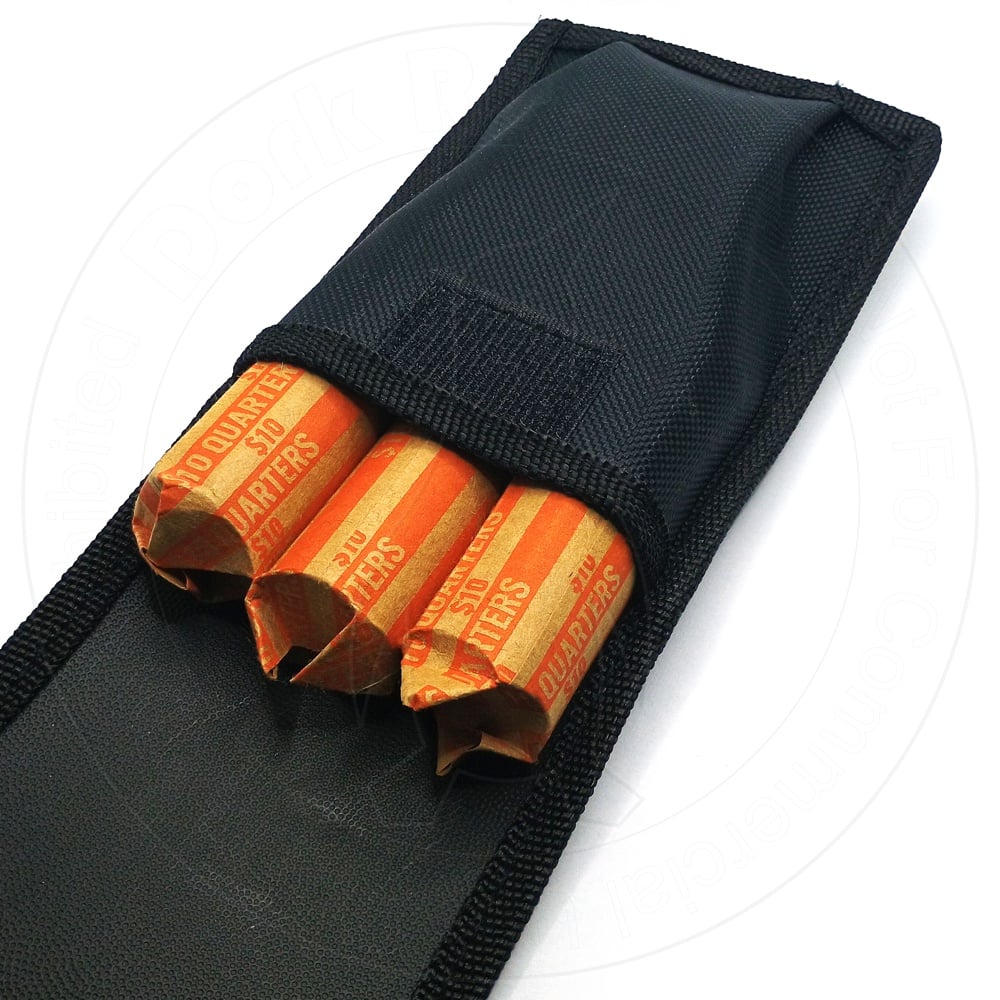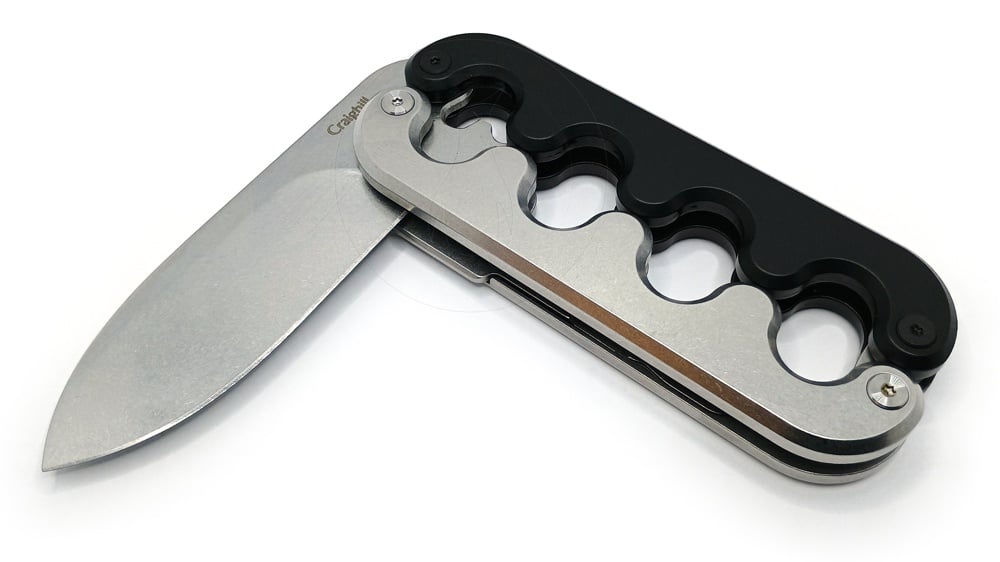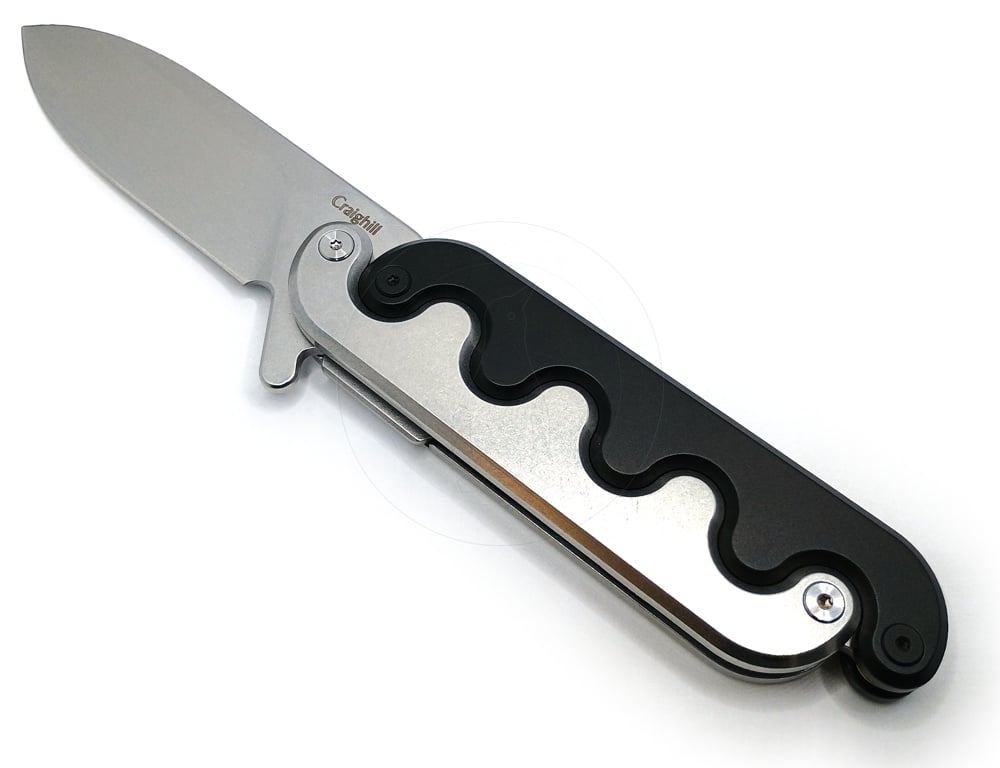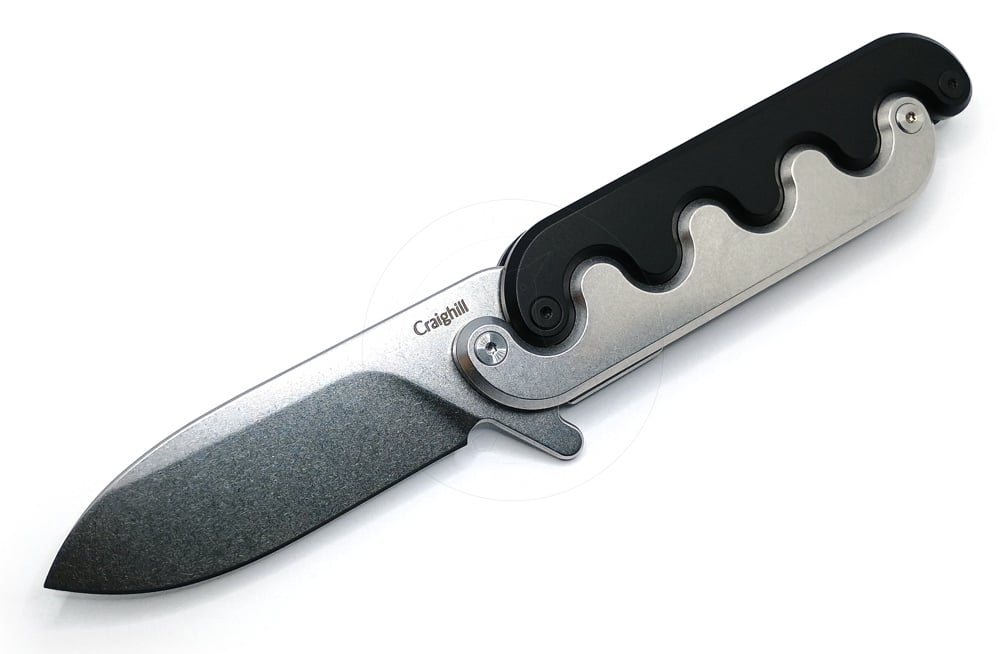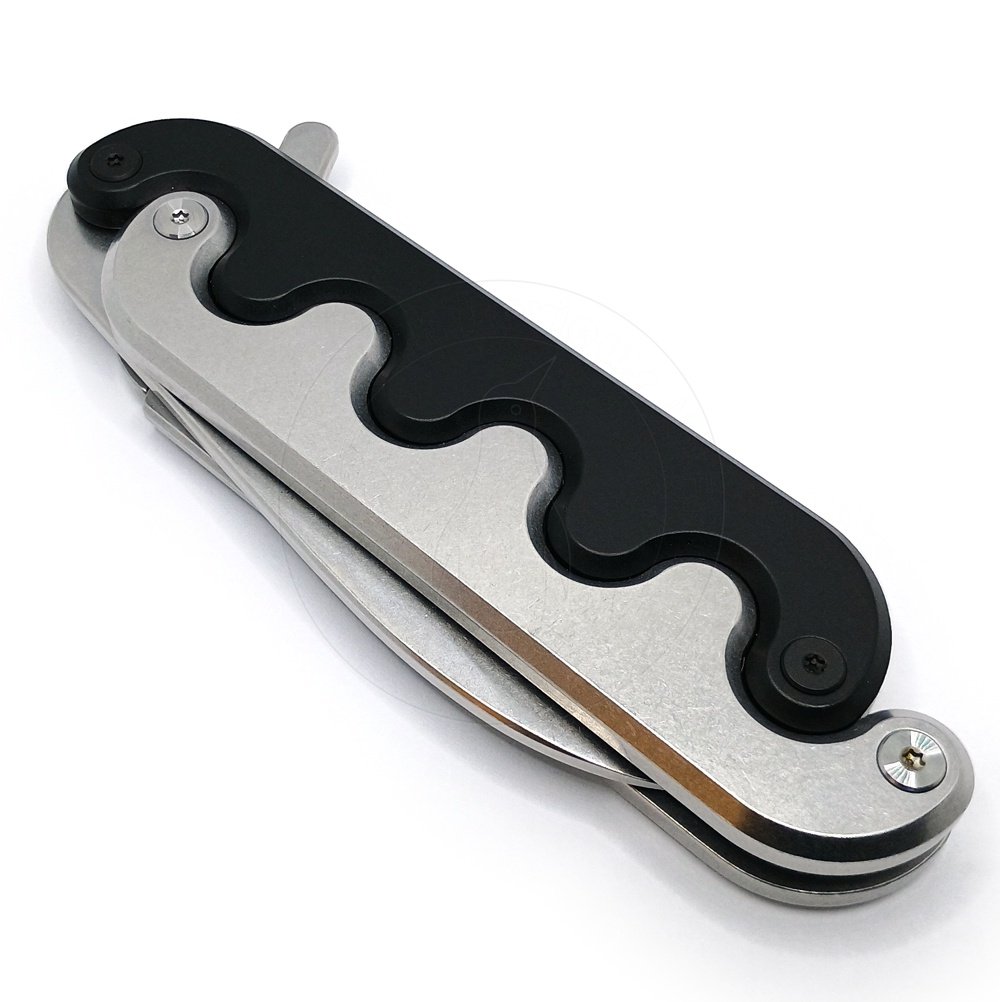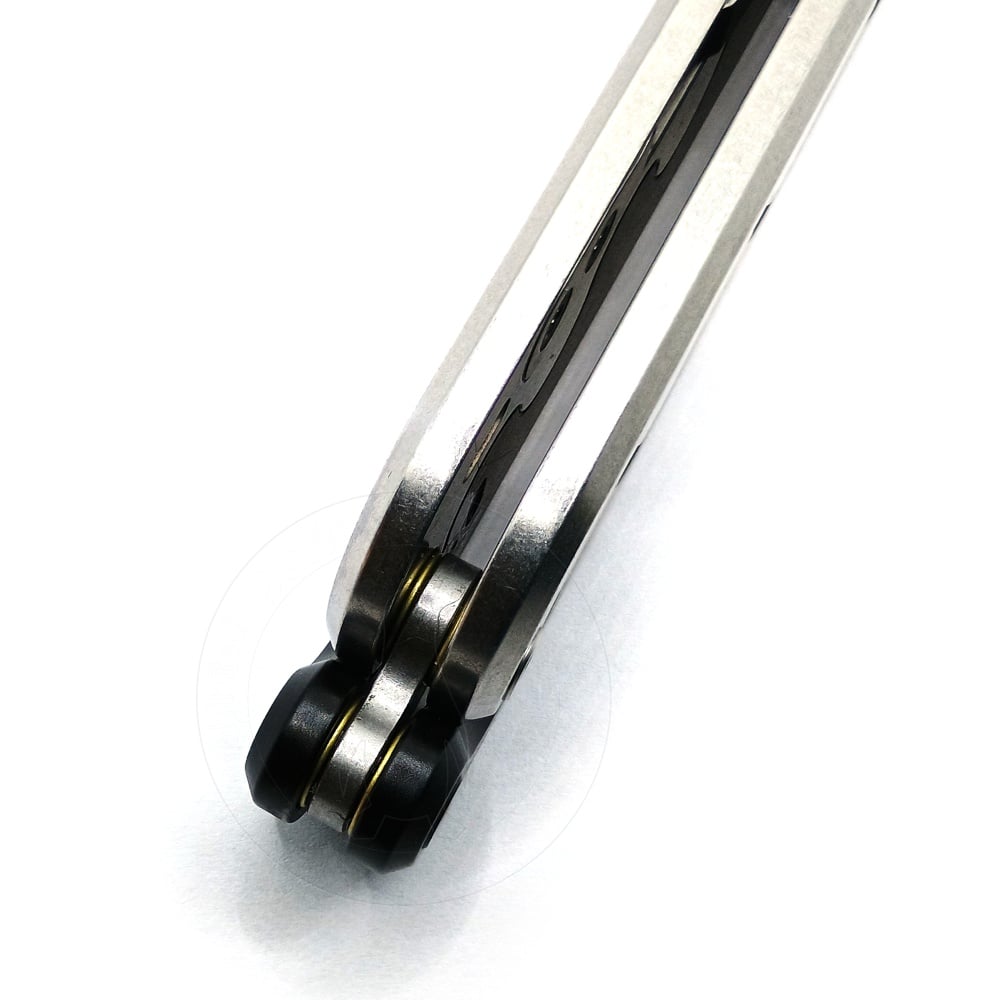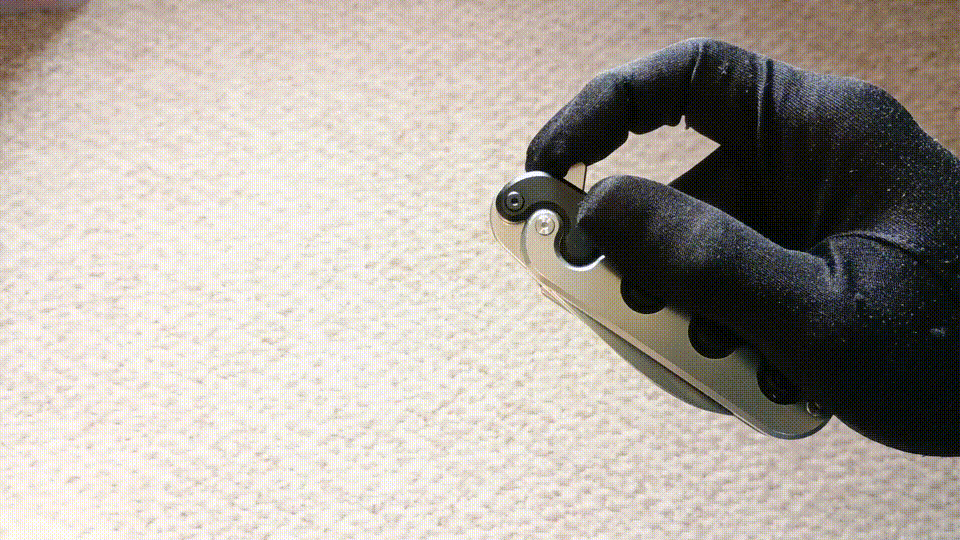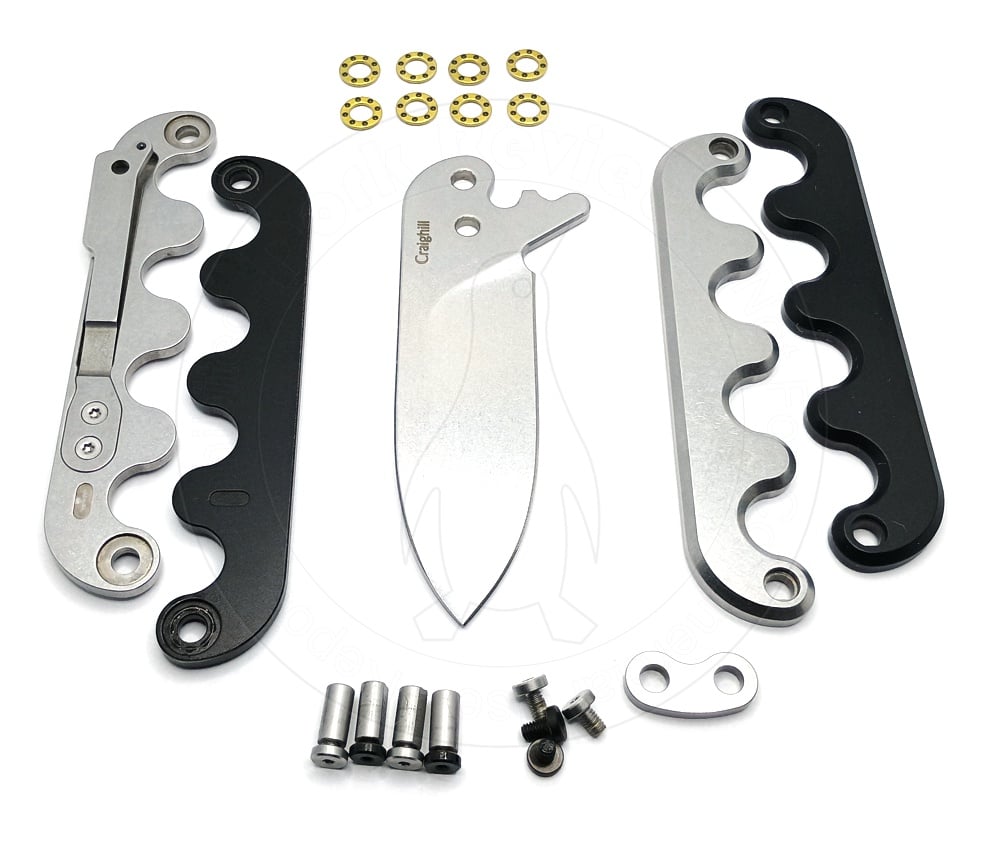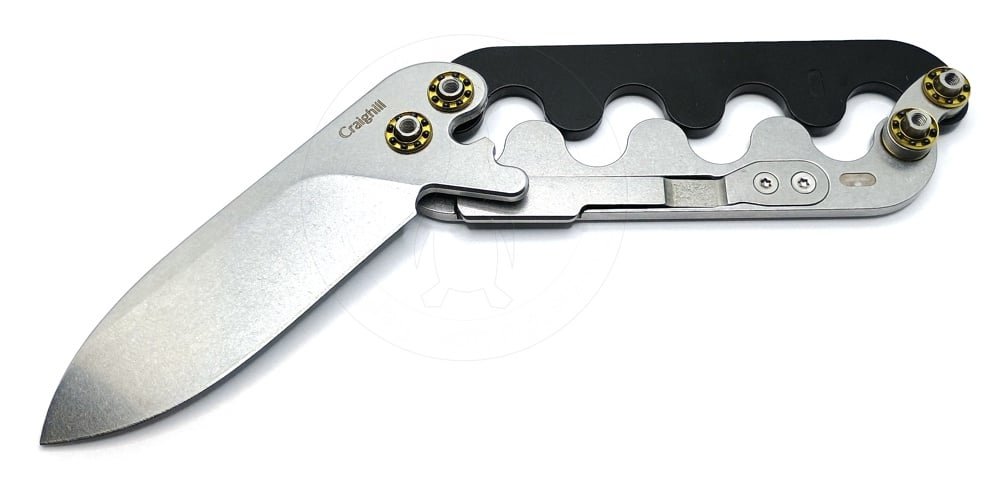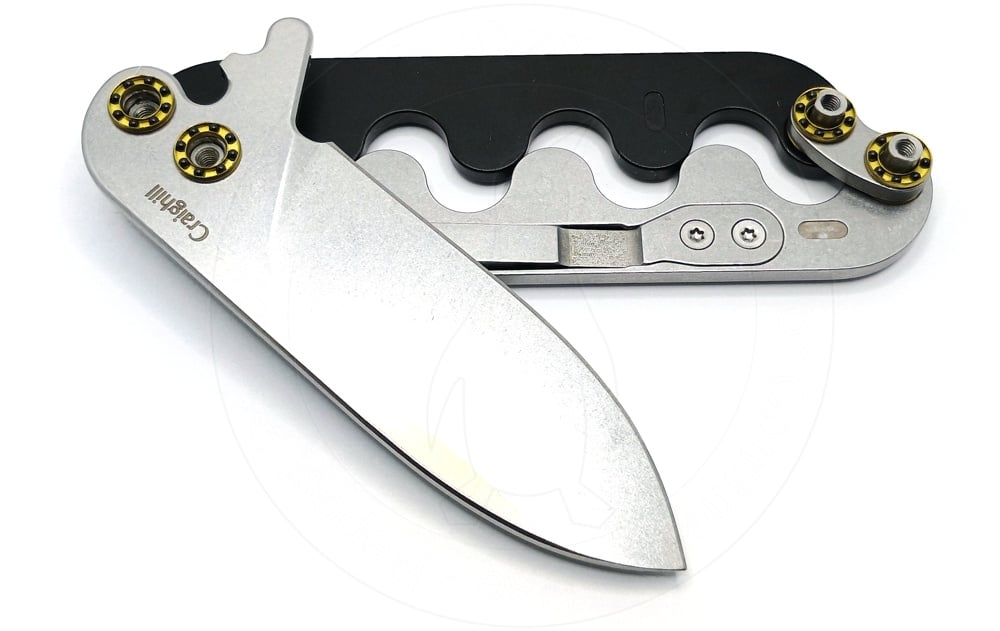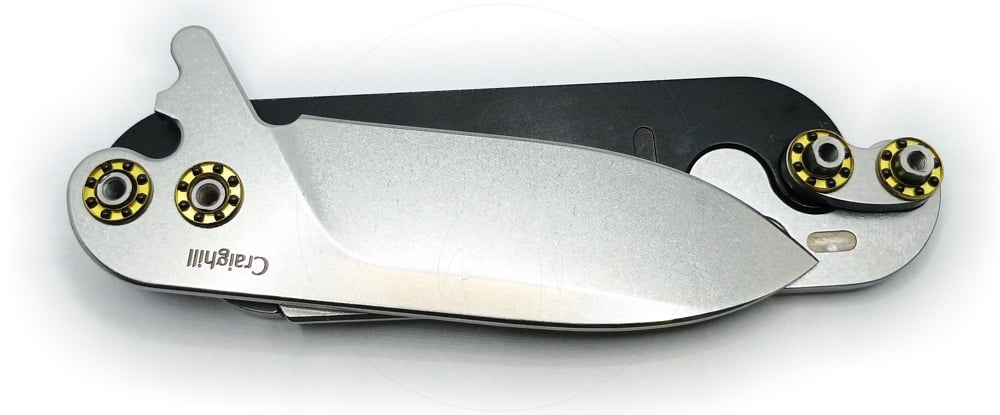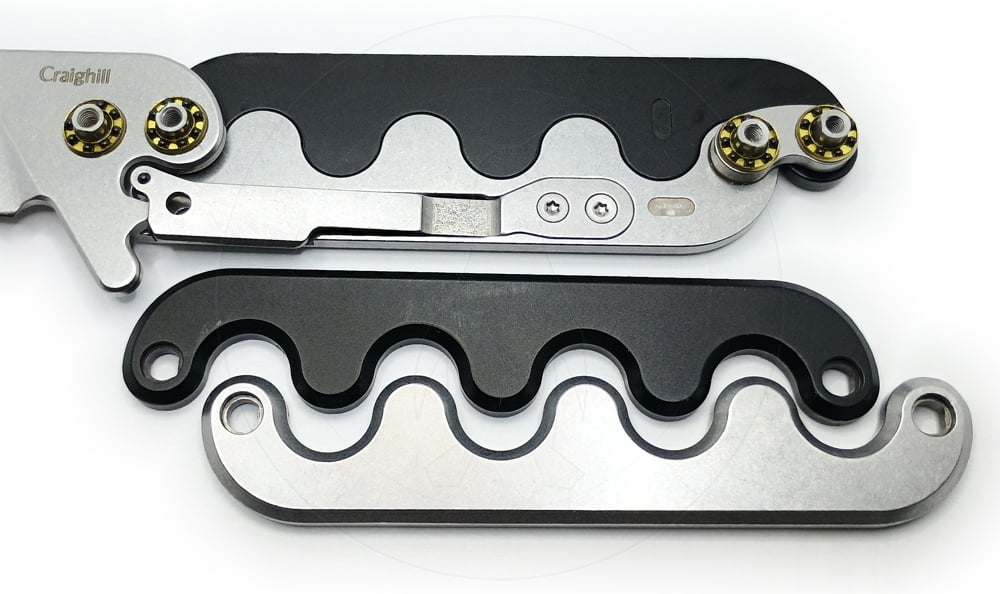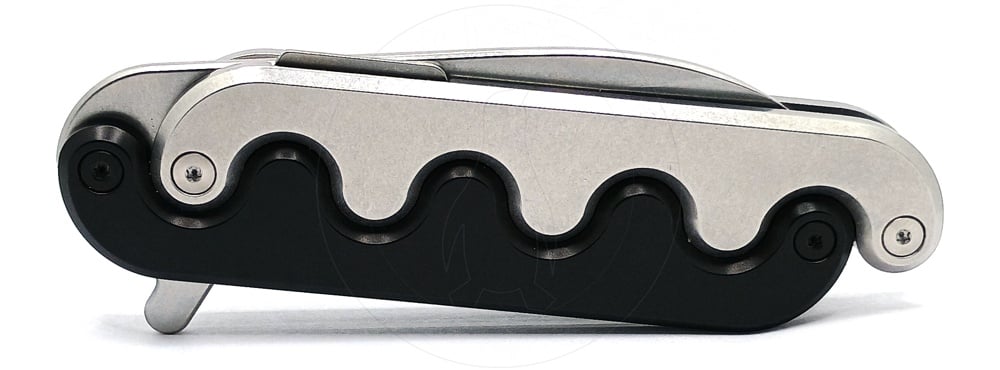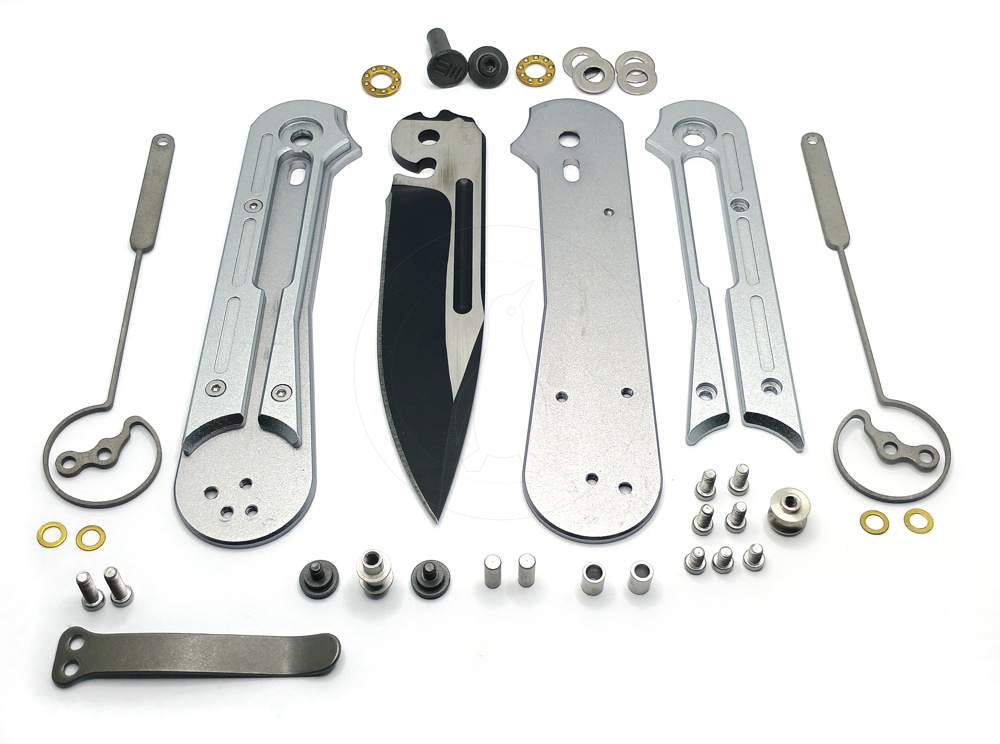You're lying in your tent in the dark. In the unfamiliar woods outside, a nocturnal cacophony. There's just one thin scrap of Nylon between you and whatever's out there.
So you have everything you think you'll need carefully arranged right next to your sleeping bag so you can reach it, all in order, just so. Your watch, your flashlight, your bear spray, your knife. Maybe your gun, if you're a wimp.
Before going to sleep you've practiced grabbing your knife in the dark. Don't try to tell me you haven't at least once. I know you have.
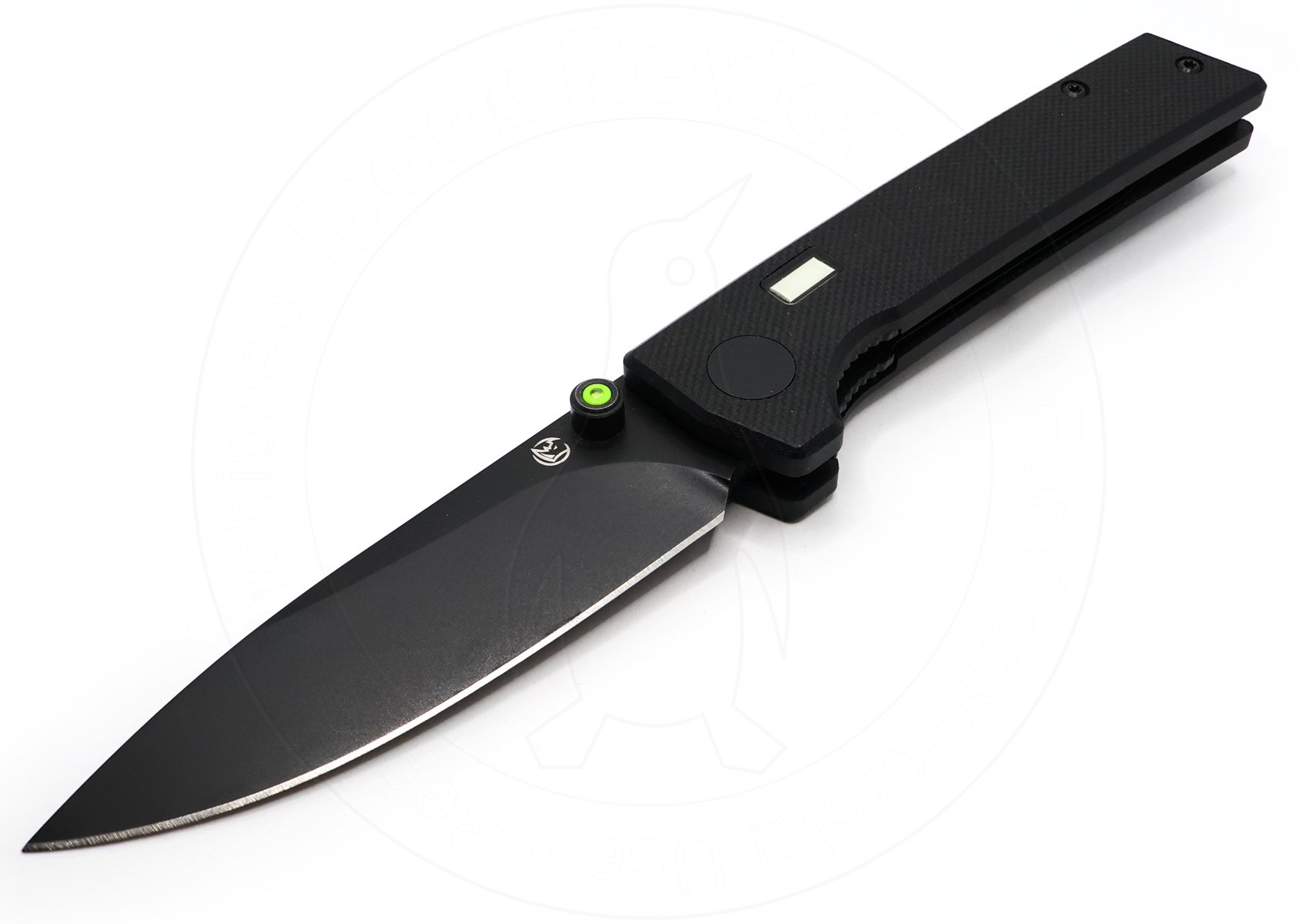
Well, Glow Rhino think they've got another solution for you with this, their Fermi.
I'm sorry, The Fermi. They consistently render it with the definite article attached.
This knife was kindly lent to me by a reader, which is such an astonishing turn of events I can still hardly believe it. I'm just chuffed to pieces. I won't name names, but the guilty know who they are. So thank you.

The Fermi is named after Enrico Fermi, the physicist who's famous for developing the world's first nuclear reactor. That, plus the Glow Rhino name and the fact that I wouldn't be showing this off to you if it didn't have some kind of trick might clue you in to what's going on here.
You see, this knife is radioactive.

The Fermi is an unassuming and somewhat compact liner locking folder that happens to have not one, not two, but three radioactive tritium glow inserts embedded in it: One each in both of the handle scales, and another titchy little one in the thumb stud. Note that the green ring in the stud is not the glowy part, that's just neon plastic which you can even order in a variety of colors. The tiny dot in the middle is the part that illuminates.
And yes, this puppy is nuclear. Tritium is a weak beta particle emitter, decaying into helium in the process, and this is what powers the Fermi's glow. Or rather, just like Doc Brown's DeLorean, this puppy is ultimately electrical. Beta particles are fast electrons, after all, and these are what excite a phosphor coating on the inside surfaces of the glass tritium capsules, which captures this energy and re-emits it as visible light. The phosphor stuff is apparently zinc sulfide based, but nobody seems willing to admit its exact formulation in any easy to find place online.

So the glow inserts produce a very small amount of wan green illumination, but unlike your typical glow-in-the-dark stuff they glow of their own accord, constantly, without the need to be charged up via external light. This also means they'll glow all night without your intervention.

That's not to say they'll glow forever, though. Tritium has a half life of about 12.3 years, meaning that in that time frame the emitted radiation and thus the brightness of these will be reduced by half. In 24.4 years it'll be a quarter of what it was when new, and so on down the line.
All that may sound like a long time but bear in mind I've shown you plenty of knives in this feature that are already twenty-plus years old. So it's up to you if you think this is worth it for a $100 piece of kit, versus just getting a normal folder of similar construction and, most likely, a significantly smaller price tag.
There is an evergreen temptation for sleazier manufacturers of these types of things to claim that they're "permanent" illumination but as we've just observed this is obviously not the case. For their part, Glow Rhino only claim a lifetime of 12 years, matching the half life of the tritium itself, but whereupon in reality the inserts should still be emitting some type of visible output. The output of the glow vials will constantly diminish more or less linearly until they reach whatever point the owner decides they're dim enough to be considered spent, but where you draw that line is up to you. The waters will be further muddied by the fact that while the raw falloff of the light output may be broadly linear, human perception of it is not.
Interestingly, when I received this in the mail it had clearly been opened and tampered with, then resealed by the post office. At first I thought this might be because we'd tripped some radiation detector somewhere along the line, no doubt installed in a bout of post-9/11 hysteria in some godforsaken sorting facility someplace.
But now that I've read up on it I think this might not be the case. Because while beta radiation is indeed a type of ionizing radiation, i.e. the bad kind, tritium is an incredibly weak emitter of it. It's throwing out beta particles -- electrons -- with comparatively a very low energy per particle. So much so, in fact, the beta radiation from this stuff is quite difficult to detect and has a range of only about 1/6 of an inch (just a hair over 4mm) in open air. And then, that light emitting phosphor layer should theoretically capture pretty much all of it anyway. In fact, the stuff is so weak that trying to use a Geiger counter to detect tritium emissions is generally considered to be futile. So it's more likely that they opened this to ensure, ye gods forbid, that it wasn't a switchblade, which for some unfathomable reason you're not allowed to send through the post.
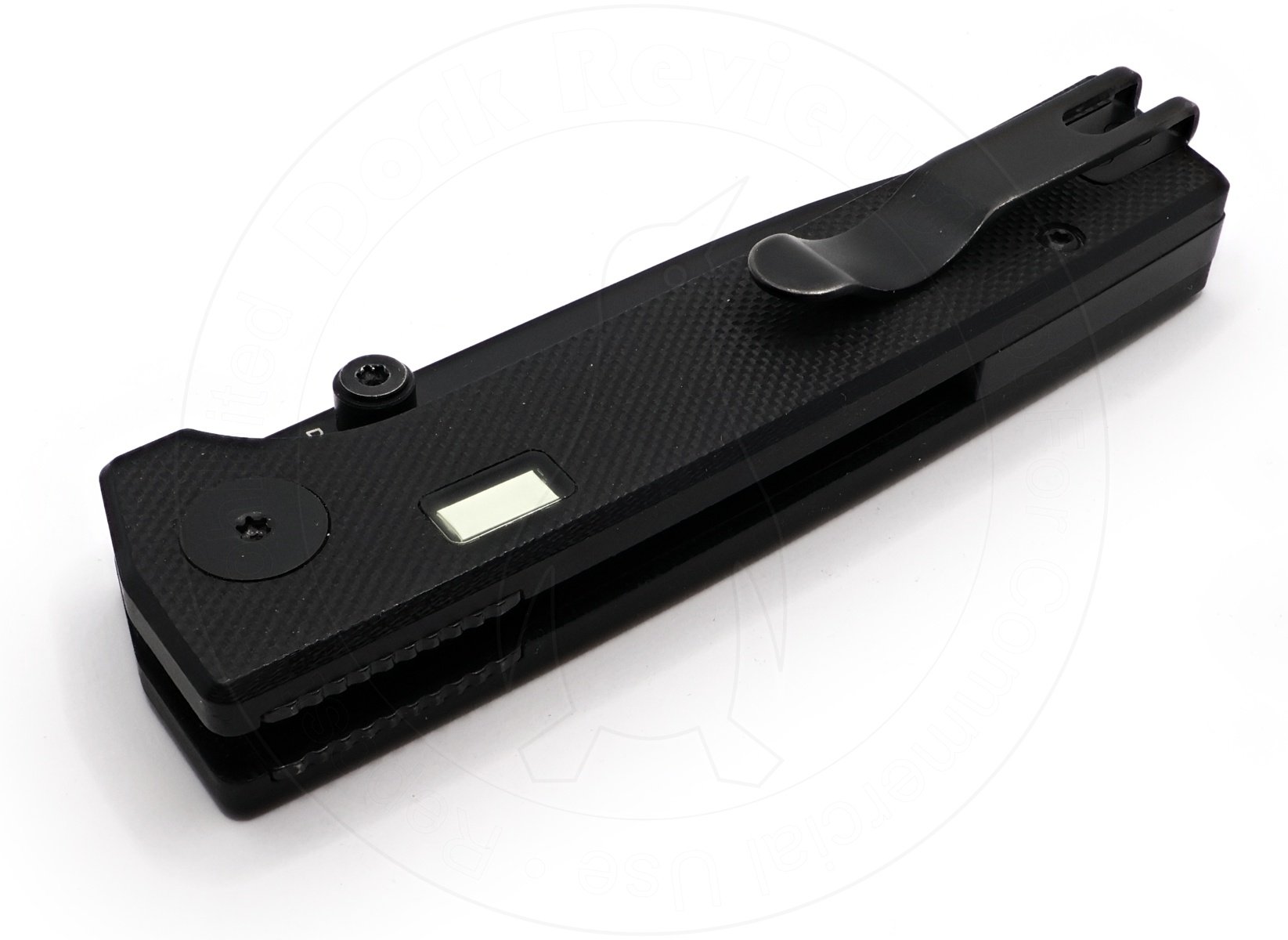
This also dovetails neatly with the inevitable comment this thing is sure to garner, vis-a-vis, "You expect us to take this radioactive motherfucker and clip it to the inside of our pants?"
Well, the energy of the beta particle emissions of tritium is slightly less than, say, the electron emissions of a garden variety cathode ray tube as found in a television. Tritium throws particles with an energy of 0.019 MeV or if you prefer 19 KeV, compared to the typical emission energy of a typical boob tube at 20 to 35 KeV. You spent your entire youth staring at one of those and while the content on it may have rotted your brain, the particle emissions certainly did not lase your lobes. (In fact, basically none of it escapes the front glass, just like how vanishingly little-to-none of what these tritium capsules emit escapes their glass, either.)
So yeah. This type of thing is really fantastically unlikely to do anyone any harm. Even if you busted one of the capsules, I think the little shards of broken glass would be a bigger risk than the tiny quantity of tritium itself. The only real exposure risk with tritium is ingestion, which I think would be quite difficult to achieve not least of which because the amount of the stuff inside is really very small, but also because at the end of the day it's fancy hydrogen, which is far lighter than air and would surely go "paff" off into the atmosphere before you got a chance to have much of a whiff.
The Glow
The light that the Fermi's inserts emit is extremely dim. This is on par with various tritium powered thingies, both those made by Glow Rhino and others. You may be familiar with these via various glowing keyfobs, gun night sights, and other gadgets. Your gizmo having a tritium glower in it is sort of the peak of EDC nerd appeal, in some circles at least, so the Fermi certainly scores there. The only way it could do better would be to have superfluous titanium components and or maybe some fidget magnets in it somewhere.

If you've never played with one of these tritium emitters in person before, note that the light is completely invisible in even moderately illuminated ambient conditions. And forget about using the glow emitted to read anything or even find something other than itself in the dark. It's just about perfect for marking its own position, and really nothing else.
It's also remarkably difficult to photograph properly. I used a two second exposure for these.
Given the green shade of light emitted by the phosphor and how similar it looks to the classic glow-in-the-dark green, I had a hunch that whatever the material is might also be fluorescent, and glow under ultraviolet light.

And I was right. Boy howdy.
But even after shining a strong UV light on it the phosphor doesn't remain glowing any brighter than it started once the light is removed. (In this case the source in question is my little 1xAAA 365nm jobbie which is, yes, the same model Big Clive was showing off.) It can't be "charged" like a traditional glow-in-the-dark material.
But while we're on the topic of traditional glow-in-the-dark stuff, why not just use that and be, like, a zillion times cheaper?
Well, for comparison -- and for Science -- I lined the Fermi up with one of my Rockhoppers made in glow PLA and as an added ringer, a random tracer glow airsoft BB.
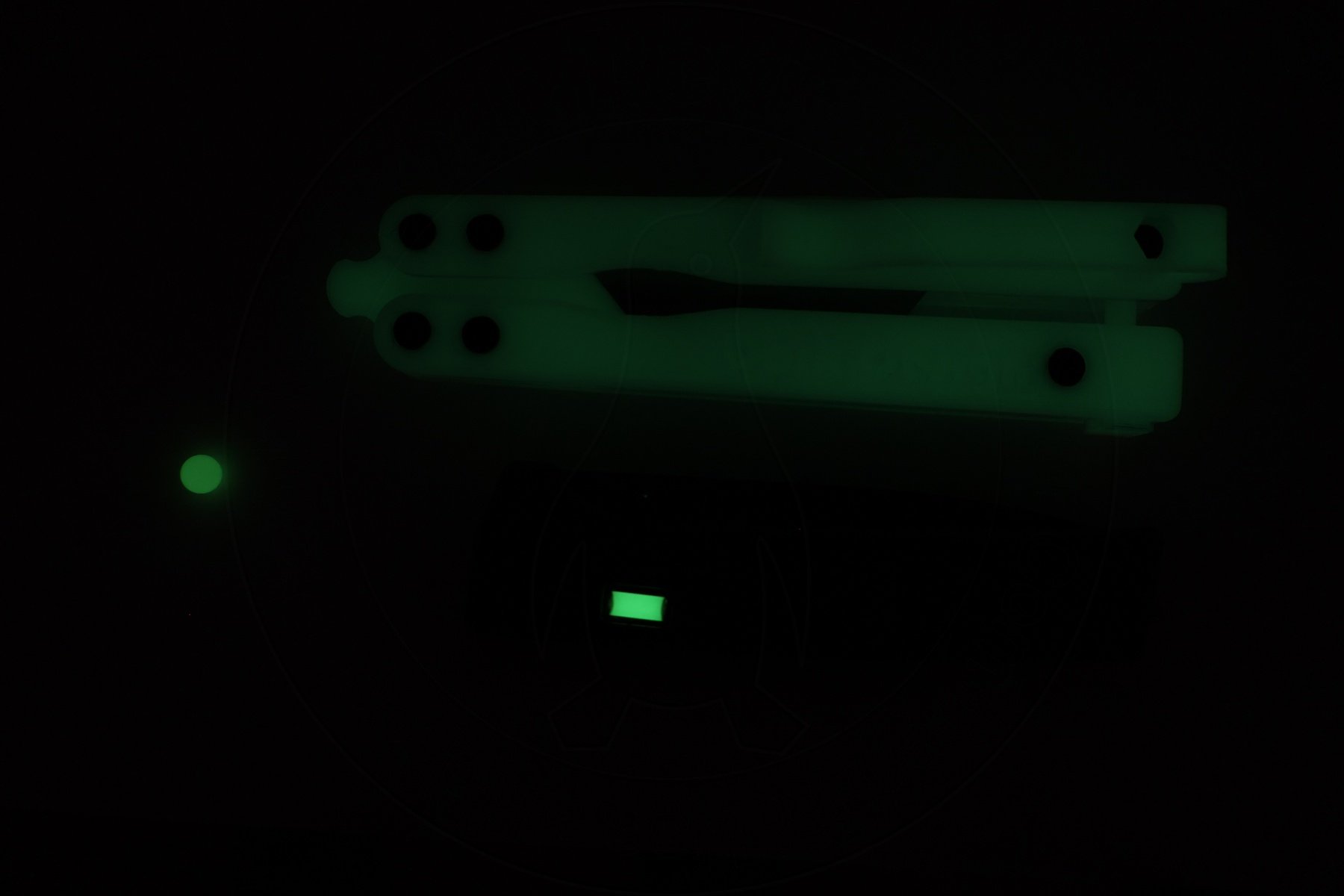
This is just after a couple of minutes of exposure to the ambient lighting in the room, nothing special, and nothing especially scientific.

This, however, is what happens if I give the entire arrangement a short cooking with my UV flashlight. When it's fully energized, traditional glow-in-the-dark material is miles brighter than the Fermi's tritium capsules. Enough that here you can actually use the raw shine coming off of the Rockhopper to see the outline of the Fermi below it.
But after ten minutes...
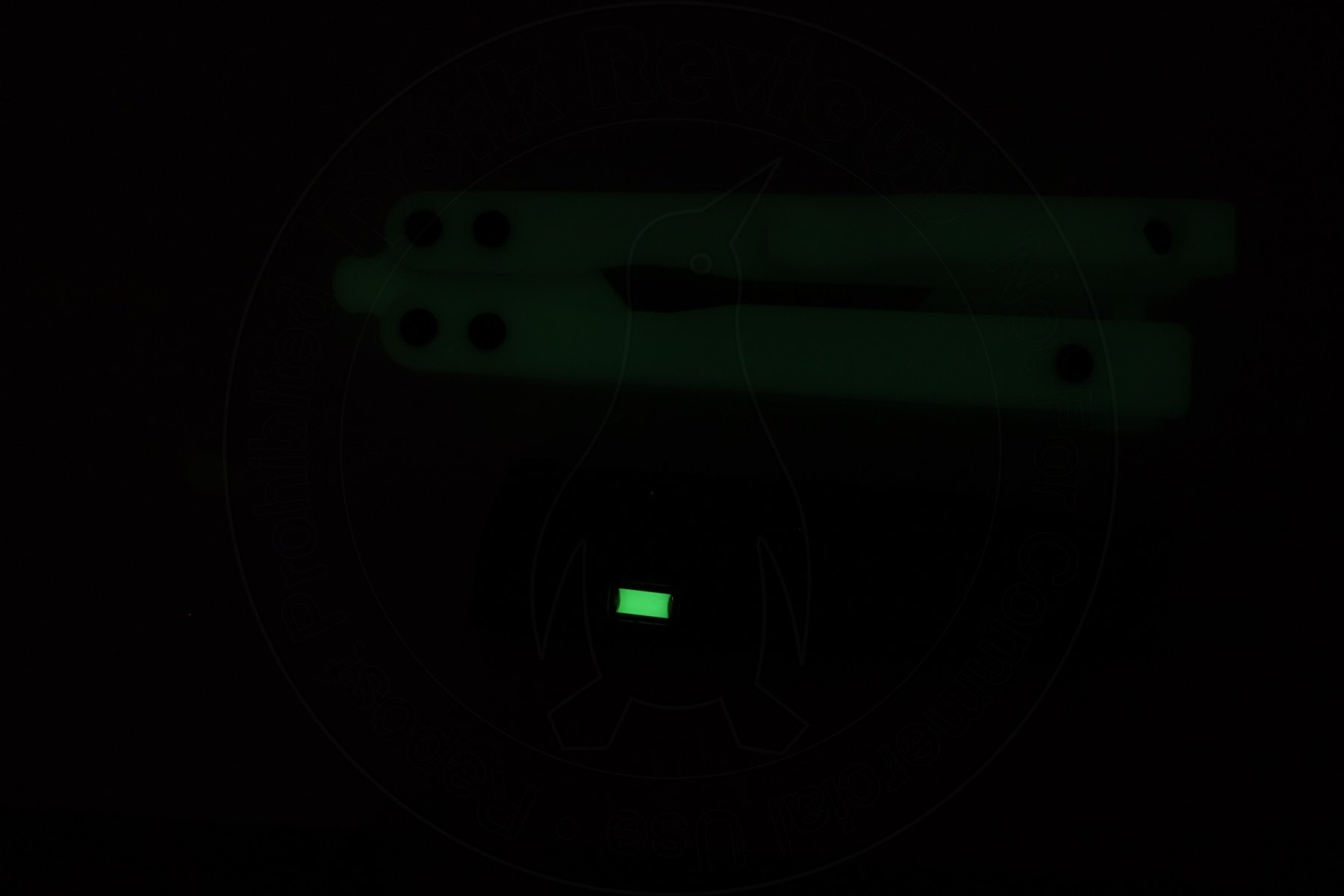
...And then an hour...
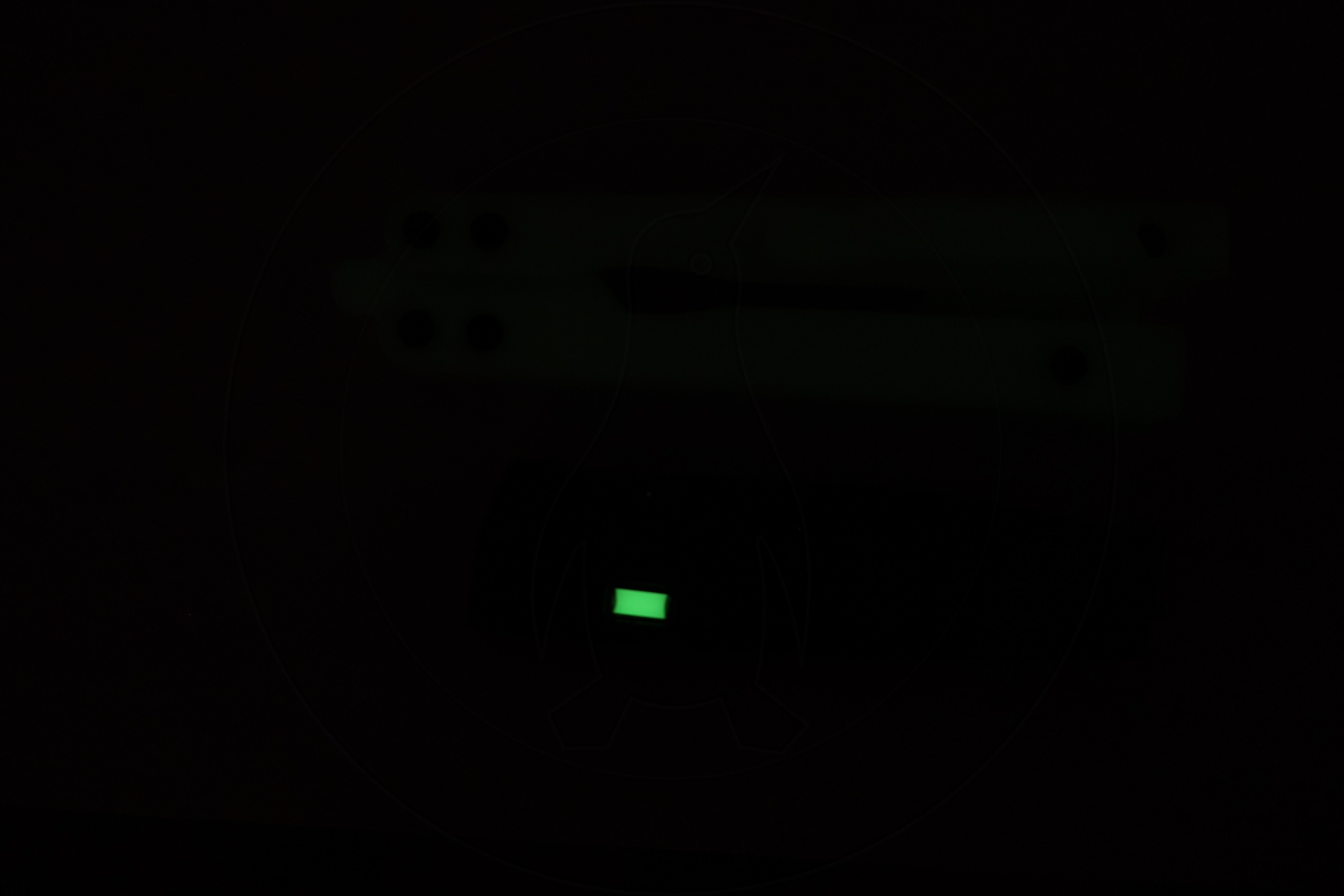
...And then three hours...

...The semipermanent glow of the tritium capsules demonstrably becomes a significant advantage.
Mind you, once your eyes are well adjusted you can still see the shape and outline of the Rockhopper for 8 or 9 hours, even if only just, which is tough to convey over the and still ought to be good enough for finding it in the dark over the course of most nights. Provided you don't live in Hammerfest or something, anyway.
The Knife Part
Other than its atomic party trick, the Fermi is otherwise a fairly unassuming liner locking ball bearing folder with modern looks, but a pretty spartan feature set.
It's fairly compact, 6-7/8" long when open and 3-7/8" closed with a 3" drop pointed blade. The usable edge length is just about 2-7/8", ending in an angular cut that's not quite technically a choil, I guess, but has the same function. So given all that maybe this isn't quite the best tool for fending off bears invading your tent, even if you can find it instantly in the dark.
There is no ricasso, nor is there a flipper heel on it. This is a pure thumb stud opener, and while the stud is ambidextrous it's only illuminated on one side. The other side is just a plain black screw head.

The blade's D2 and is flat ground, although it's not quite a full grind. There is a small flat spot near the spine for about half of its length. It's finished with a nice even PVD coating. Not a single part of this knife is shiny other than, you know, the parts that shine in the dark. This should make any tactical ninja operator happy.
The Fermi has flat G10 scales with full length steel inserts that have lightening holes in them. You'll have to take my word for that last part, though, for reasons we'll soon discuss. The blade's spine is plain and square, with no rounding and no jimping on it, either. Overall the whole thing is very plain-Jane.
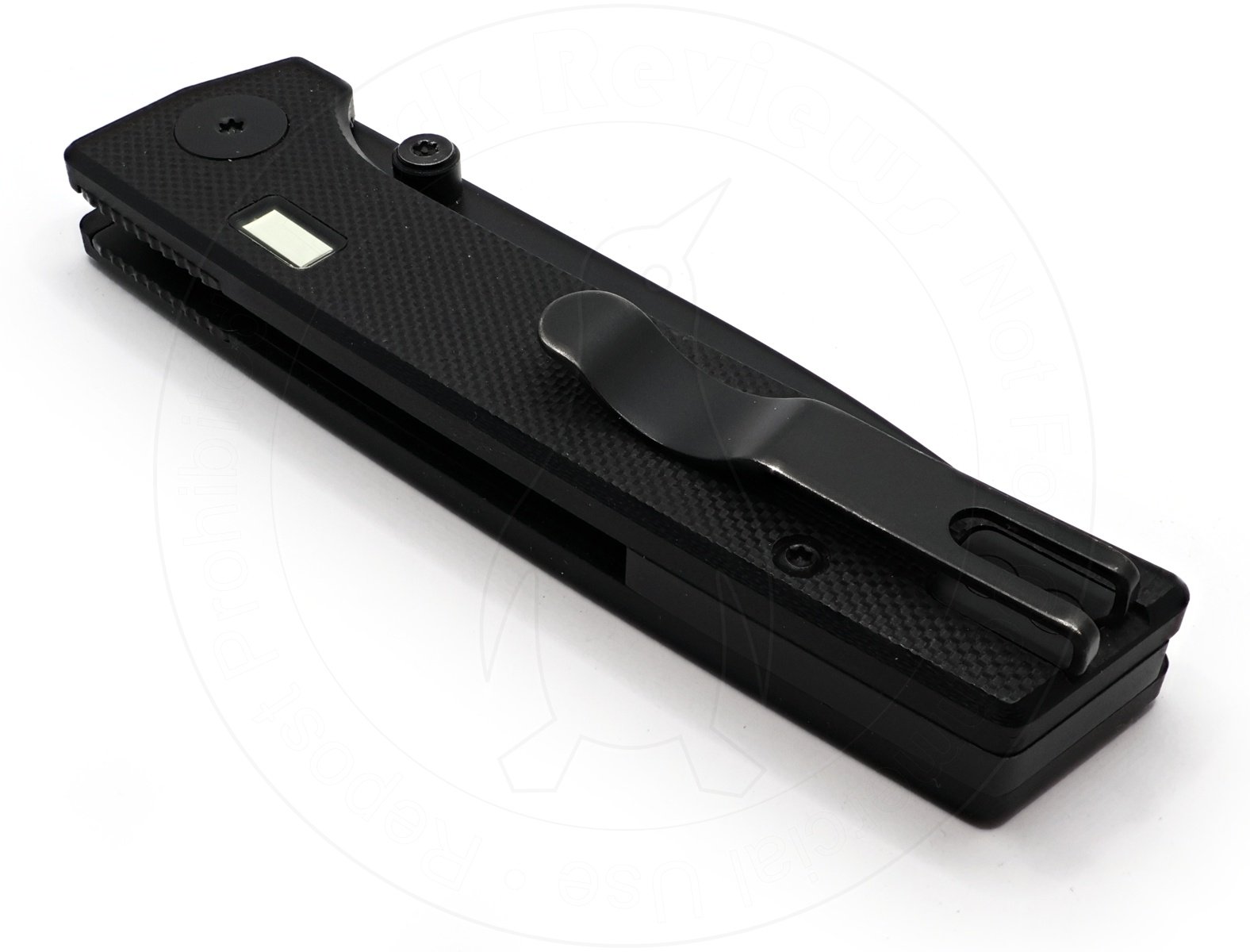
It has a deep carry pocket clip with nice flush fitting screws in it, but this is not reversible for no particular reason I can fathom, nor is any option except tip-up carry provided. Beats me as to why because the scales and overall construction are completely symmetrical. I don't see any technical reason why the clip couldn't have been made reversible. They just... didn't.
Likewise, there is no lanyard hole. Nor any assisted opening or any other spring action.

One thing the Fermi does have is this groovy totally flat pivot screw on what's presumably the female side of the pivot. This gives the back side a very attractive minimalist look.

Here's a lineup of this plus a couple of likely EDC contenders.

It's smaller than not only the usual Kershaw CQC-6K, which isn't much of a stretch, but also a Benchmade Bugout -- but versus the latter, only in terms of footprint and not thickness and definitely not weight. That's because it tips the scale at 86.4 grams or 3.05 ounces, nearly triple that of a Bugout.

But on the bright side, the Fermi's G10 scales plus full length liners made it perfectly rigid, and the thicker construction -- 0.499" or nearly precisely half an inch not including the clip -- I think made it feel a lot nicer in your hand.
It may look like it only has partial liners, but that's because they're rebated into the scales with only the jimping sections sticking out.
The Fermi is indeed a ball bearing pivot knife, although you wouldn't know it by reading Glow Rhino's own writeup on it. One upshot of that is the near perfect blade centering, which is unusual for a liner locking knife.

The bearings don't make it any easier to open, though. That's because the Fermi has quite possibly the most ridiculously overdone ball detent in it that I've ever experienced.
Opening it is deceptively tricky. Overcoming the detent takes a lot more force than you'd expect. The studs don't stick out past the scales in the slightest and there's not much gap between them and the scales, either. Nor is there a scallop in them in right spot for access. So there isn't much of a space to work your thumb into, and if that sort of thing matters to you I think that'd make this near impossible to use while wearing gloves.
"Positive" is certainly one word you could use for the closed lockup. If you get the blade even vaguely near home the detent grabs it and snaps it shut for you.
On the bright side, the open lockup is extremely solid as well. As usual with a bearing knife there's no perceptible lash, wiggle, or rattle in the blade when the thing's open.
On Failure
I did ask its owner for permission to disassemble this knife. You won't see that, though, because it's with no small amount of shame I admit to you that I couldn't get it apart.
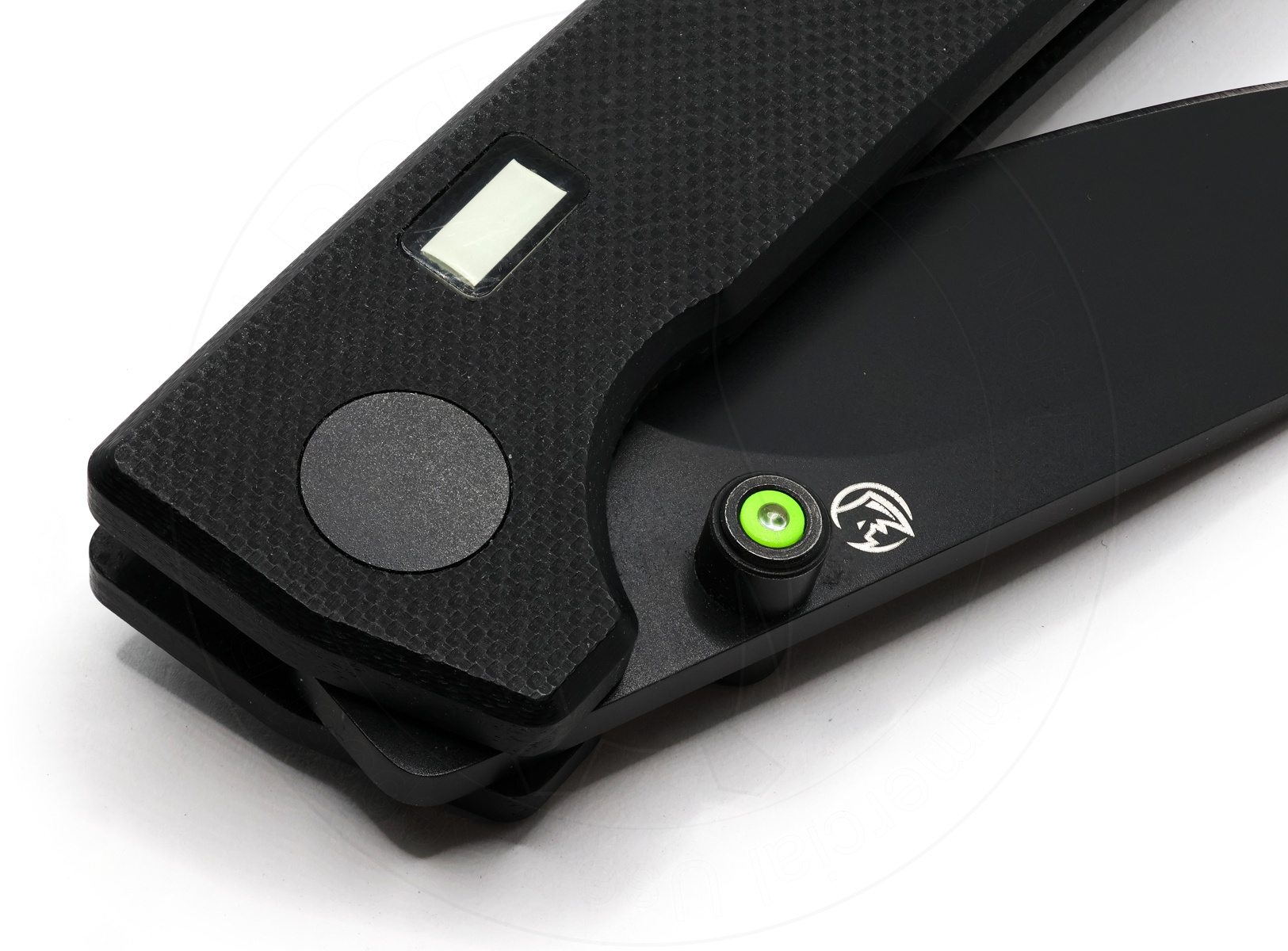
Not without resorting to barbaric methods and levels of force, anyway, which I wasn't comfortable with.
The main pivot screw has a T8 Torx head on one side, but as we observed earlier it's got nothing on the other side. It sure feels like it has an anti-rotation flat in it, but it's still not enough to do you a fat lot of good. The screw is glued into place with permanent threadlocker and anti-rotation flat or no, the whole thing just spins in its hole without coming undone no matter how you crank on it. You can feel it grab, and there's a distinct lobe where the flats should engage and keep the shank from spinning around in its hole. But it doesn't quite work, and the whole assembly eventually rotates past the hump before the screw will actually let go.
I have various tricks I could employ to circumvent this, and if this were my knife that would start with cooking it with a soldering iron or possibly just grinding a slot into the female side of the screw.
But at the end of the day it ain't mine, and I did pinky swear not to break it. So I won't.
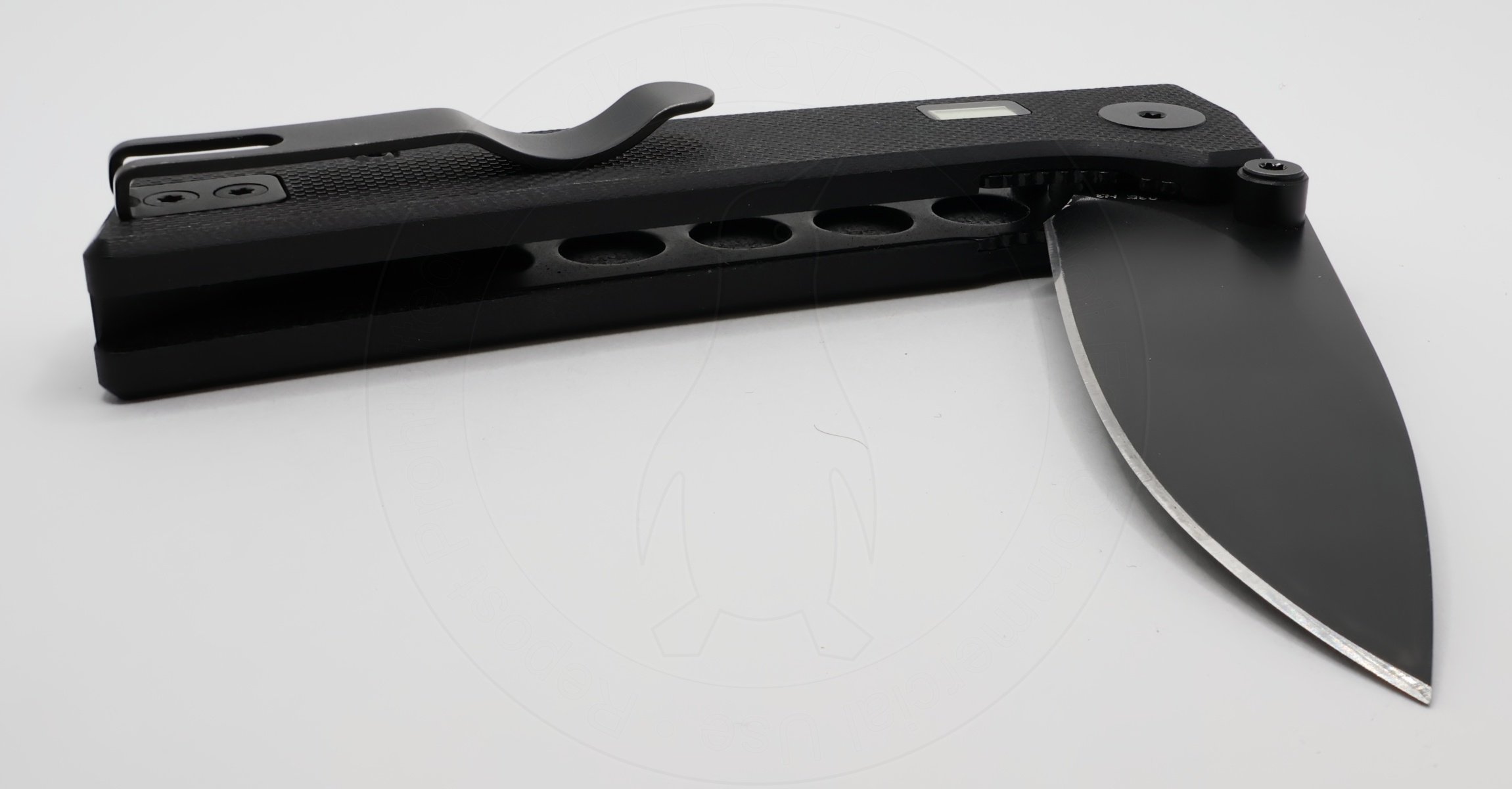
We can see what we can see from the outside. For instance, here is my level best at capturing the speed holes in the Fermi's steel liners.
The handle halves are separated by an aluminum backspacer into which the clip screws and scale screws on both sides sink into. I think this also has threaded inserts in it, because some of the other screws spin forever without coming undone also.

To get that apart, getting in there and grabbing the inserts with pliers would probably be necessary. But that would require getting the blade and pivot screw out as well, and there's a darn hole in my bucket there; see above.
So the hell with it.
Cutting Observations
D2 steel ought to be a known performer provided the manufacturer didn't fuck it up.
Glow Rhino is not a known quantity to me; their specialty seems to be tritium-laced geegaws, and while they do offer several knives I can't quite be sure if these are made in house or outsourced, or if they're just a side hustle for these guys or what.
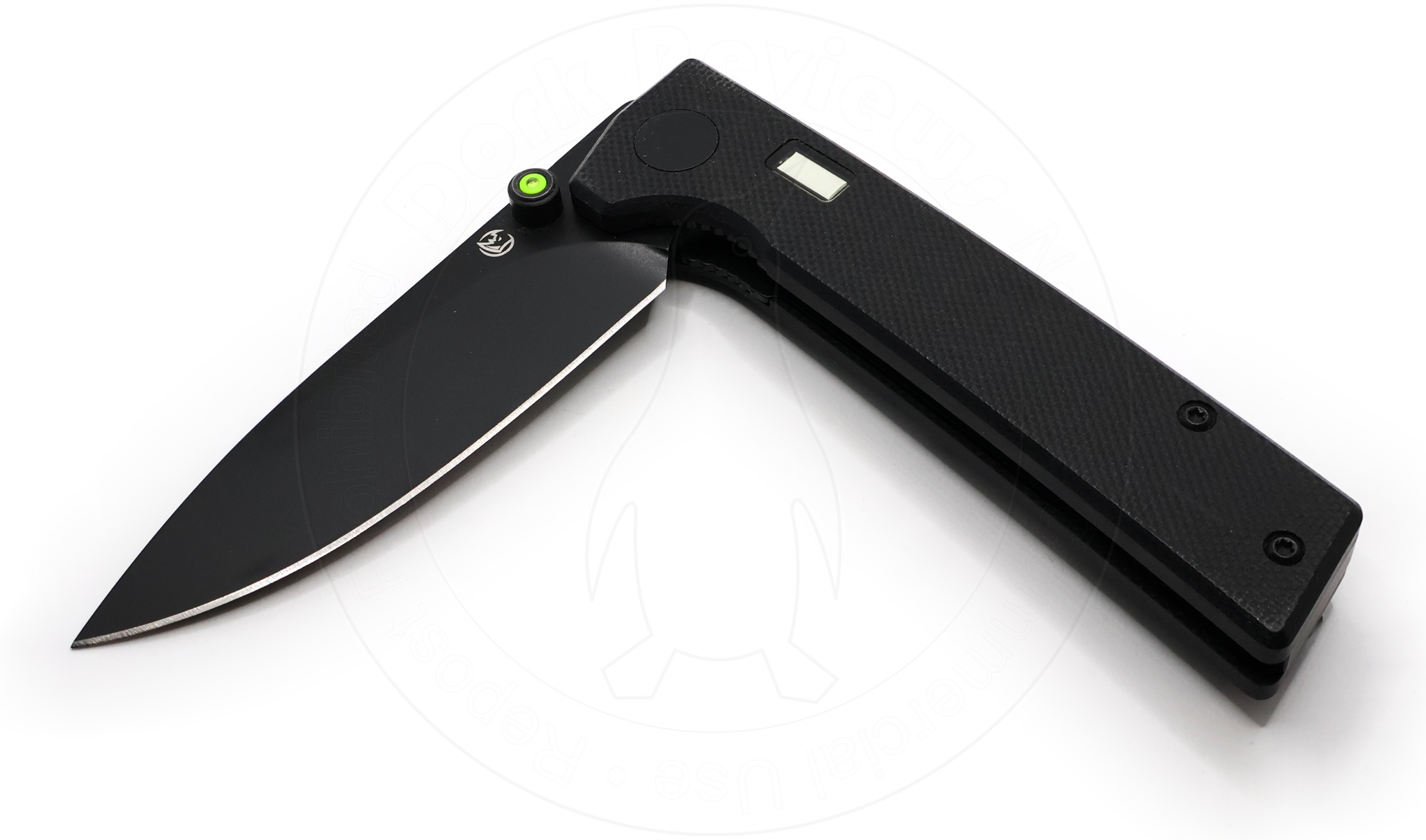
What I can tell you is that Glow Rhino's website is one of those damnedable cesspits that's constantly popping up (assuredly fake) "So and so in [city, state] added this item to their cart!" messages in the corner of the screen all the time in a limp-wristed gambit to either imply legitimacy or insinuate that these are flying off the shelves in a manner that would require them to be more popular than they probably actually are. Anybody who resorts to that sort of thing automatically gets a bit of side-eye from me.
But what their website doesn't do is specify the Fermi's country of origin, and nor is it marked on the knife anywhere. Maybe it says on the box, but I don't have that.
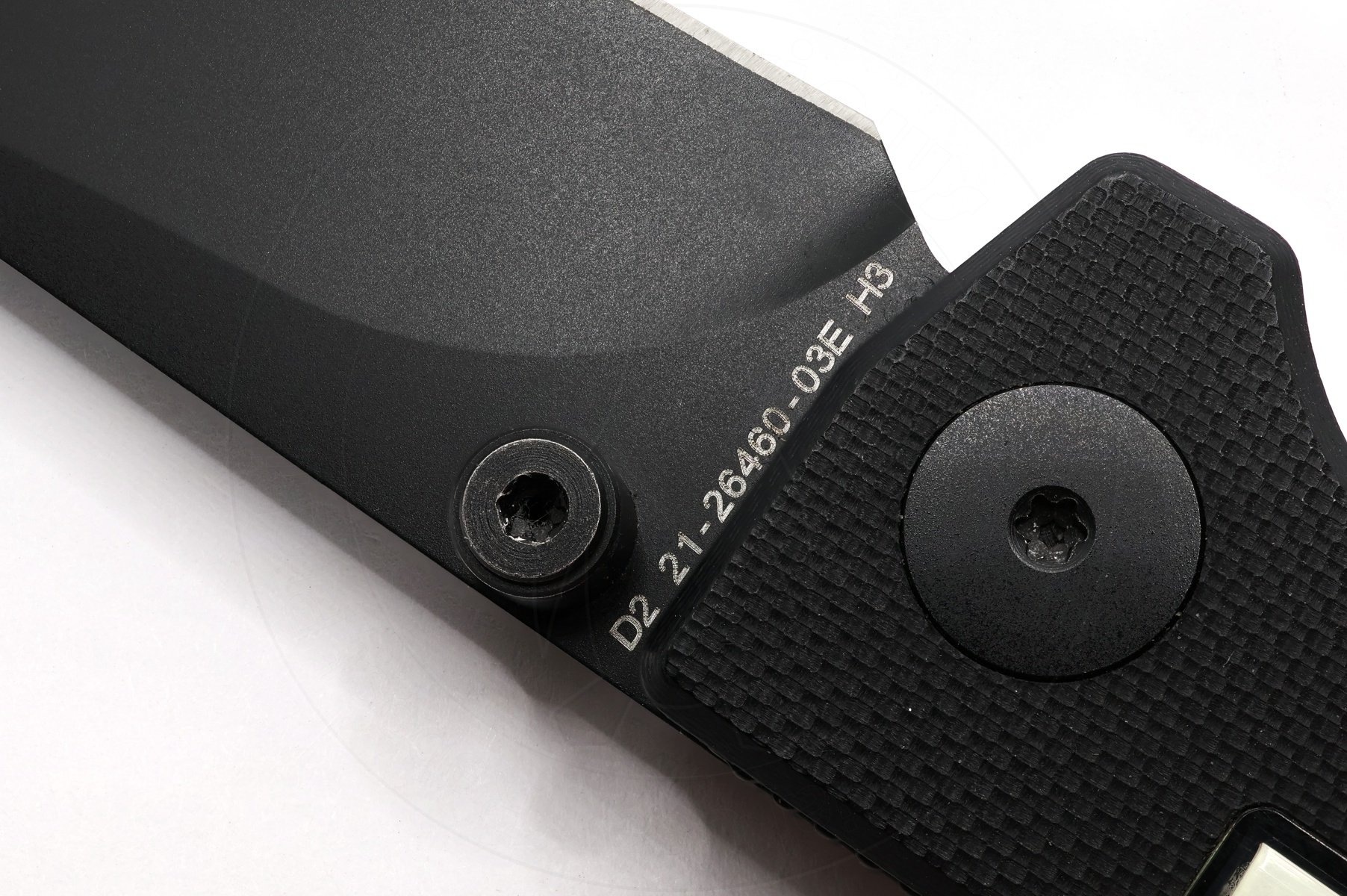
The marking here appears to be a model descriptor and not a serial number, since from what I can see of about a third of it on the pictures on Glow Rhino's site, the numbers appear to be the same on this example as what they're showing. That, or we got phenomenally lucky in getting the same unit that they used for their product shots. Do you know, somehow I'd doubt that.
And I know they specified both materials in the engraving just to be cheeky. D2 is the steel, obviously, but the H3 is tritium.

Anyway, the Glow Rhino logo is on the reverse and these are the only two markings on the knife.

As it was delivered to me I found the cutting performance of the Fermi to be pretty dire. It was not capable of cleanly cornering a Post-It note.

This example appears to still have its factory edge but I don't know how much its owner has used it.
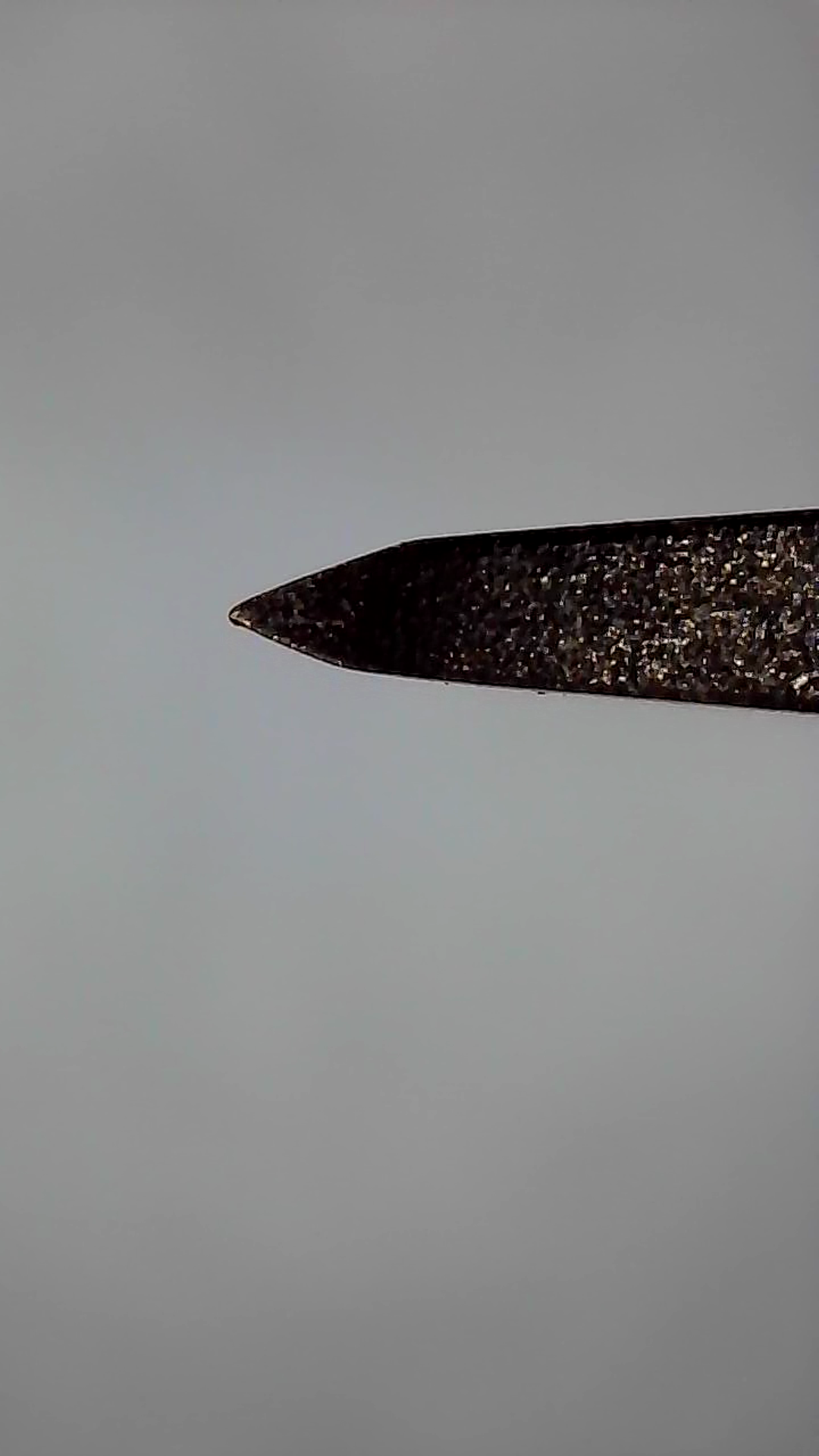
The edge is also slightly out of true. One side is about 20 degrees and the other side is closer to 25.

I further don't know if this nibble taken off of the tip is how it was manufactured or if it was busted off at some point during use.
However, I did have explicit permission from this knife's owner to treat it as I saw fit.
So I dropped on my Ruxin Pro to reprofile, and sharpened it up real good. Nothing crazy, mind you; I maintained the factory edge geometry although I did reprofile the off edge so that now both sides are the same angle.

Here's what it looks like now.

I'll also mention that this is one of those darn silly arrangements that requires you to remove the thumb stud for a proper sharpening, otherwise it's in the way. At least this unscrews easily.
And lo, its cutting performance is drastically improved. I did not notice any diminishing of cutting ability after using it to eviscerate my last two Post-It notes, and there is no visible sign of burnishing in the coating around the edge so we can probably assume that there were no catastrophic fuckups with the Fermi's heat treatment.
This shouldn't be a praiseworthy attribute in this day and age, but somehow it still is.
The Inevitable Conclusion
I have the same opinion of this as I do of other people's dogs, and for that matter their children.
I'm glad to have had the opportunity to play with this, and it was a fun time. But at the end of the day, I'll be glad to give it back.
For $99 the Fermi's build quality seems a bit hokey to me. Sure, I know that the lion's share of its price tag is down to its included tritium thingamabobs and not the knife itself, especially given that Glow Rhino charge $40 just for a simple glowing keyfob.
There's also the point that the Fermi's main selling feature, just like a Nexus 6 replicant, has a built in lifespan. 12.3 years, if you care to think of it that way, or maybe just a little longer before it reverts back to being a normal knife.

I don't have much room in my collection for a working knife that can't feasibly be disassembled, and for that kind of money you could buy two CQC-6K's. Or a CRKT Cottidae and a glow-in-the-dark paint pen, with change left over.
But then, you wouldn't be able to tell all the ladies that you have a nuclear fuel rod in your pants.




